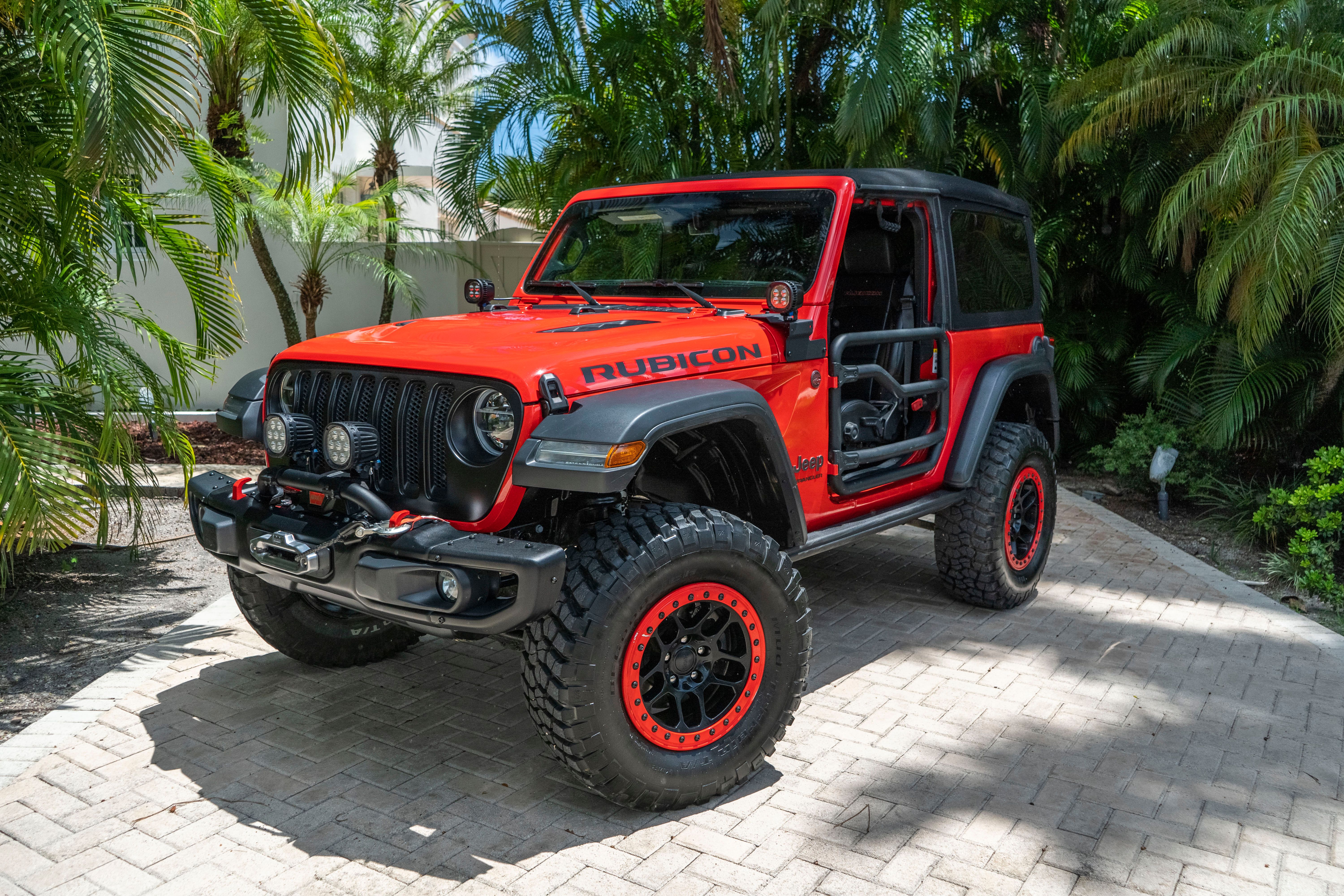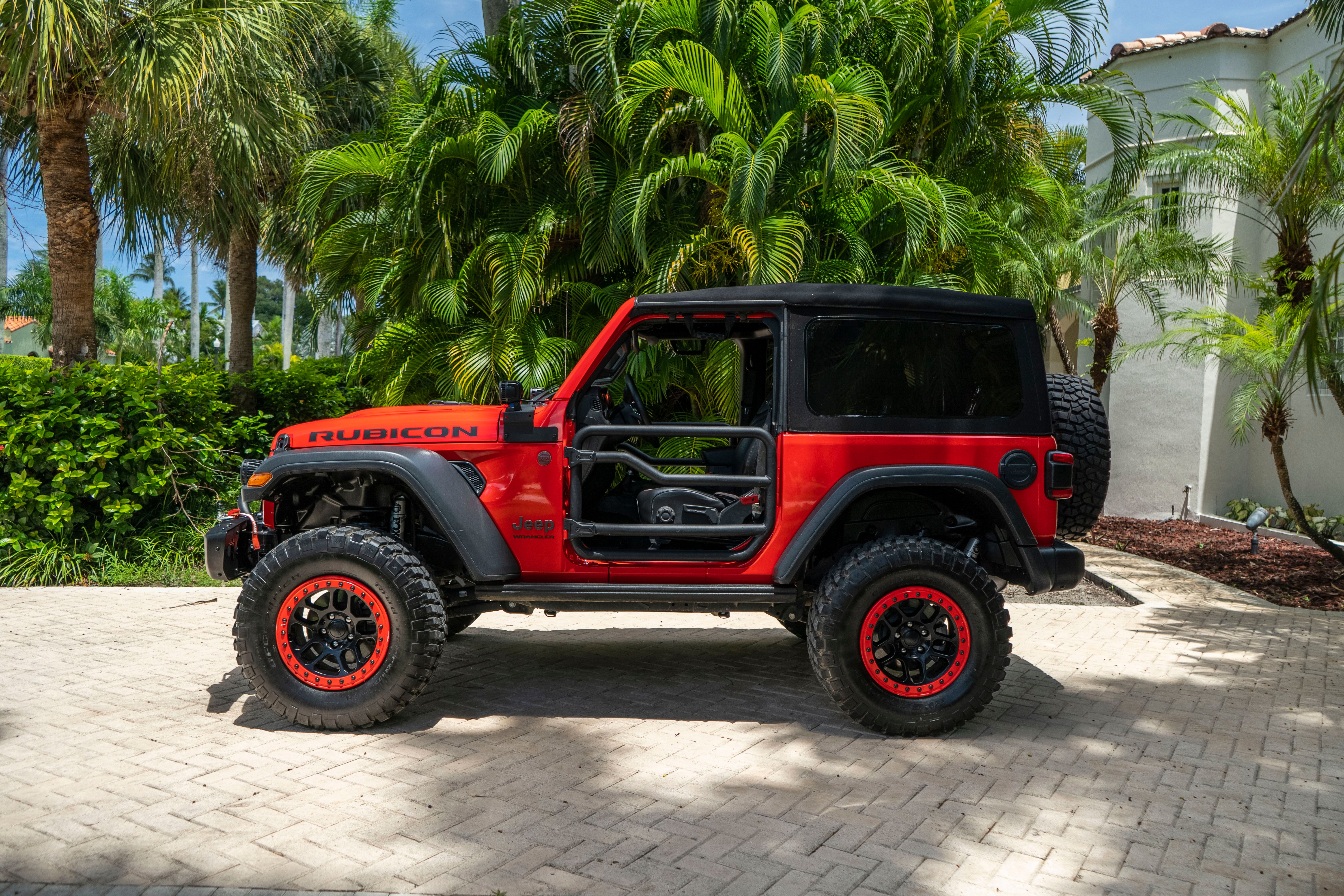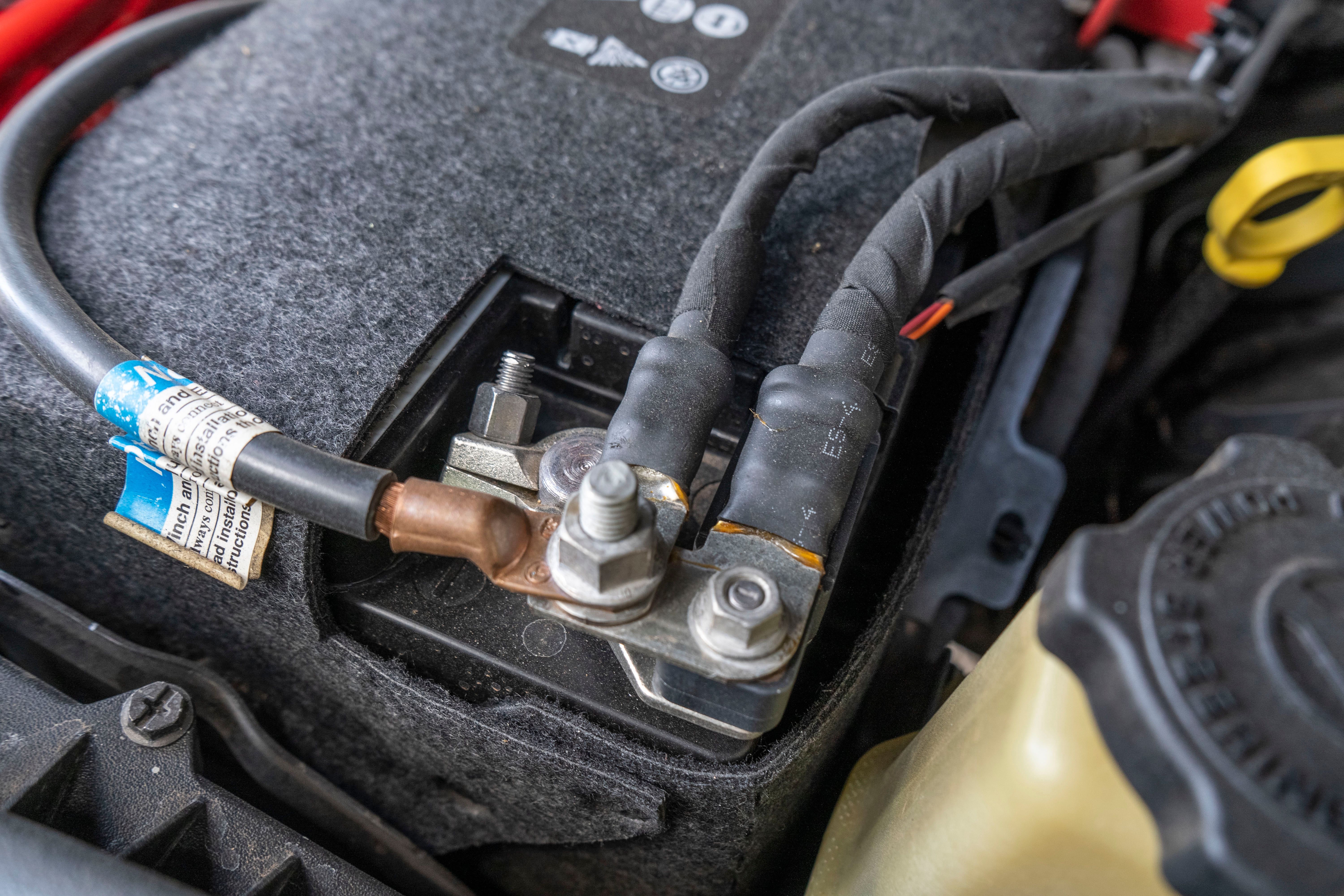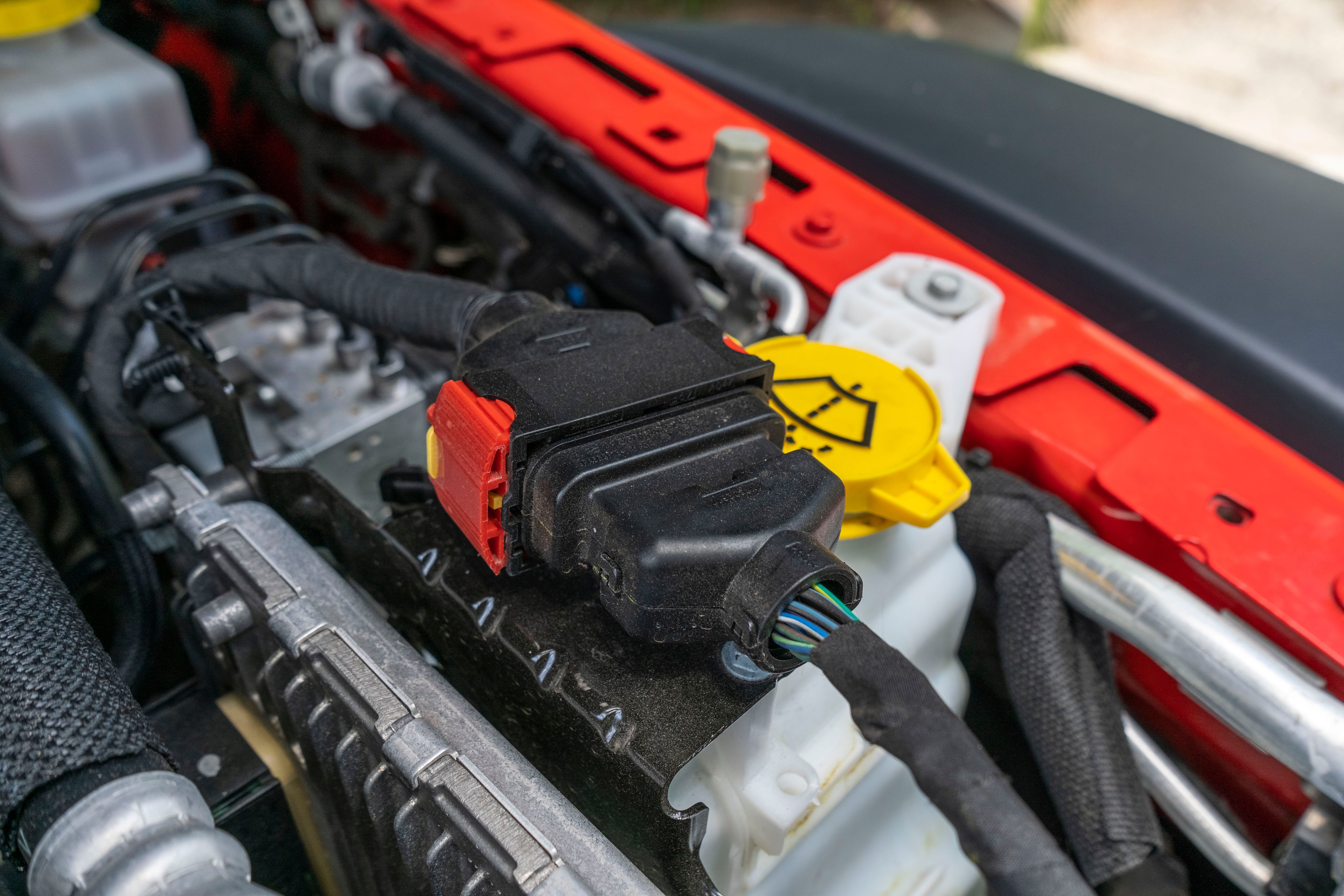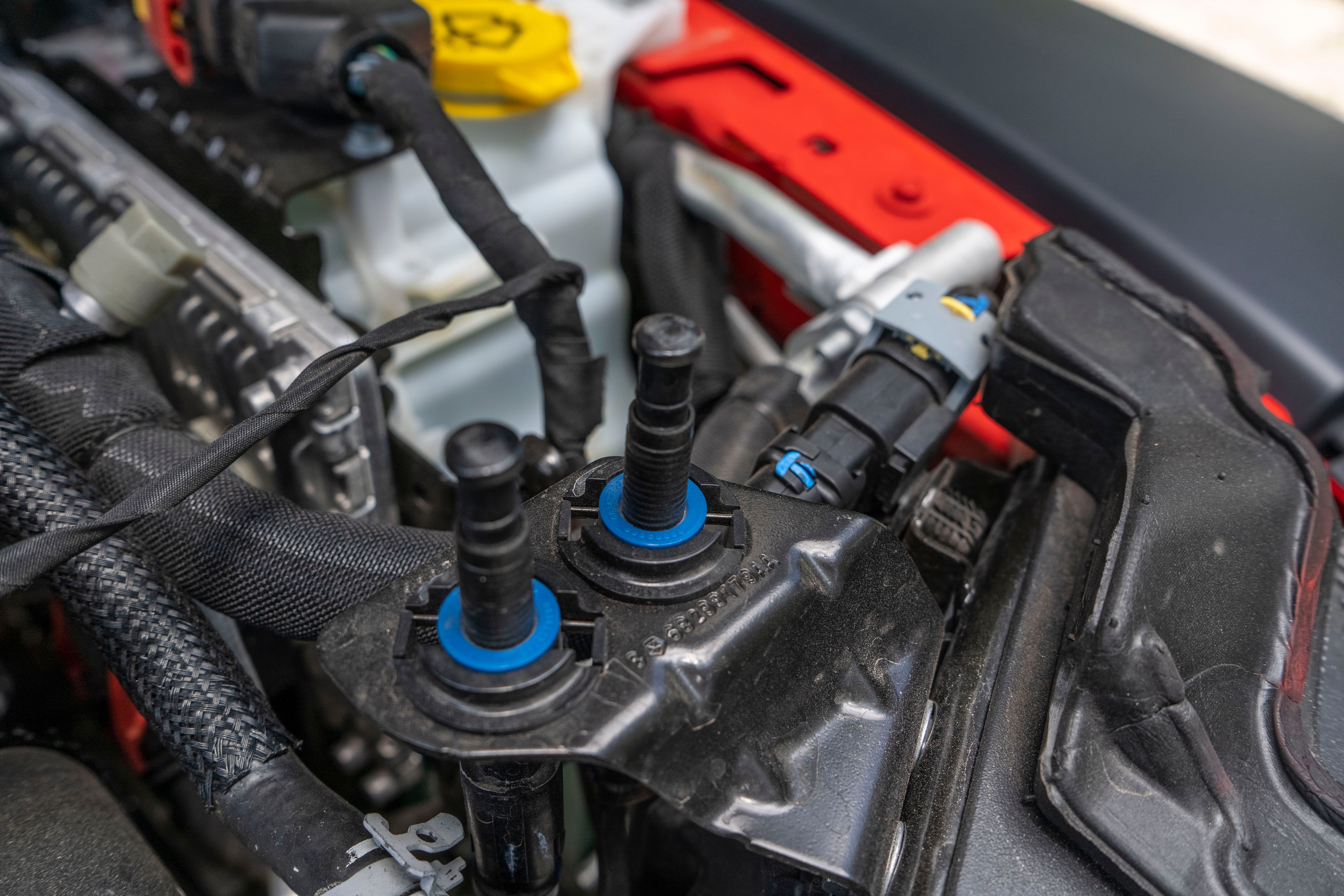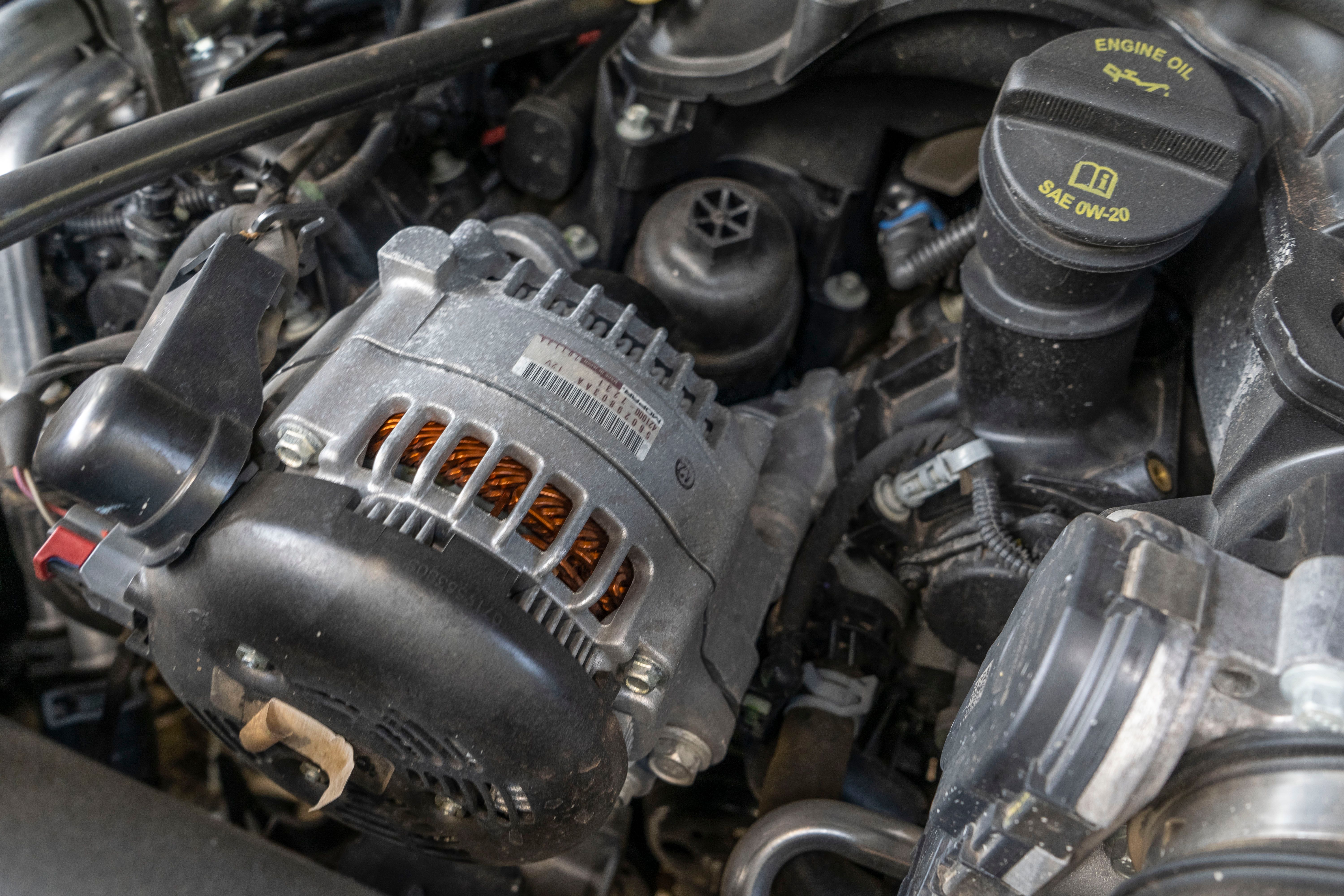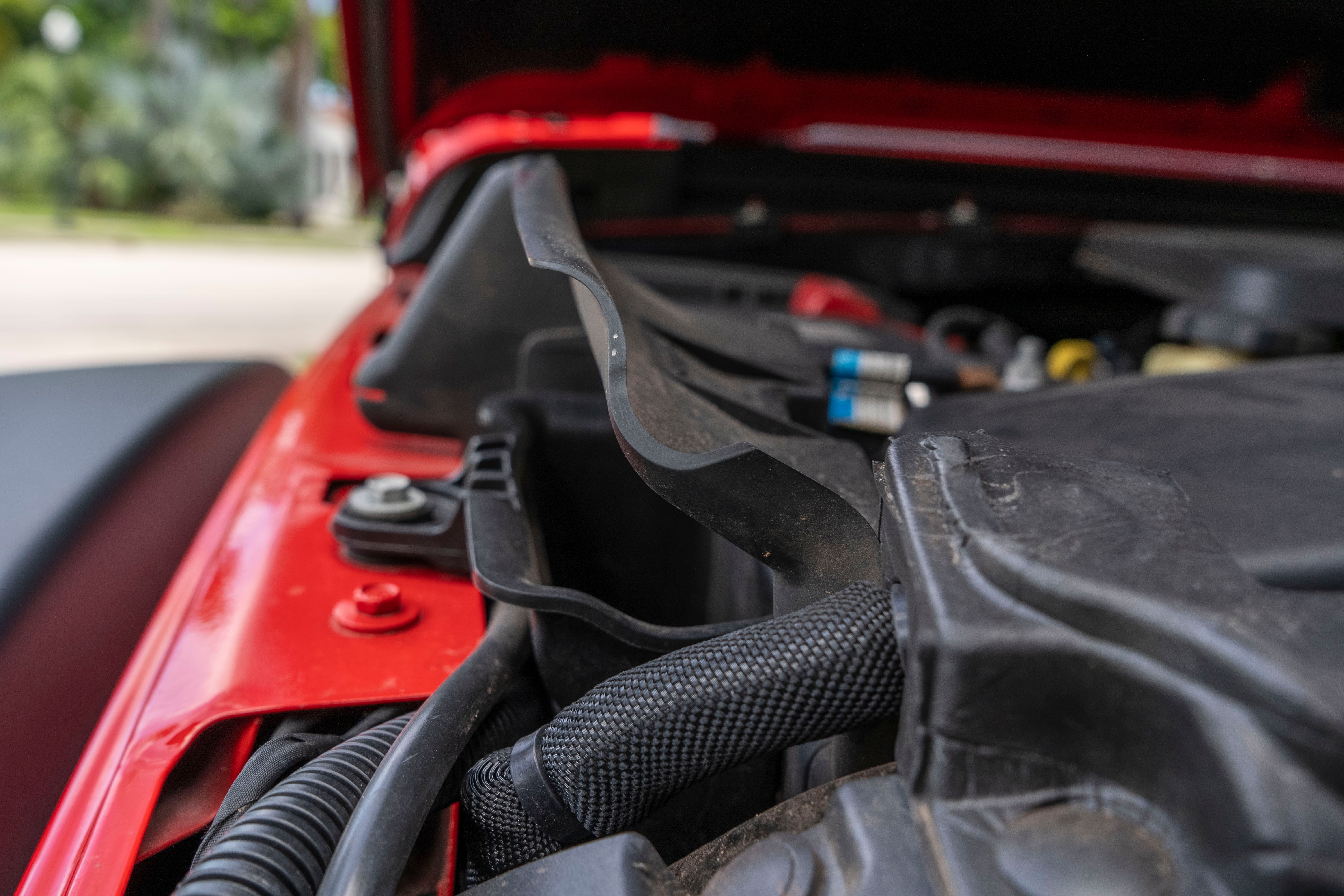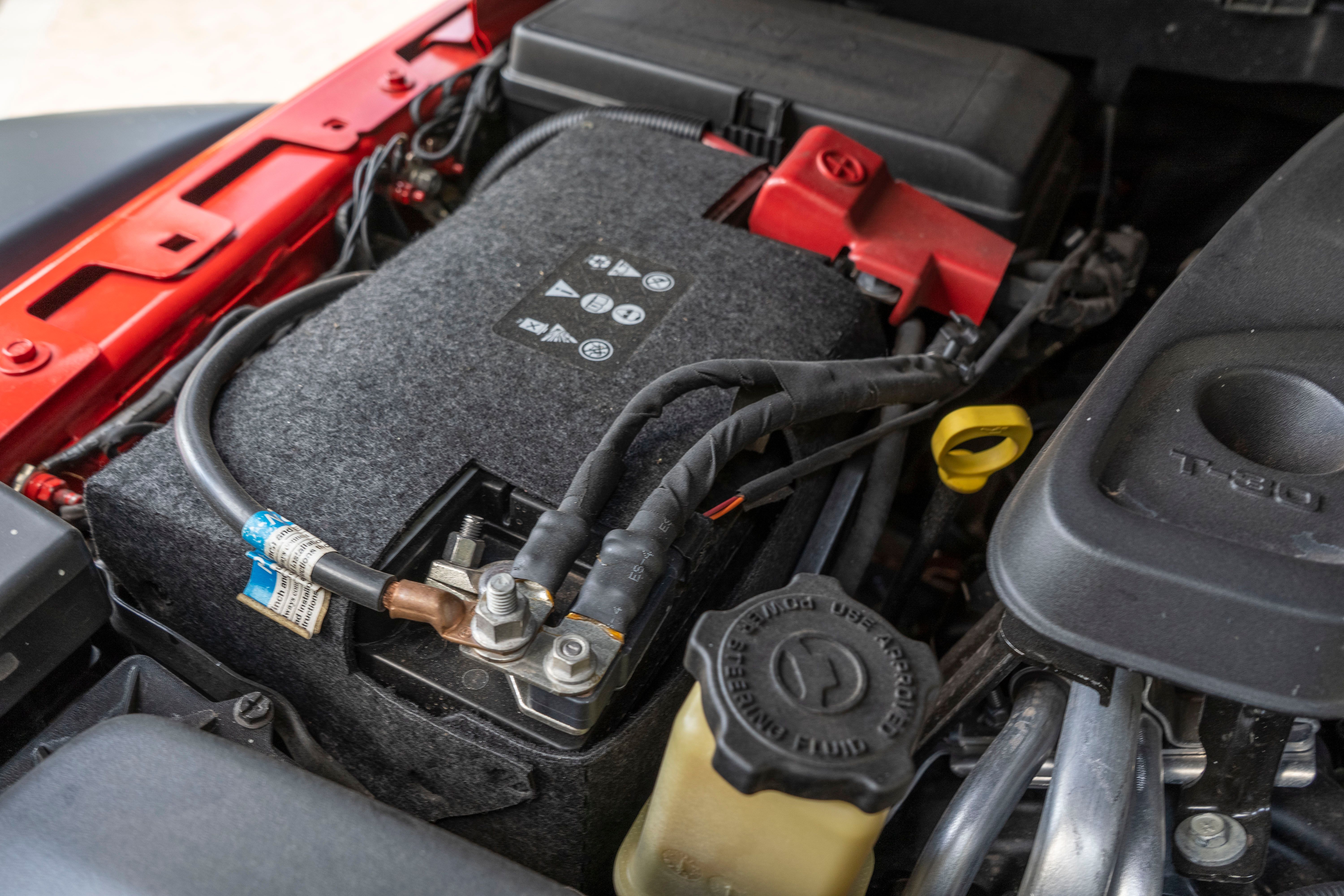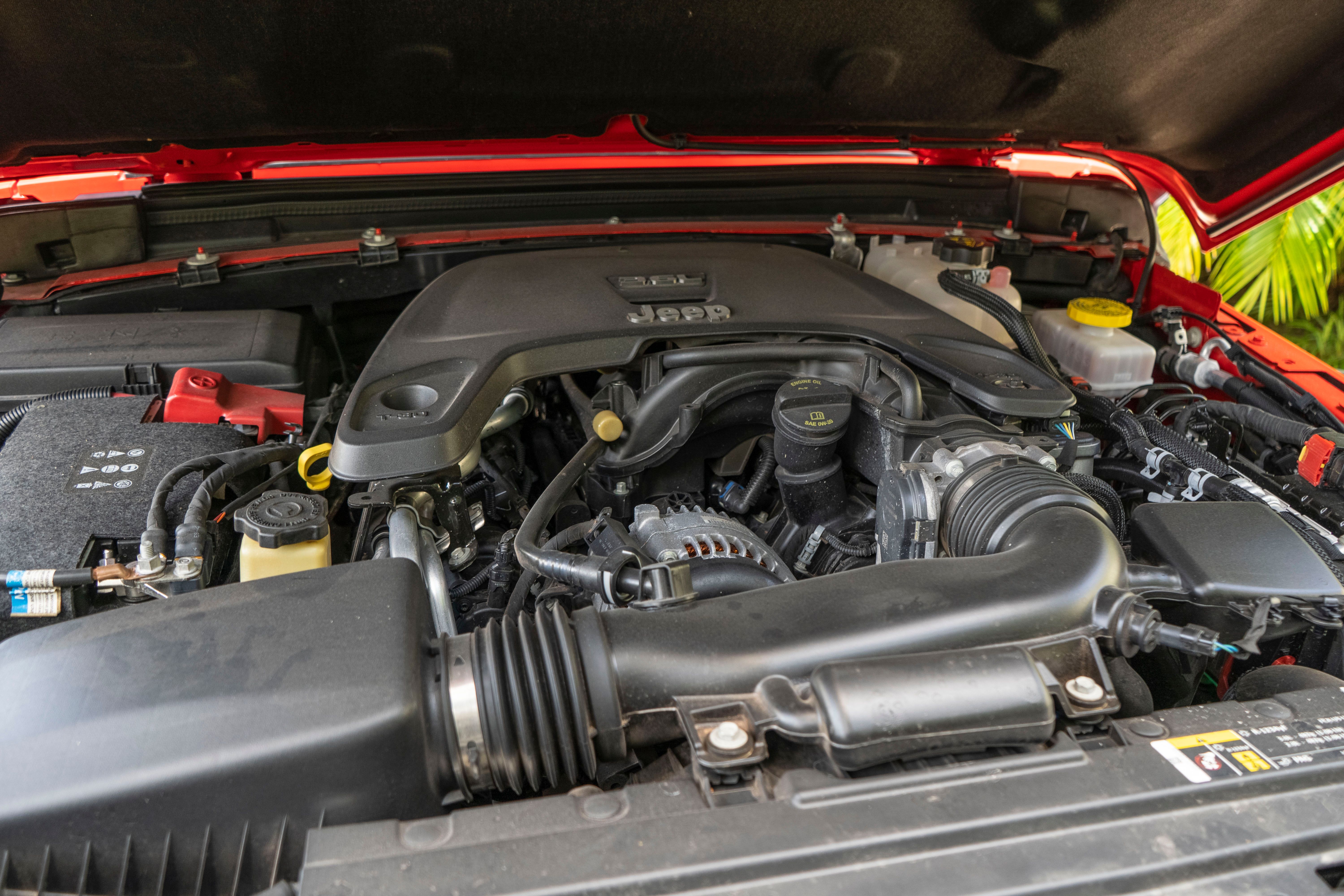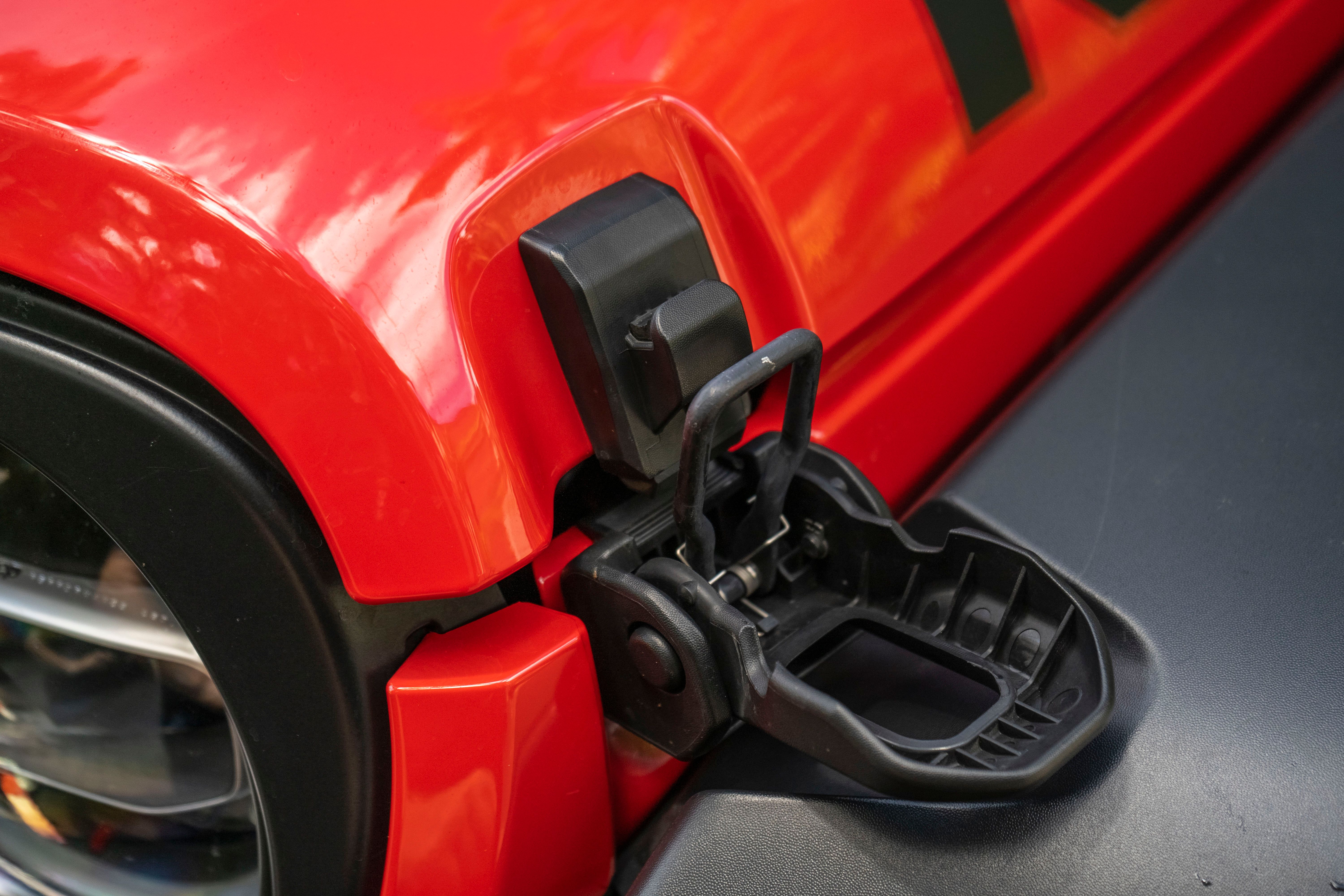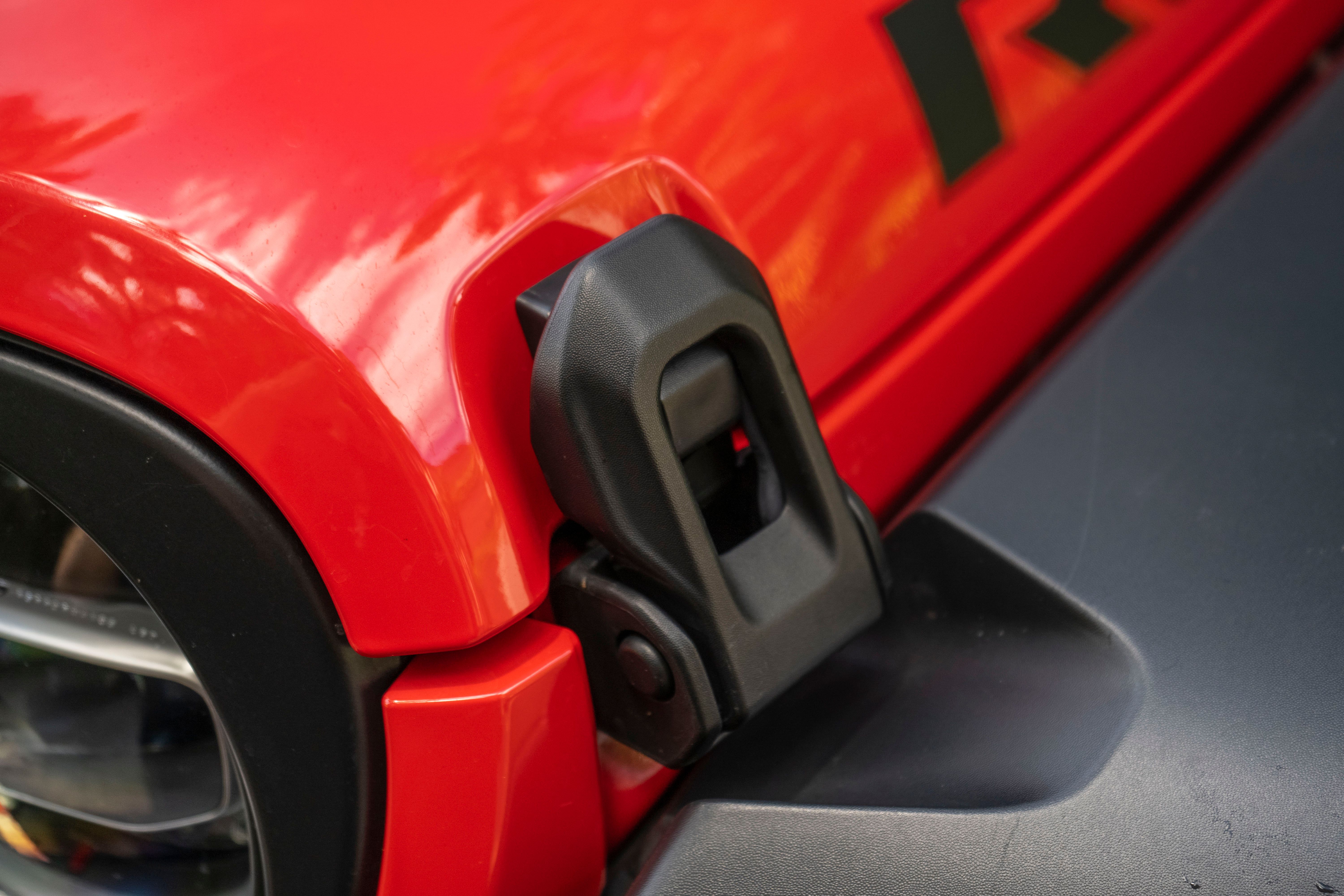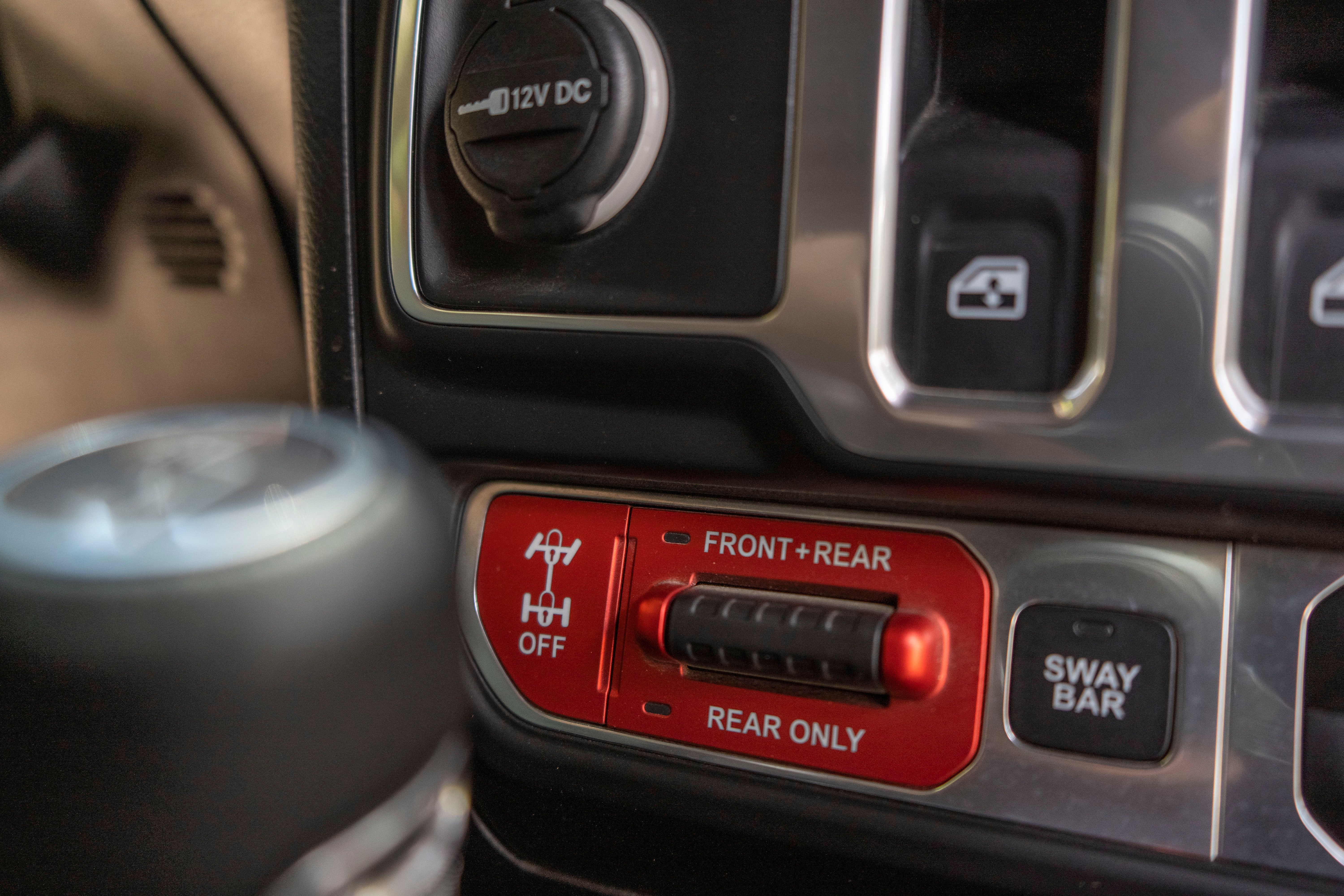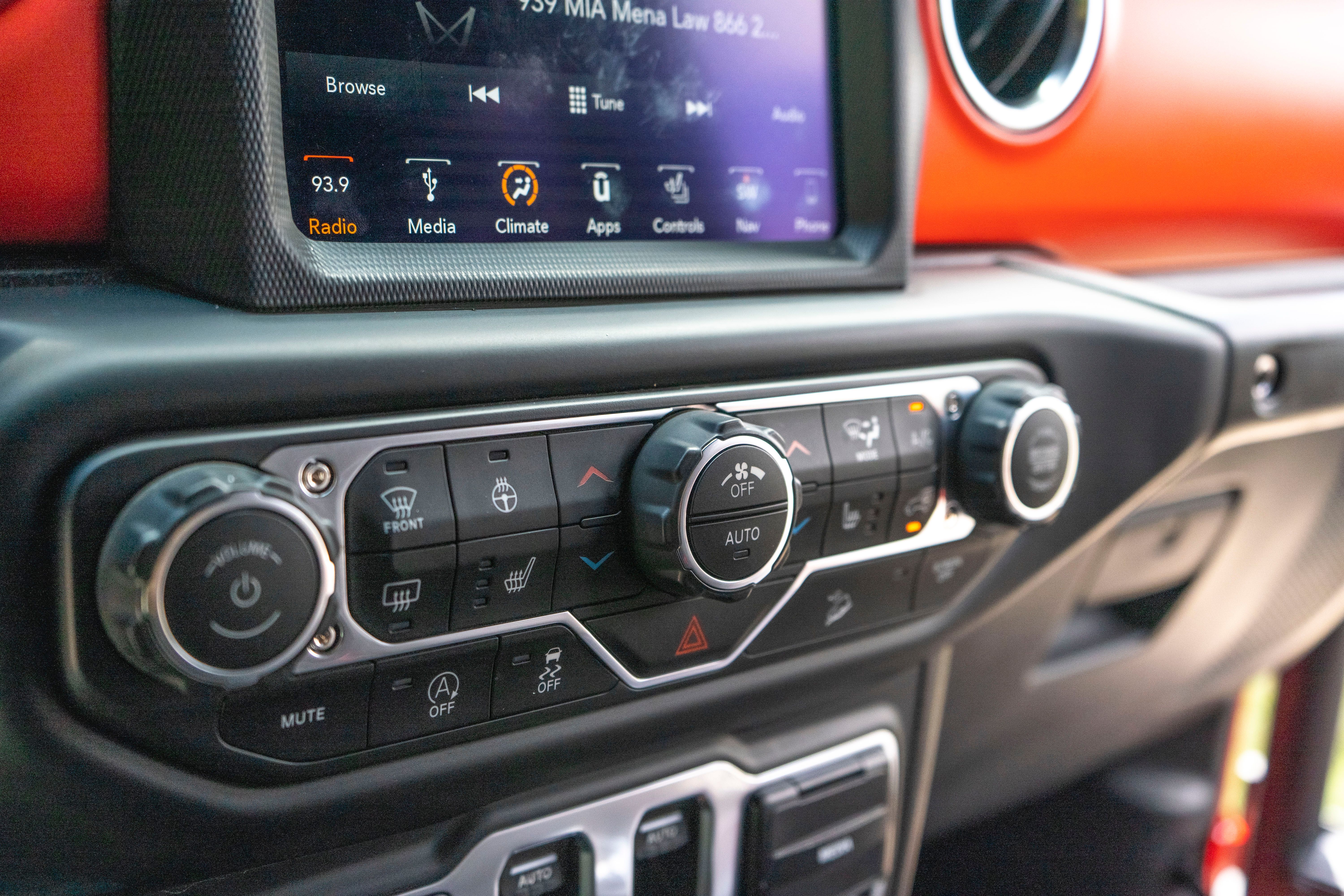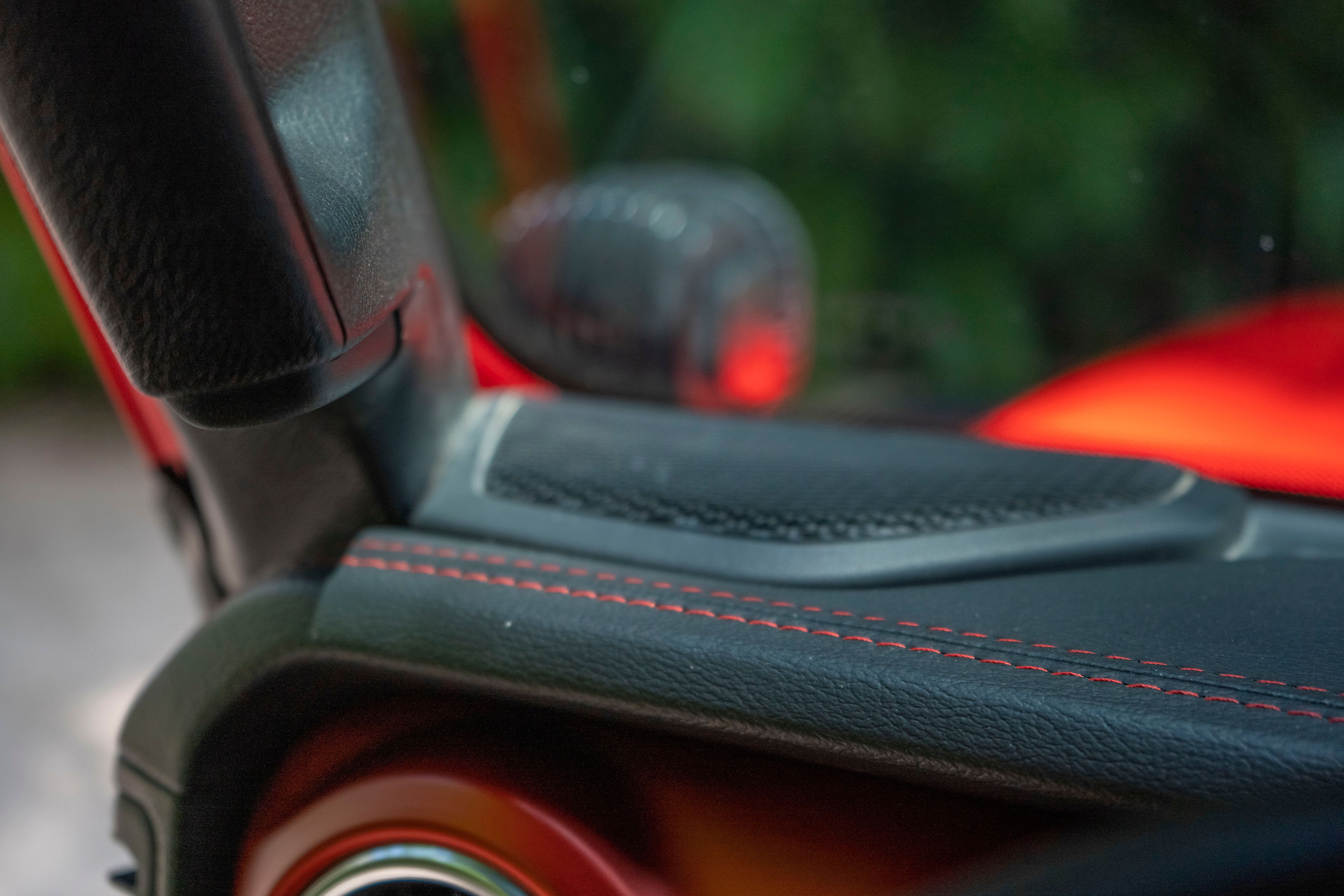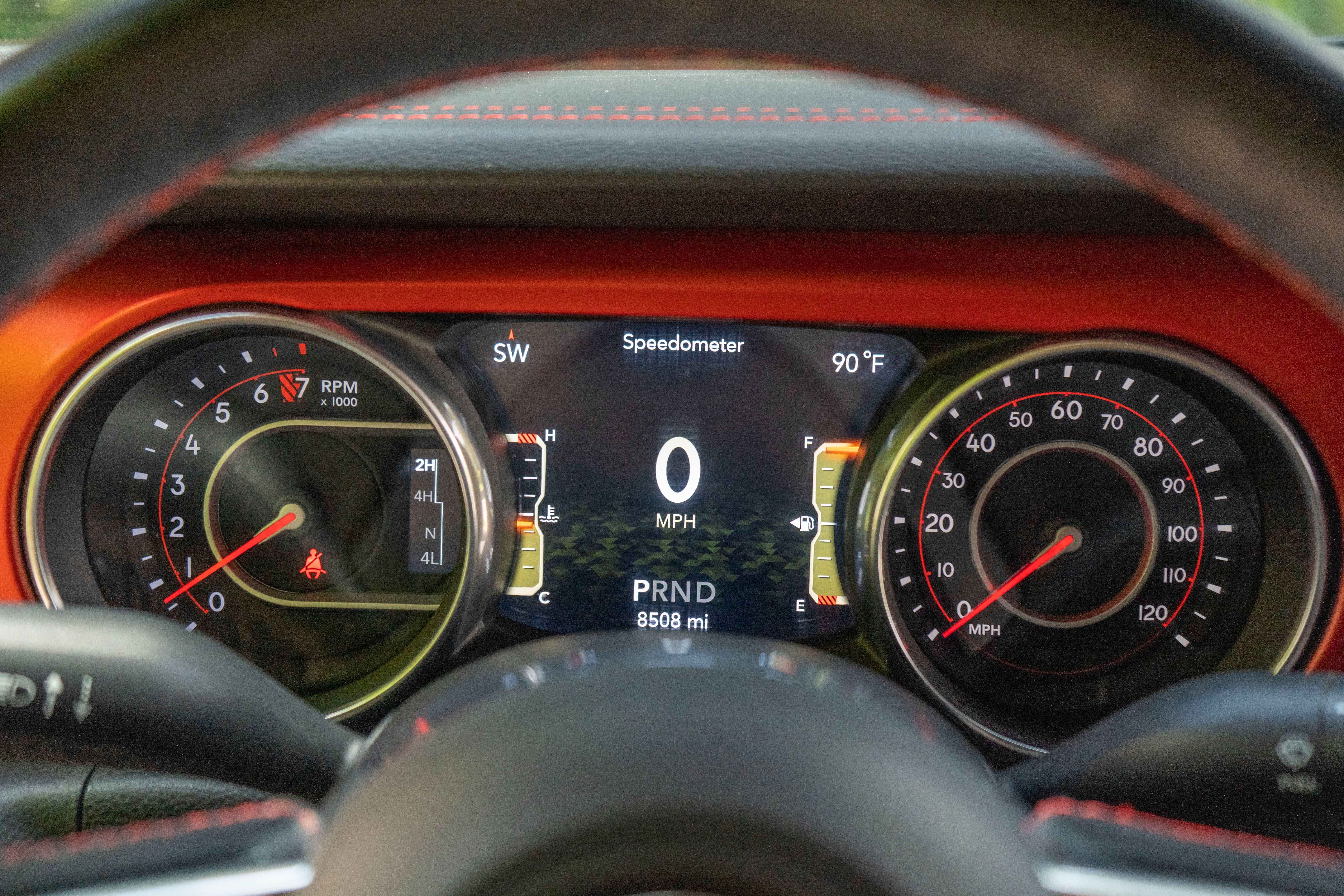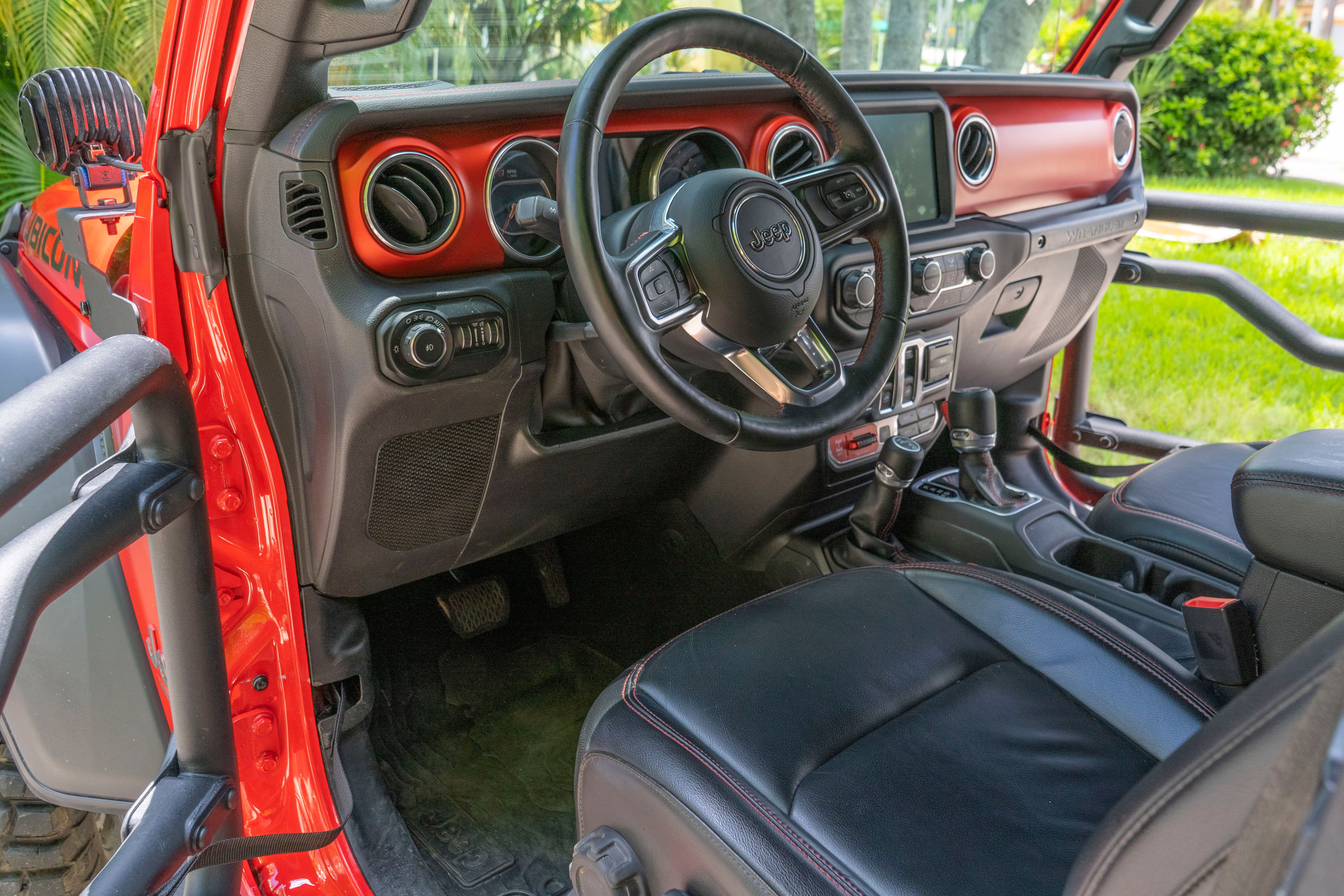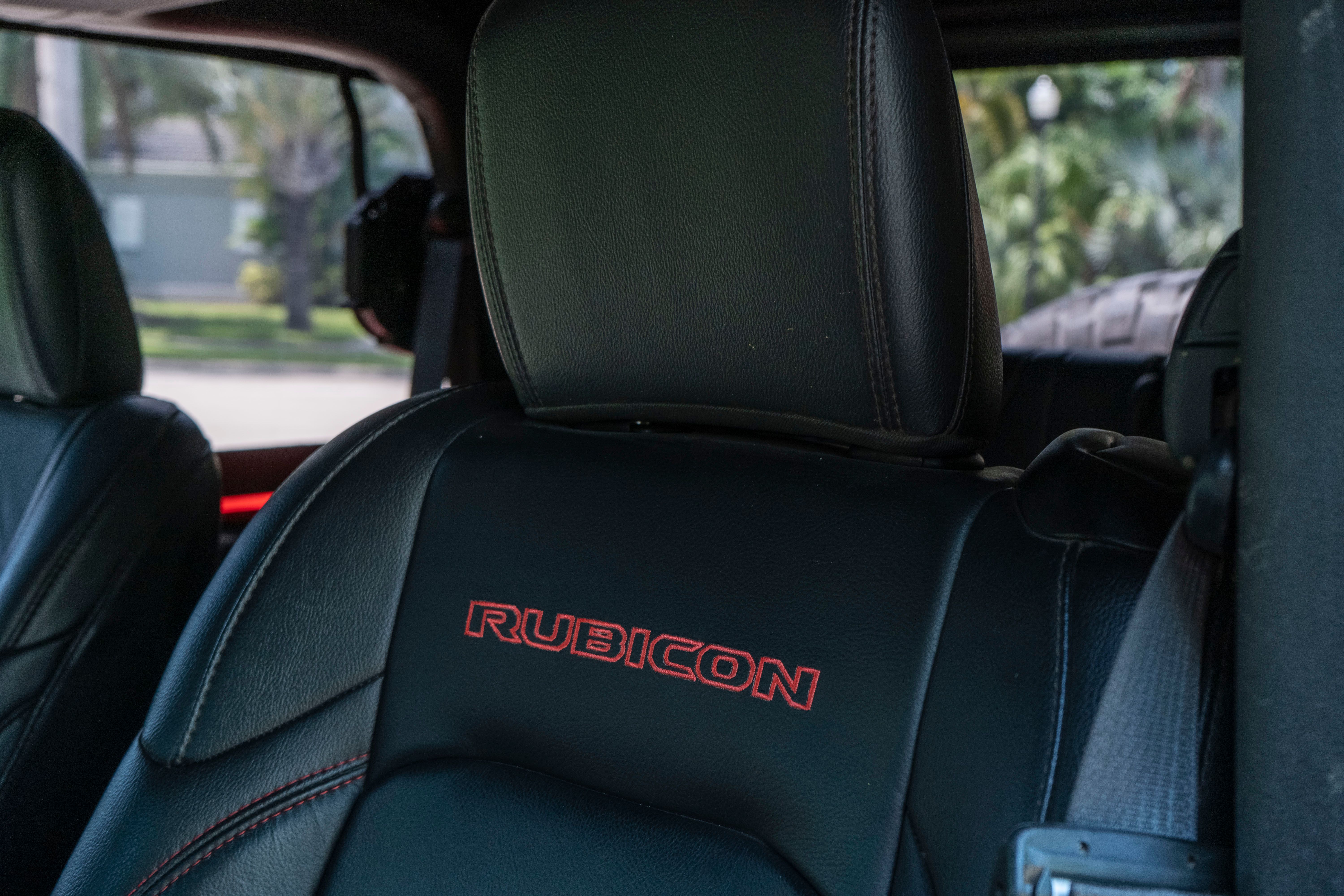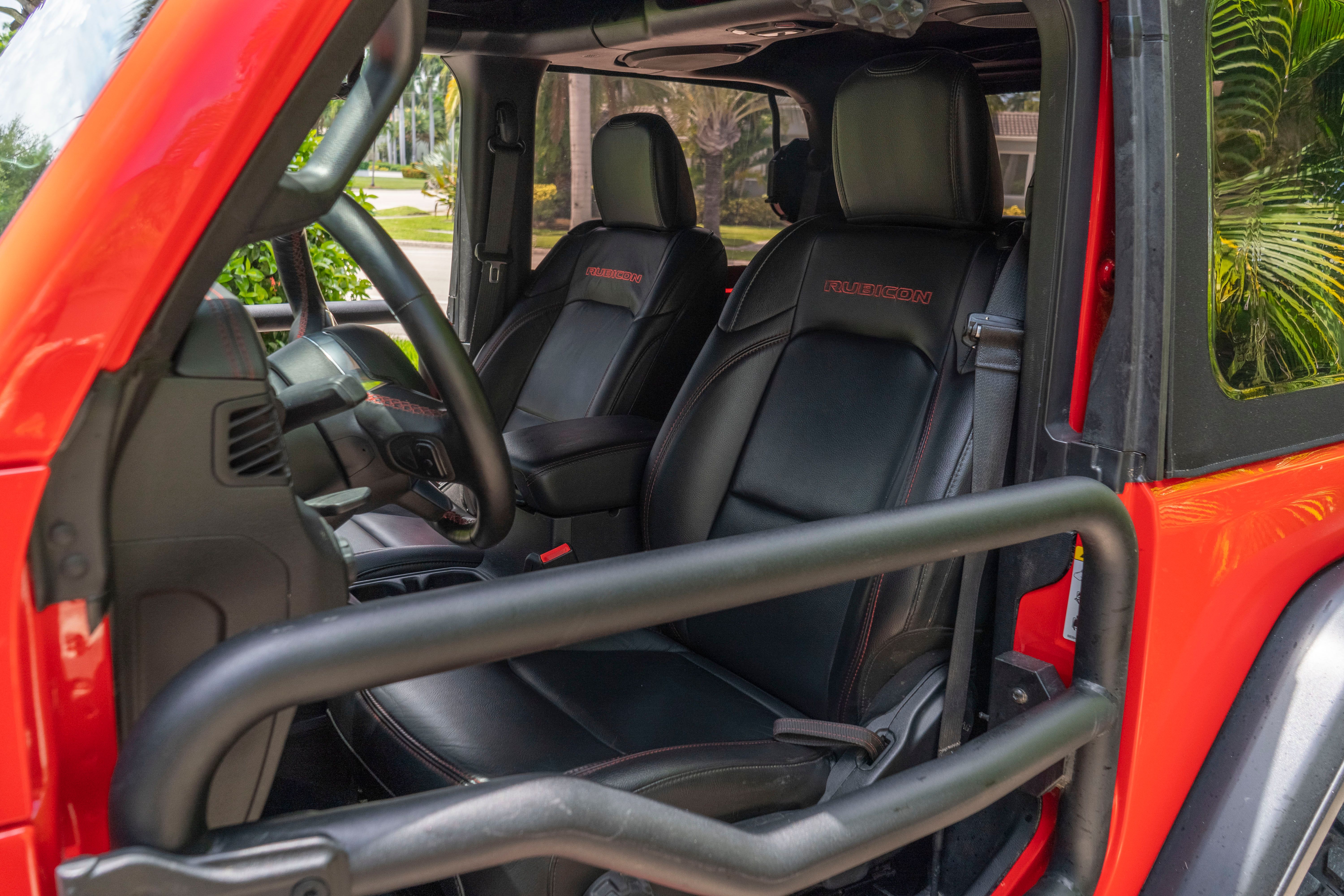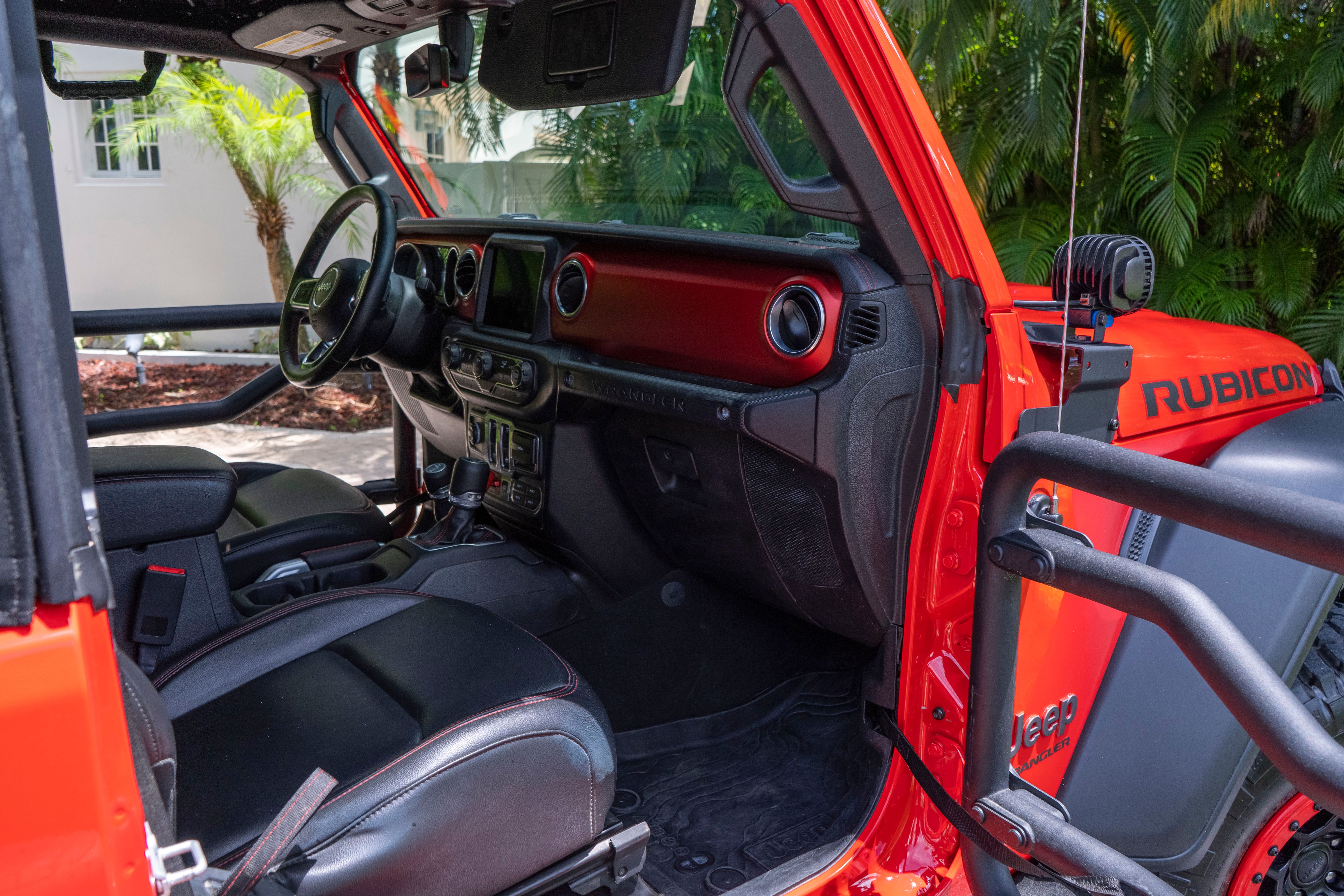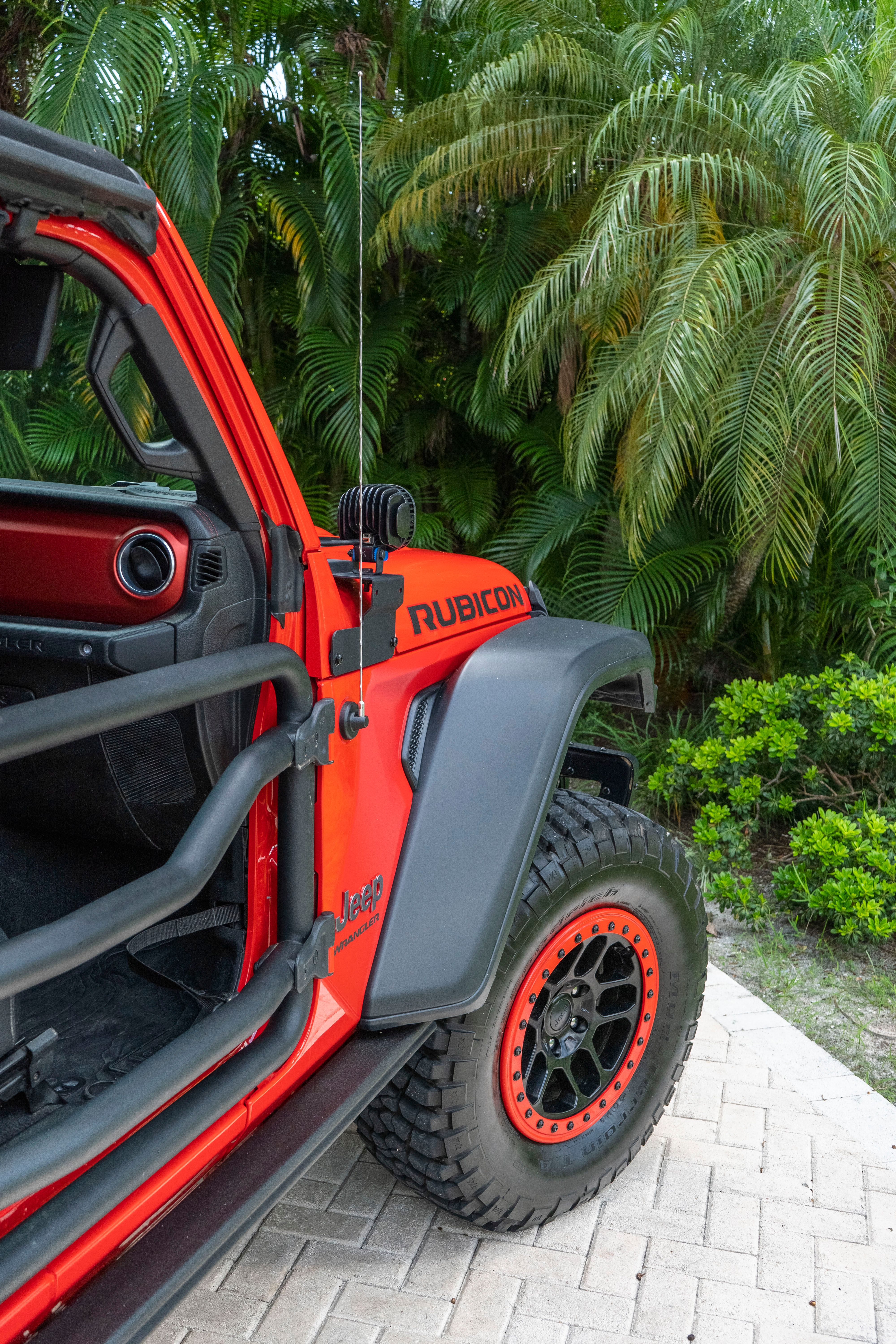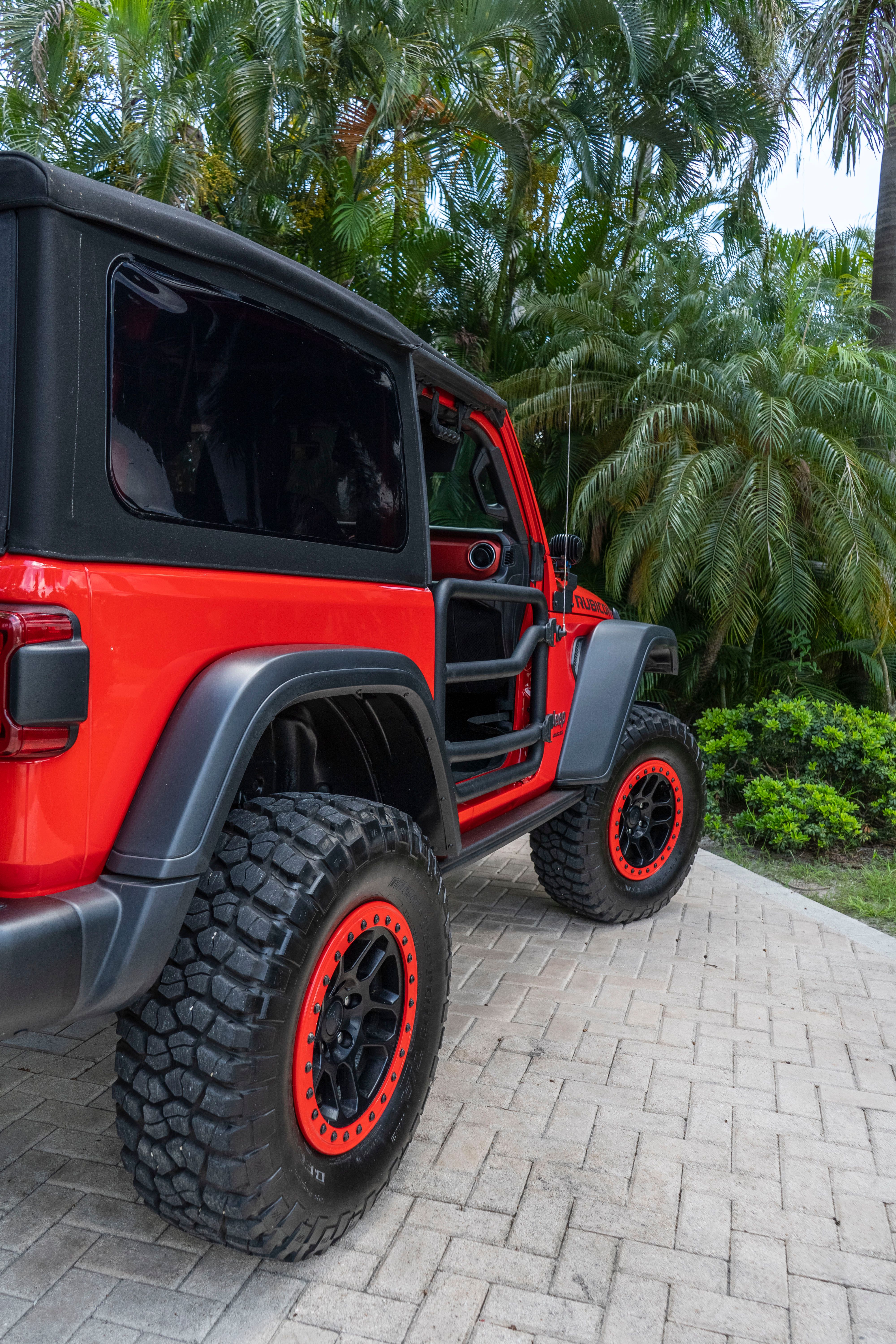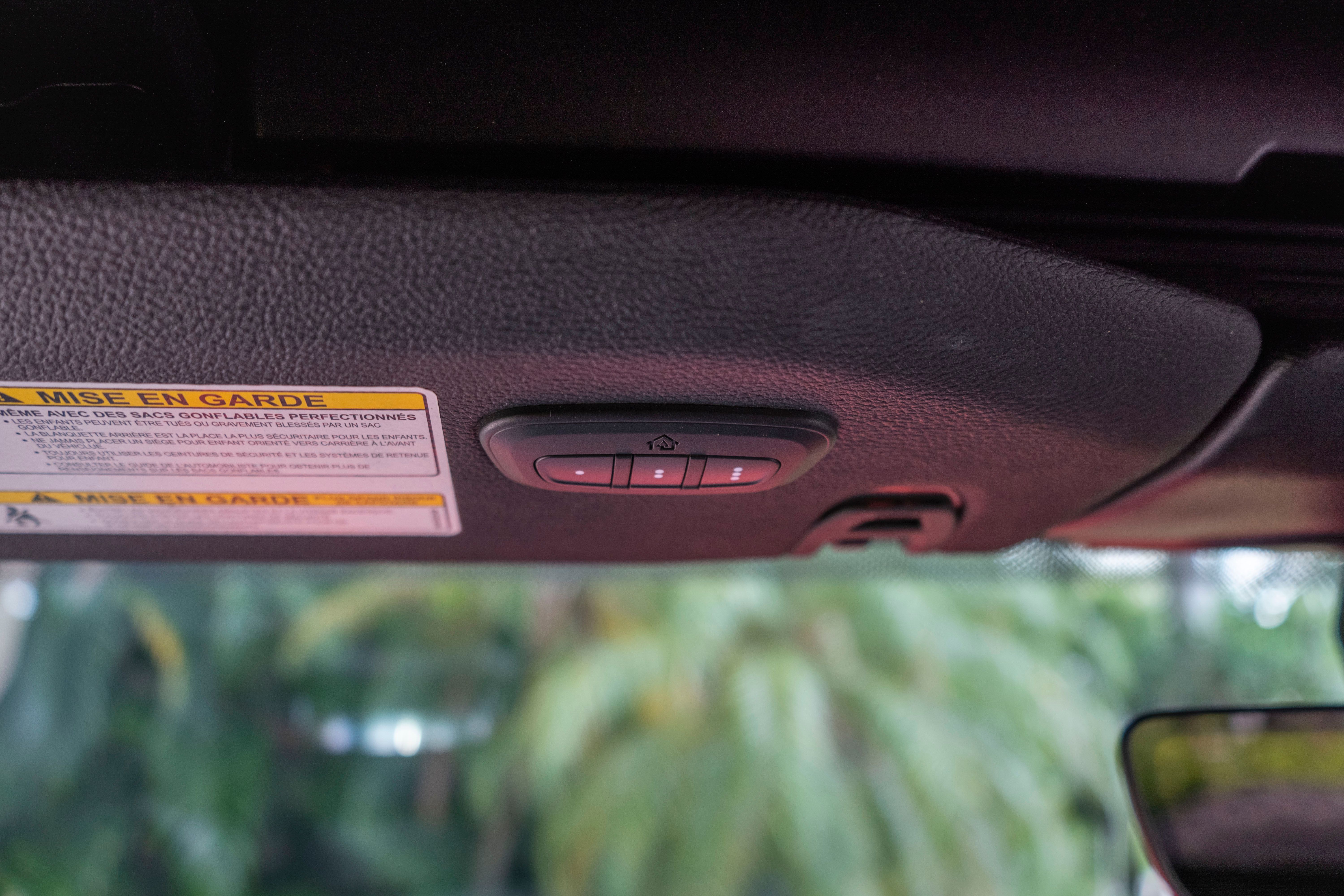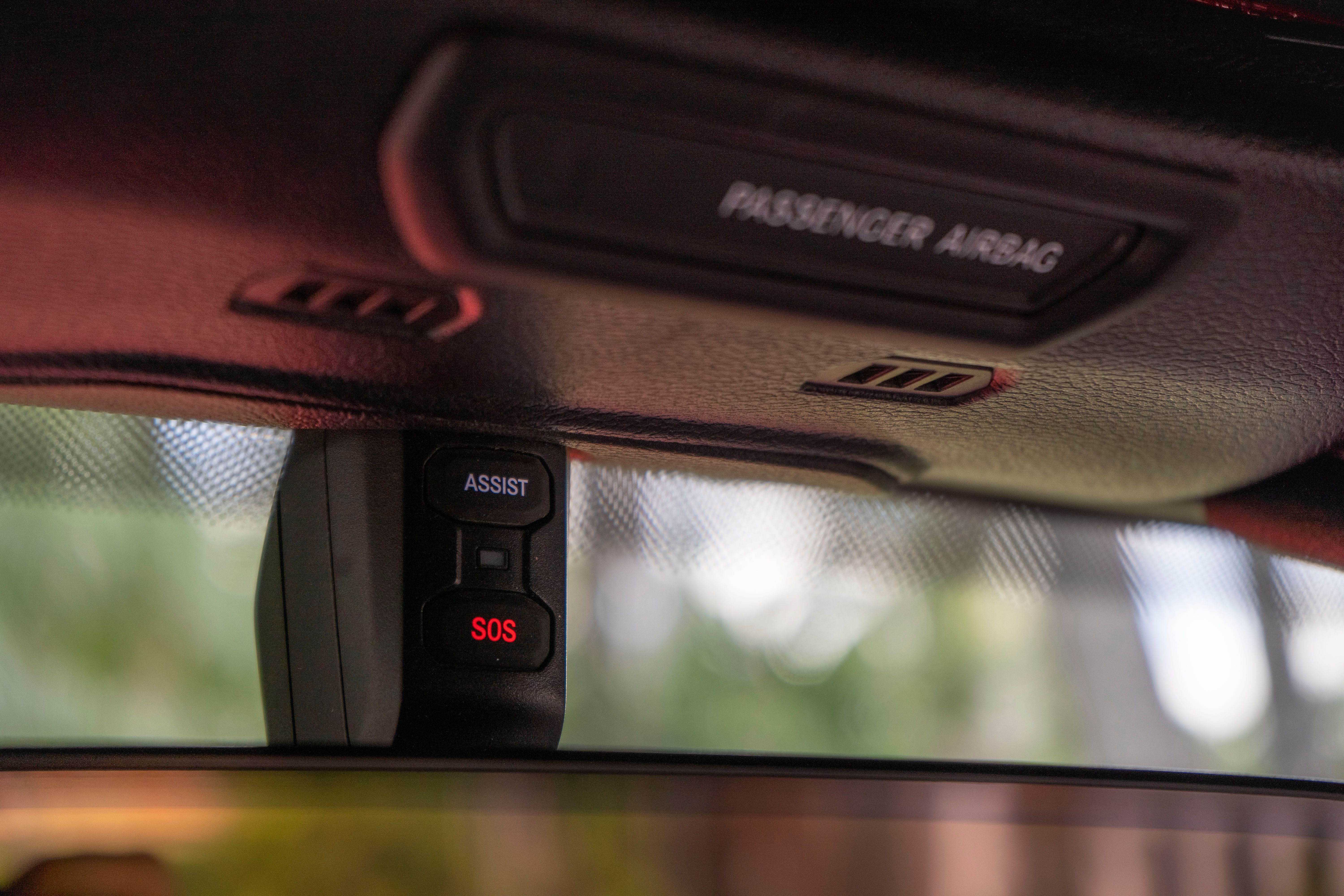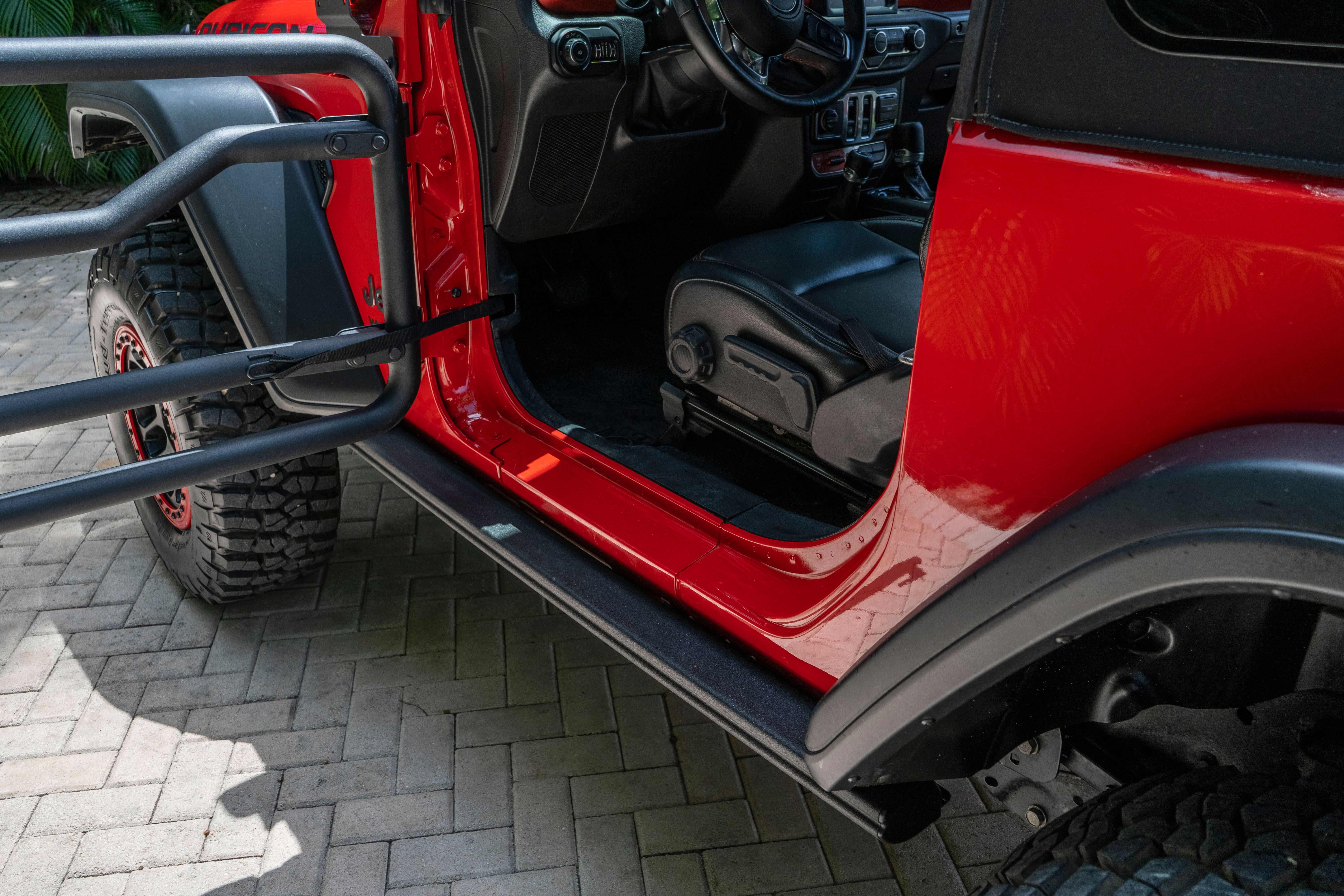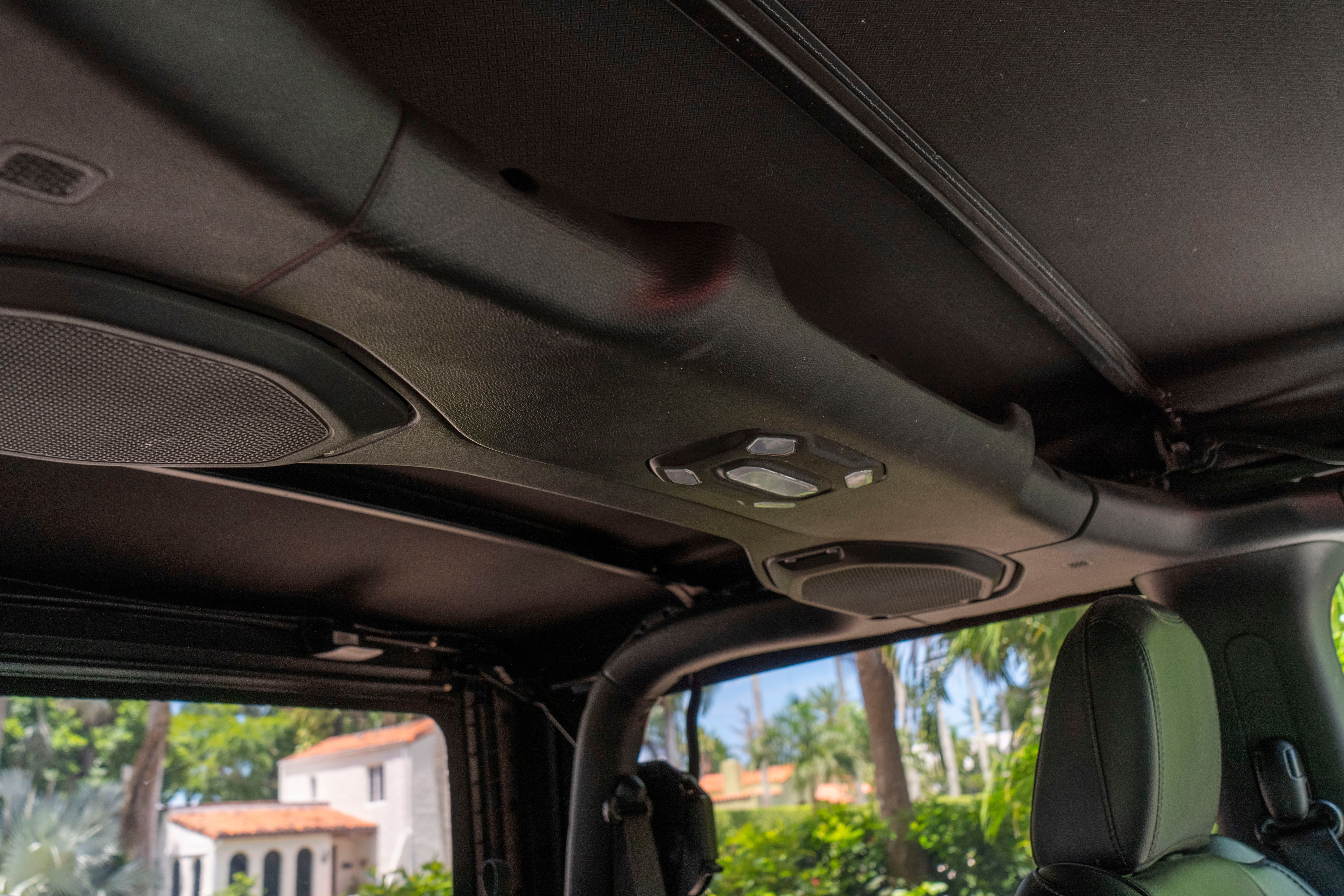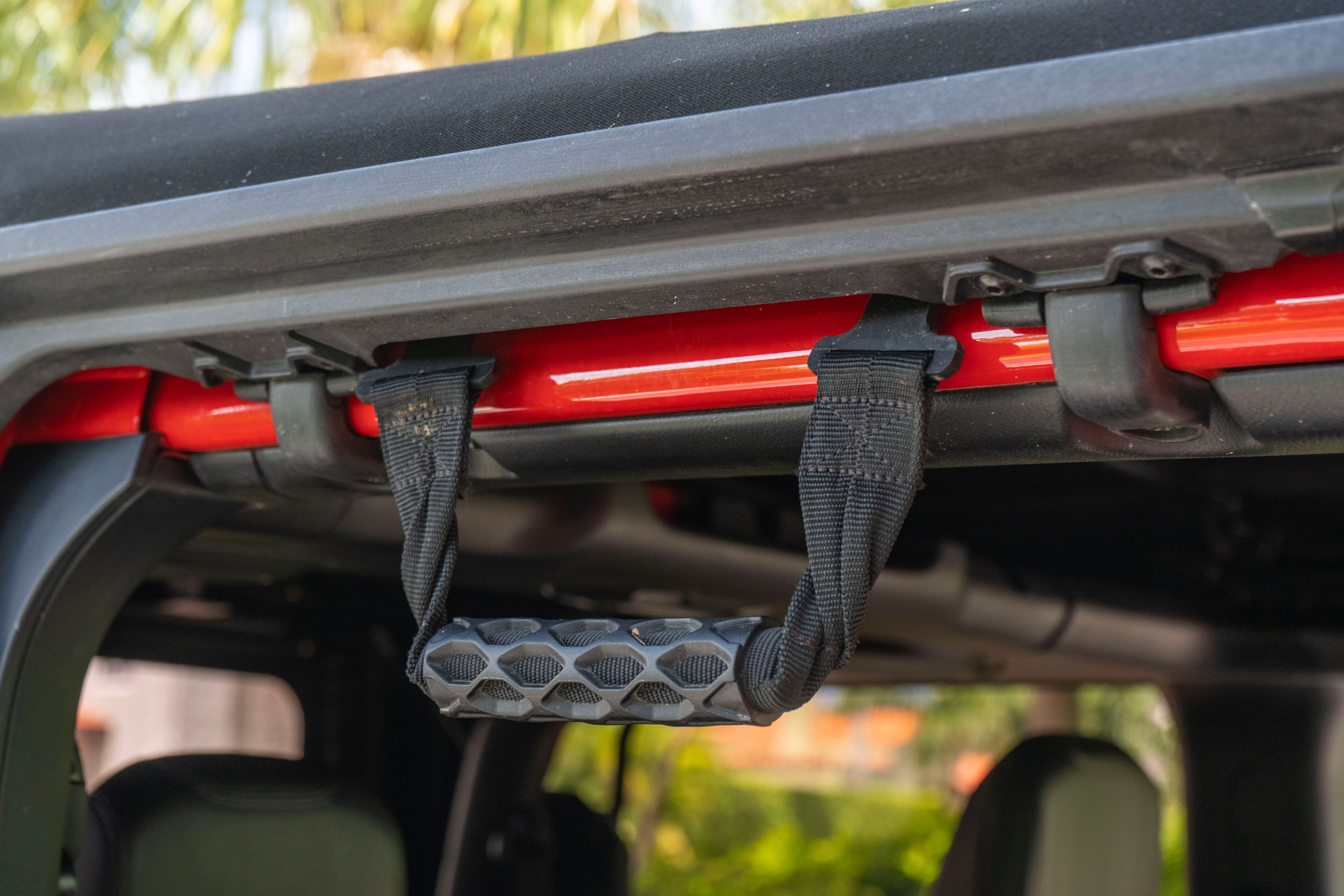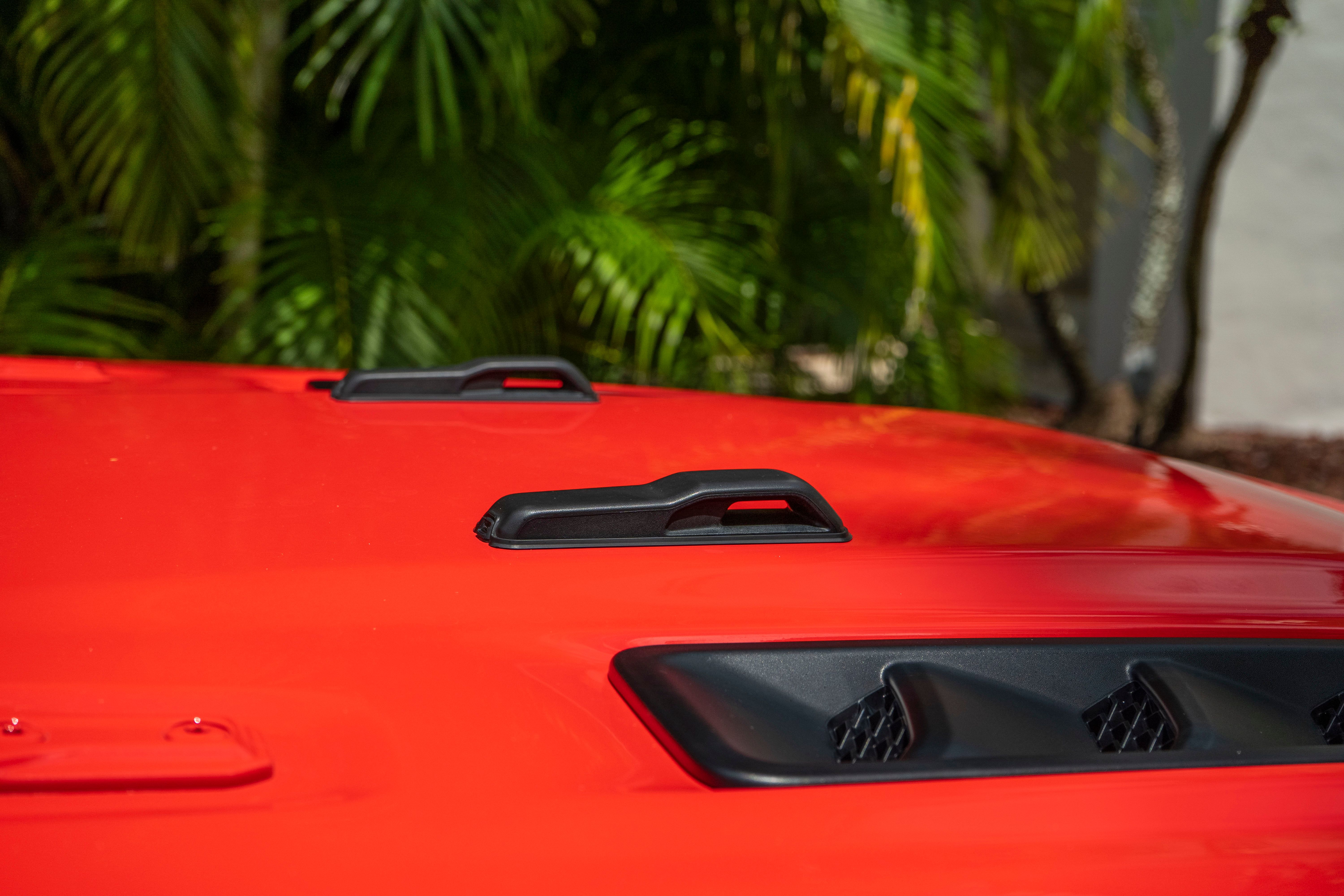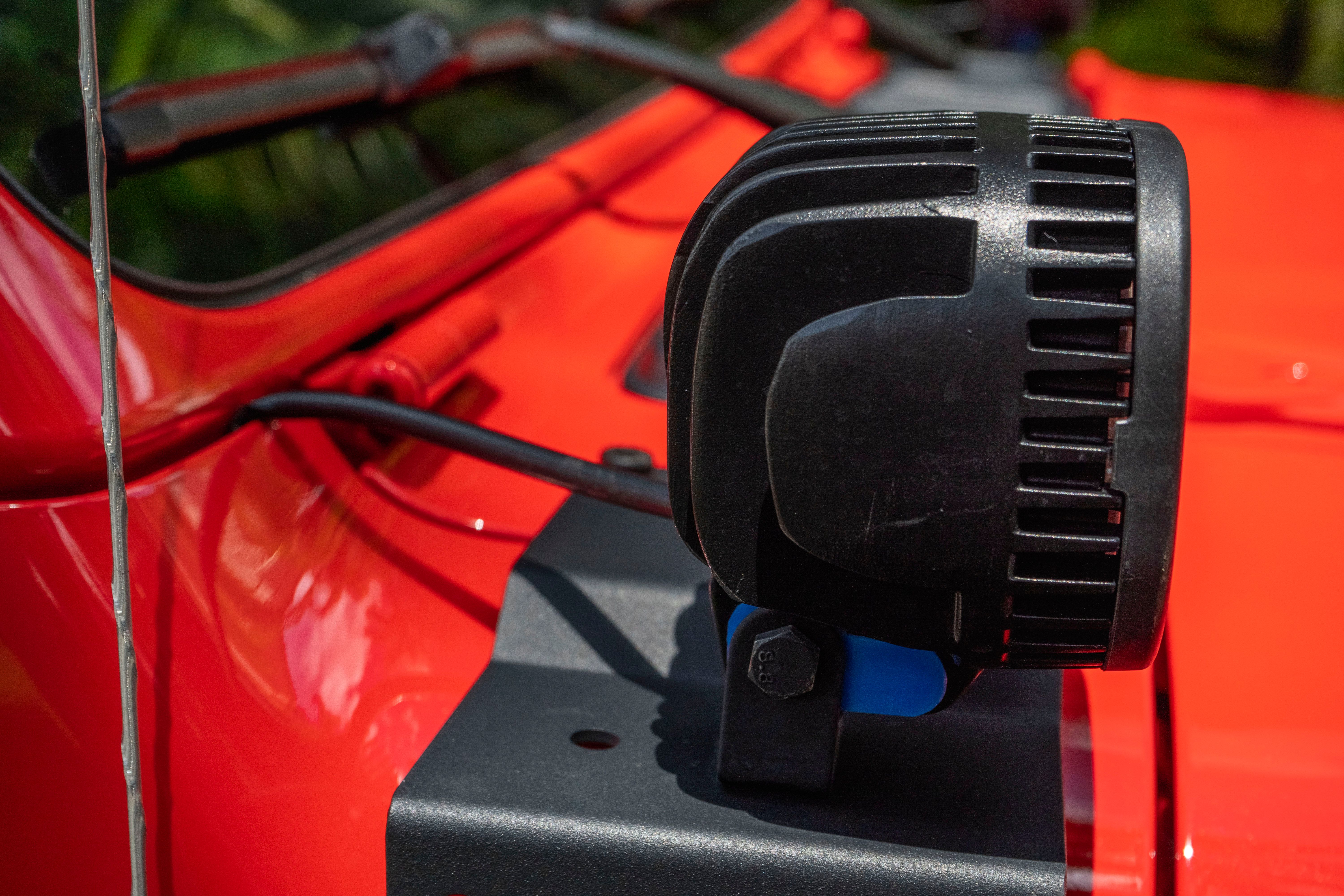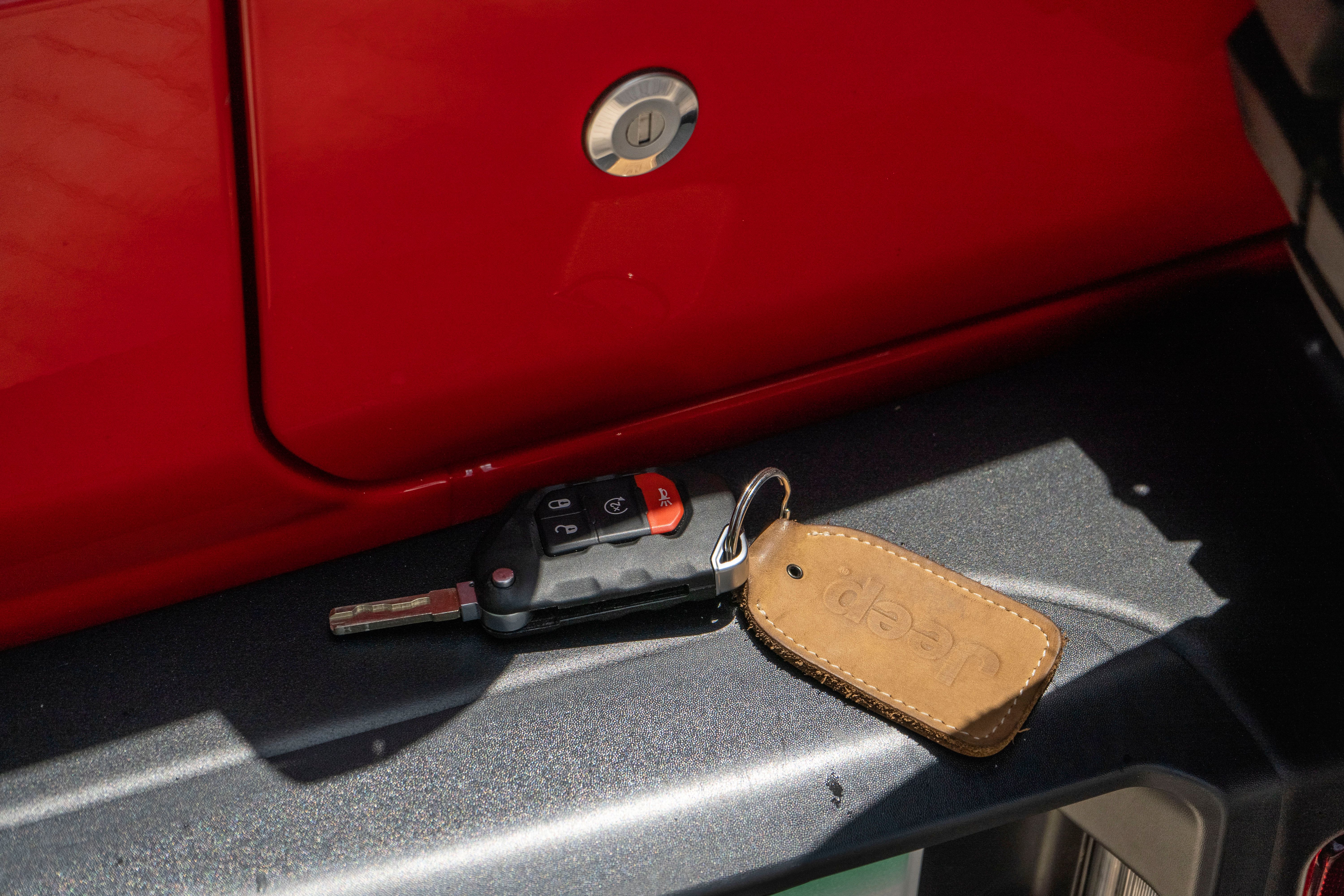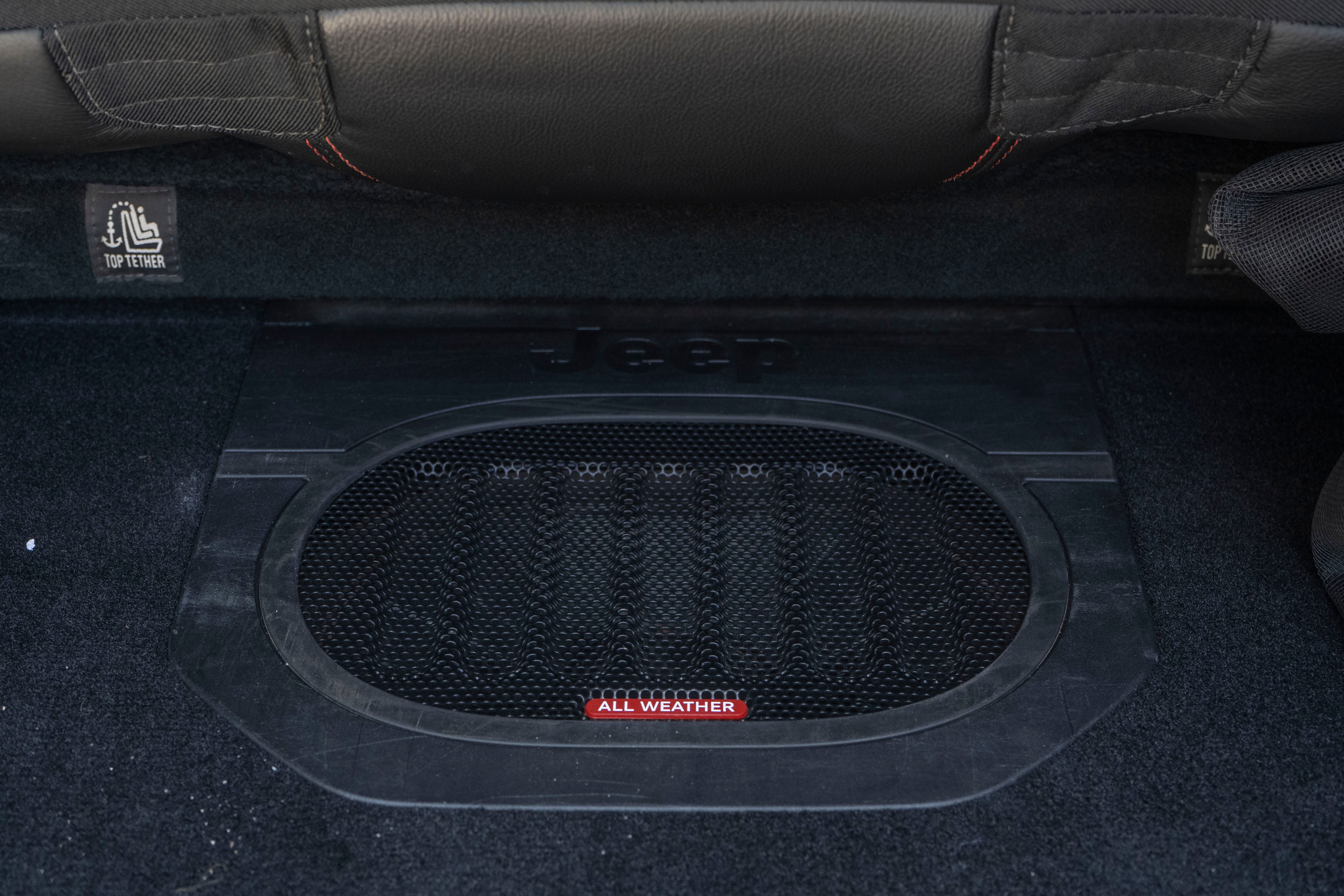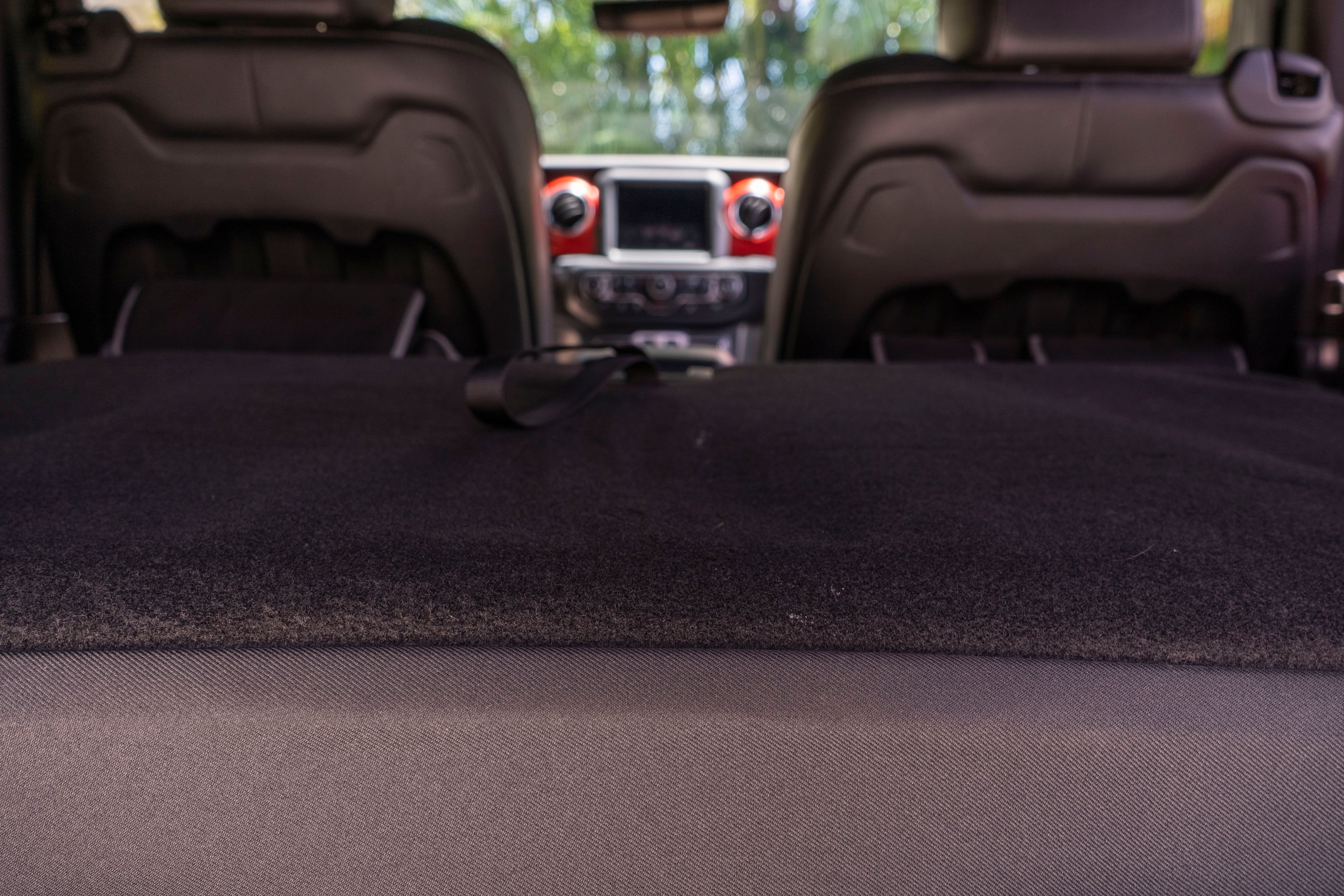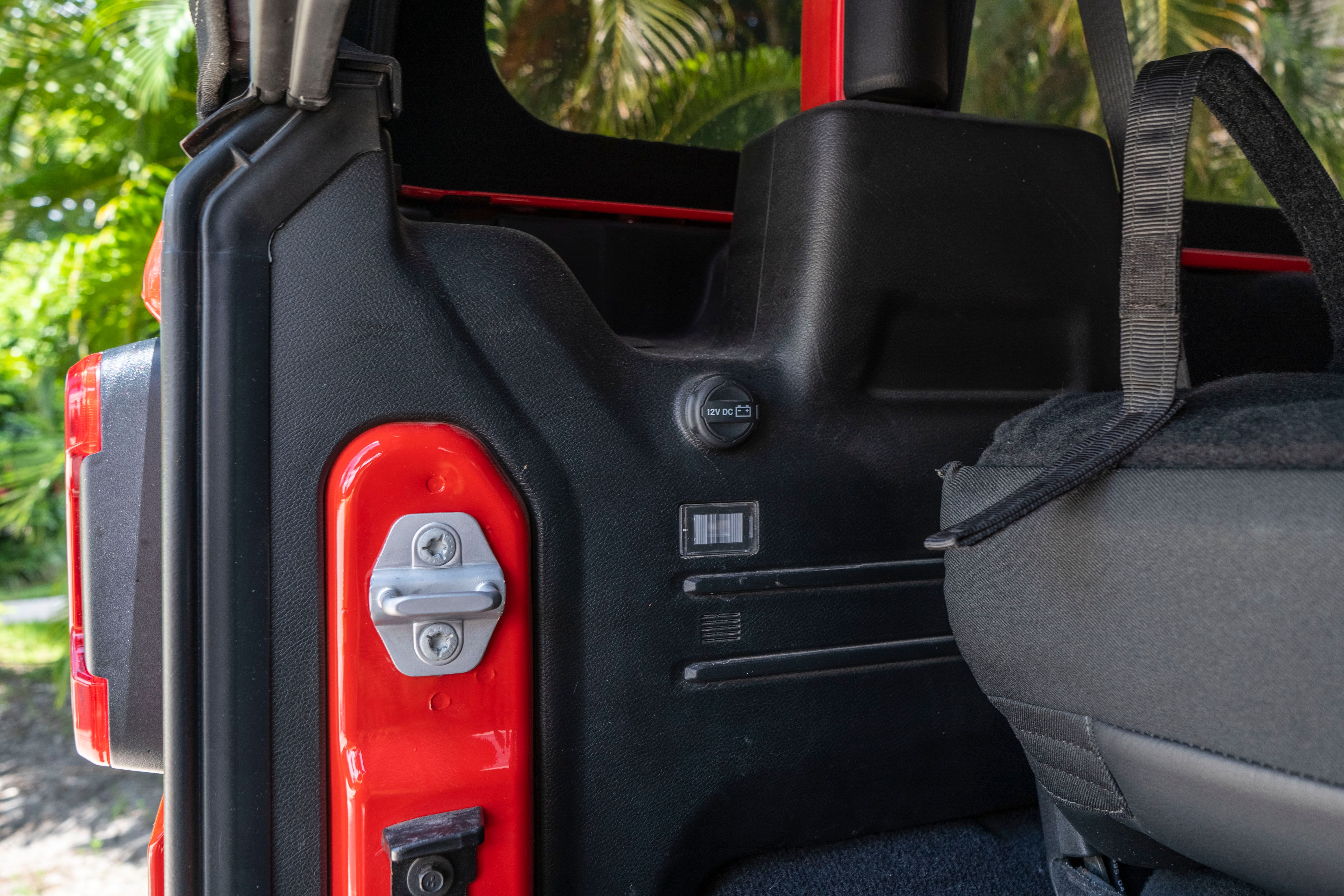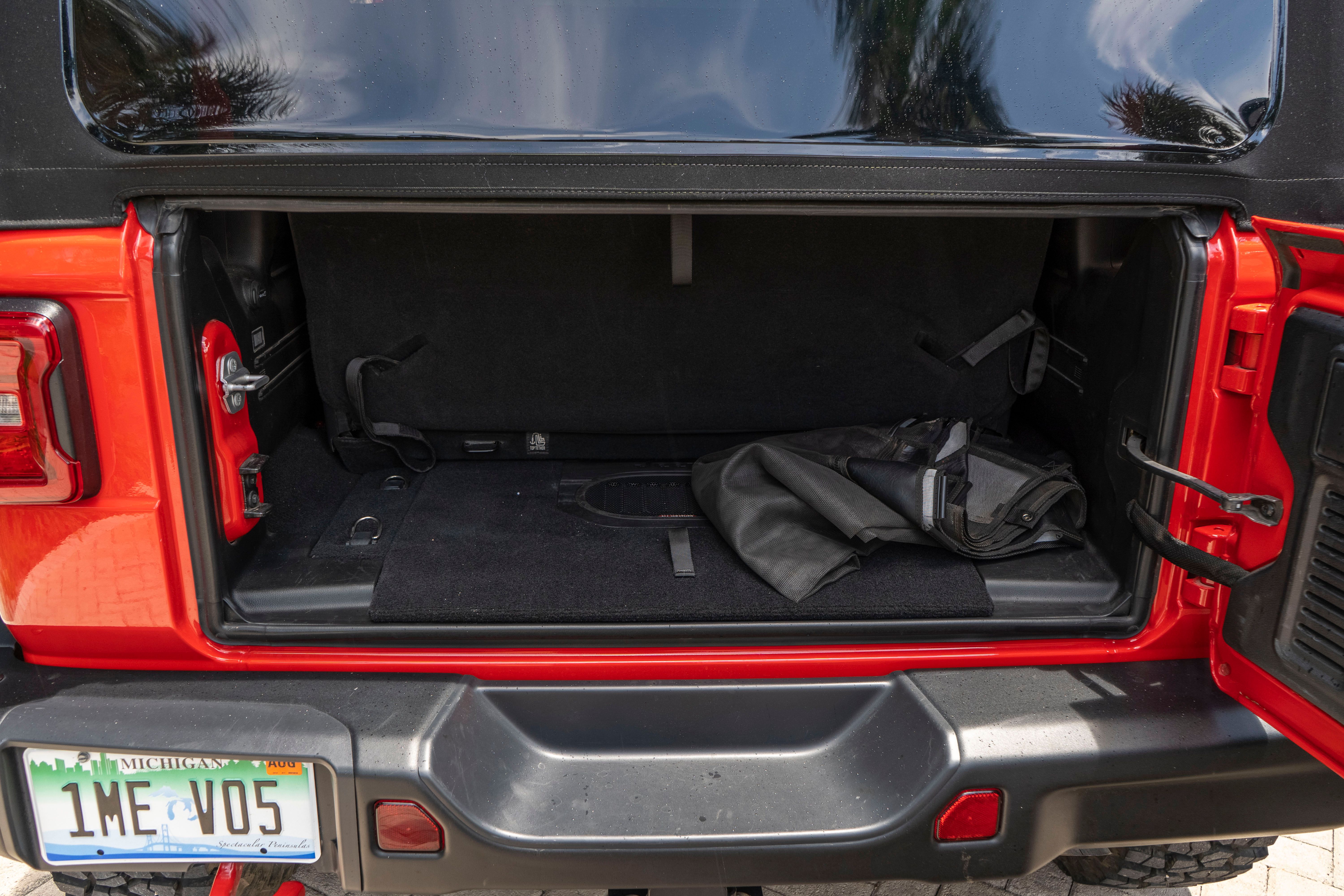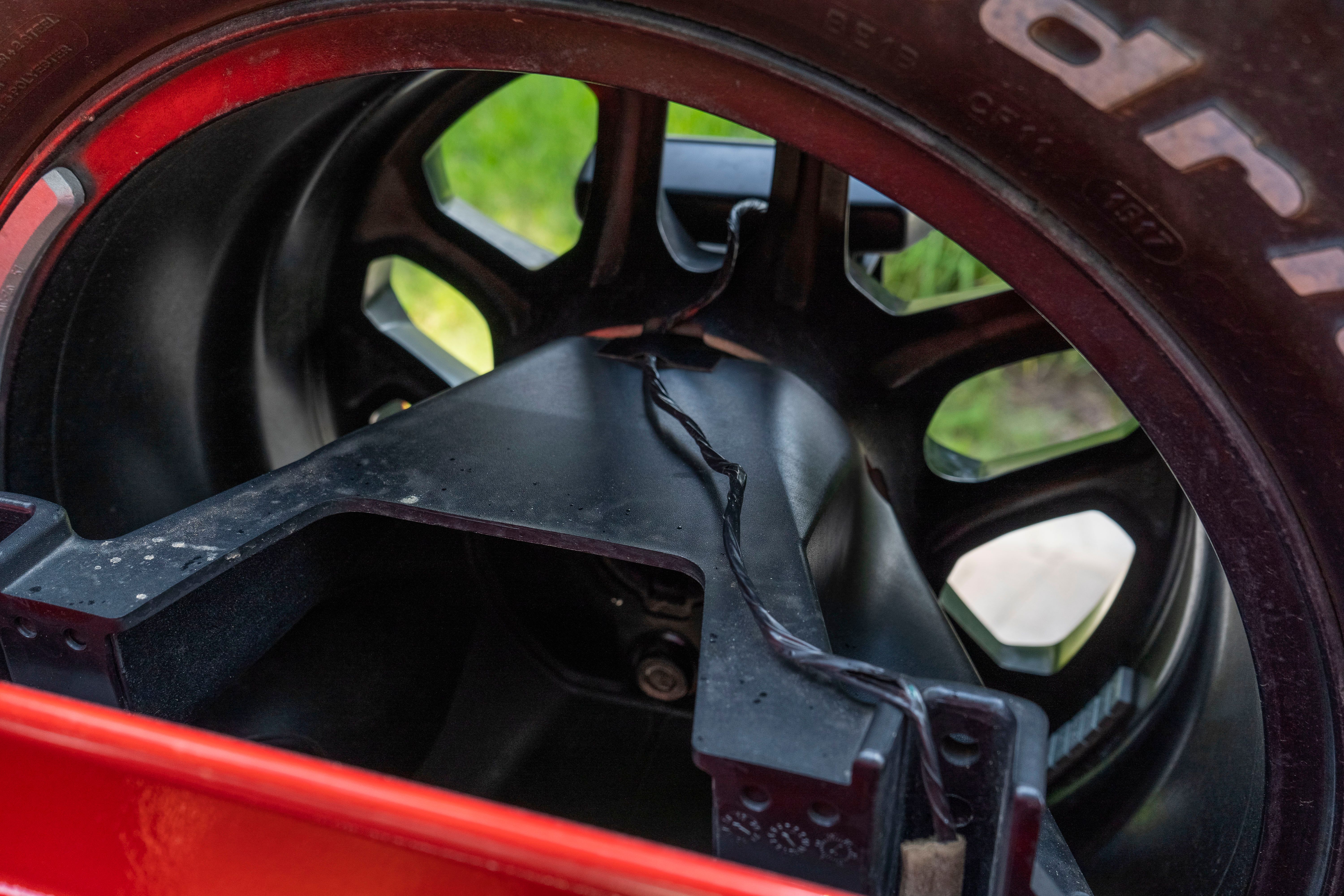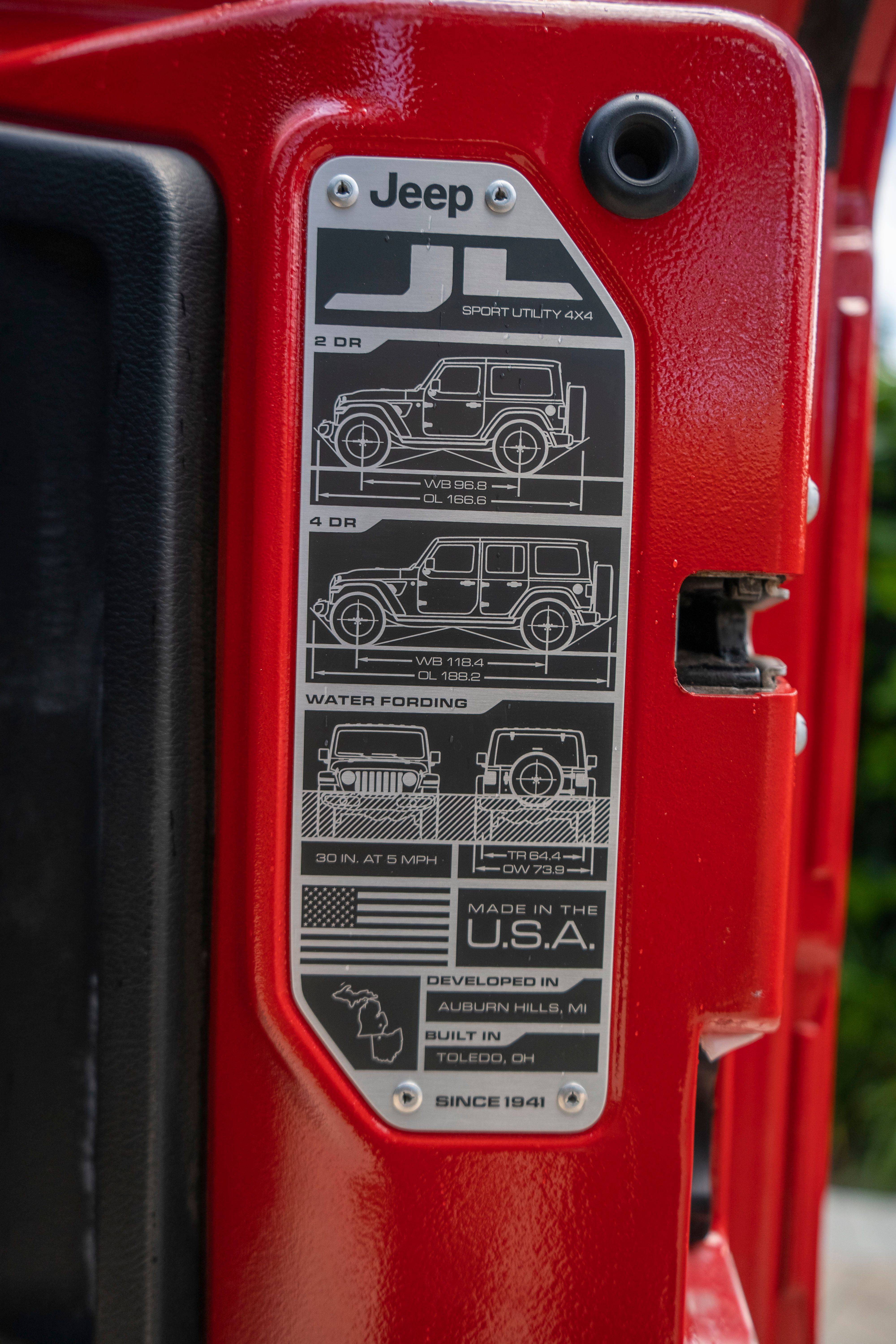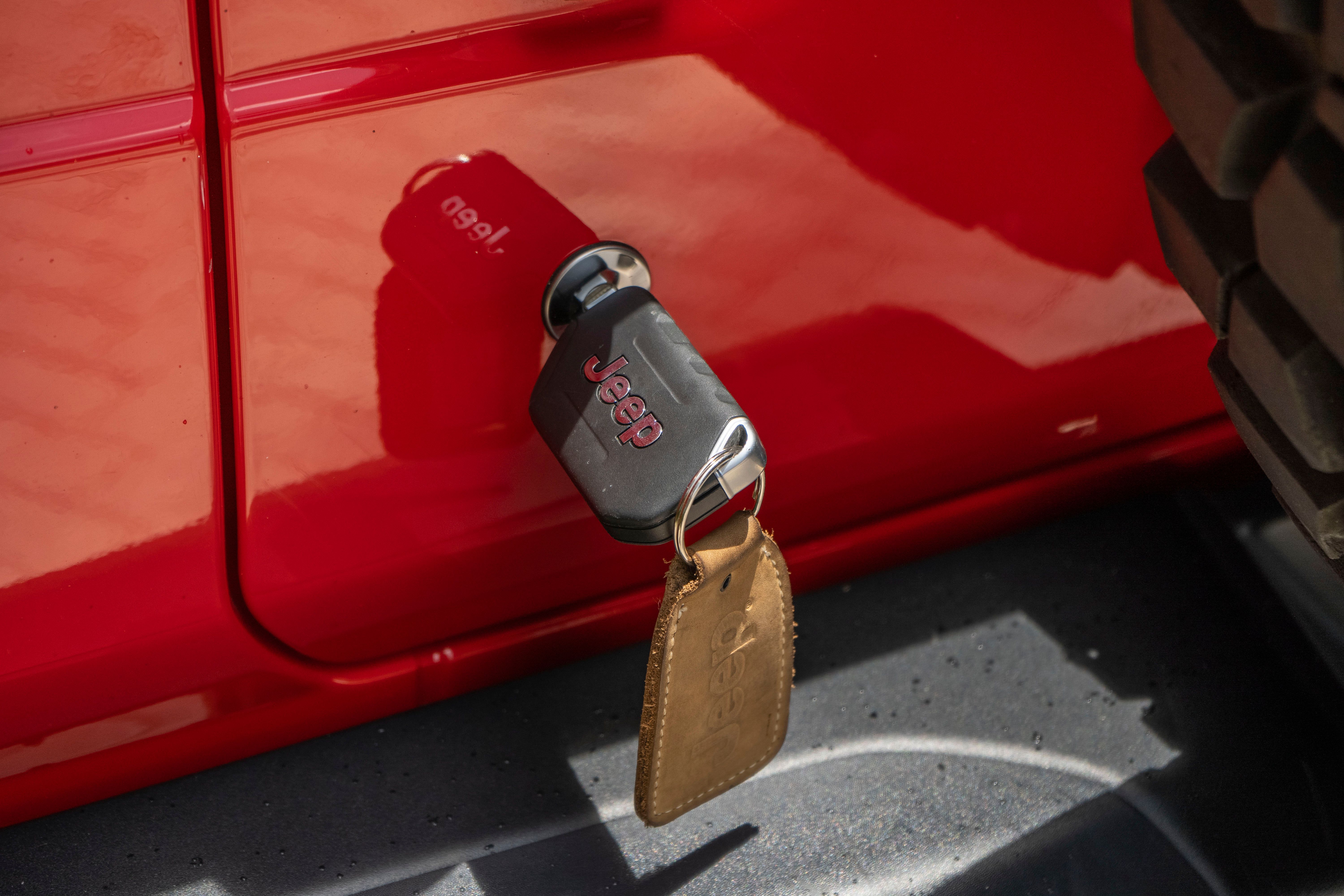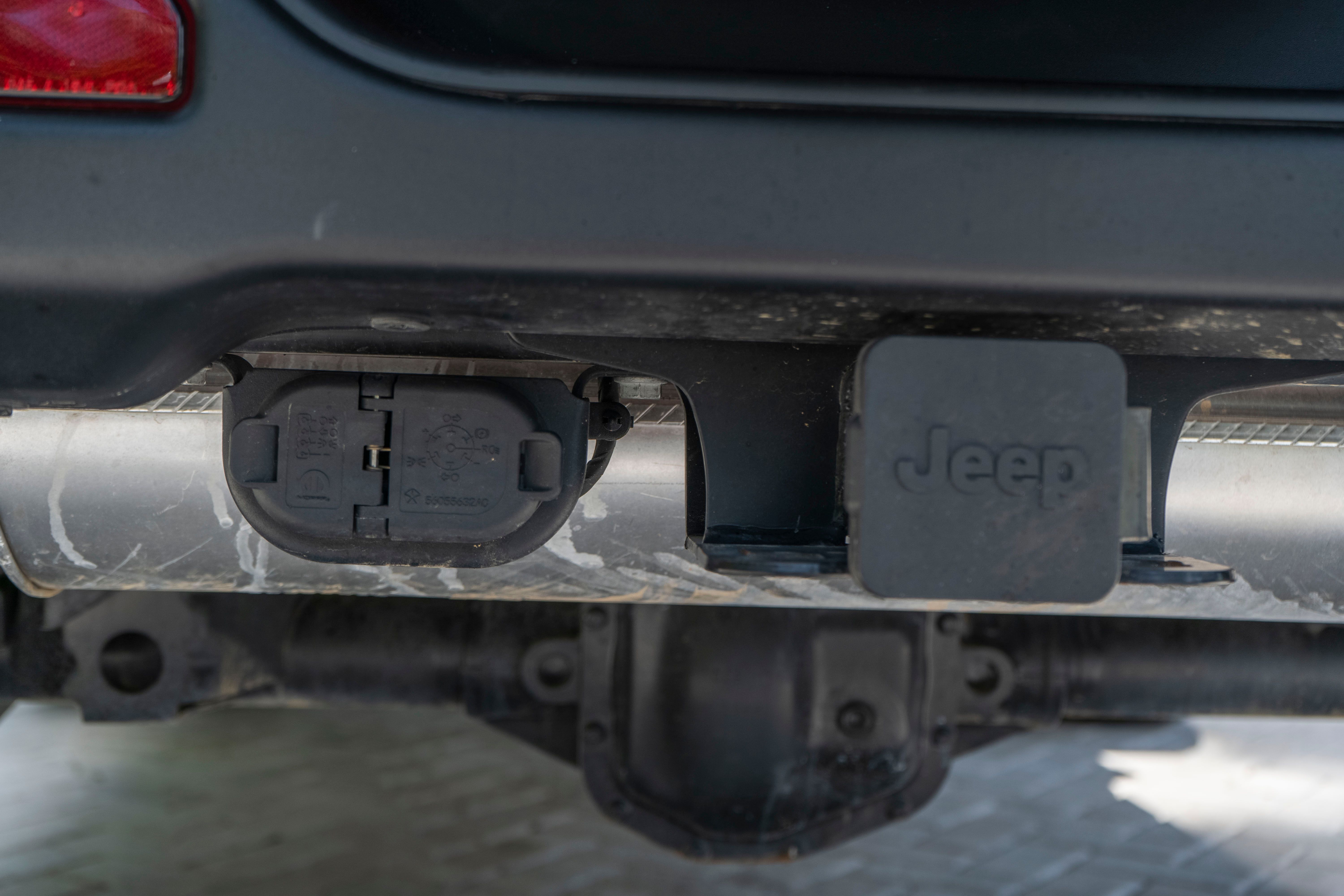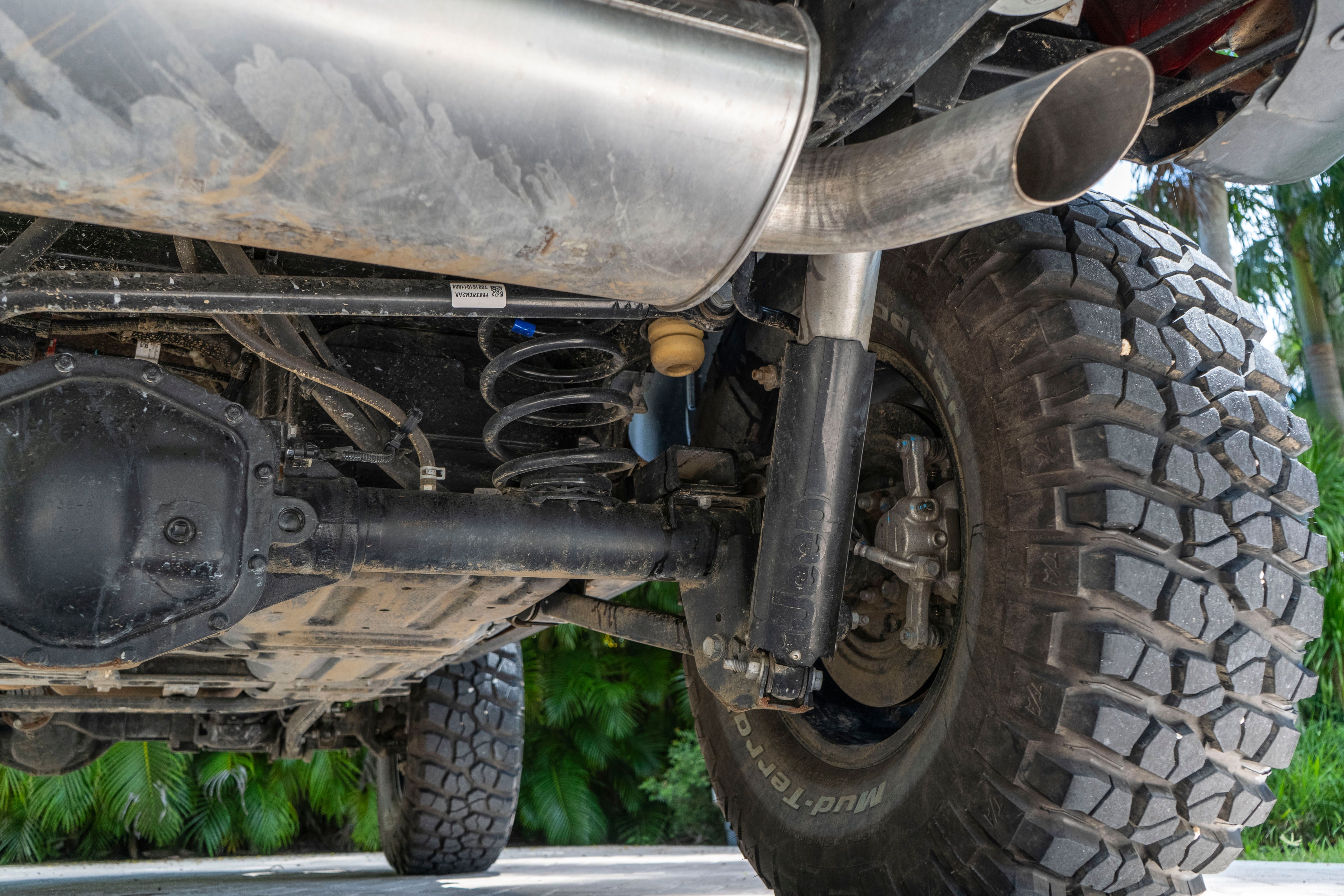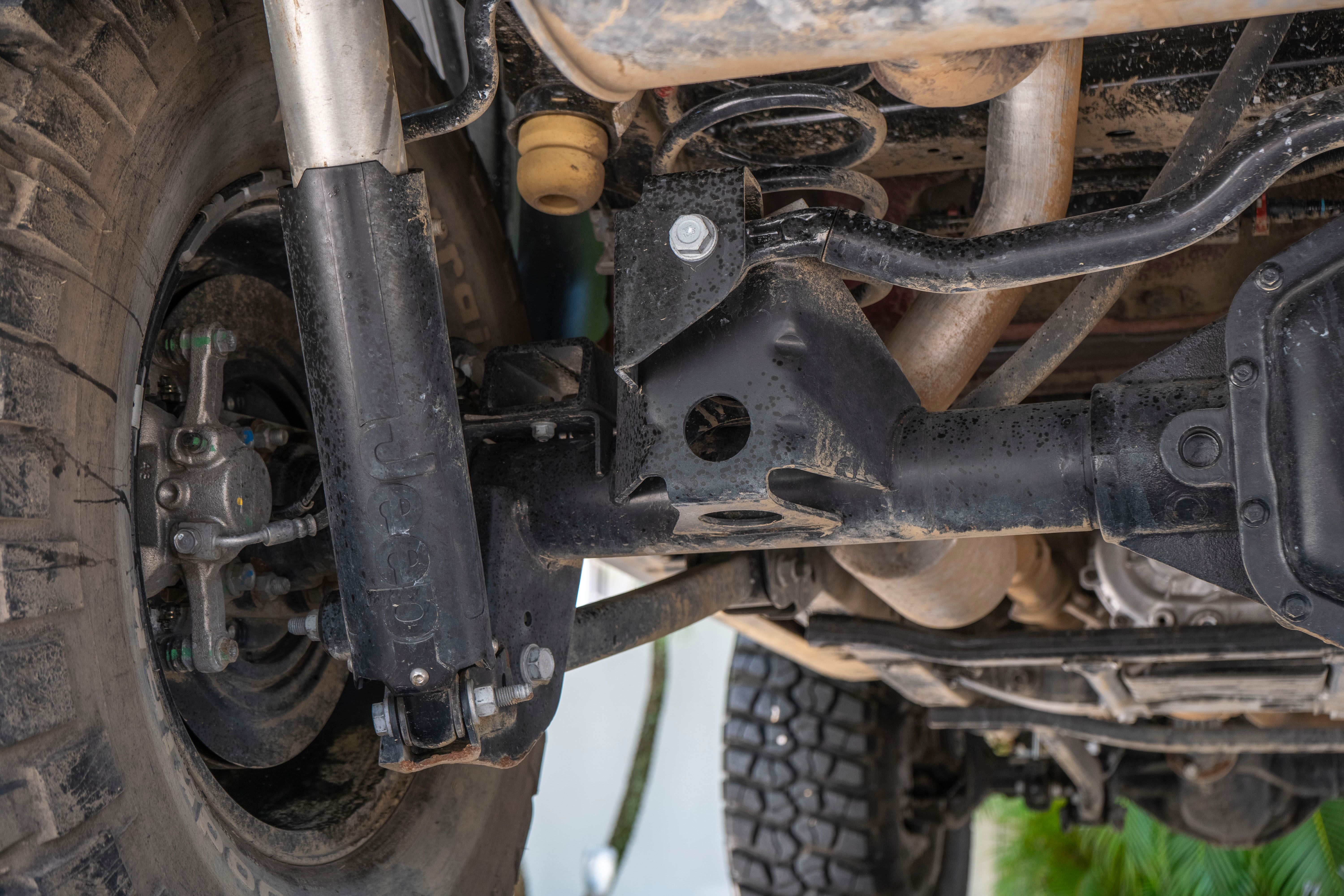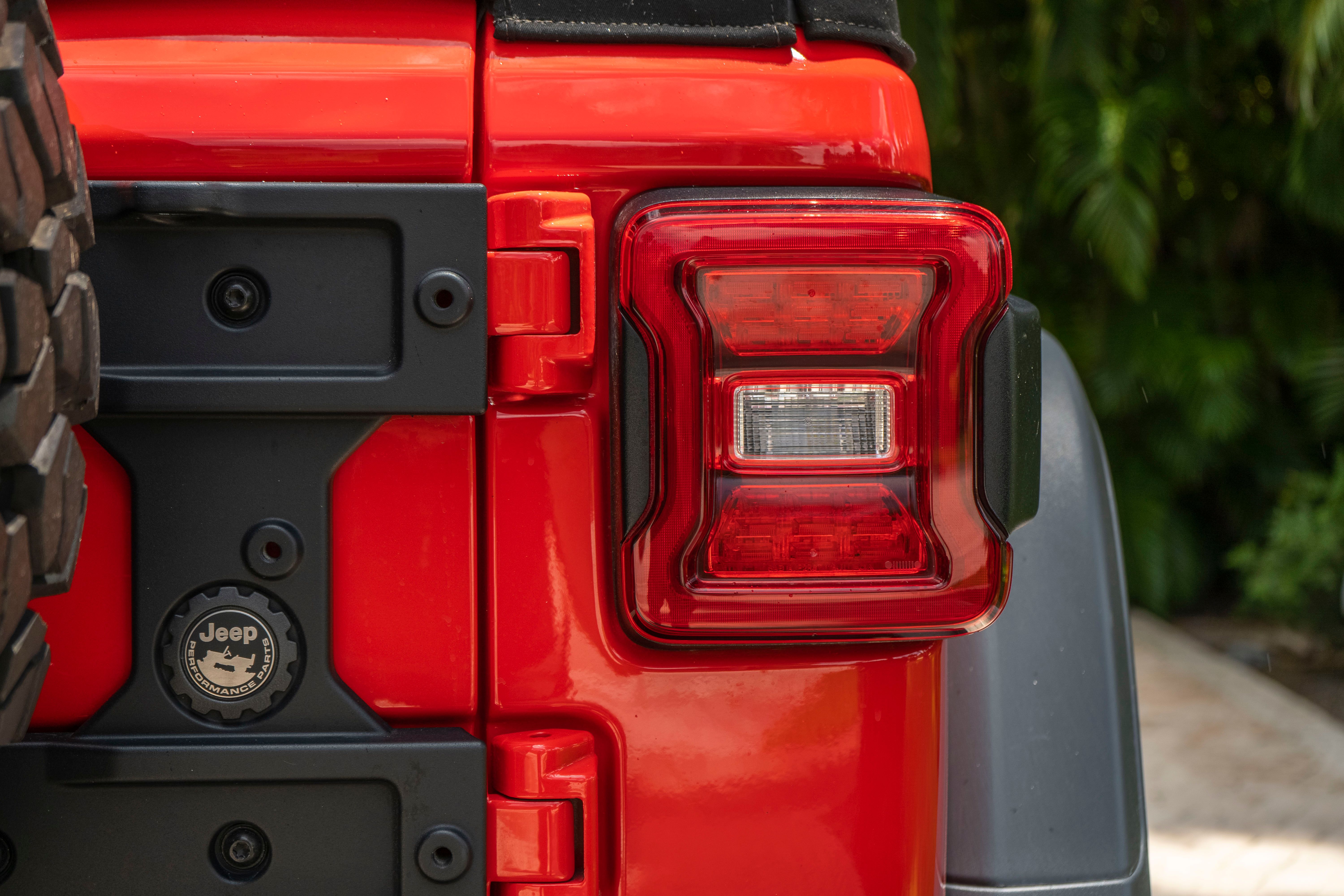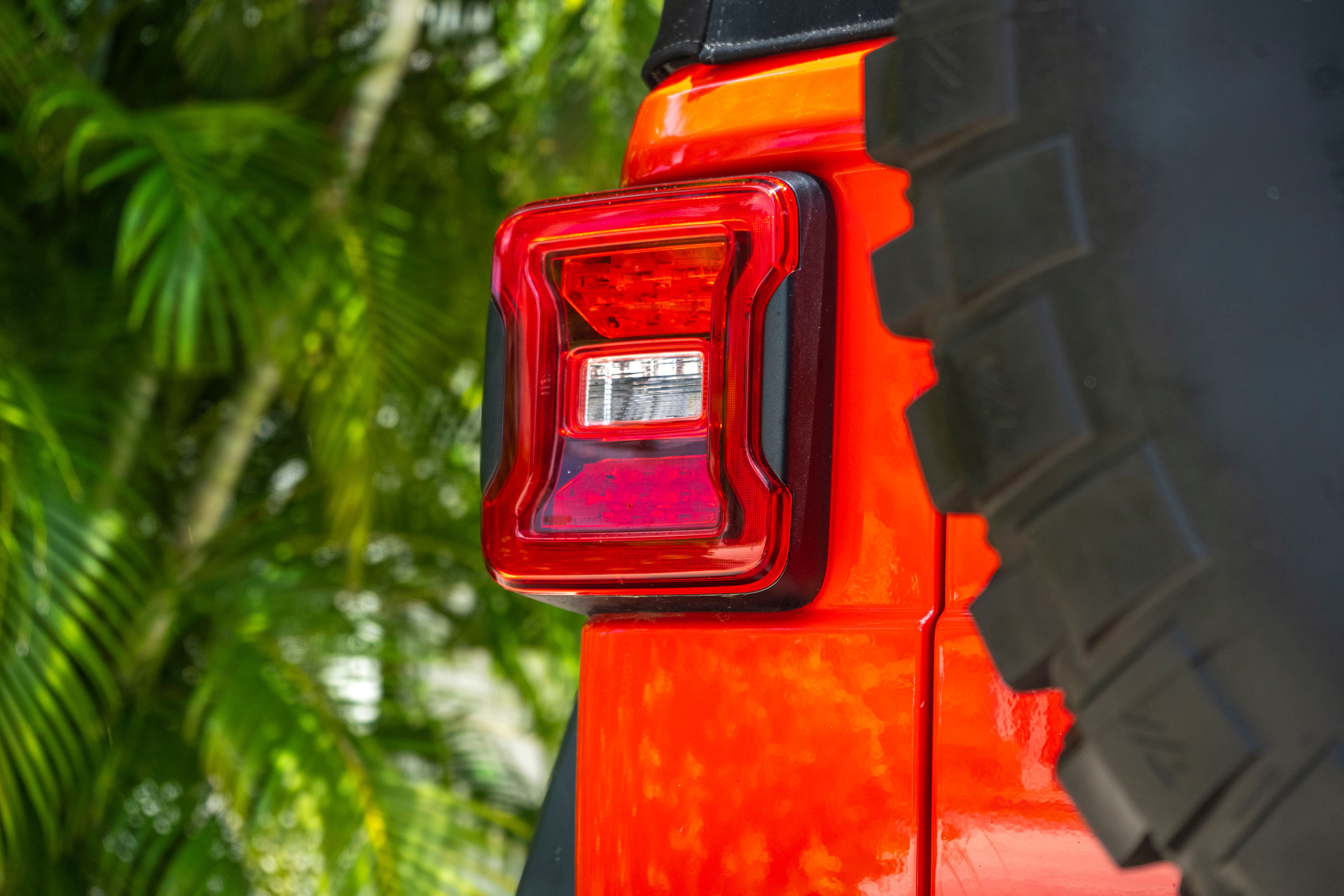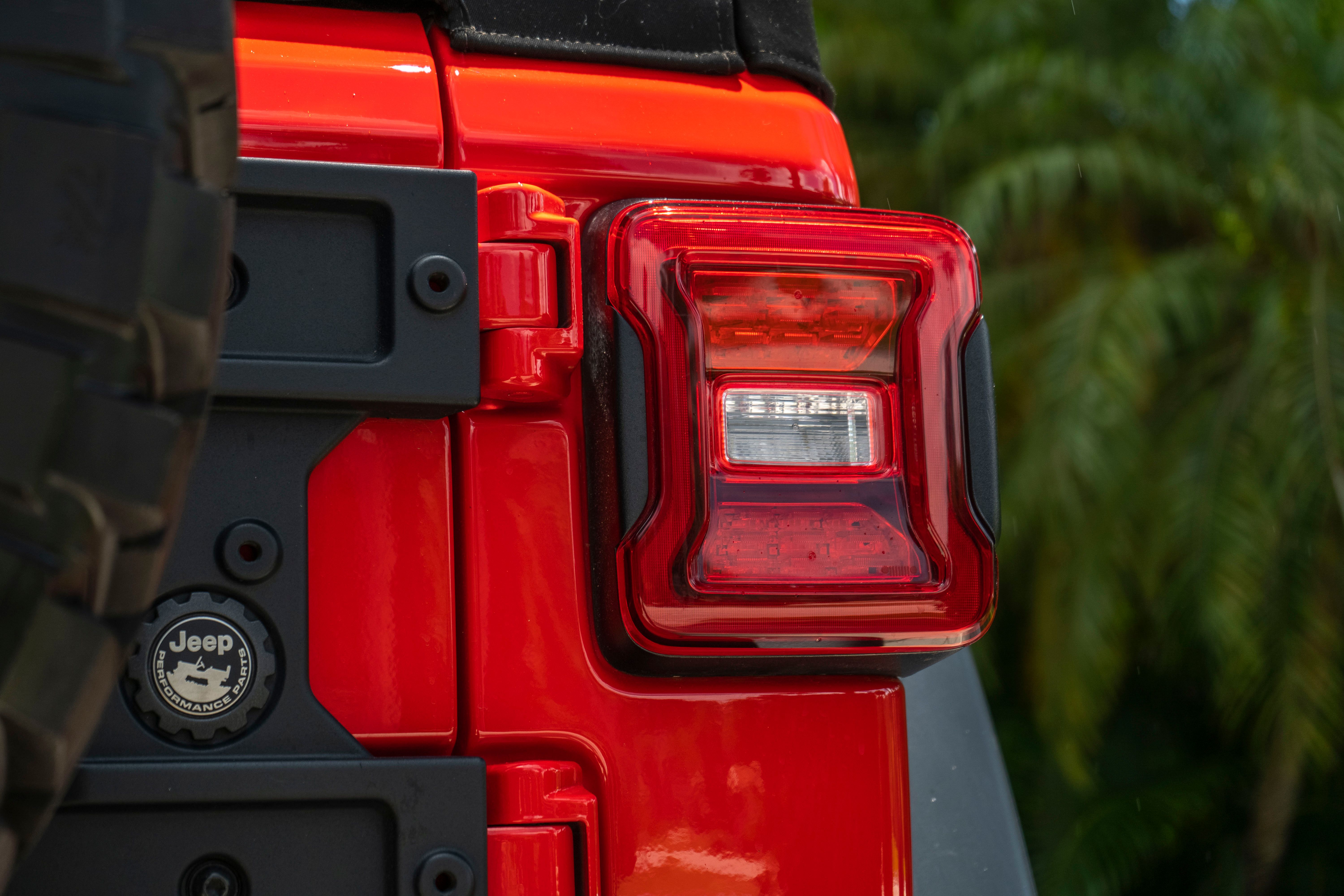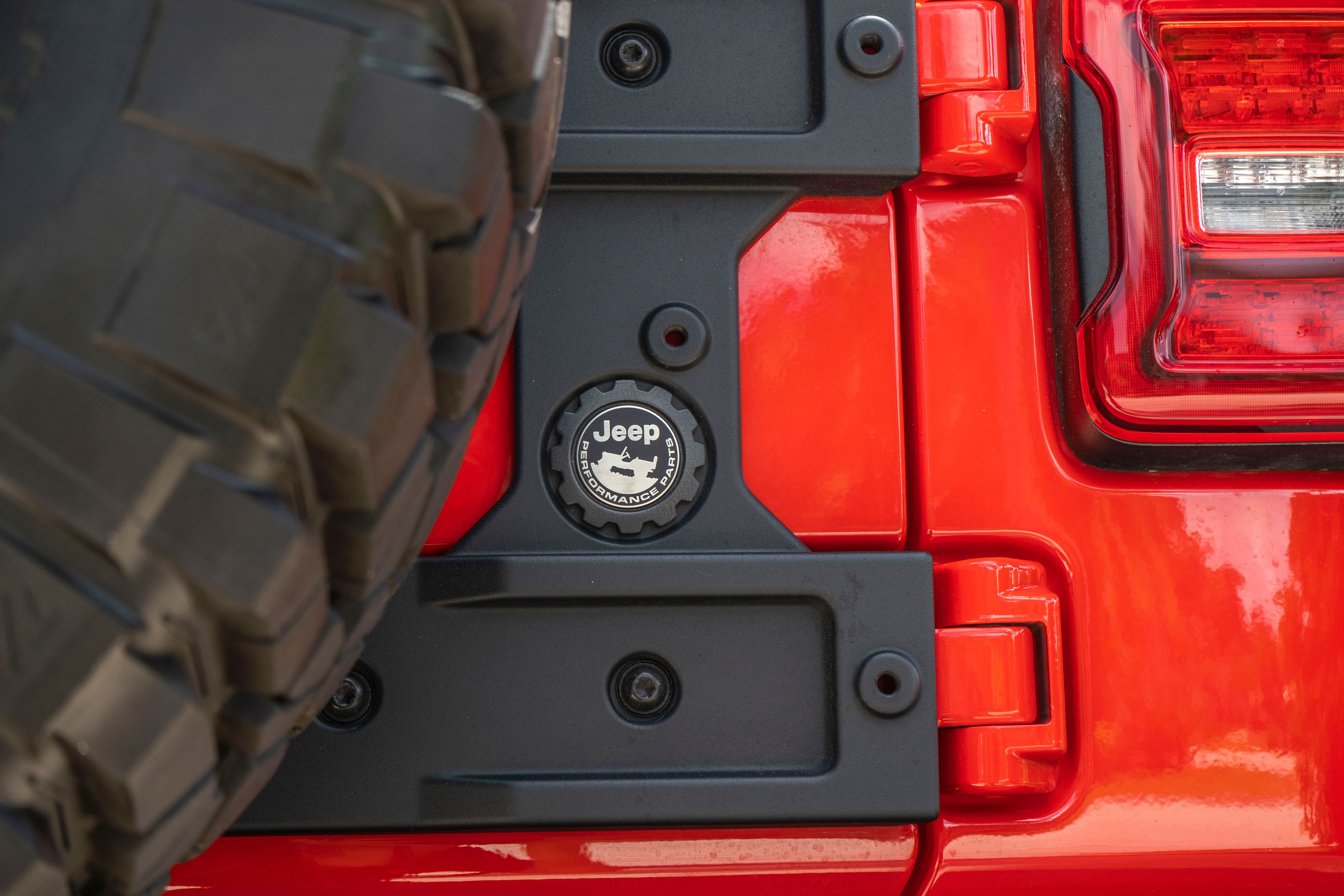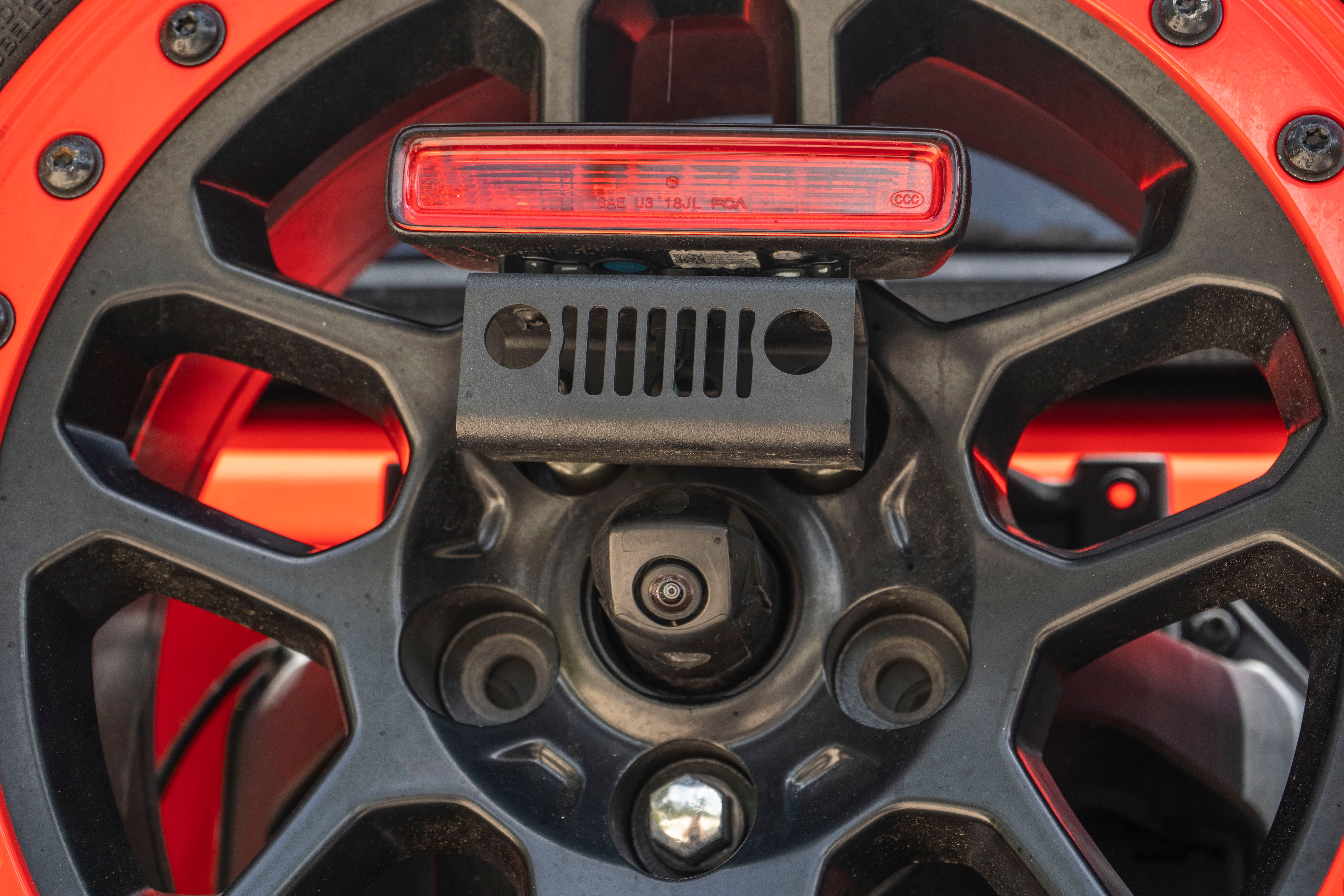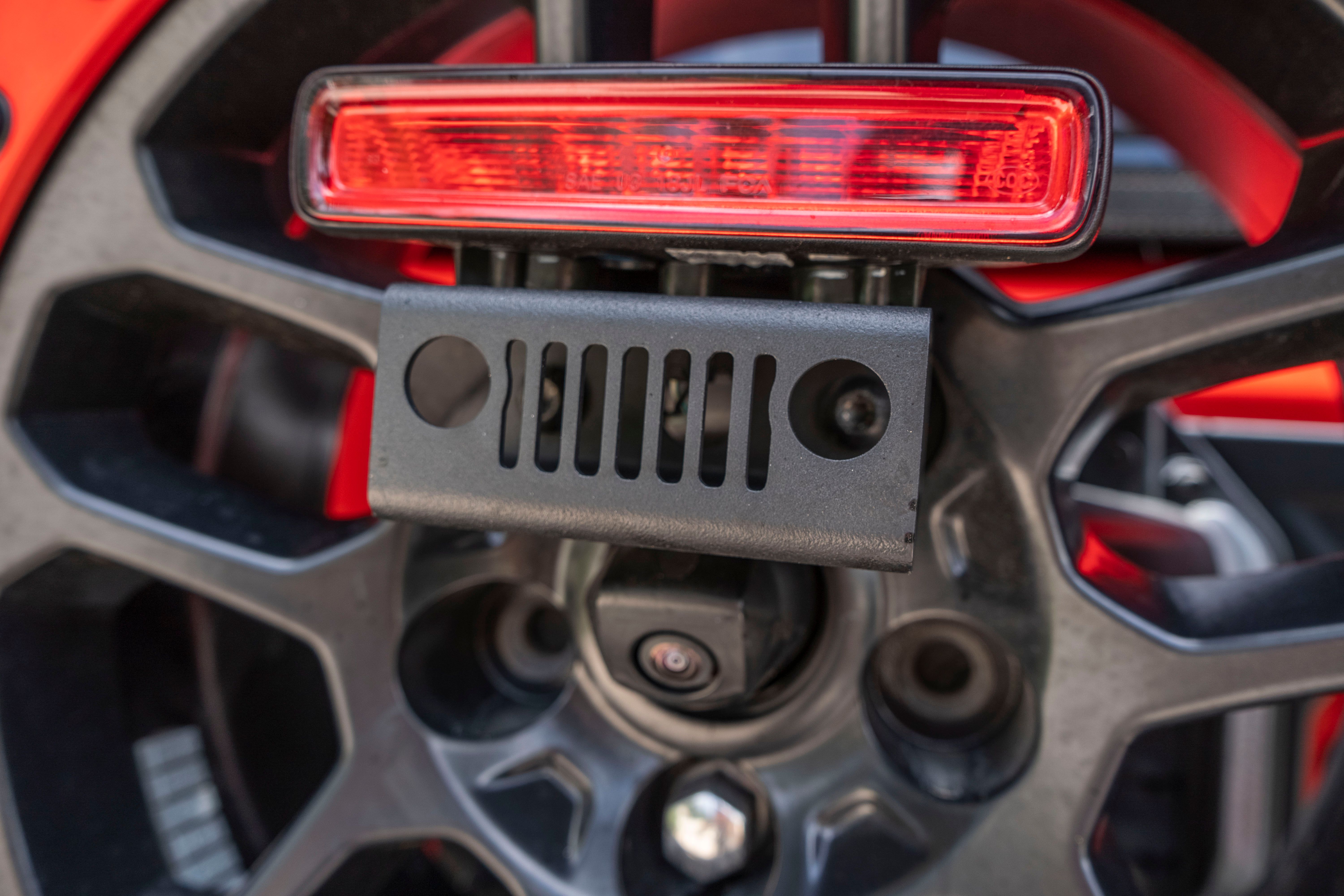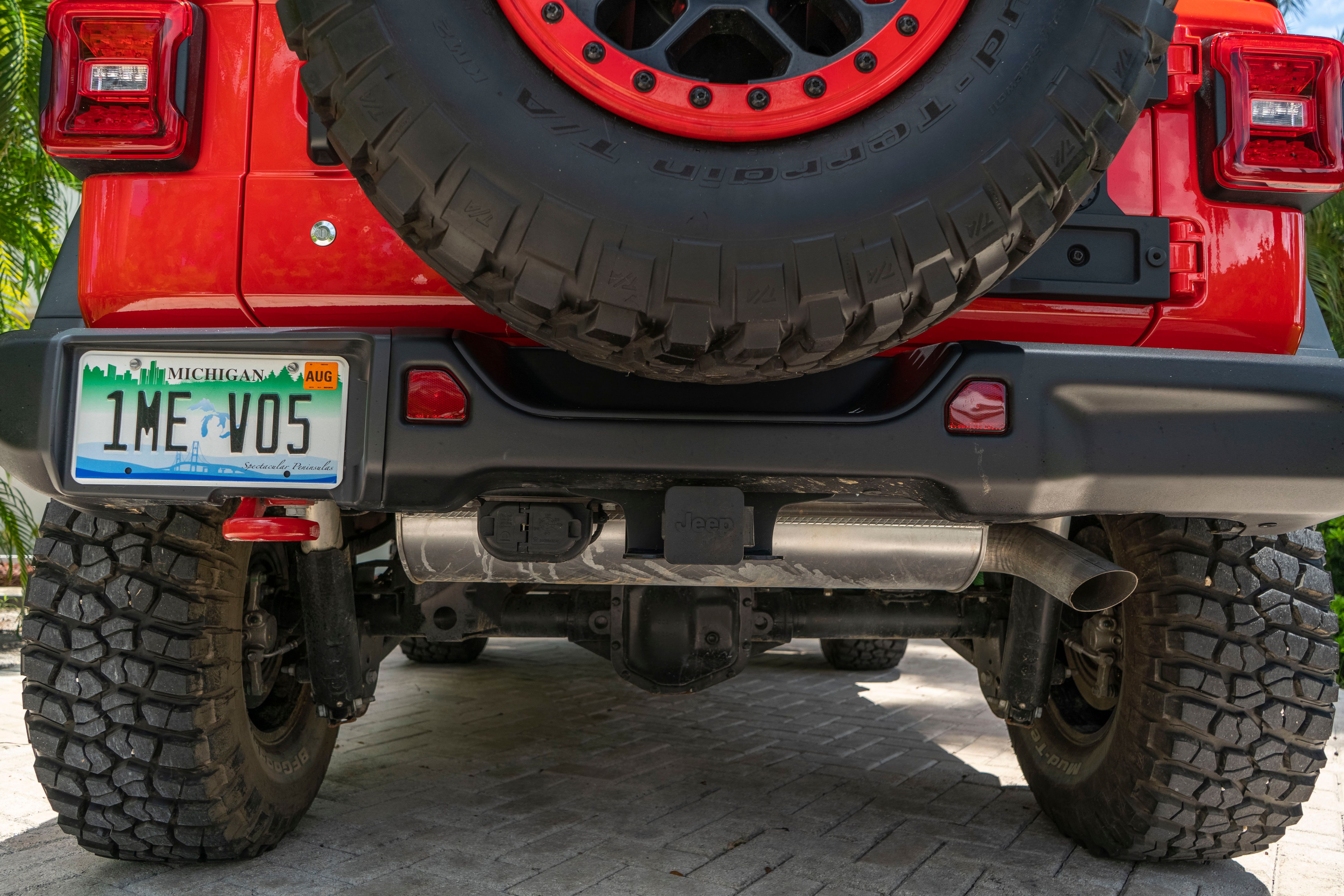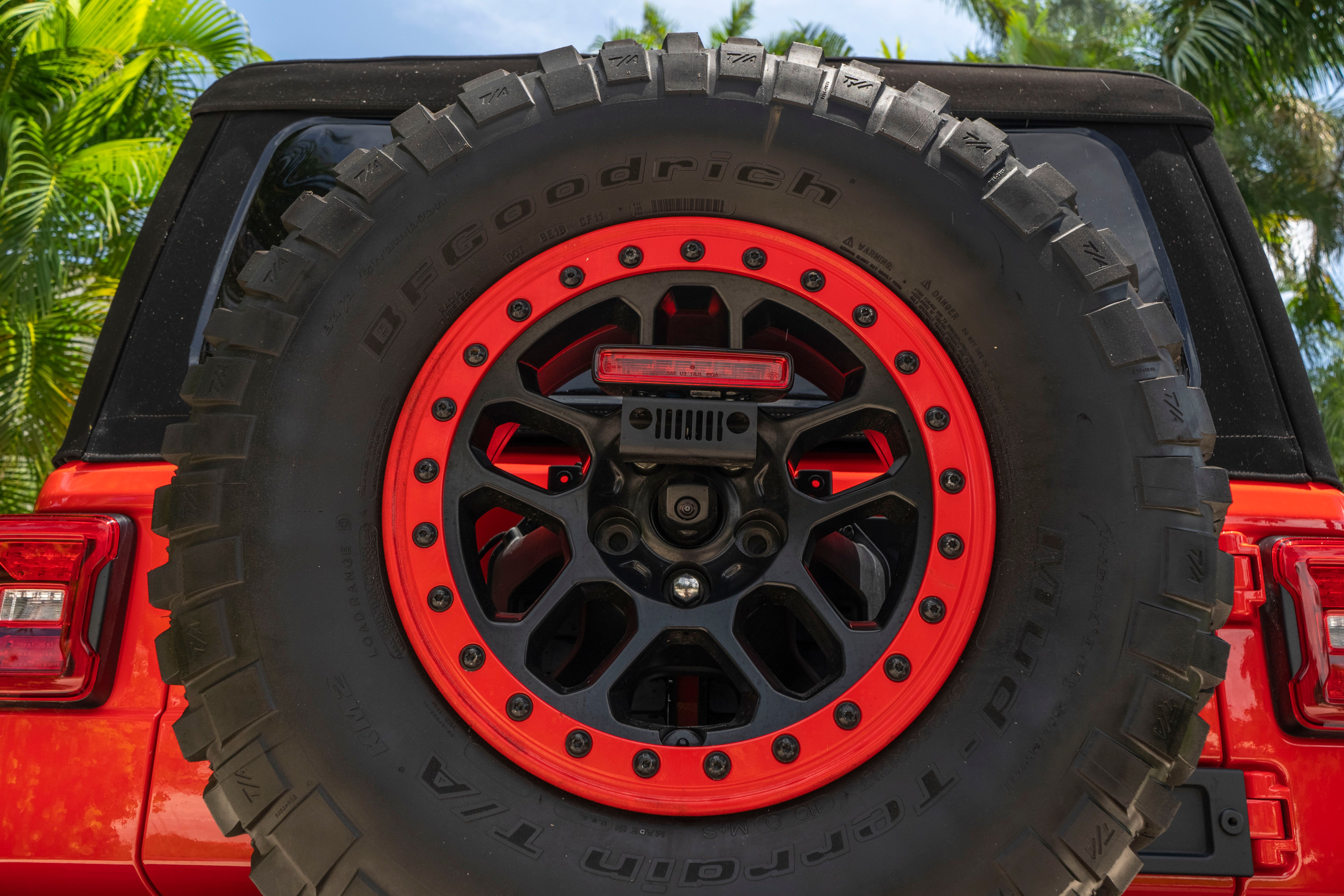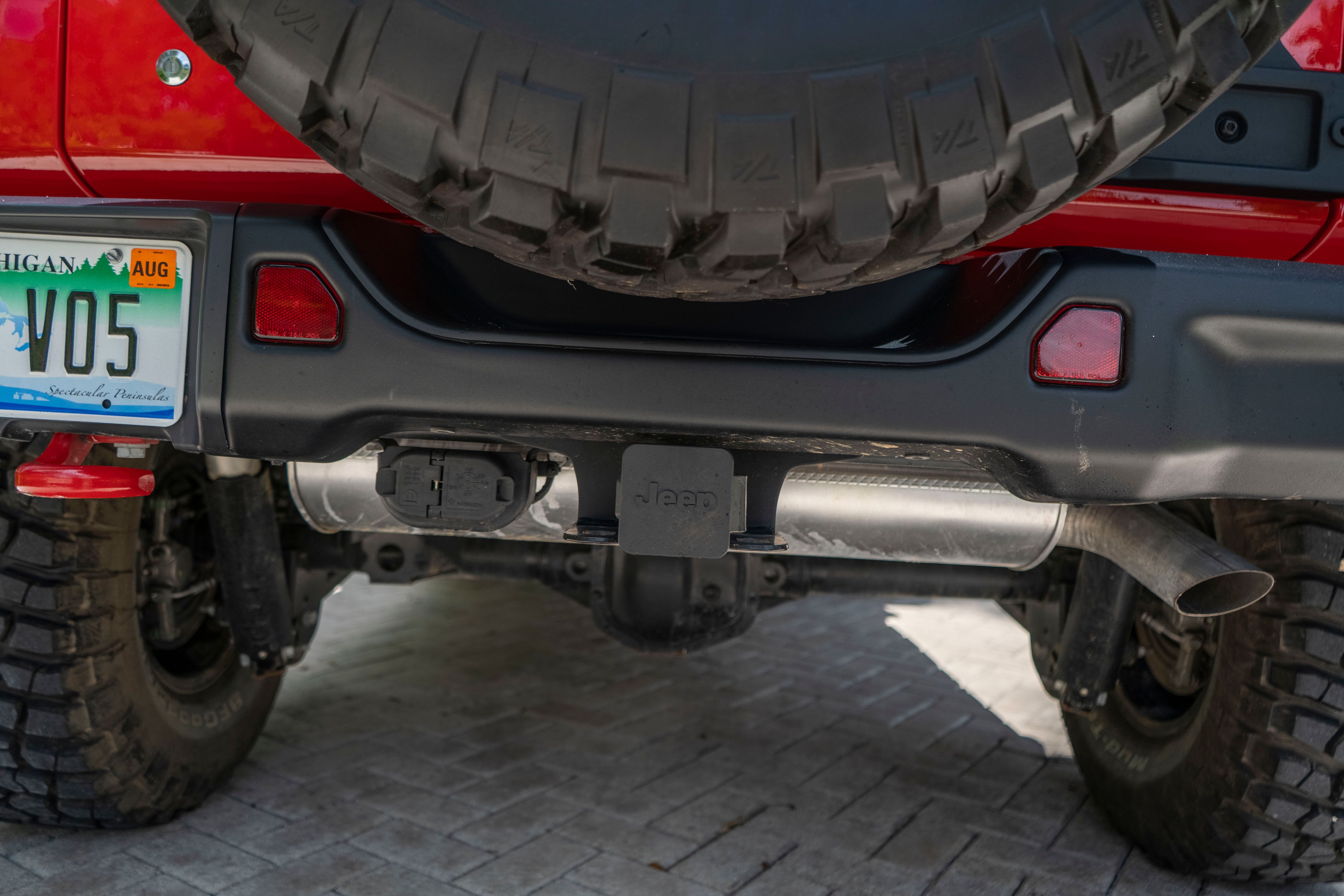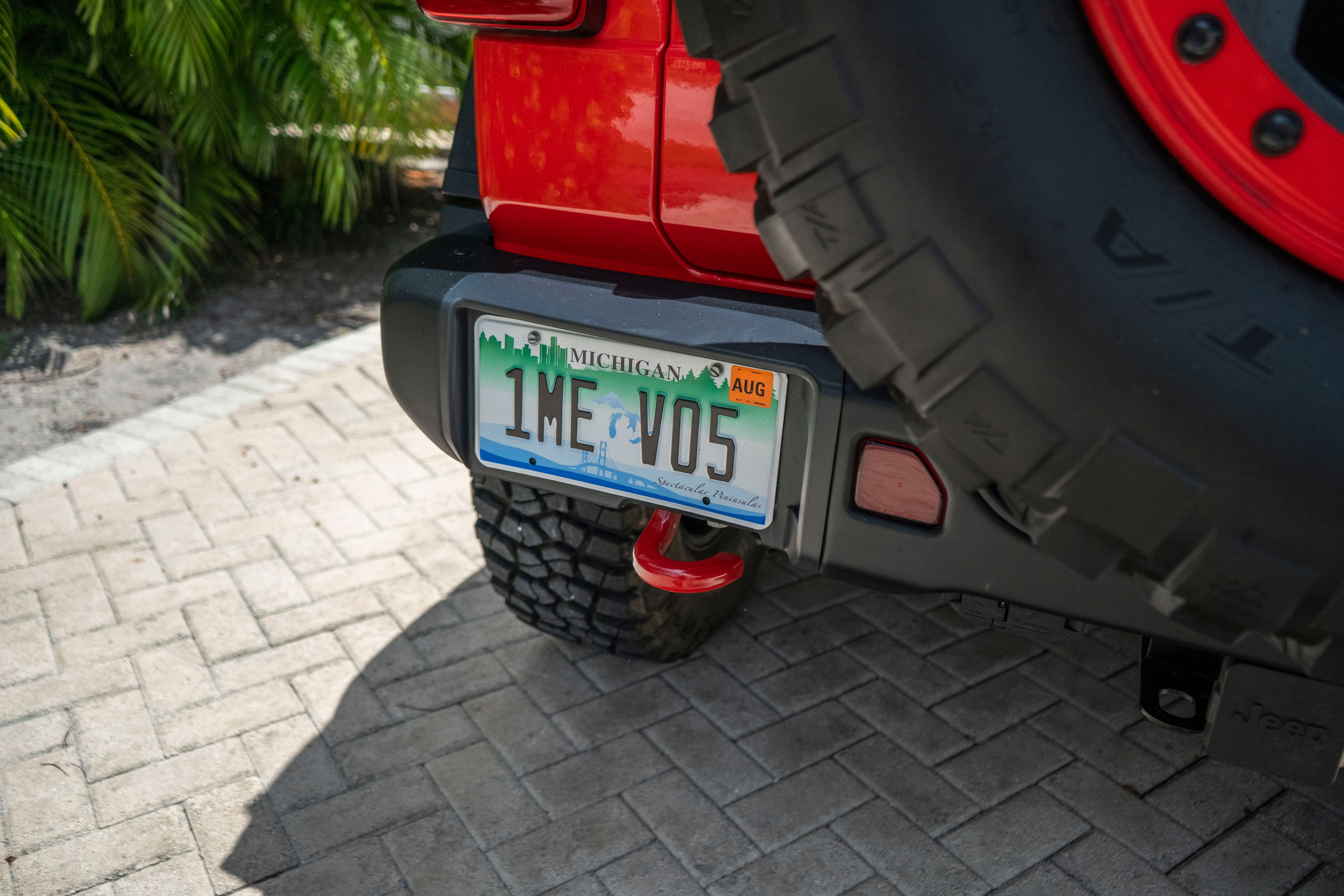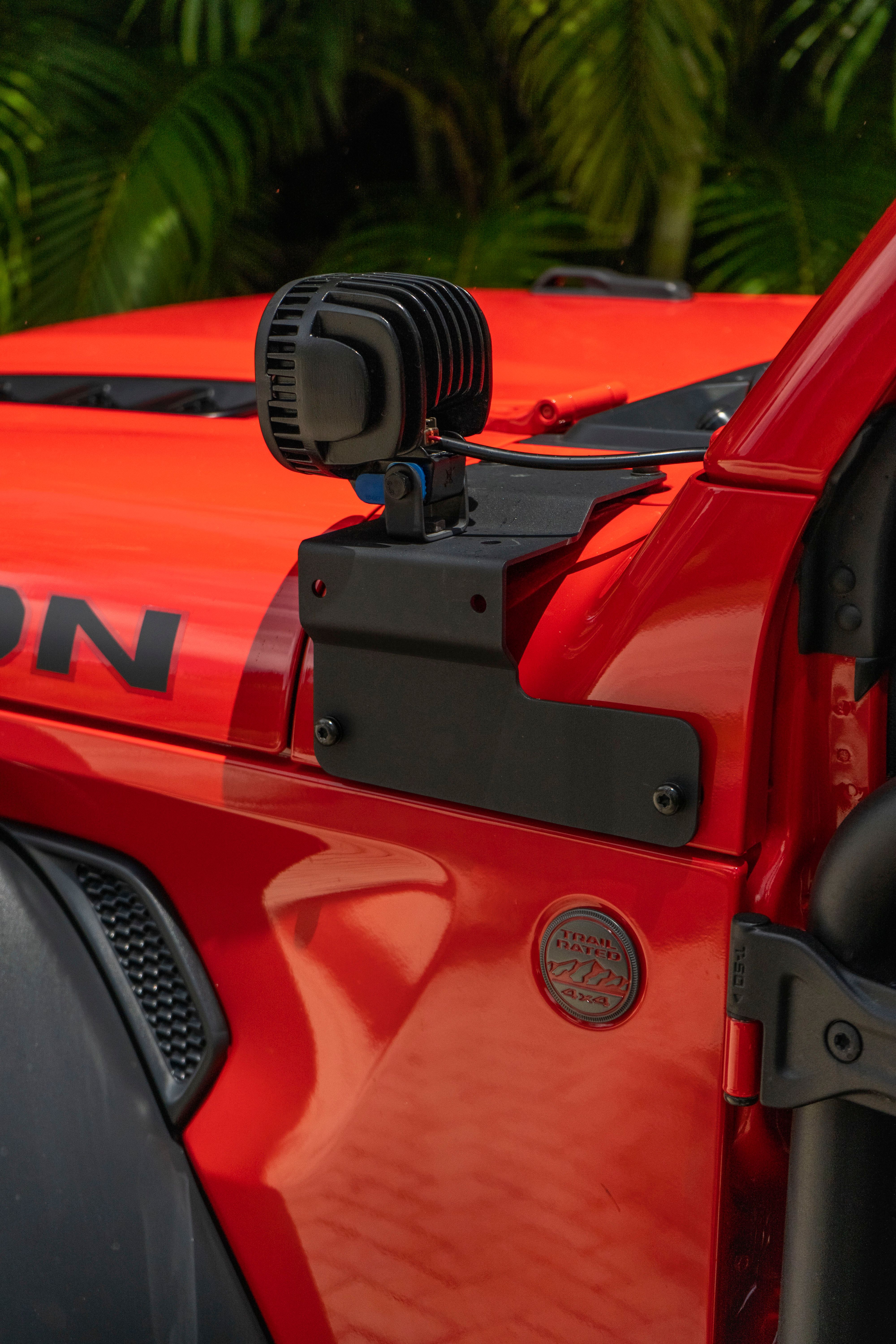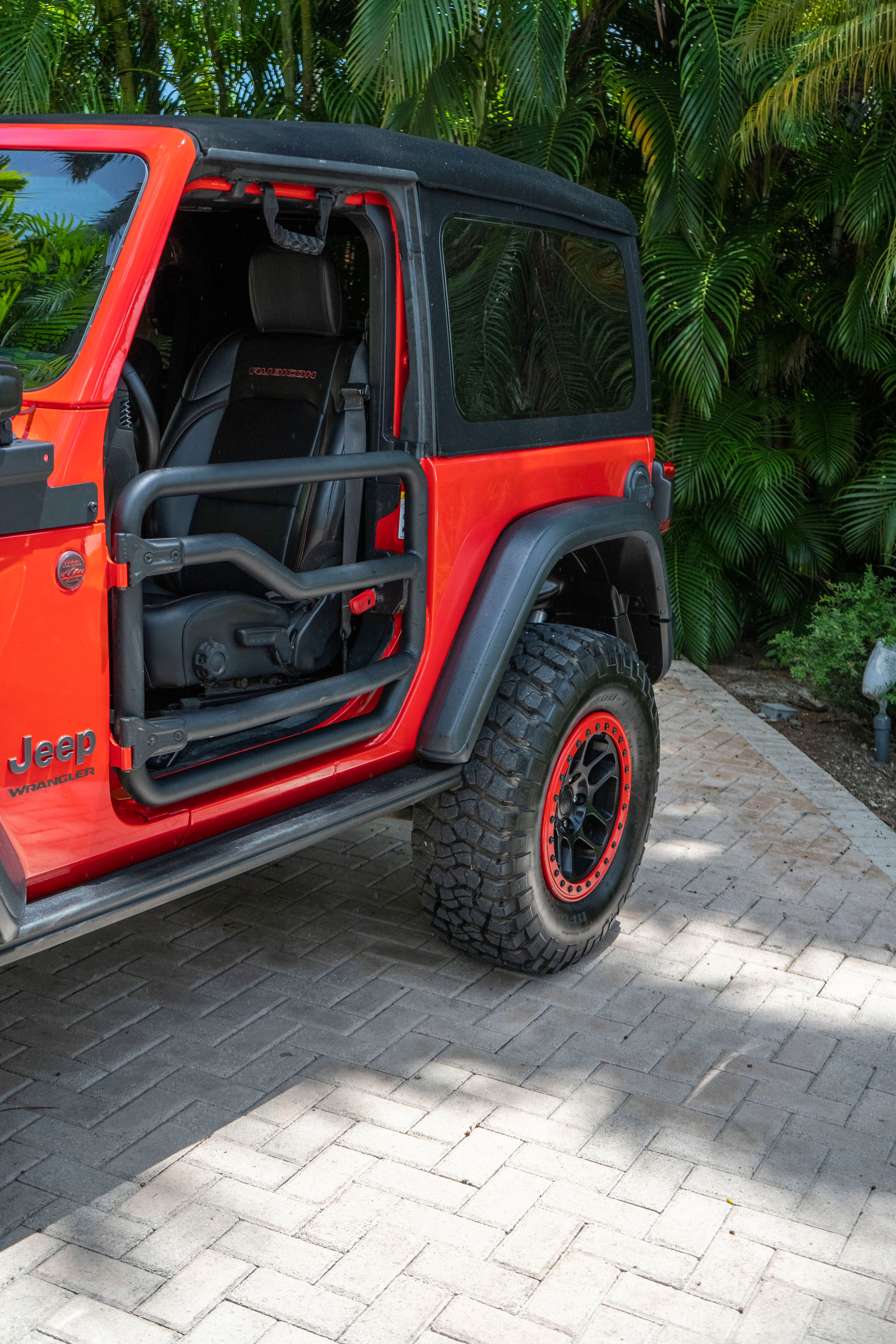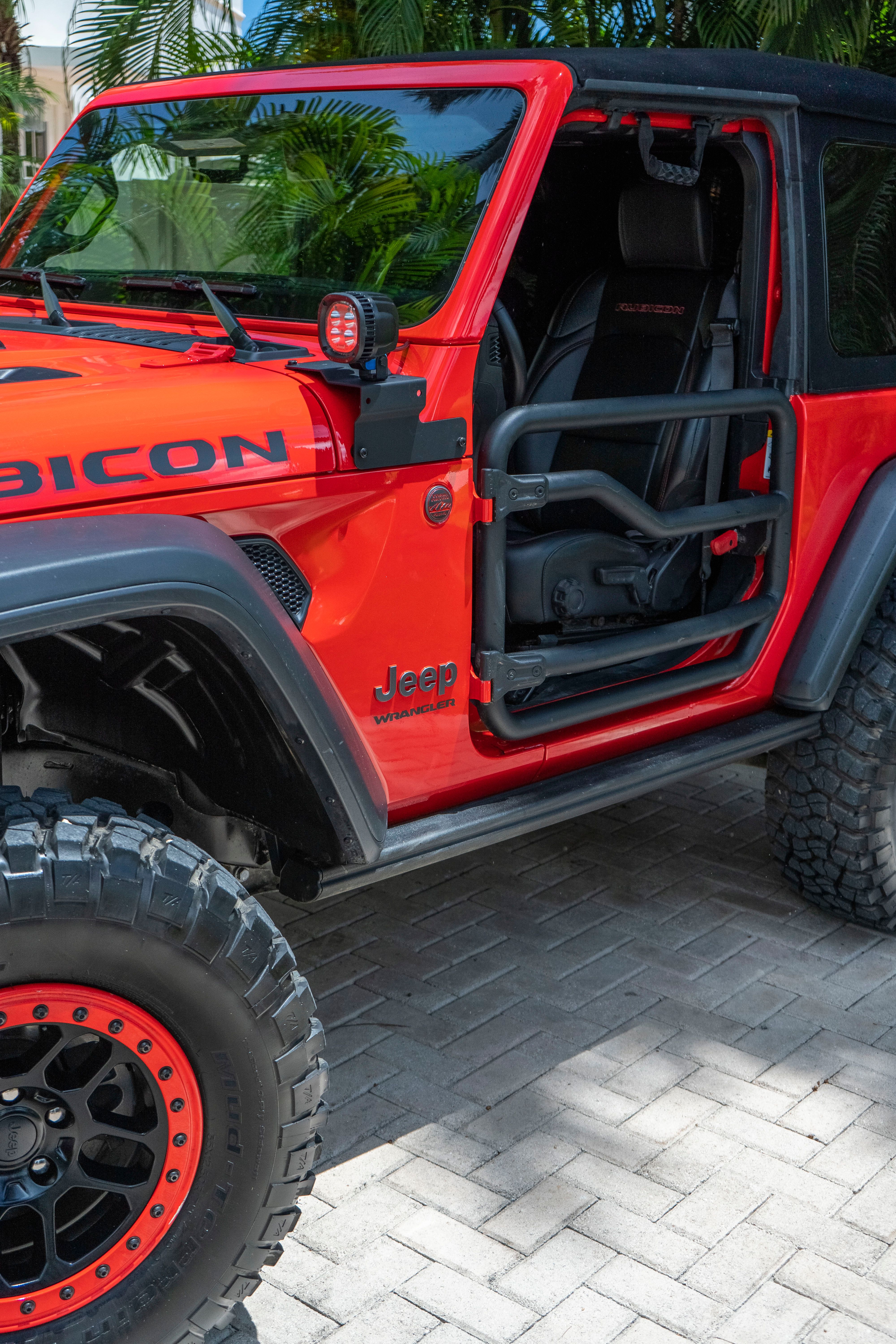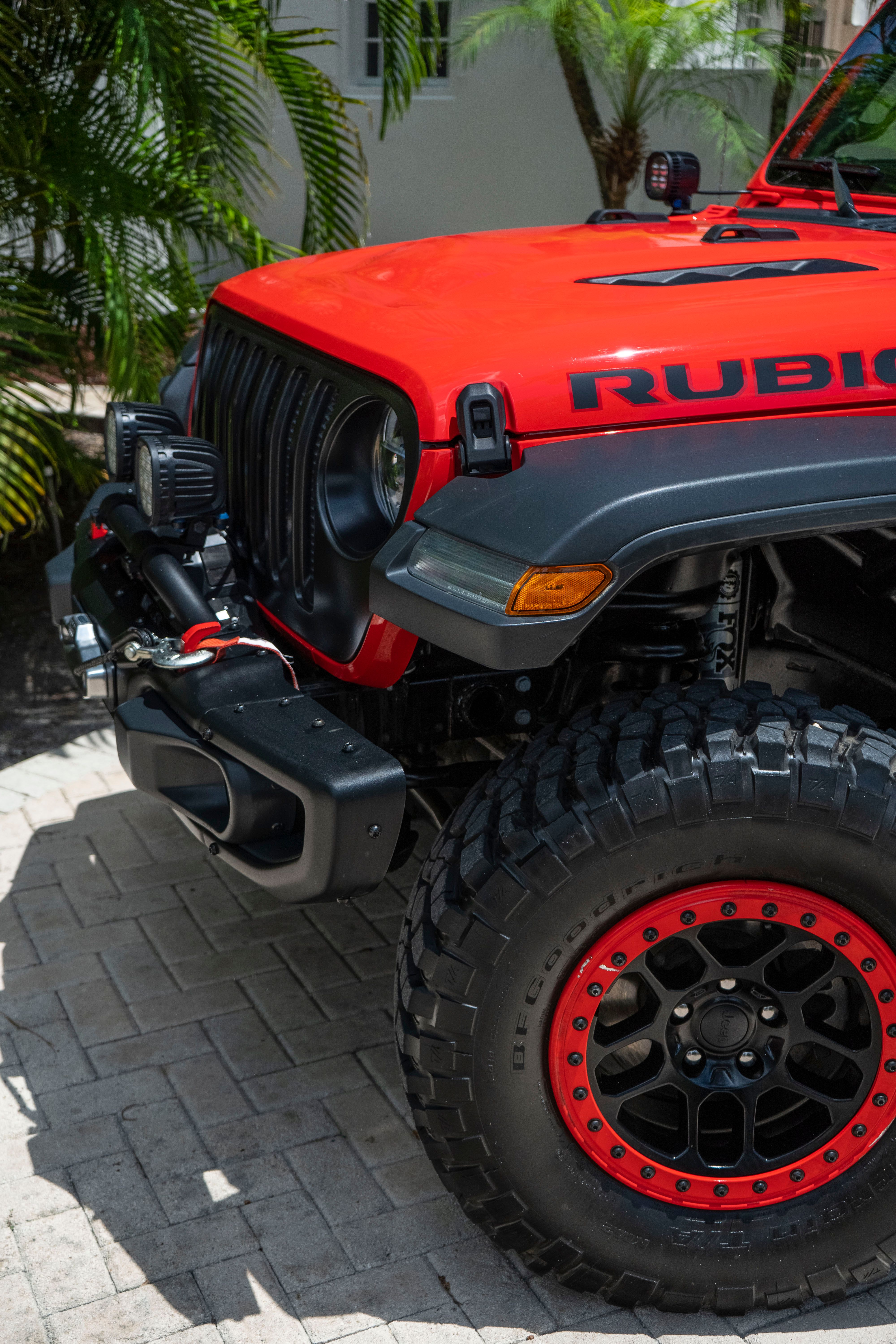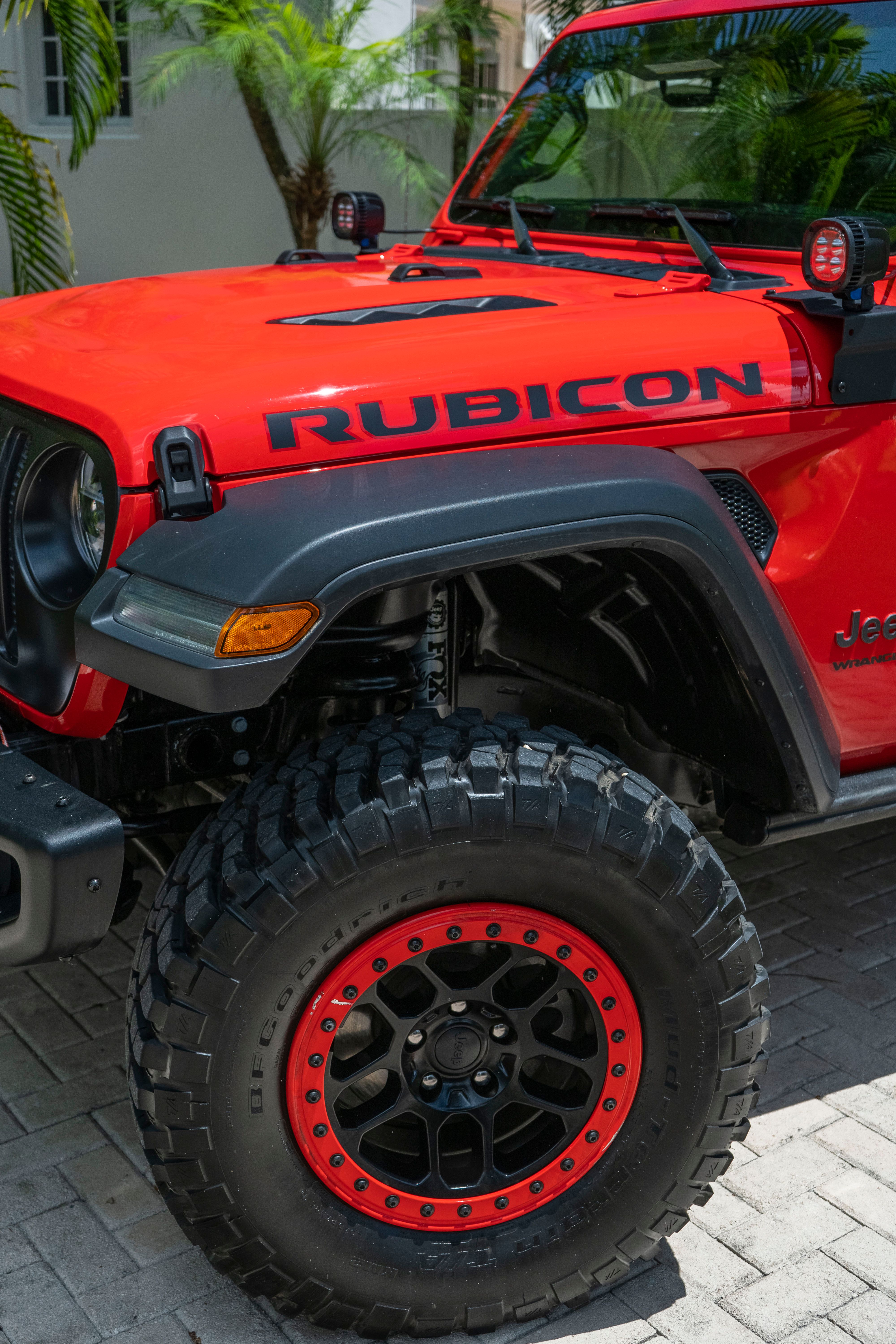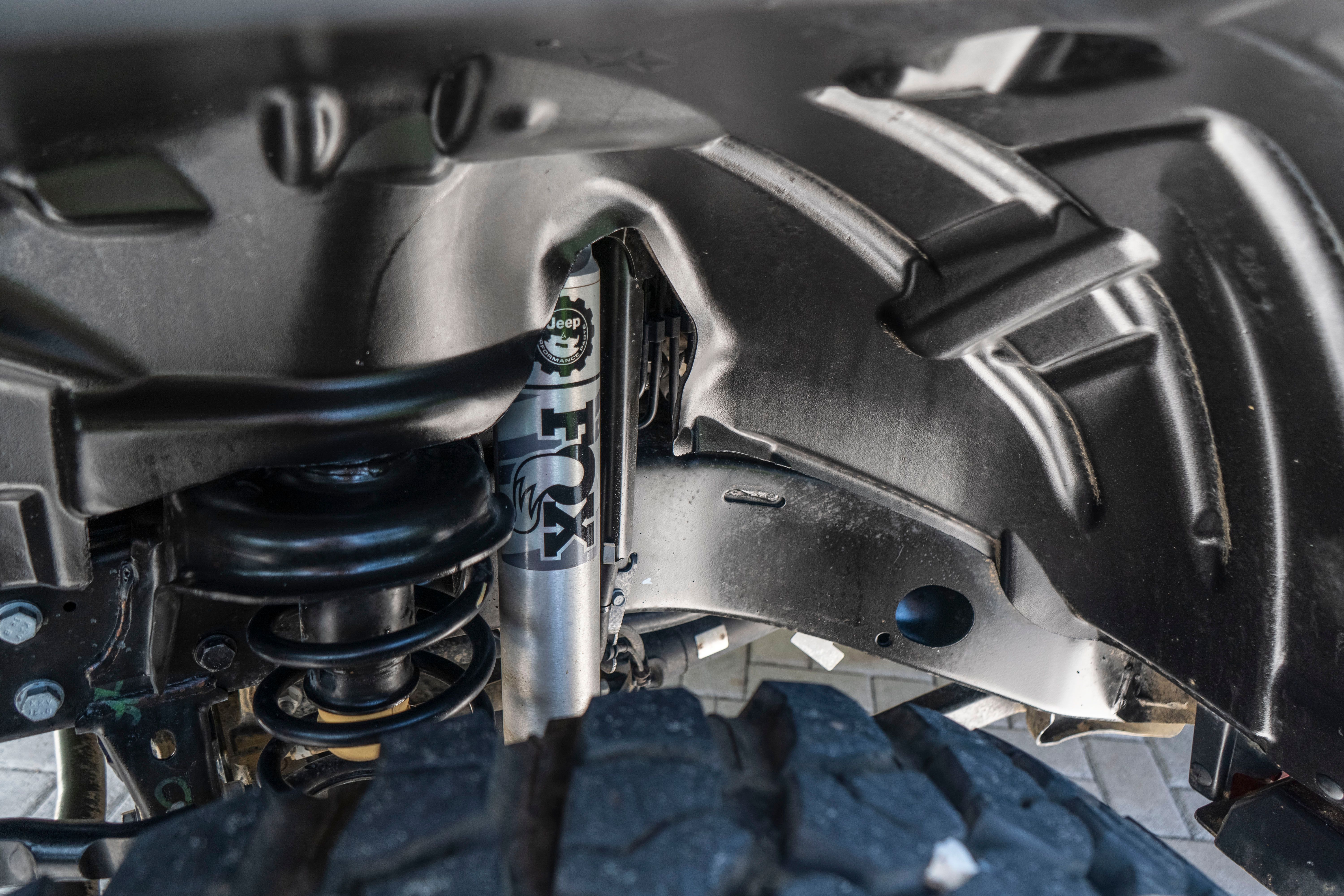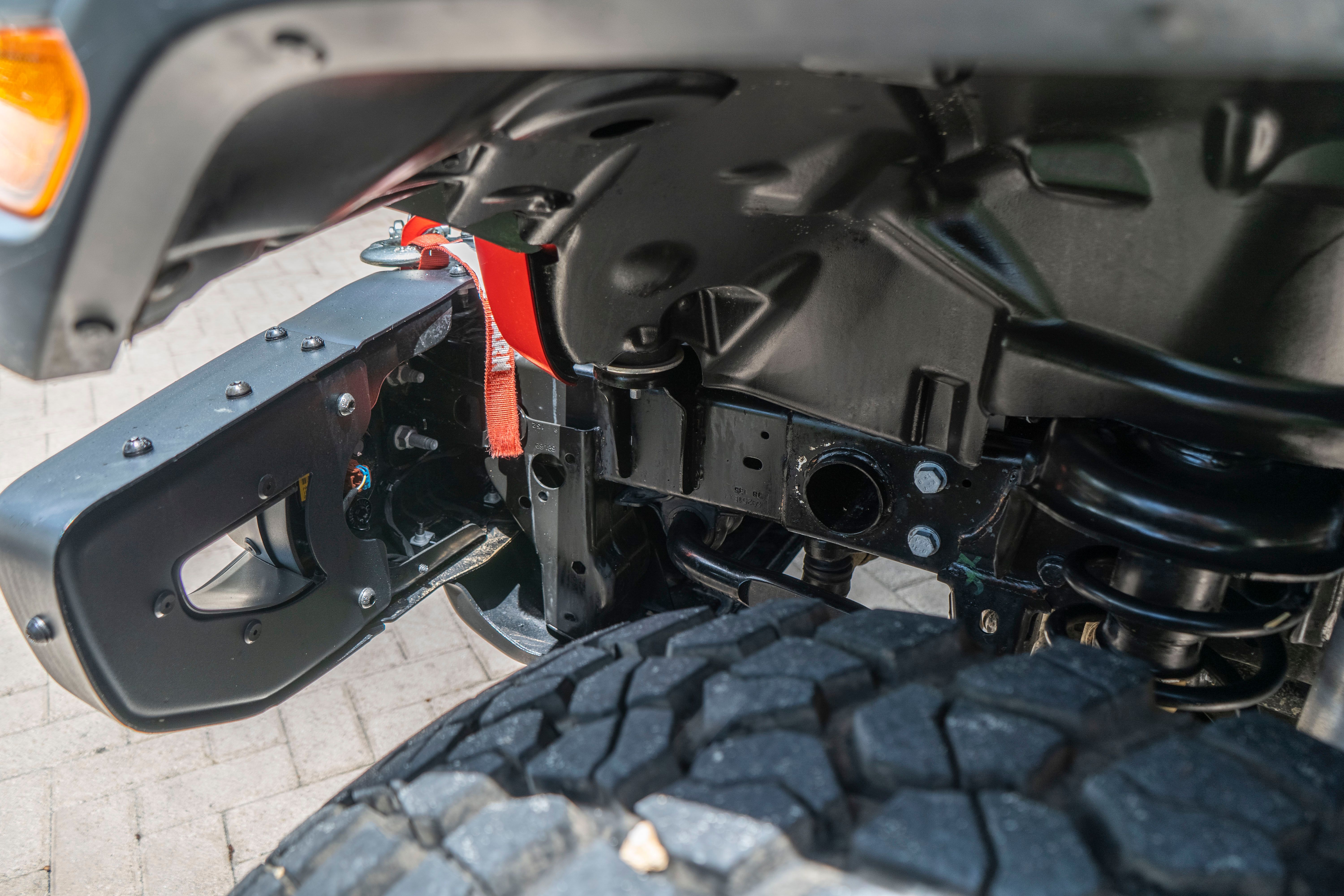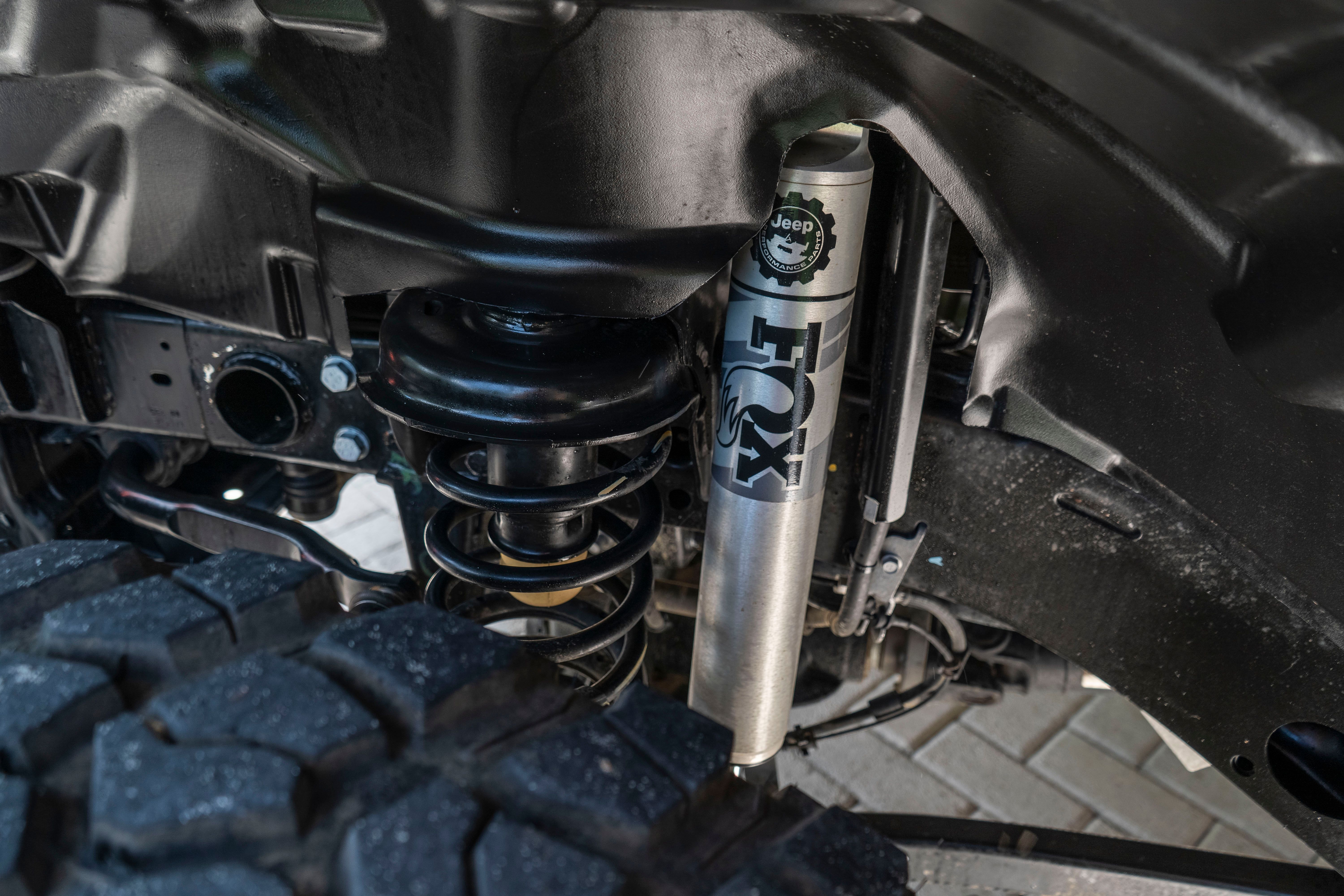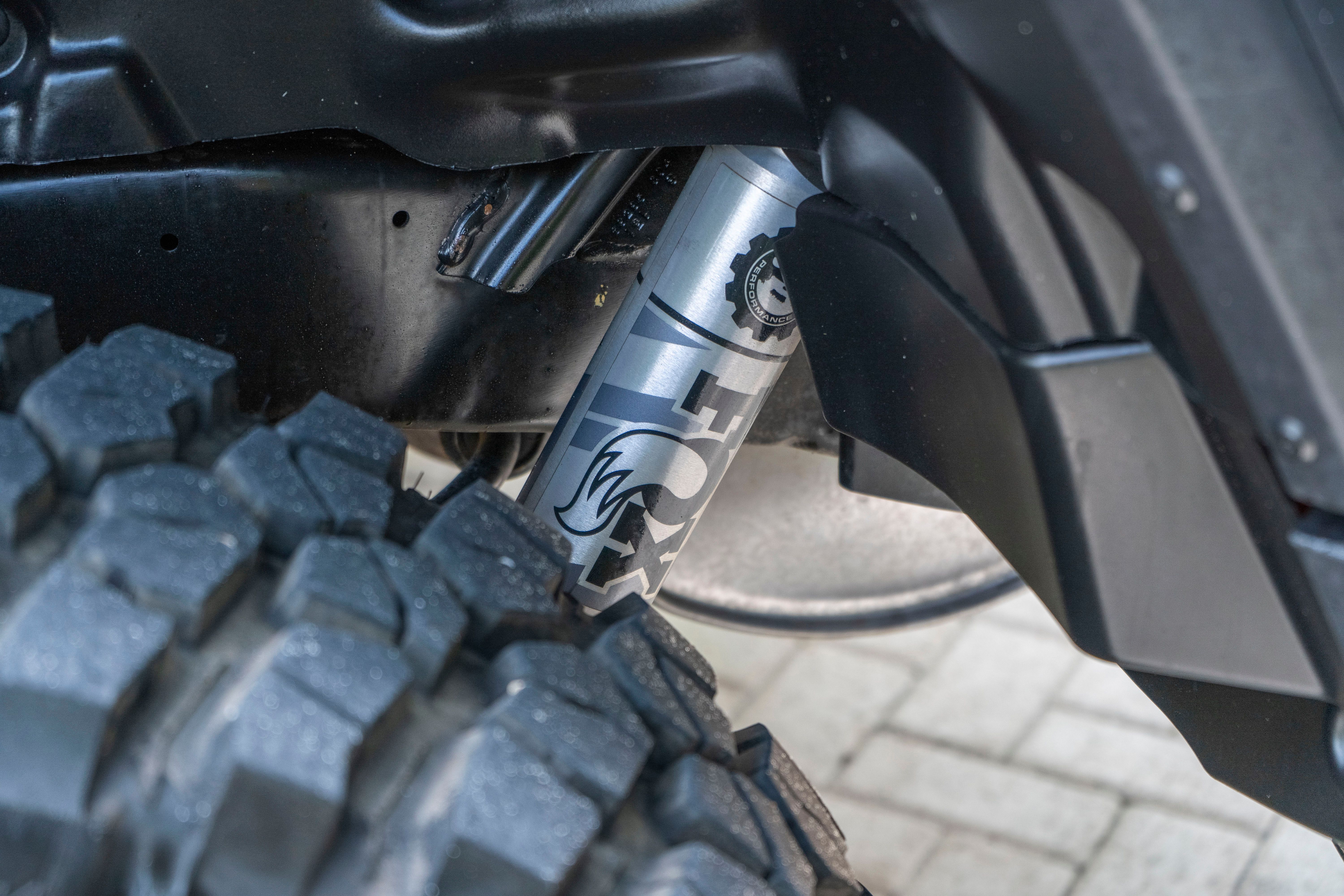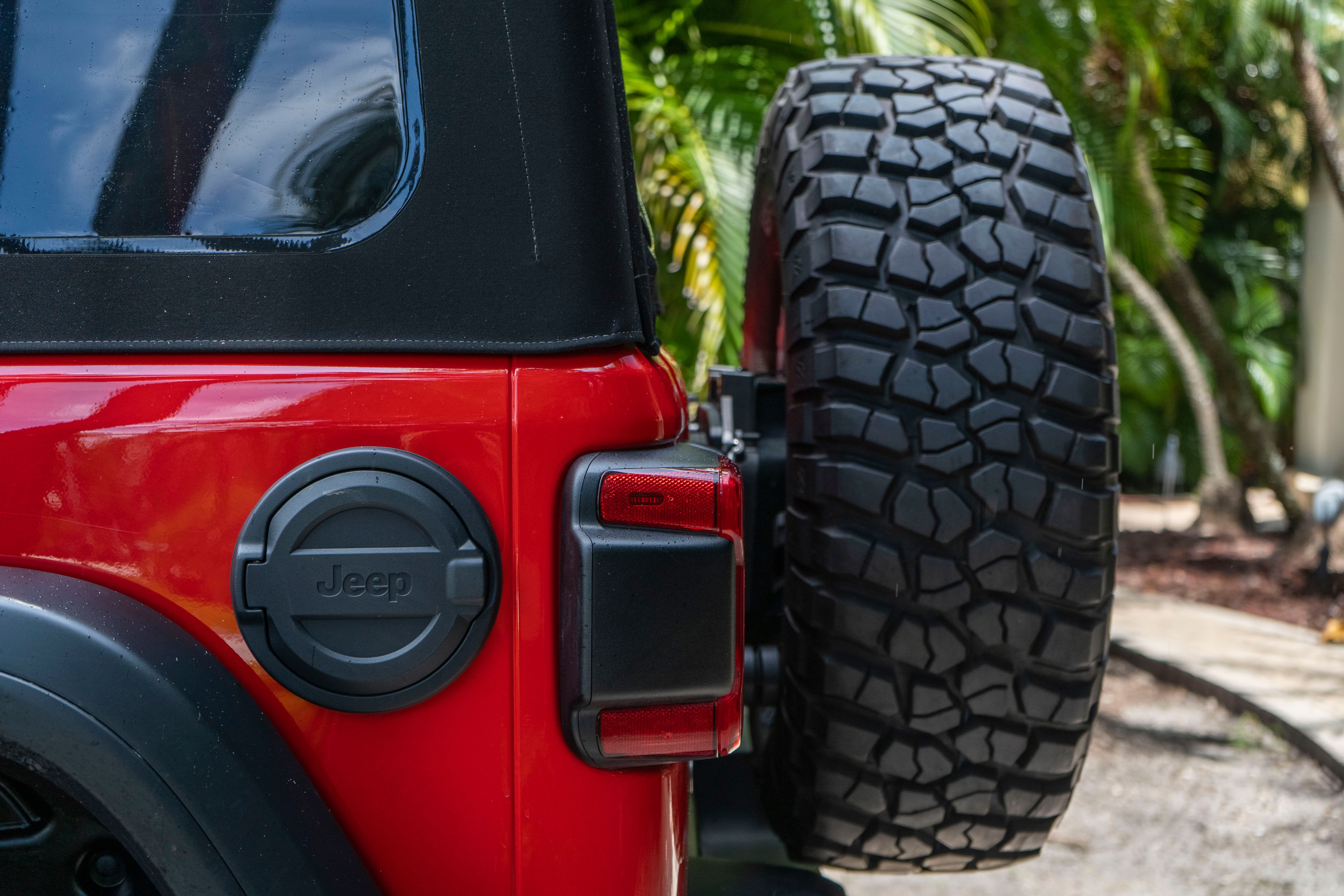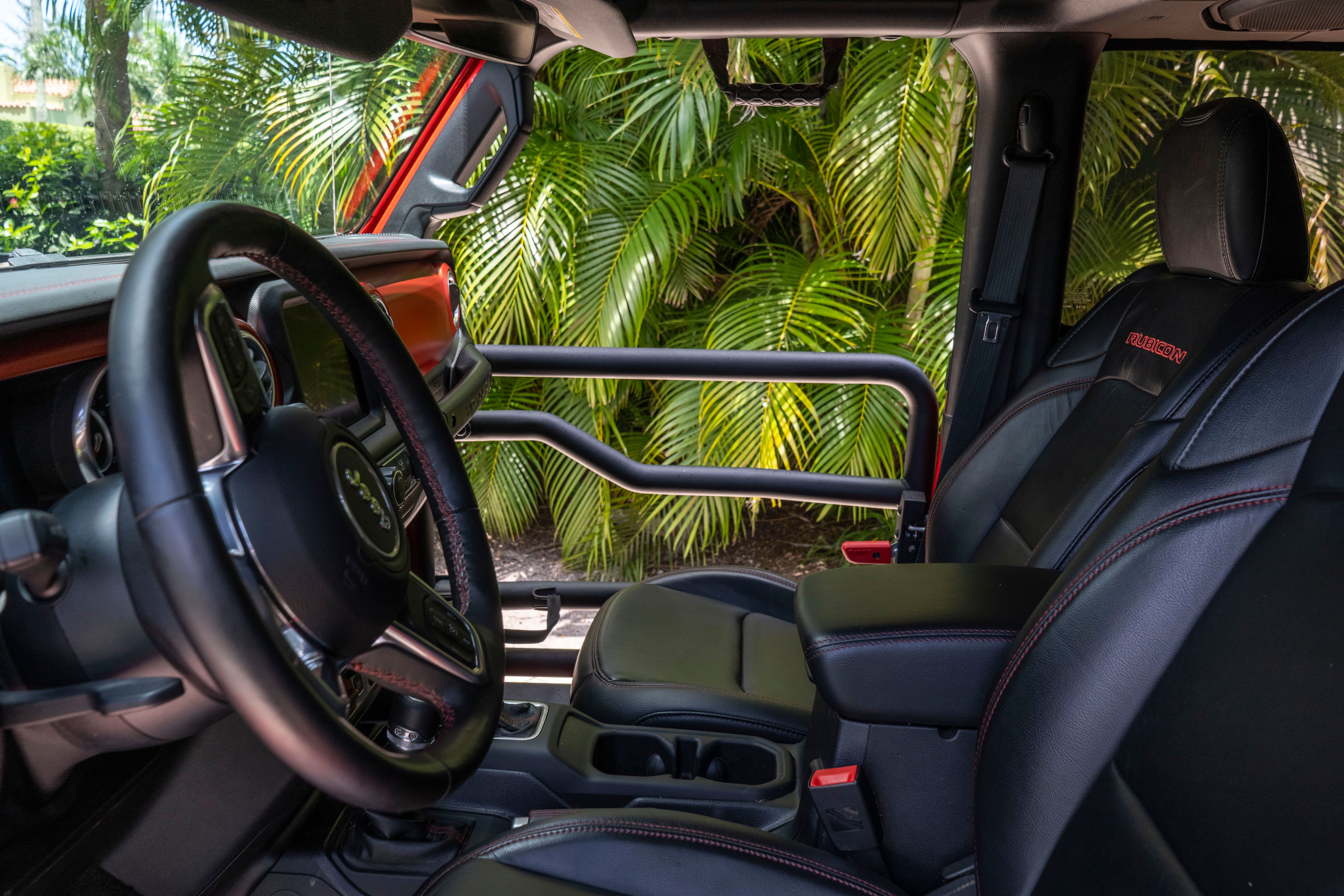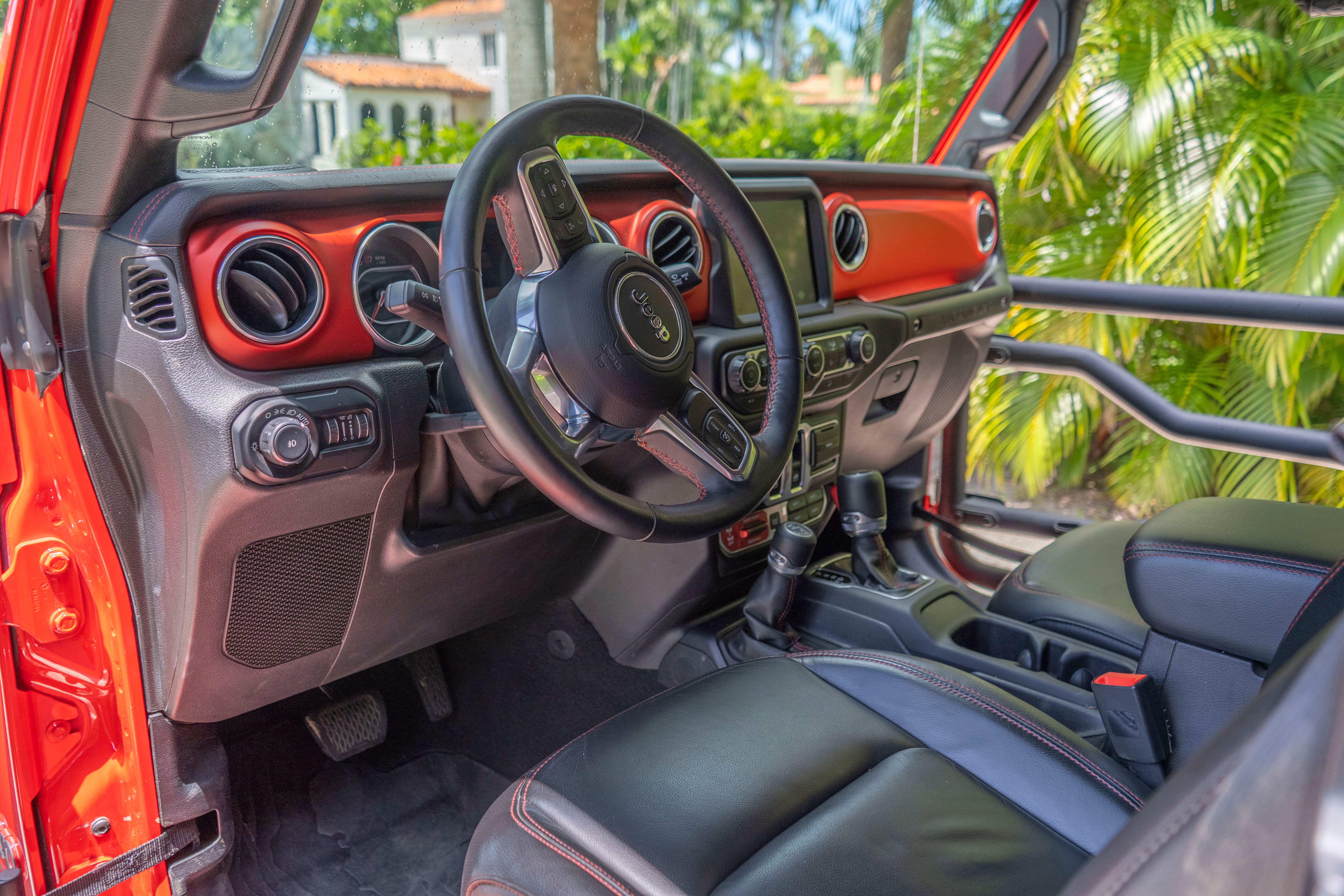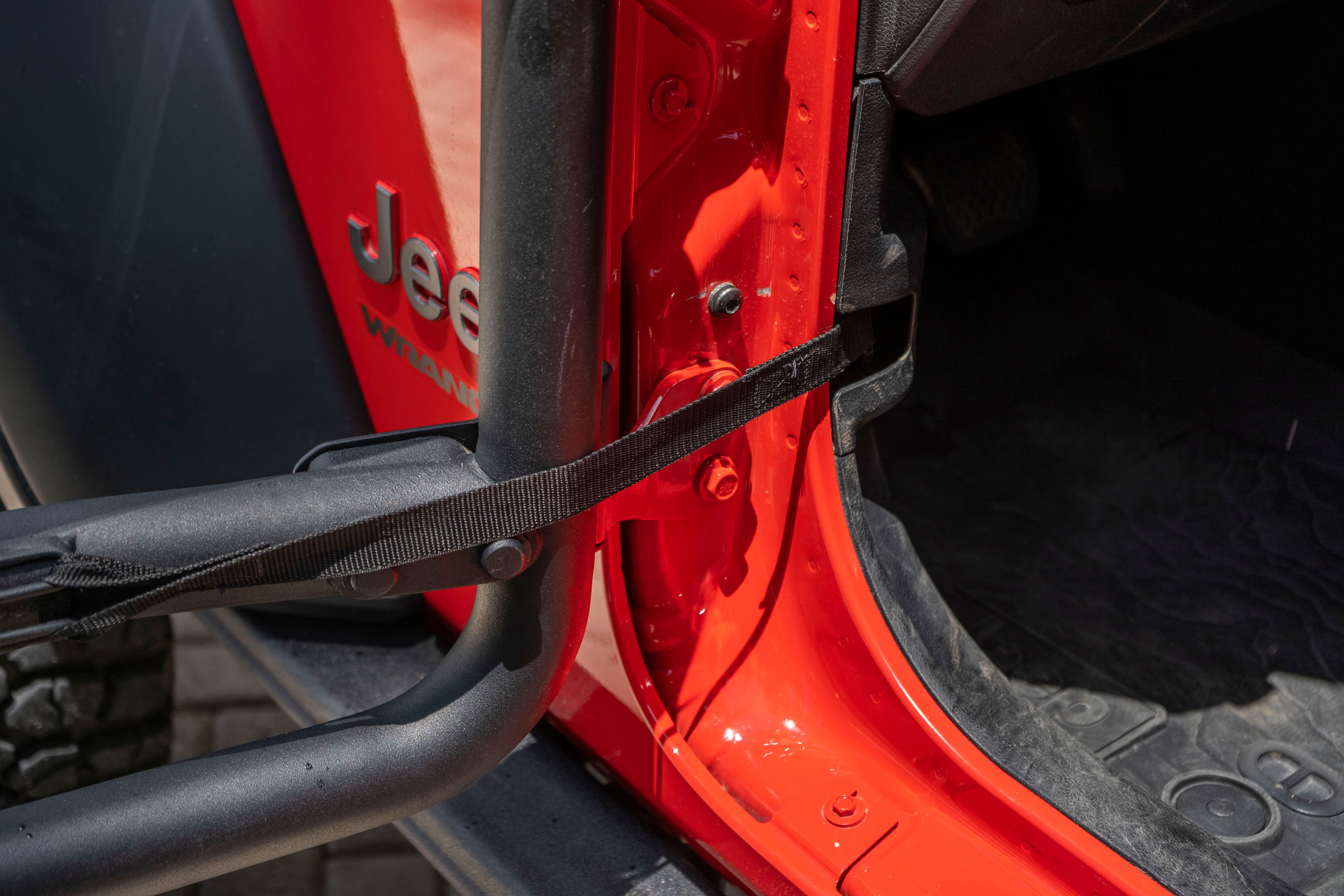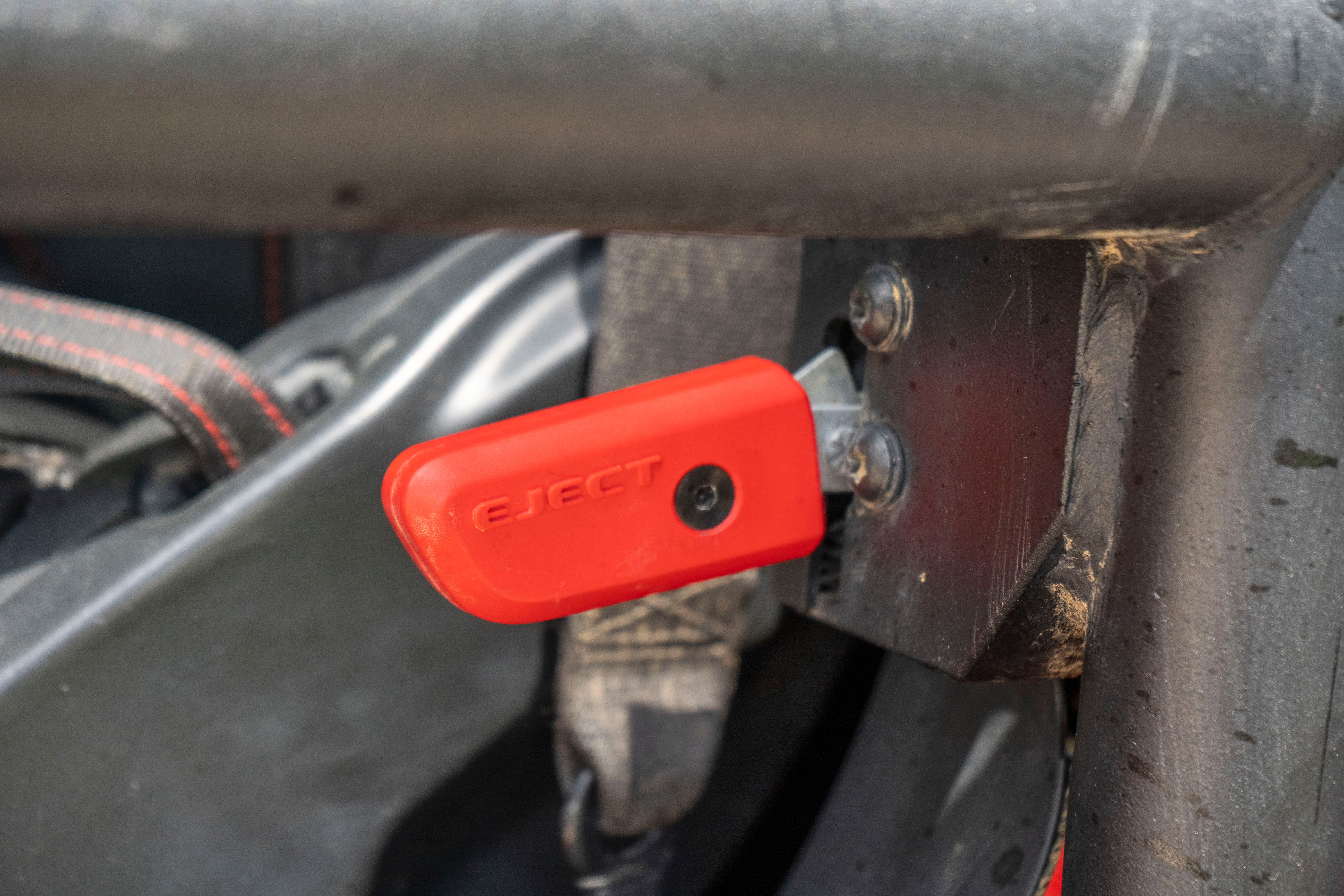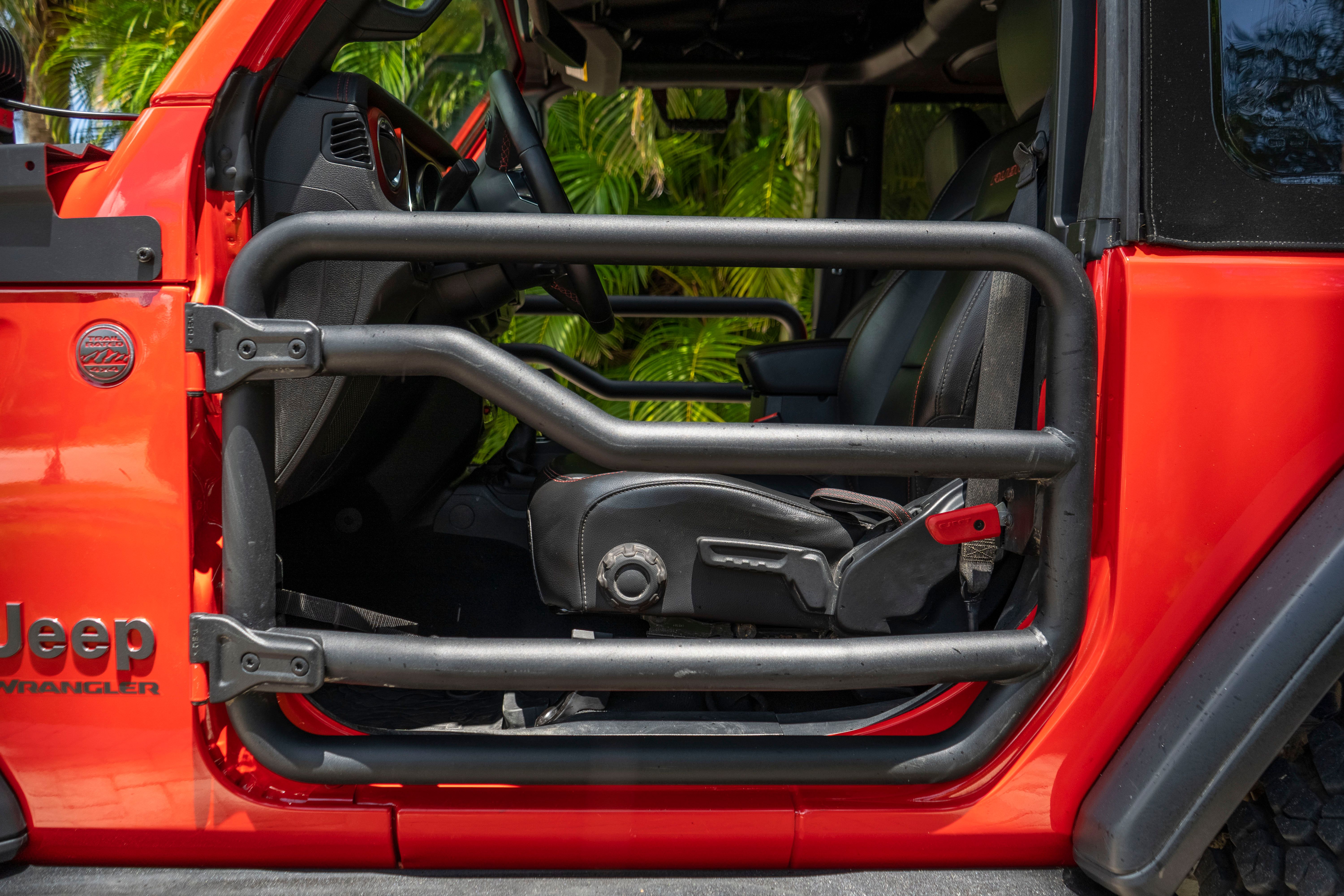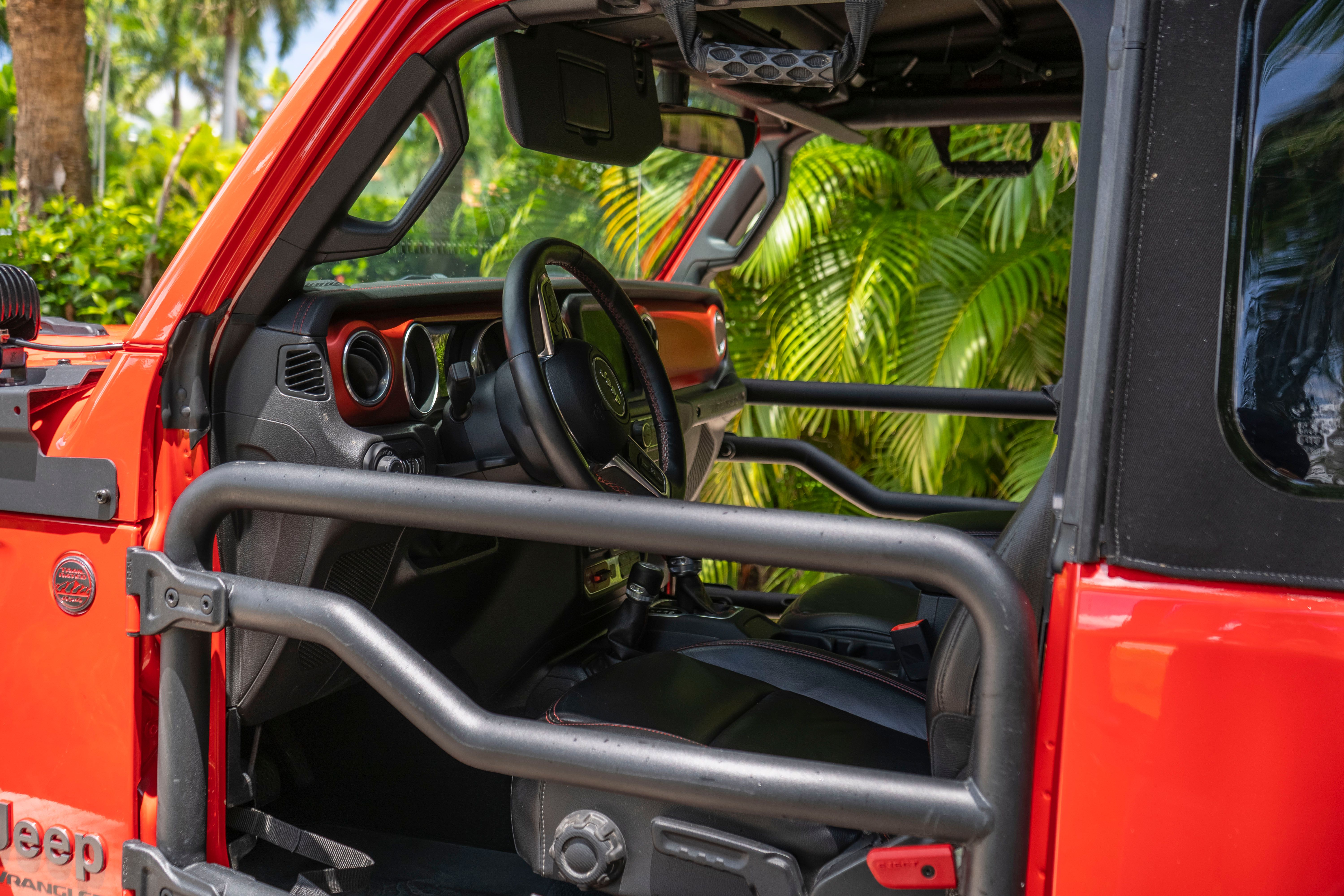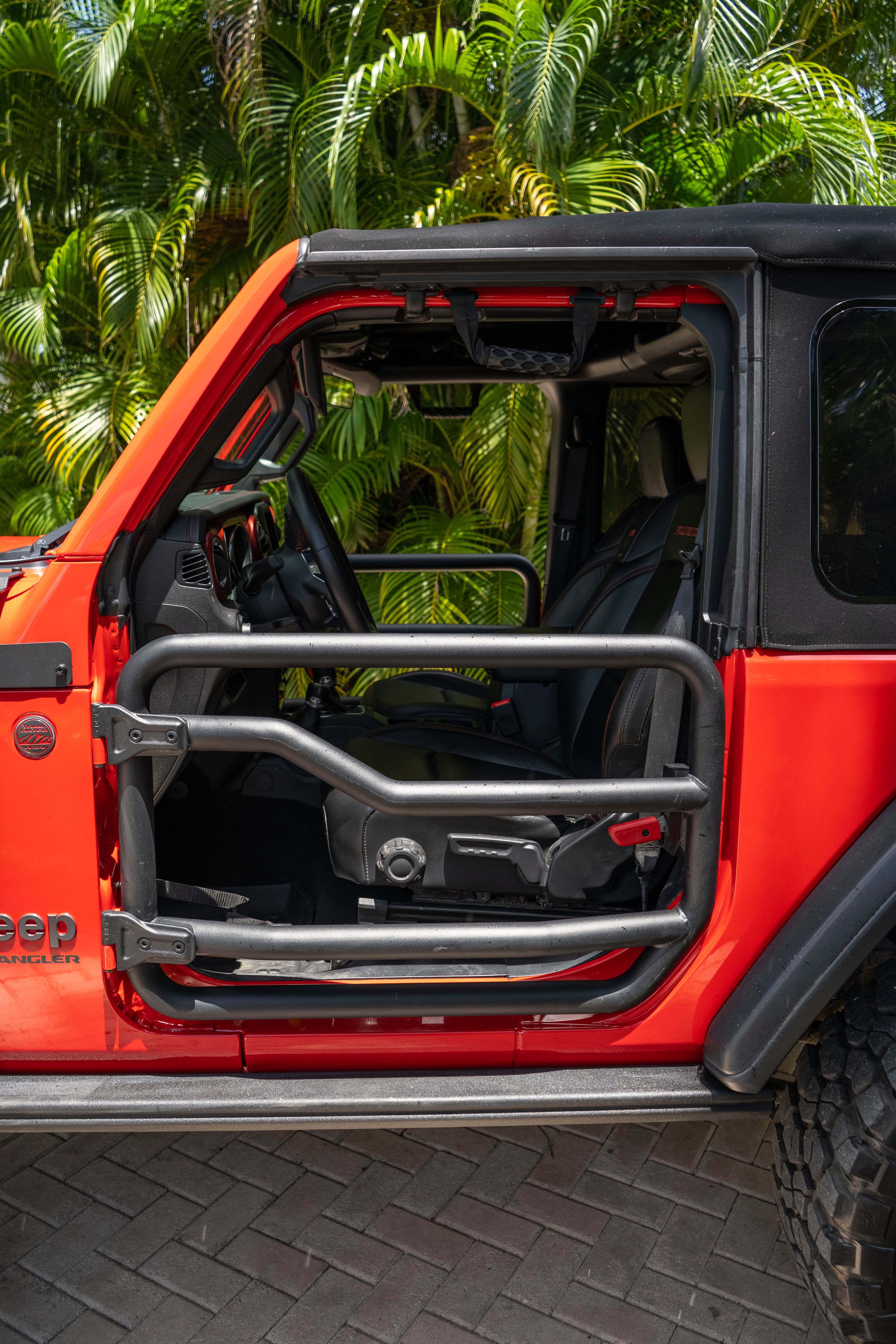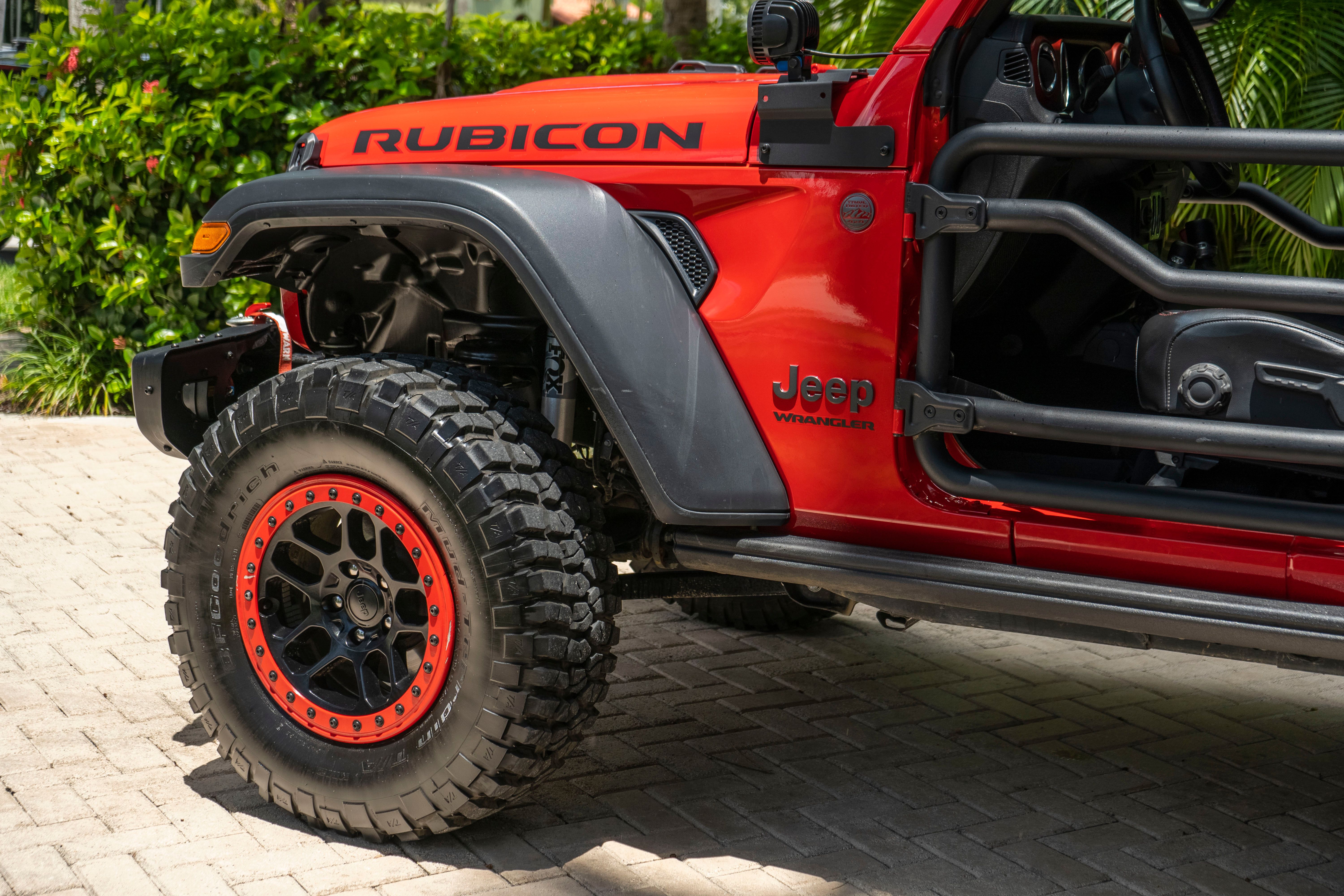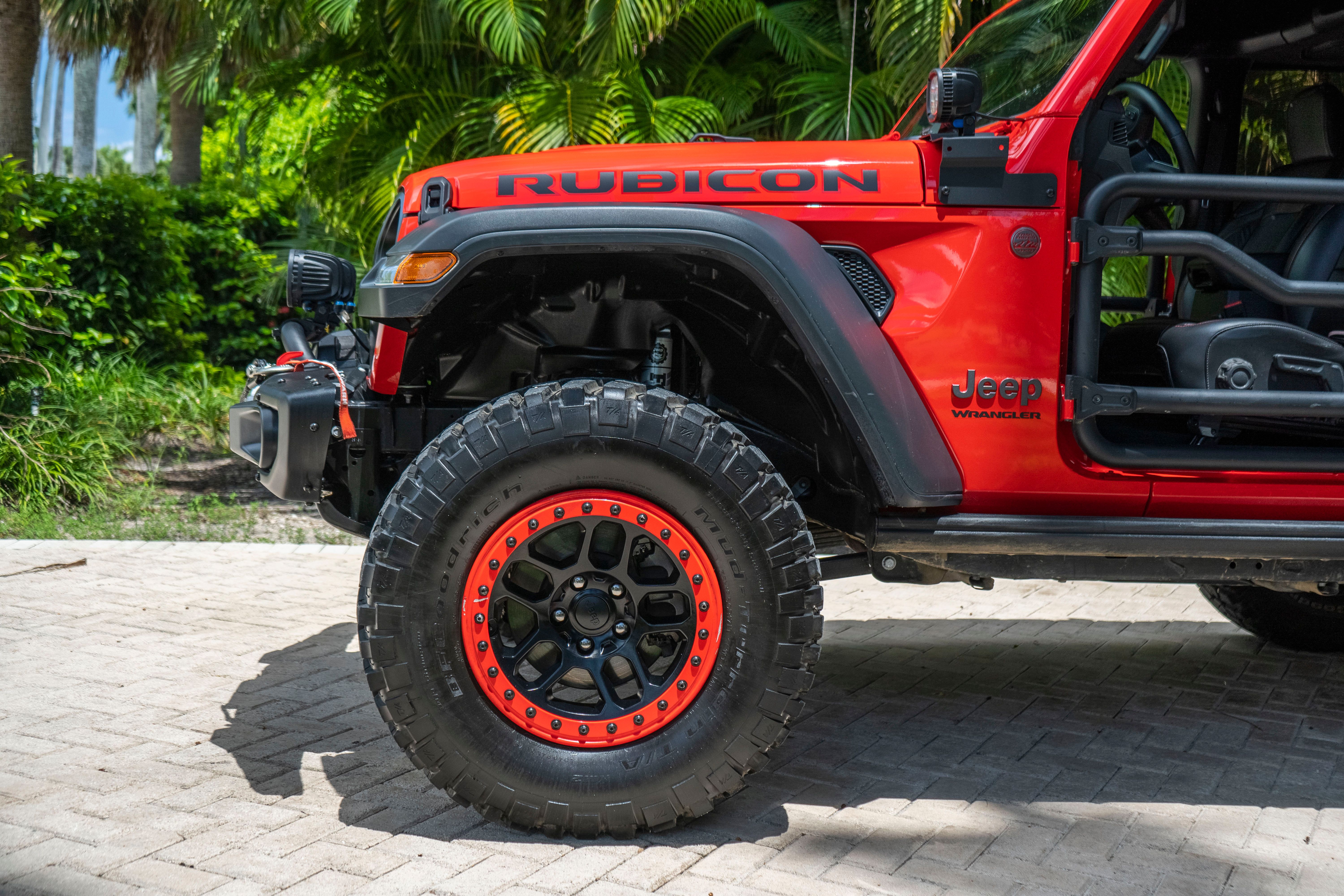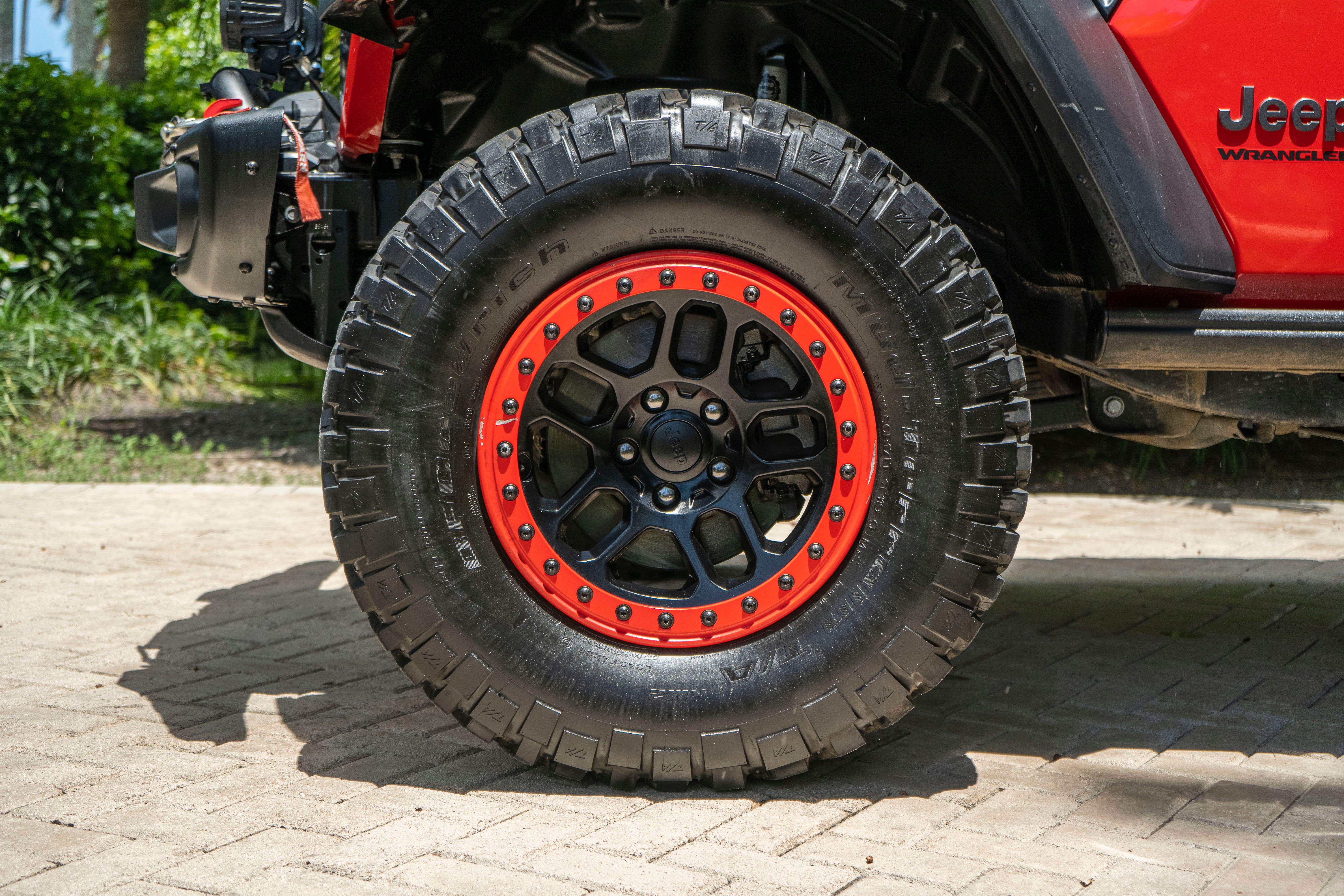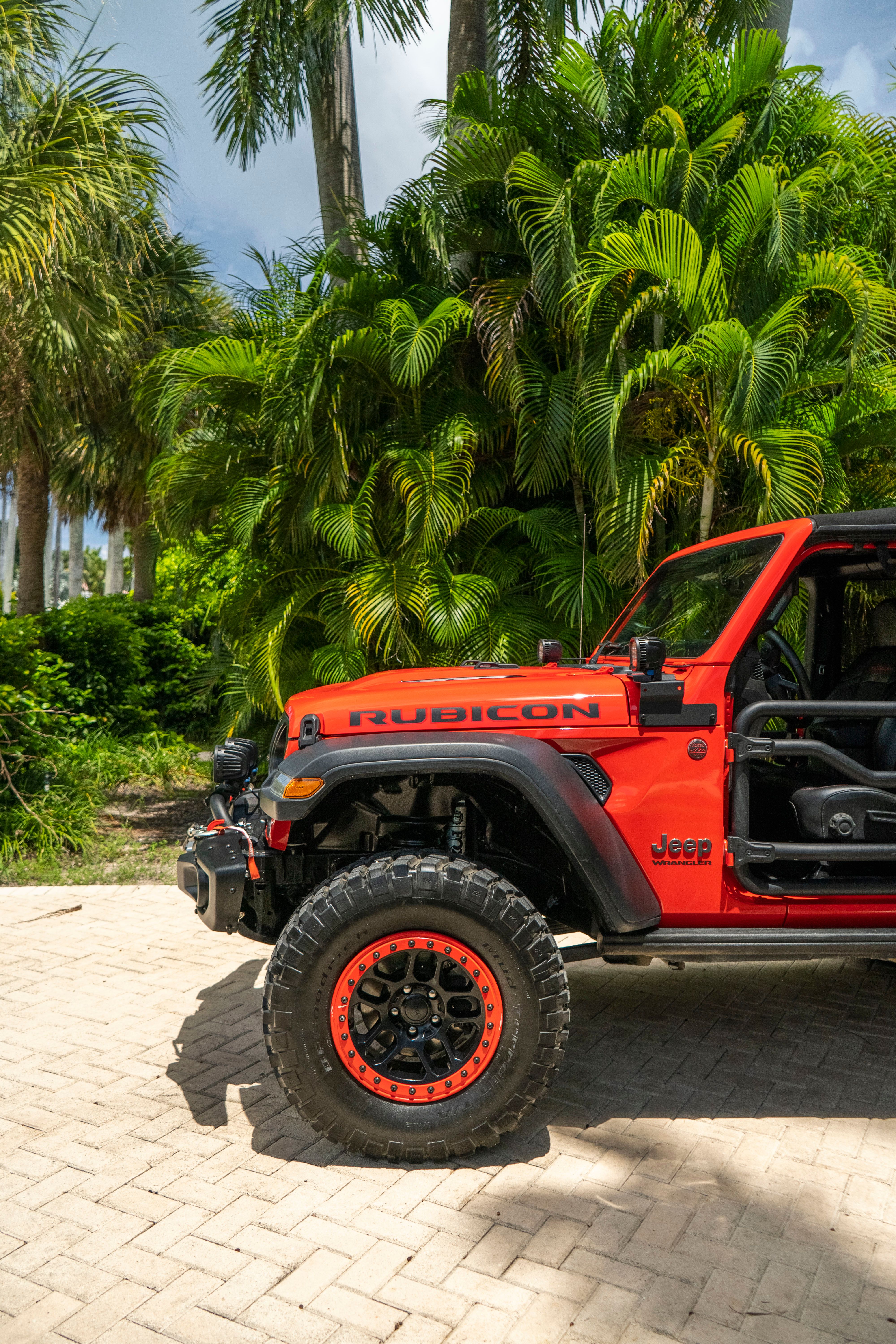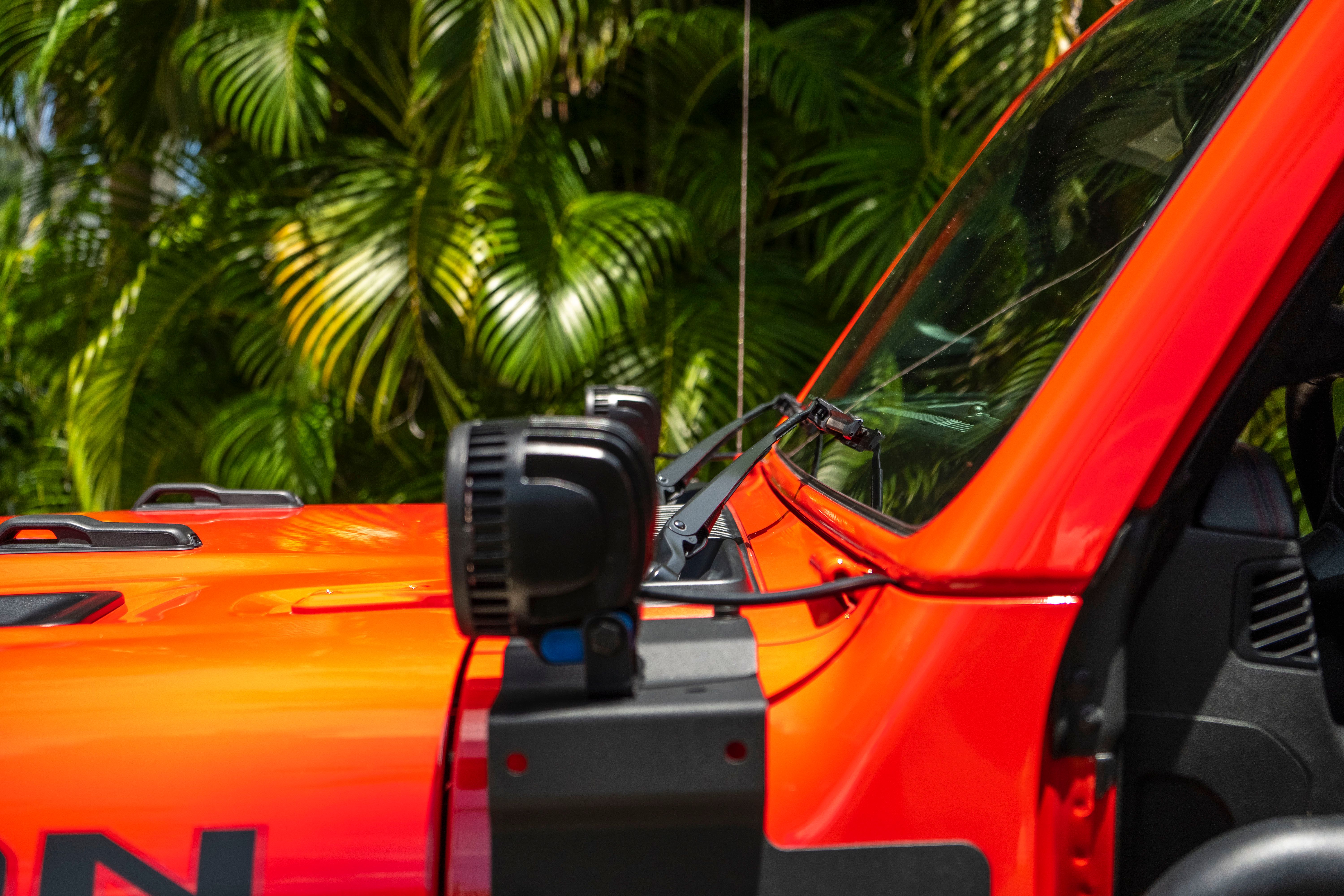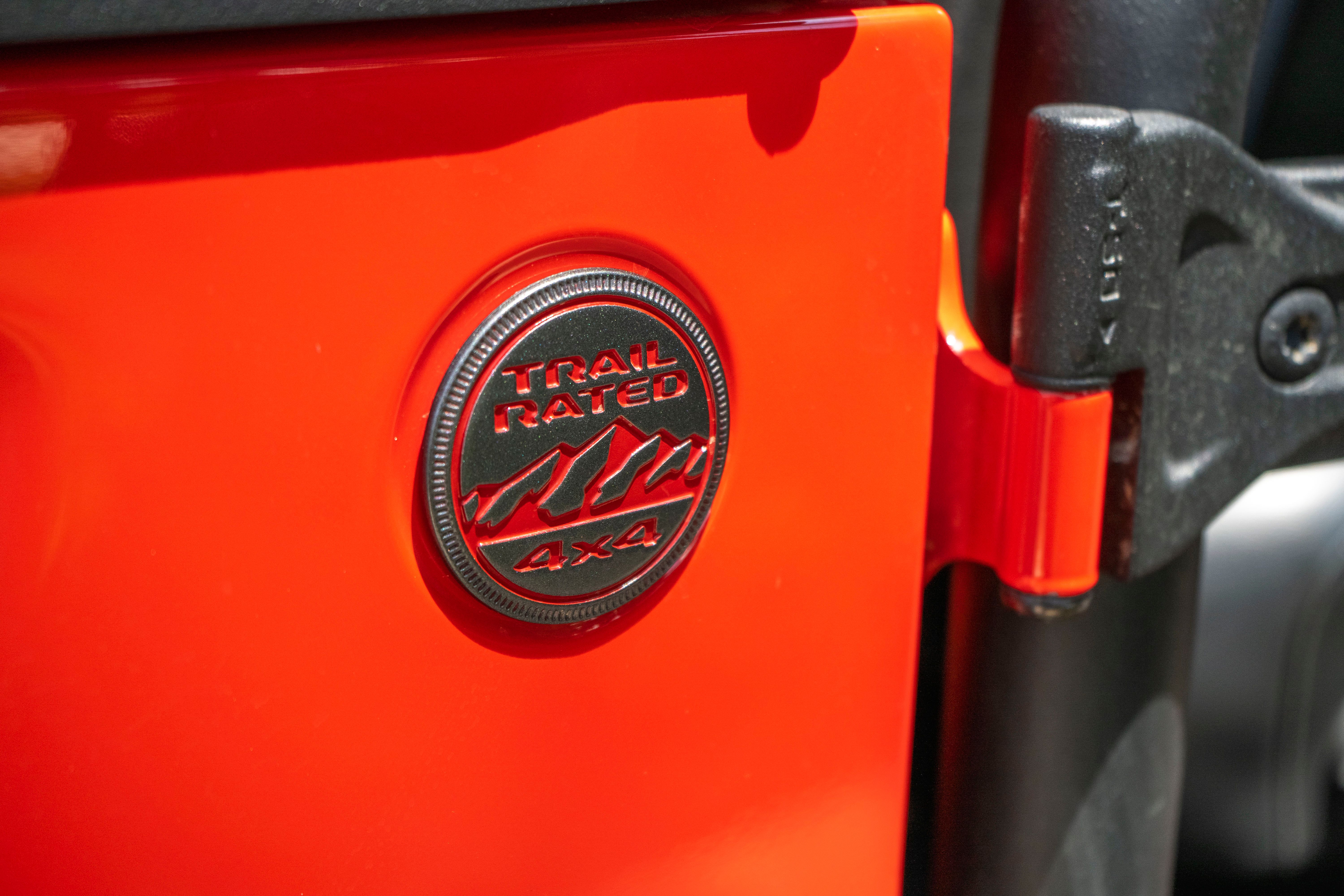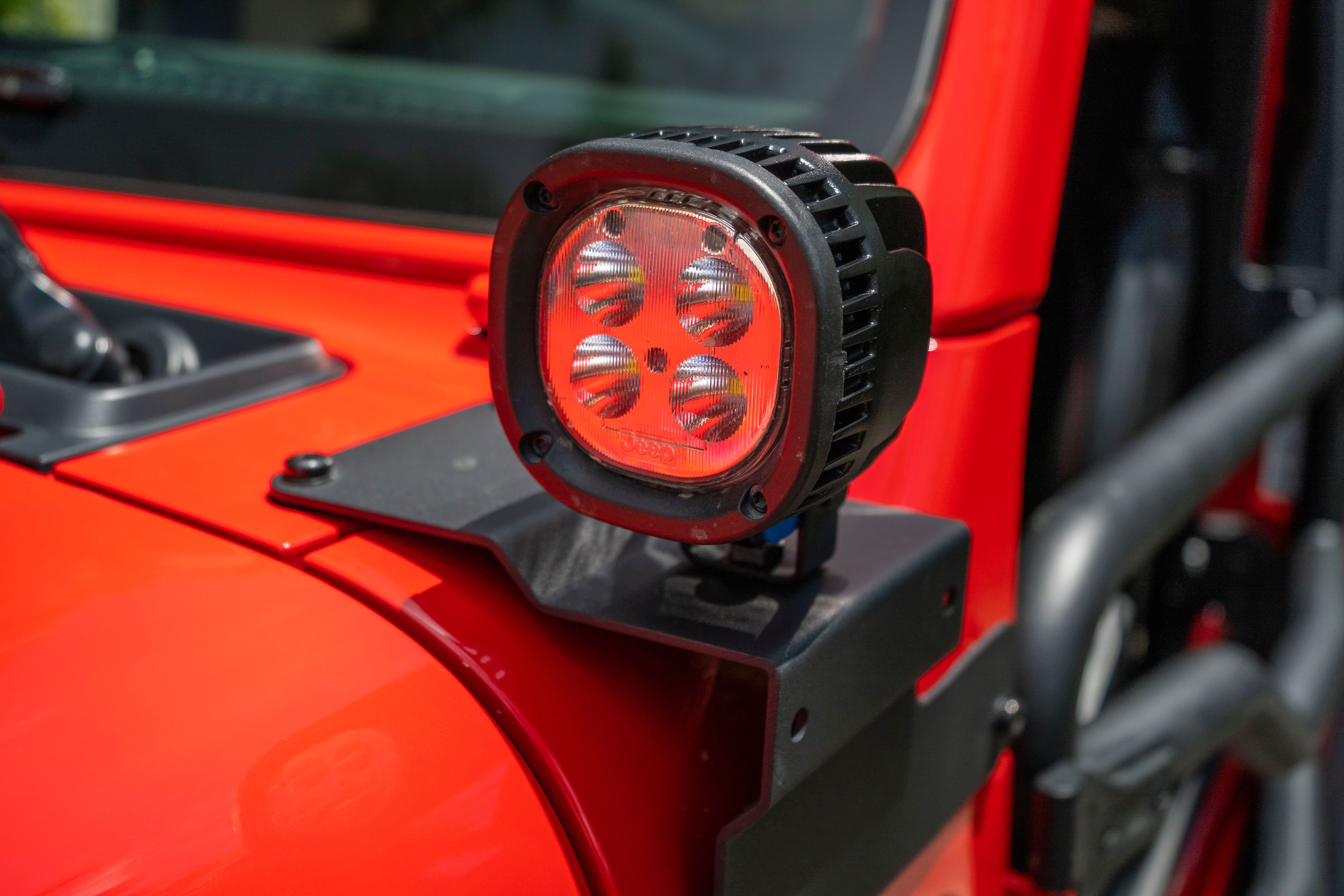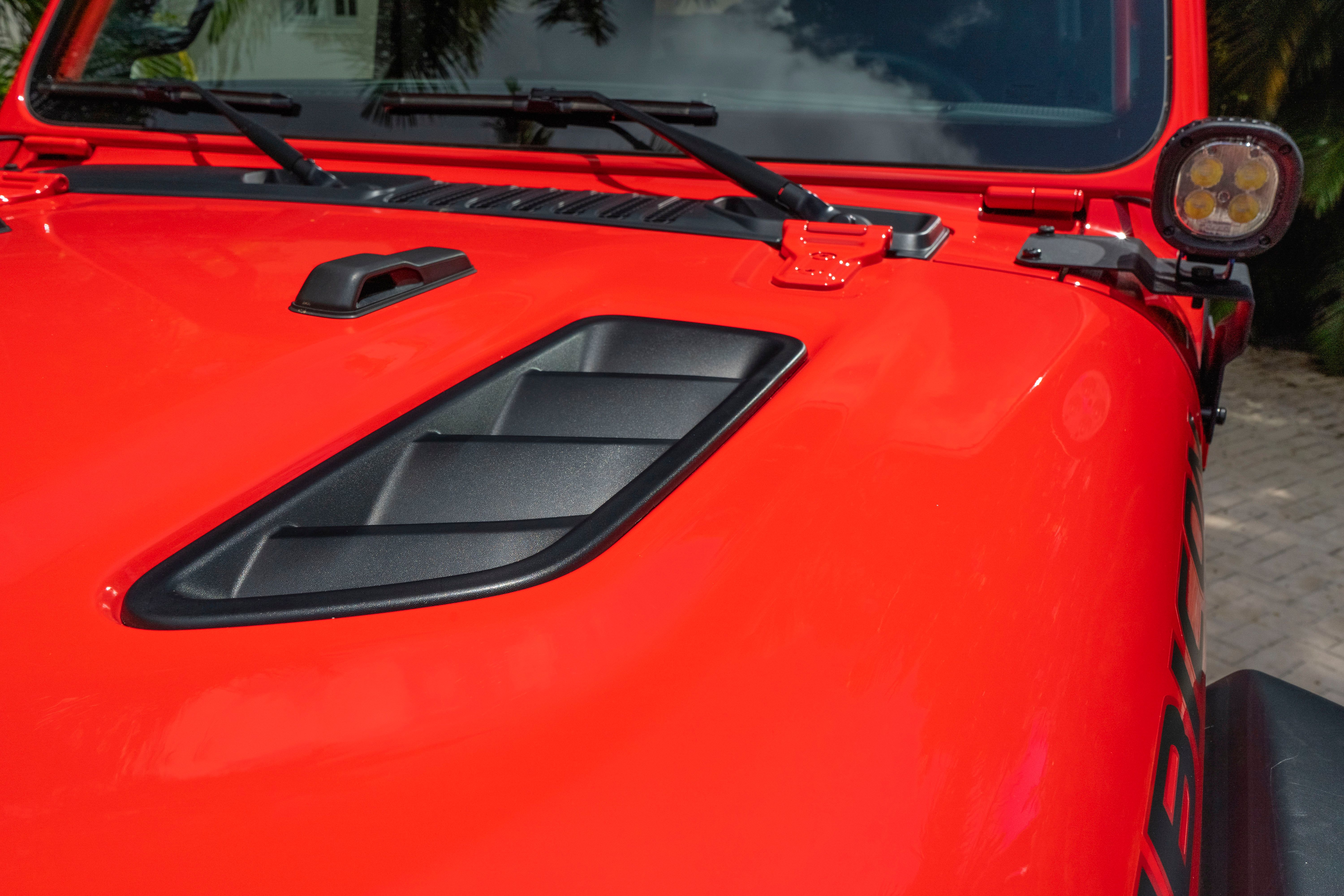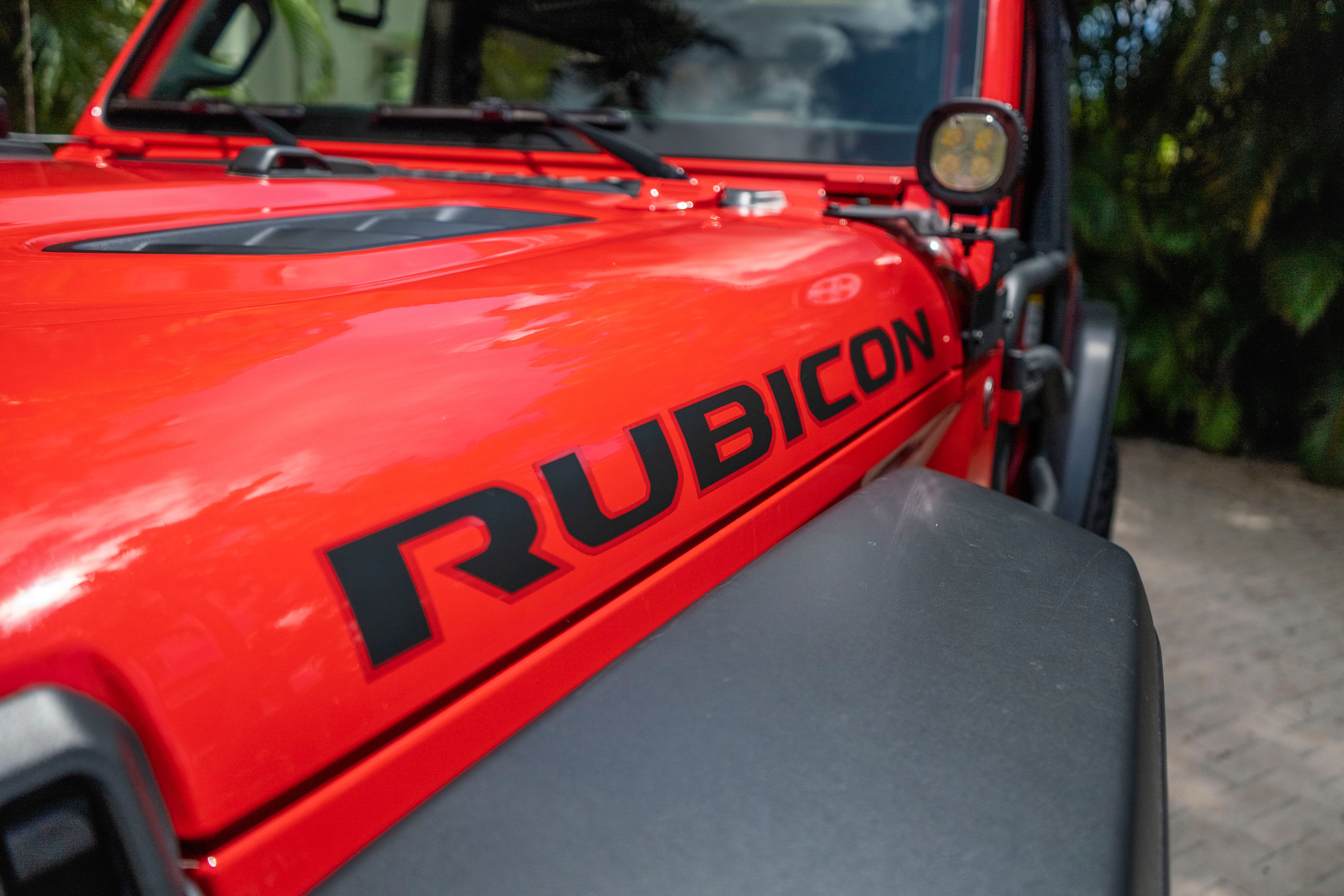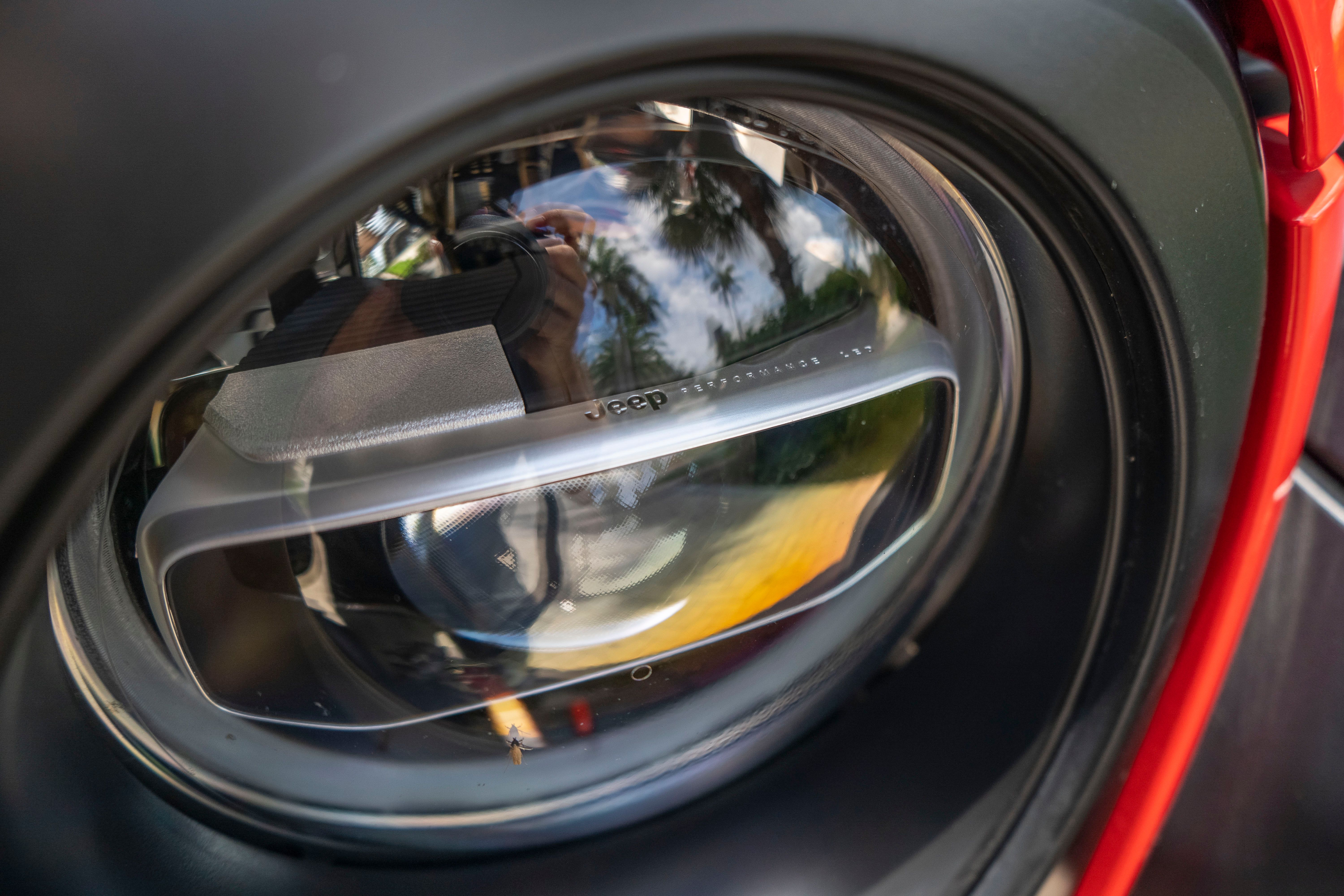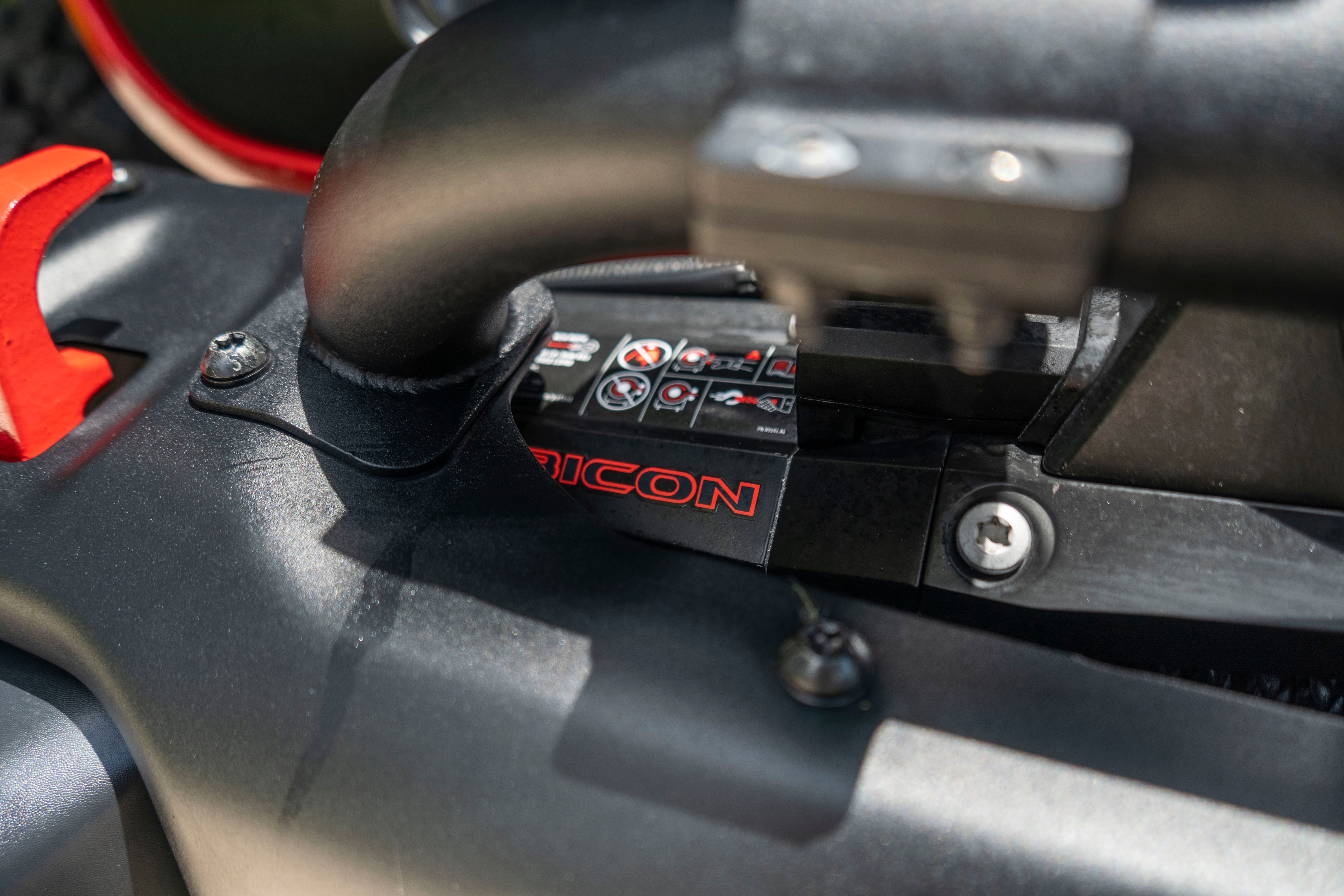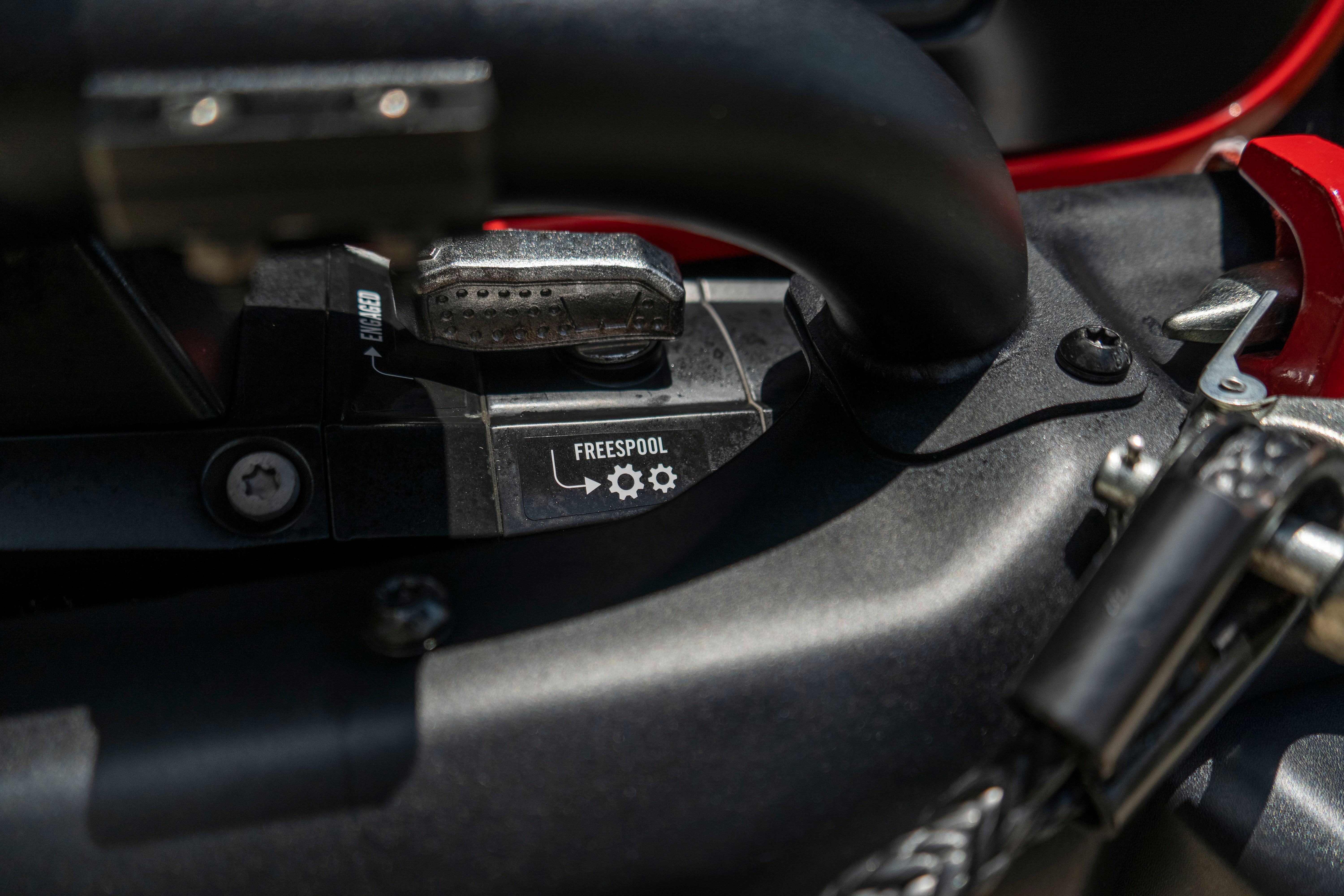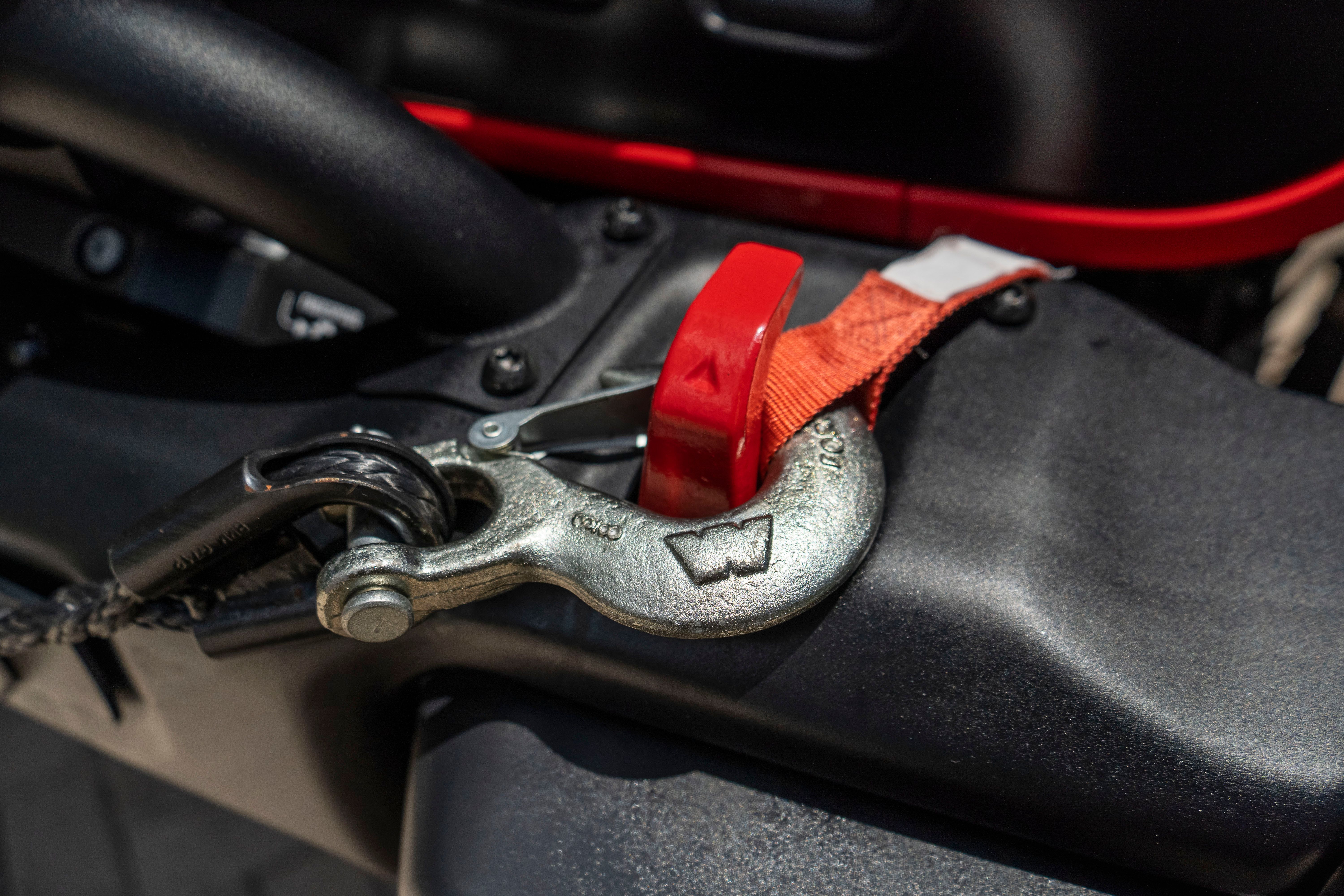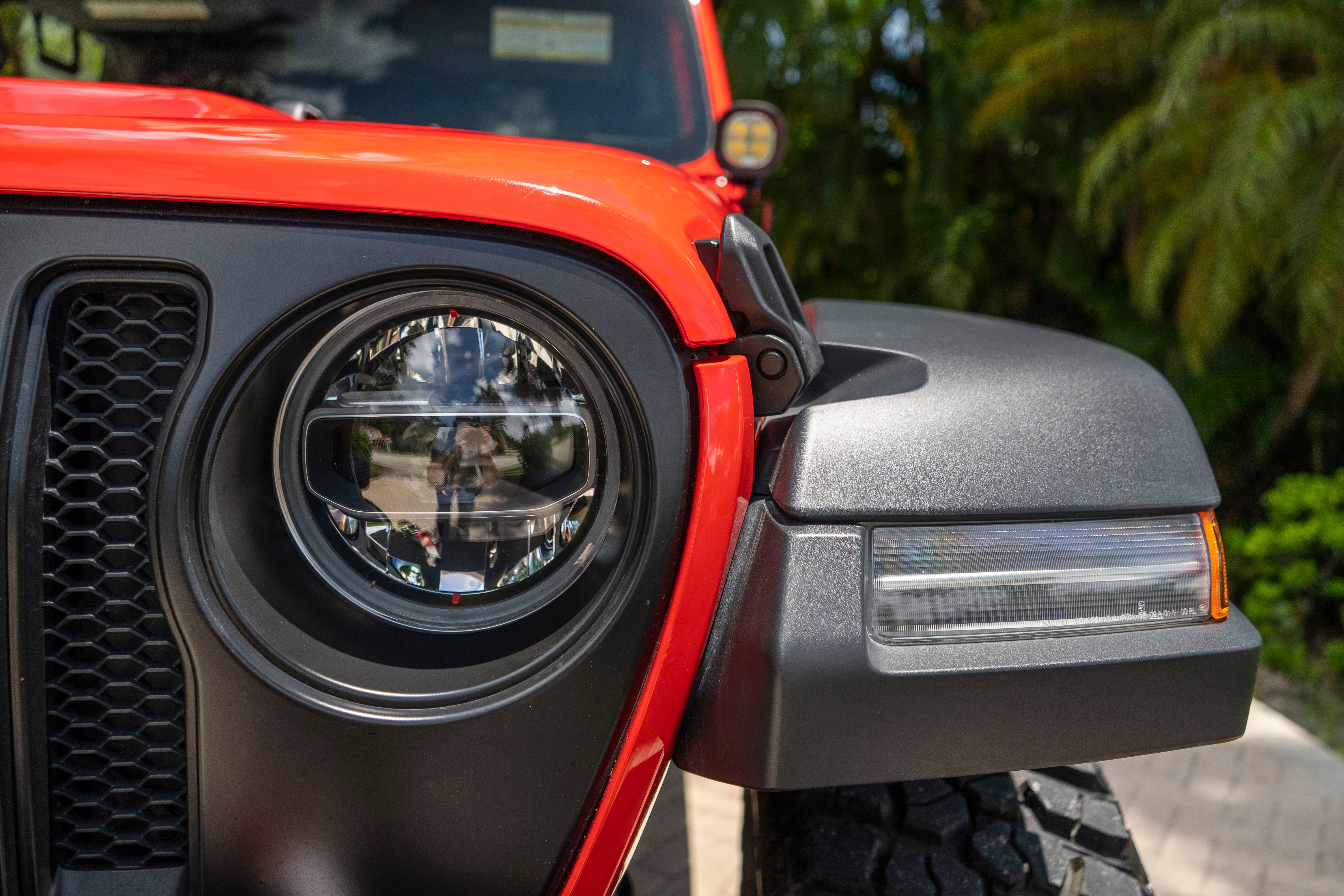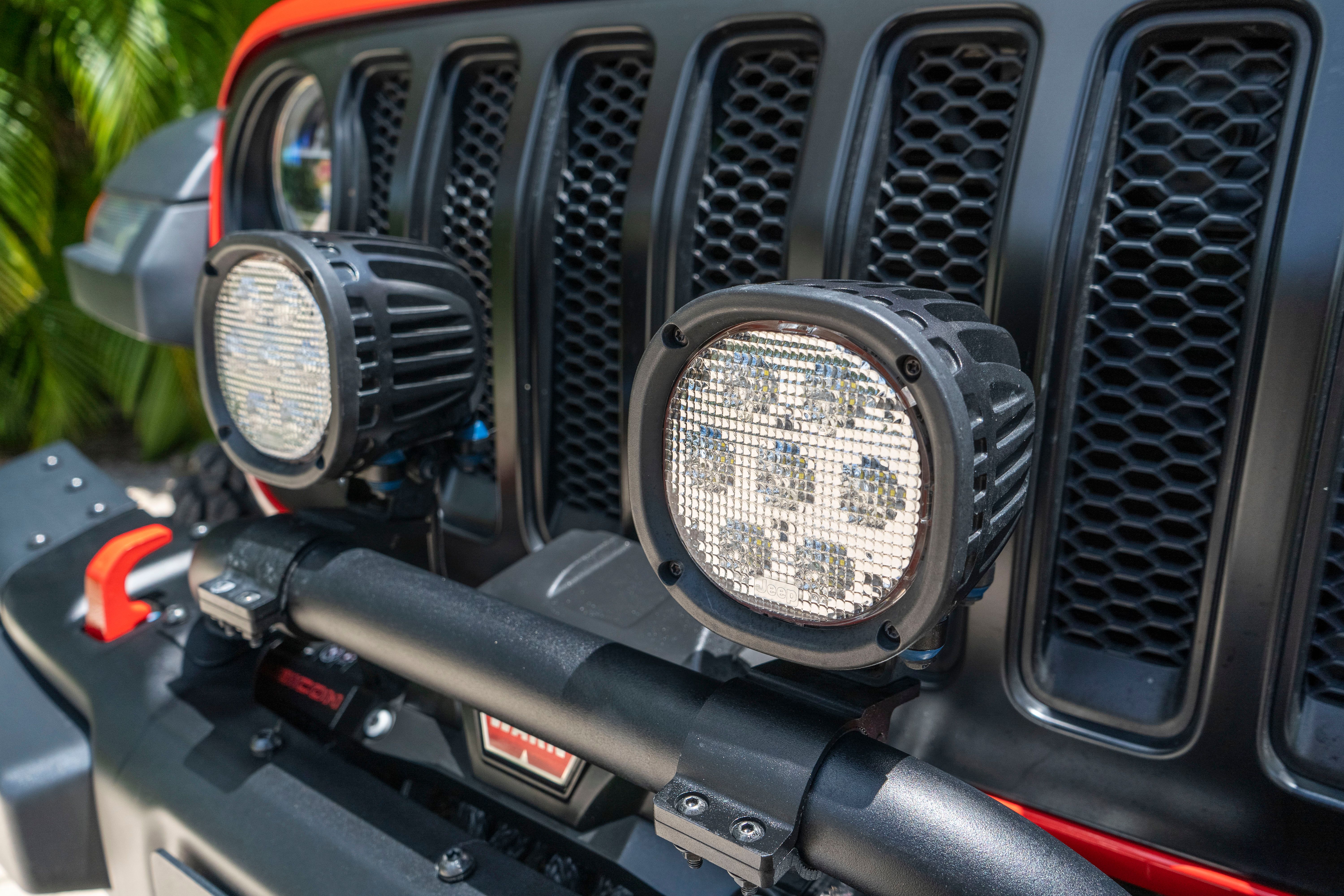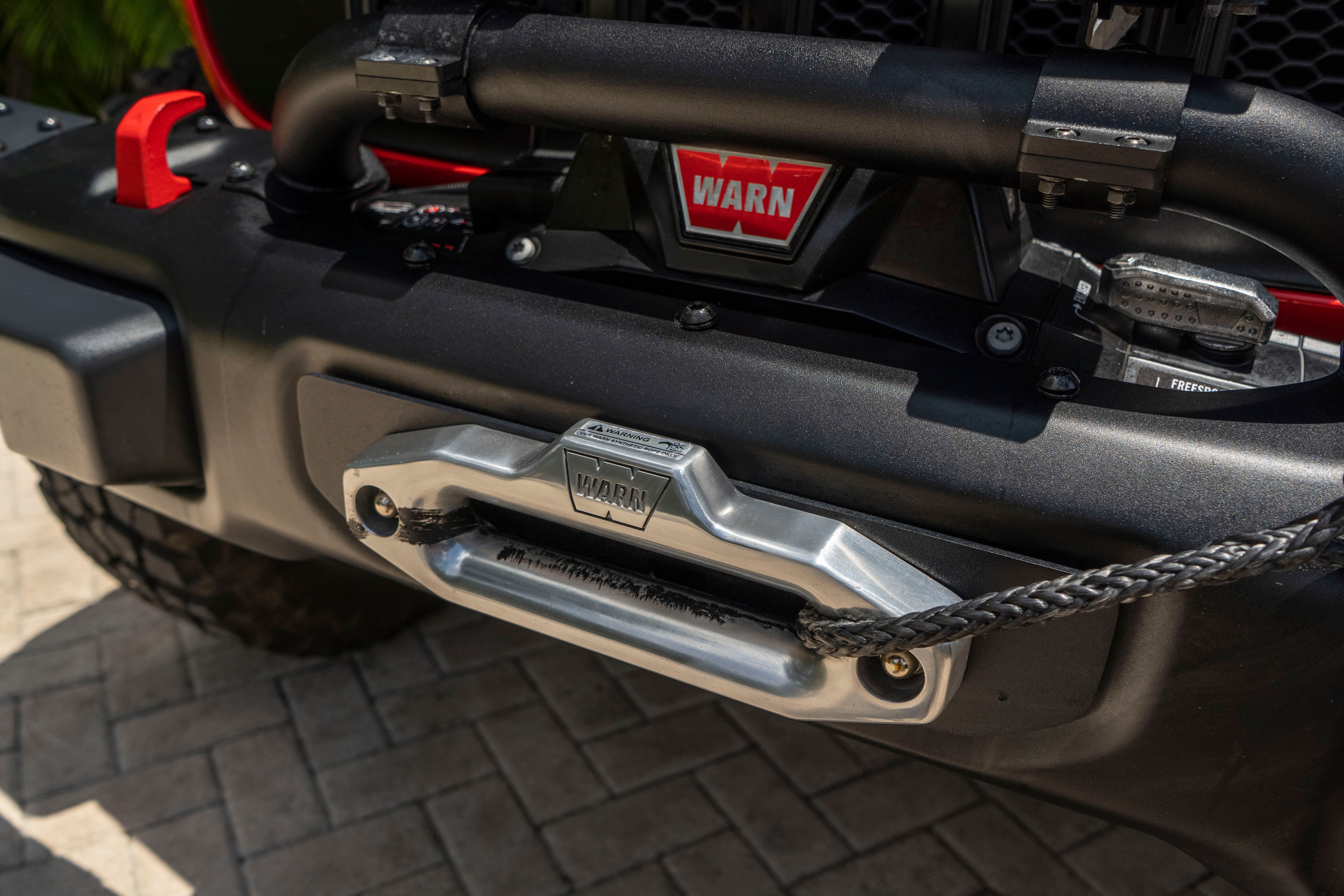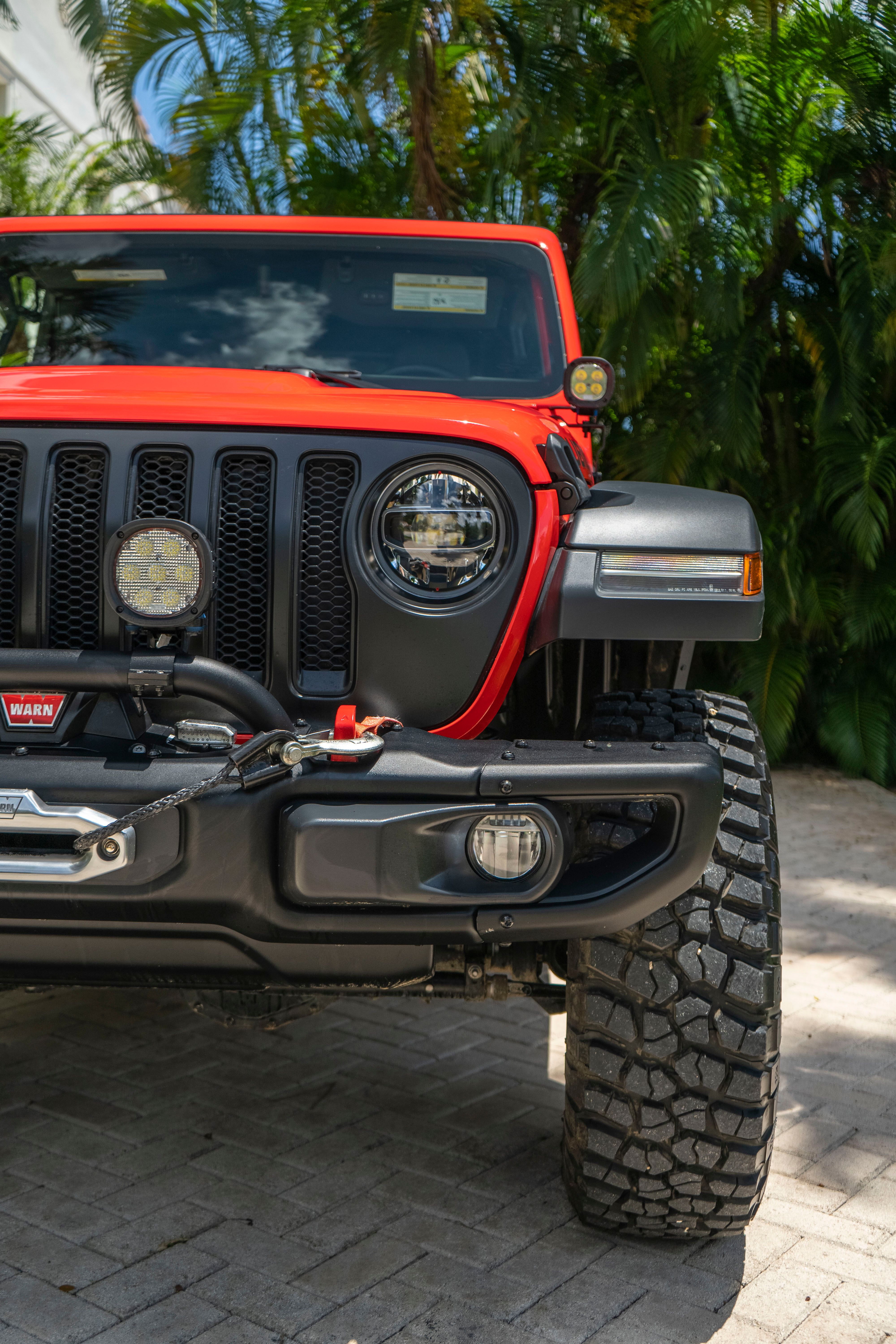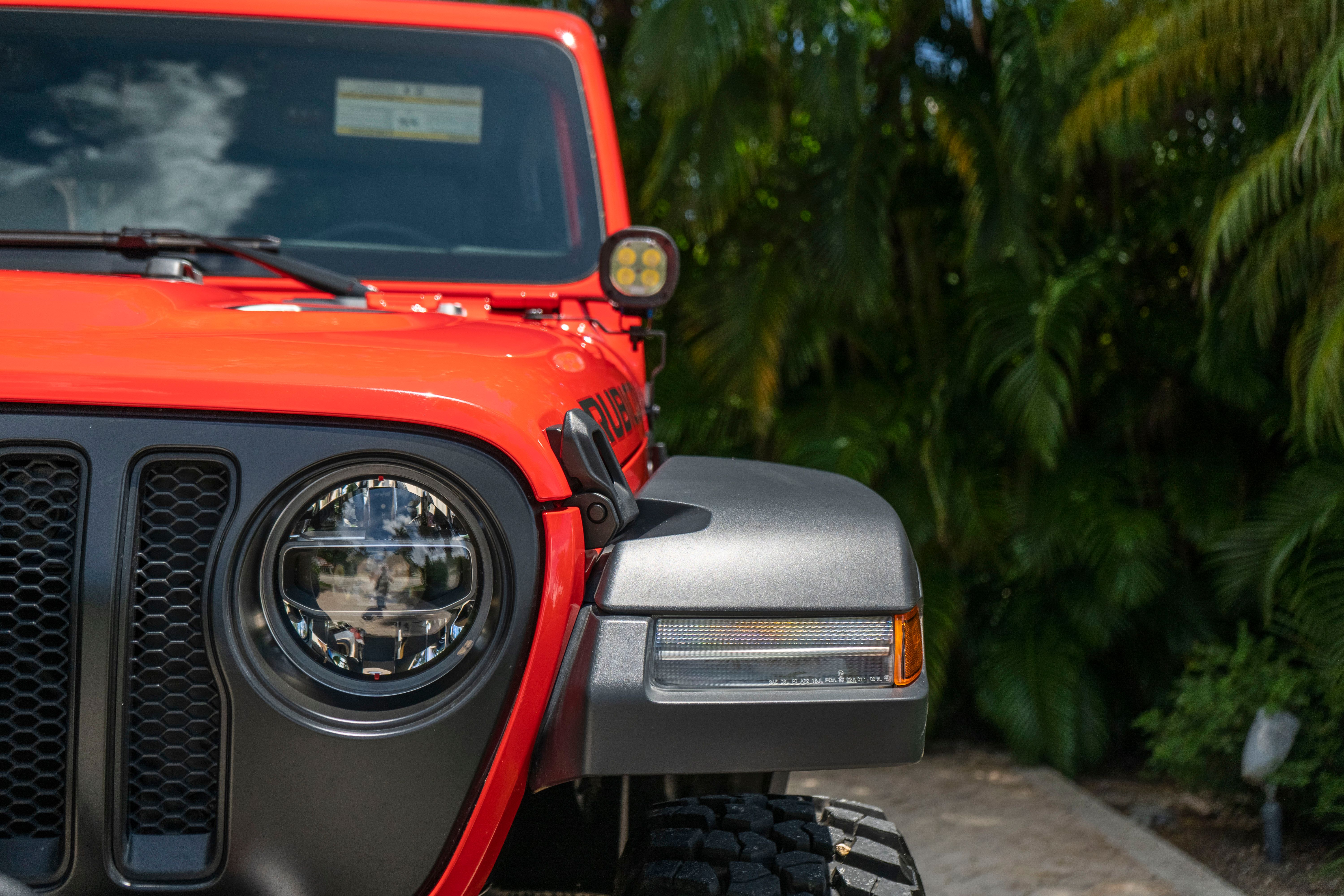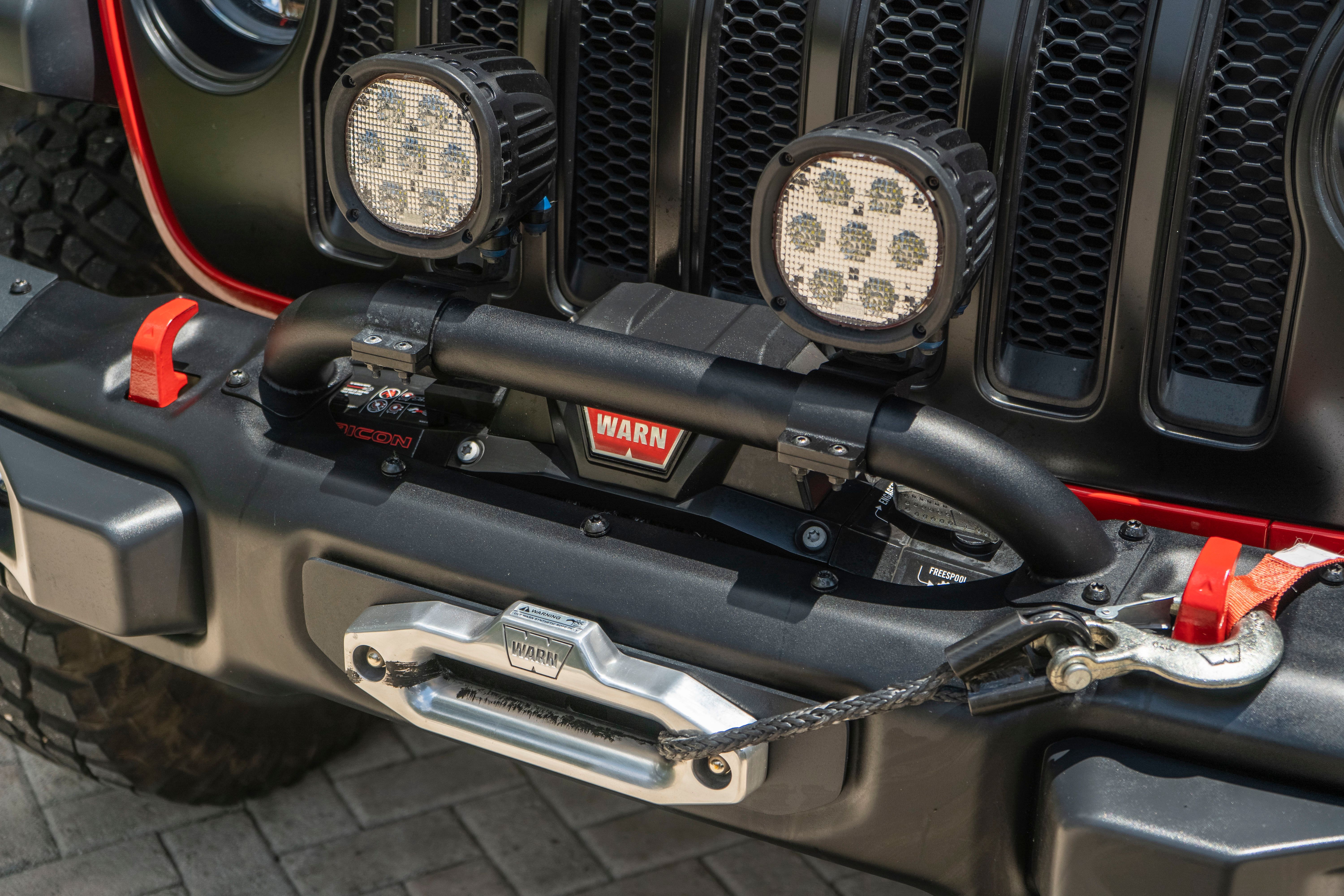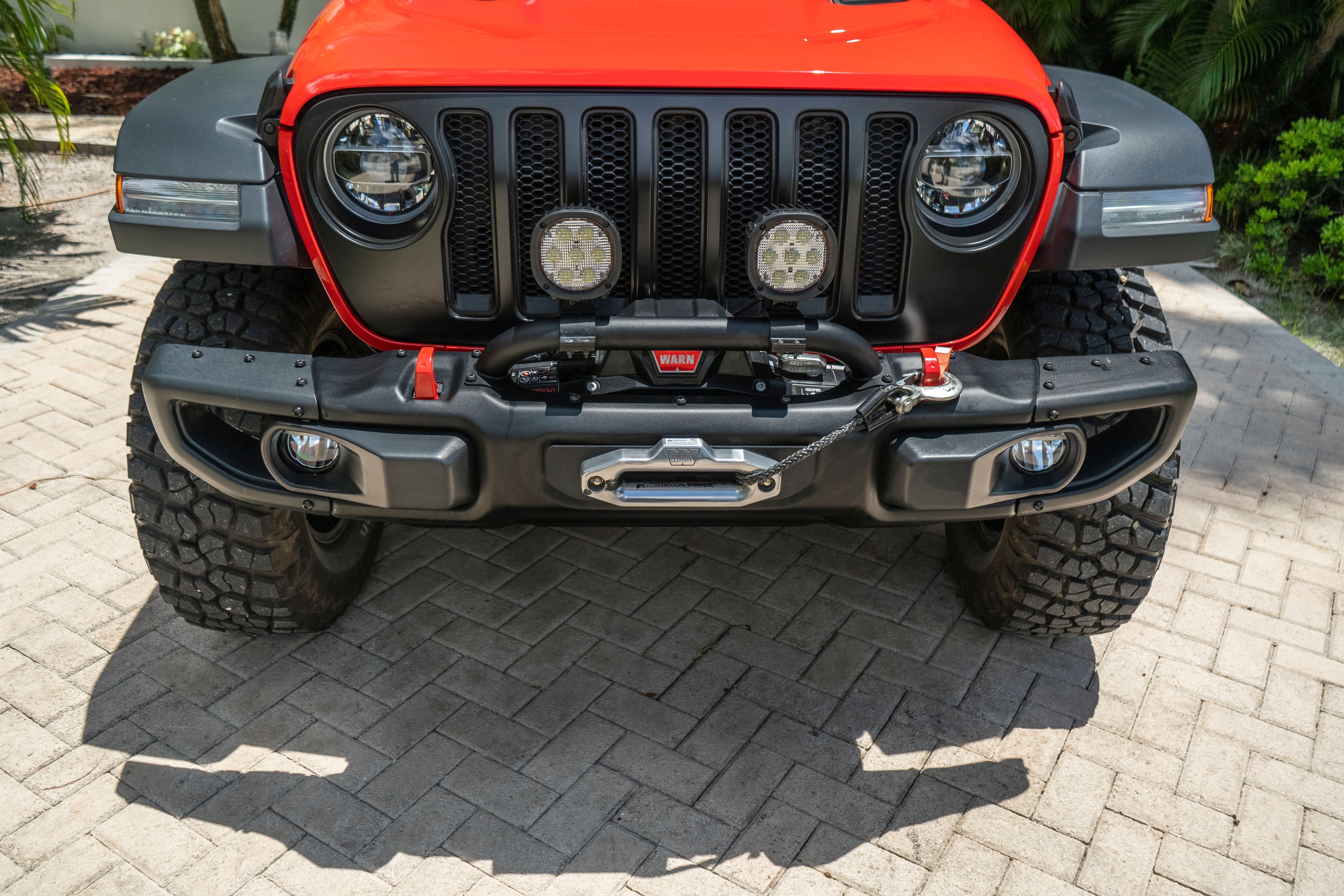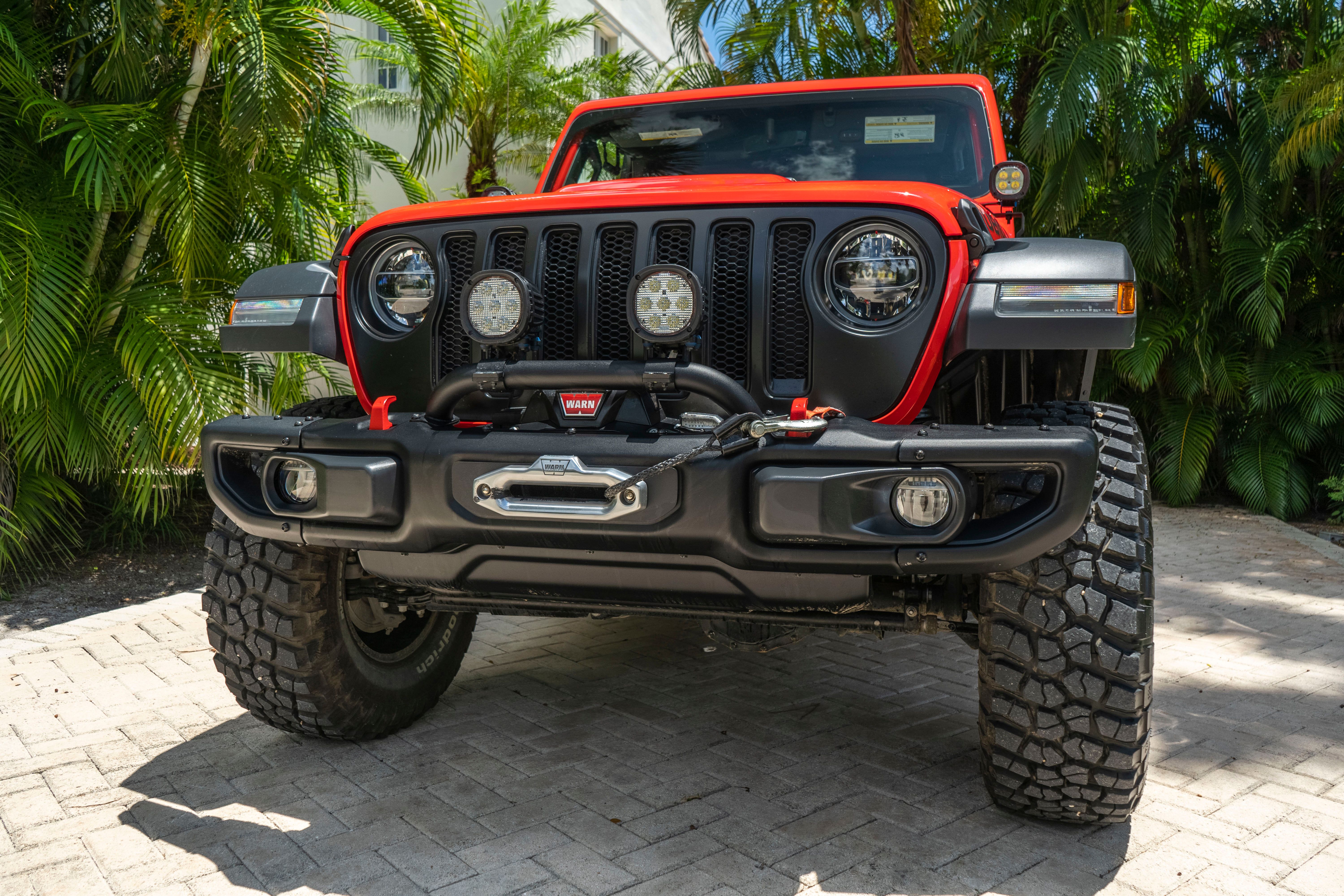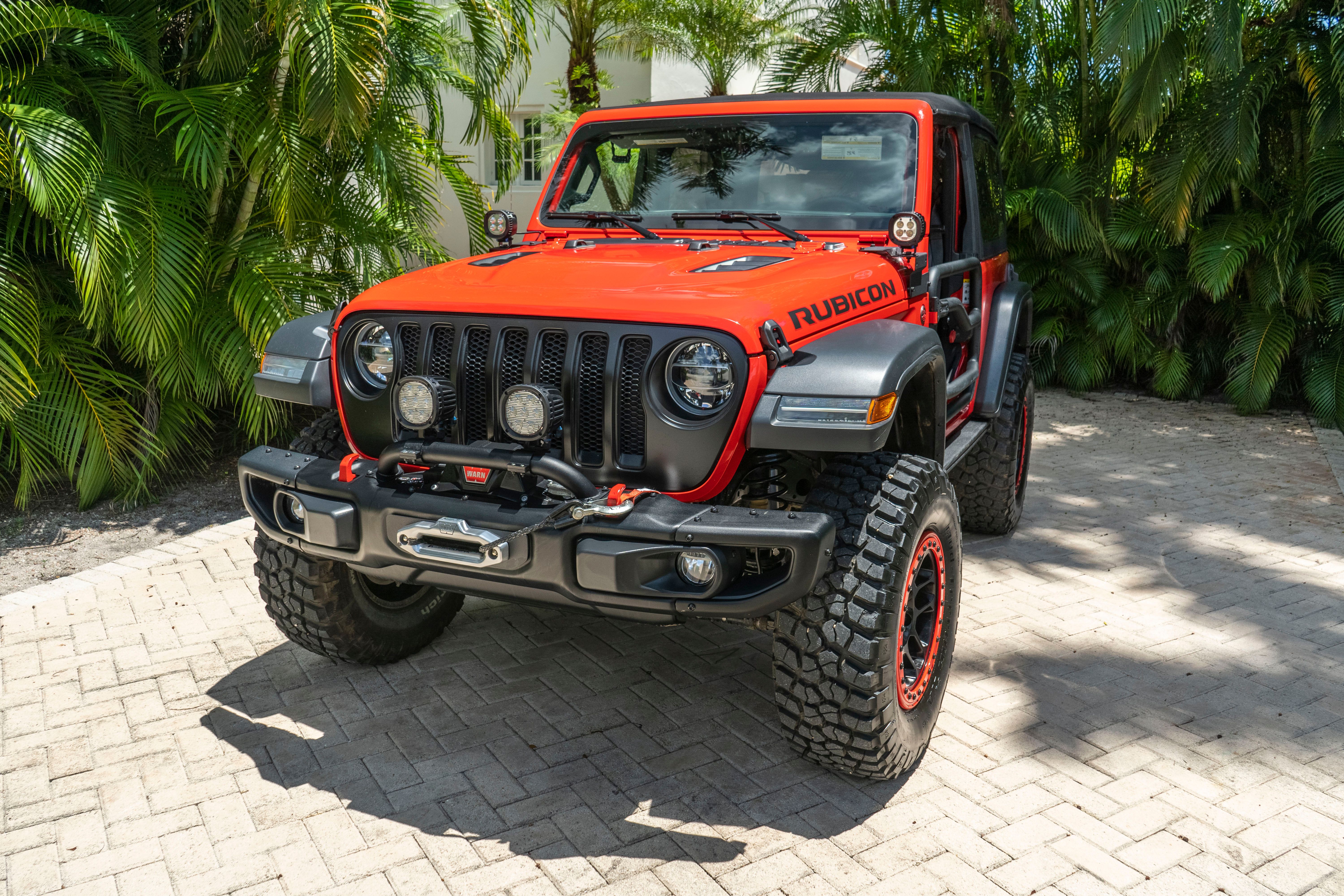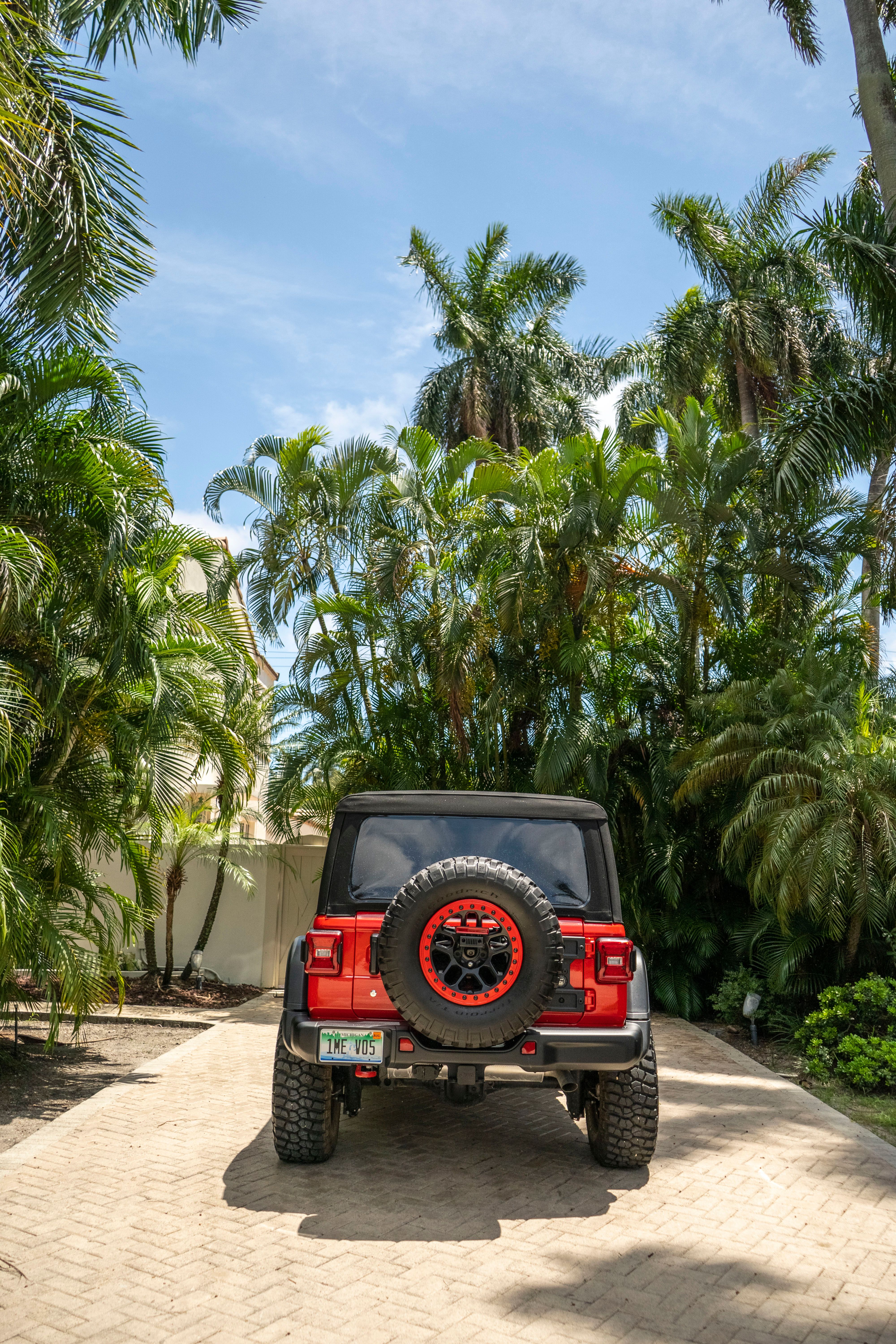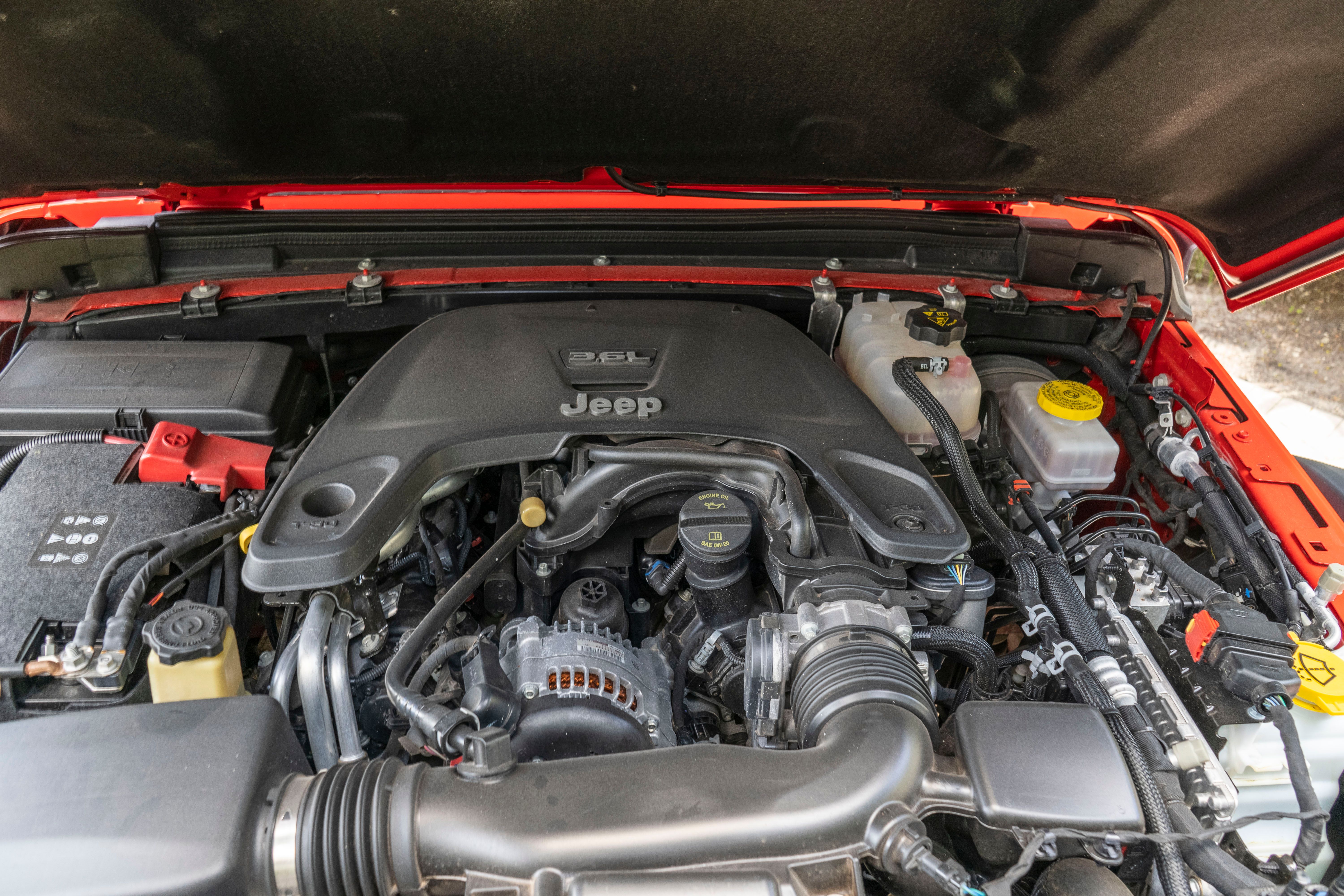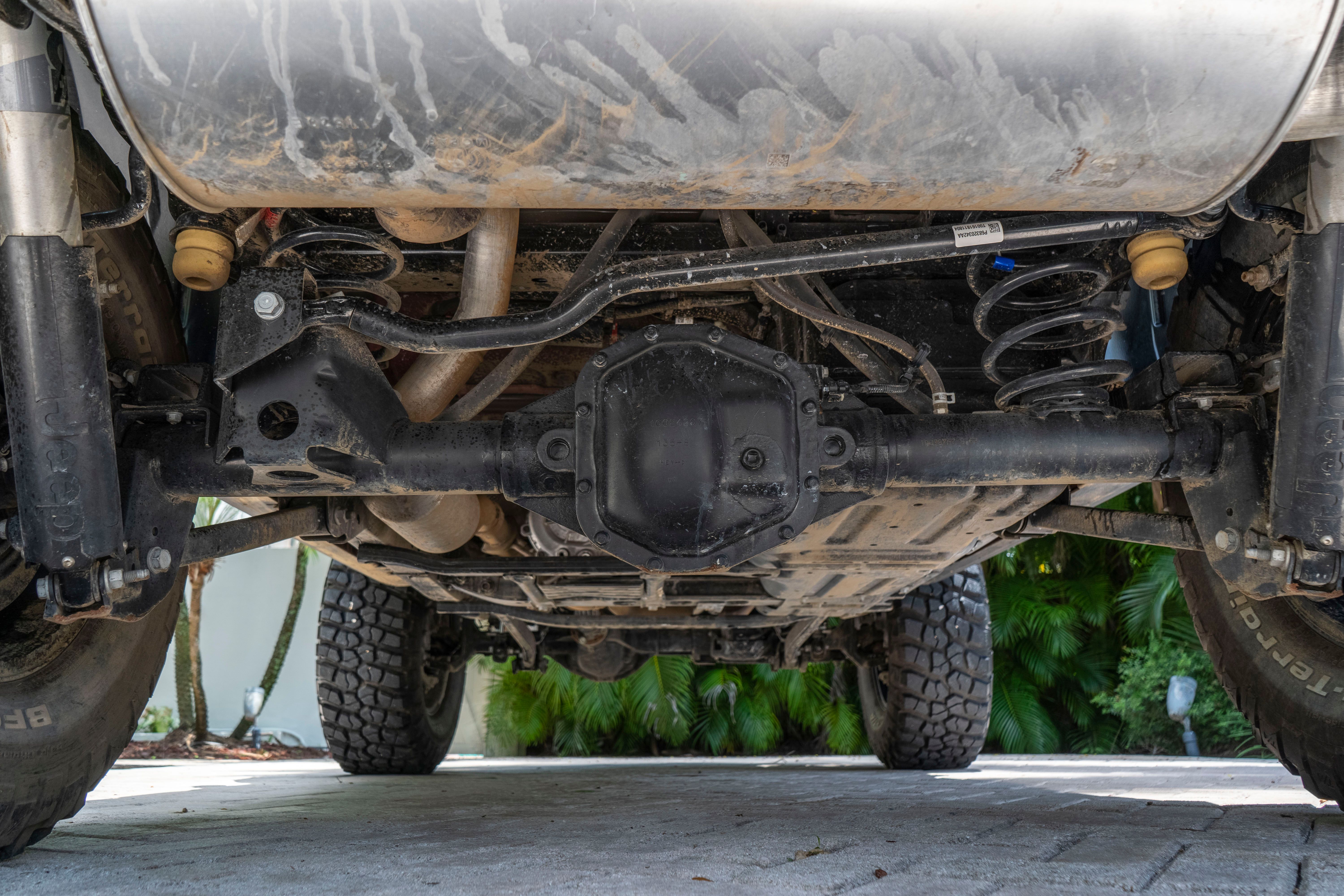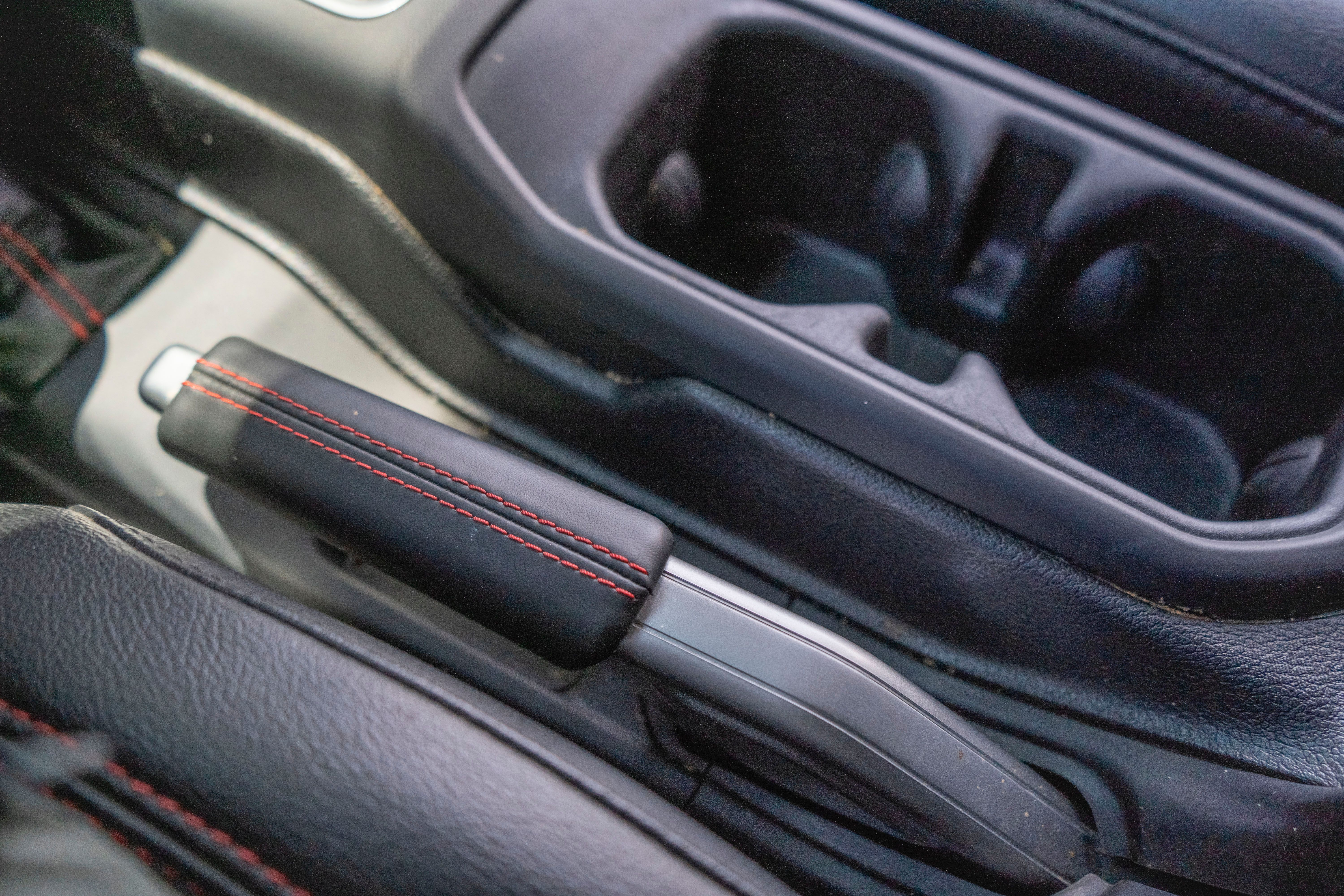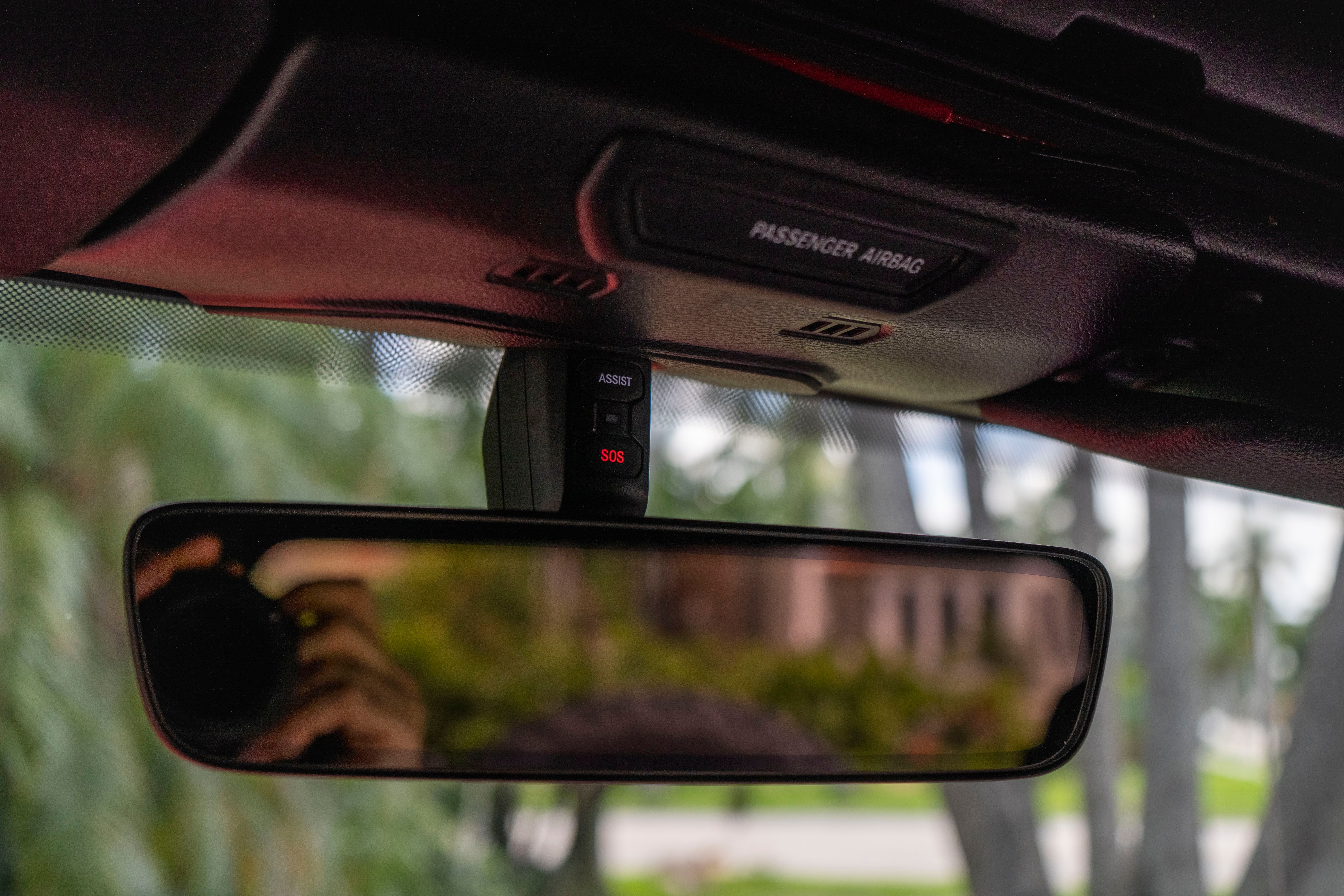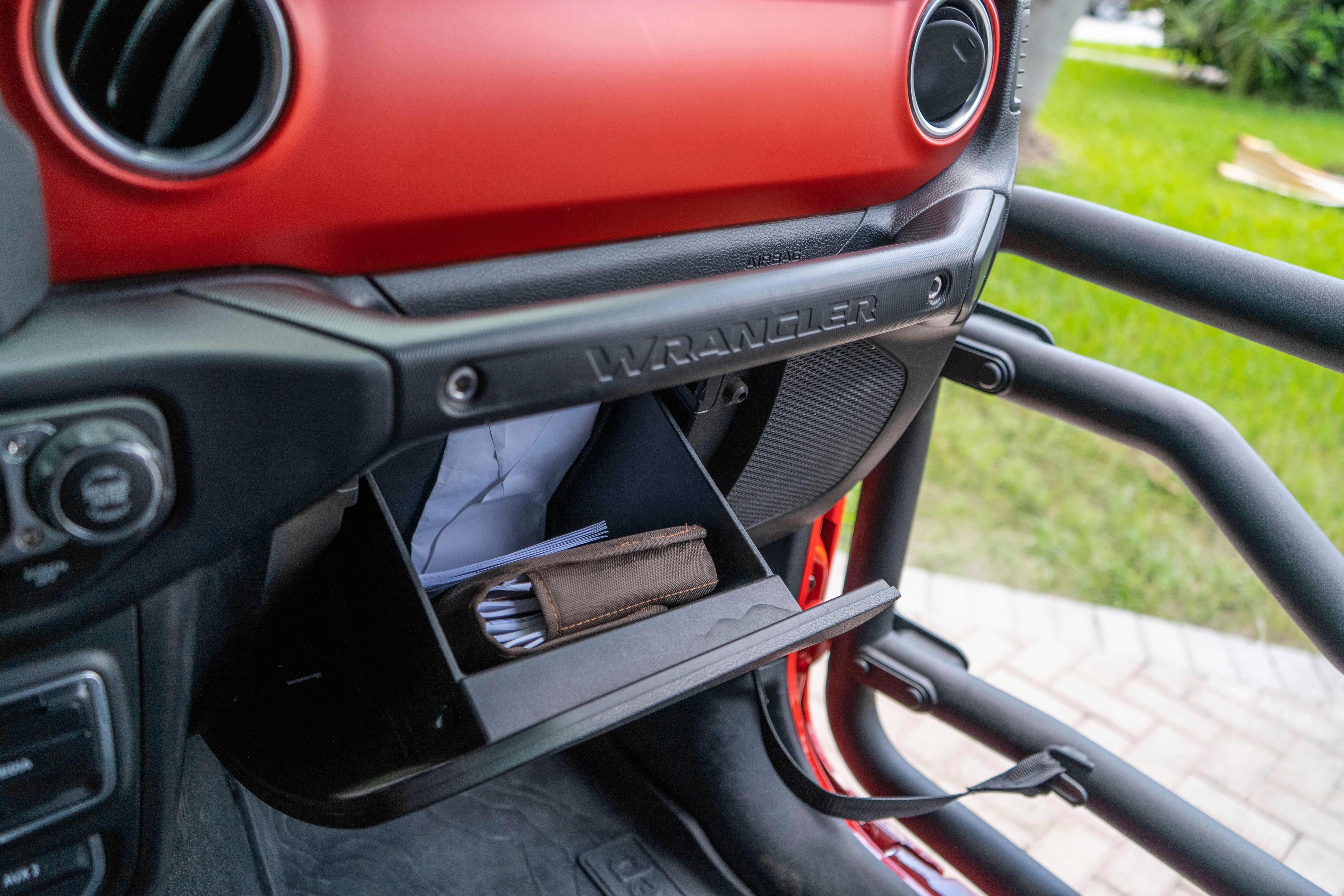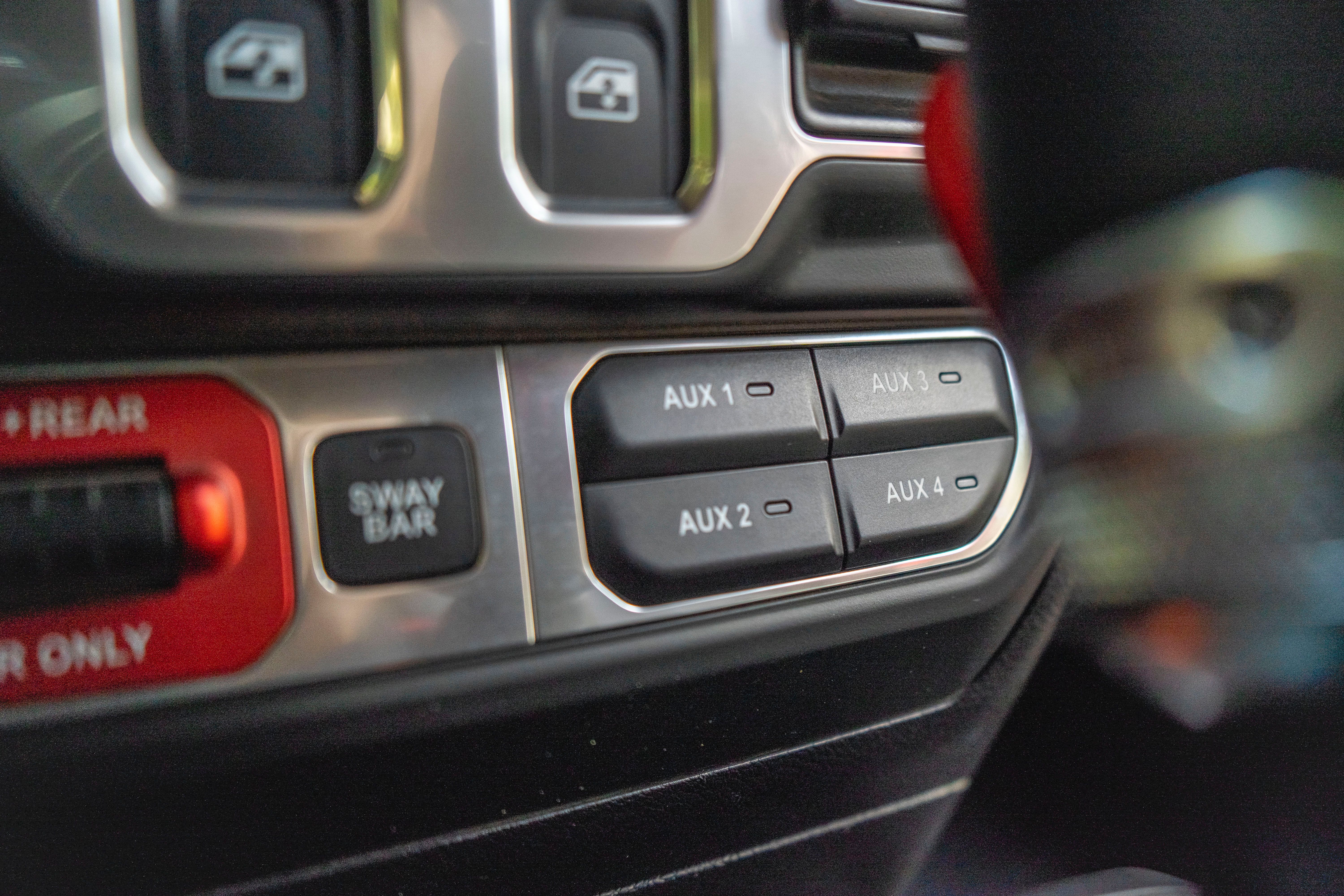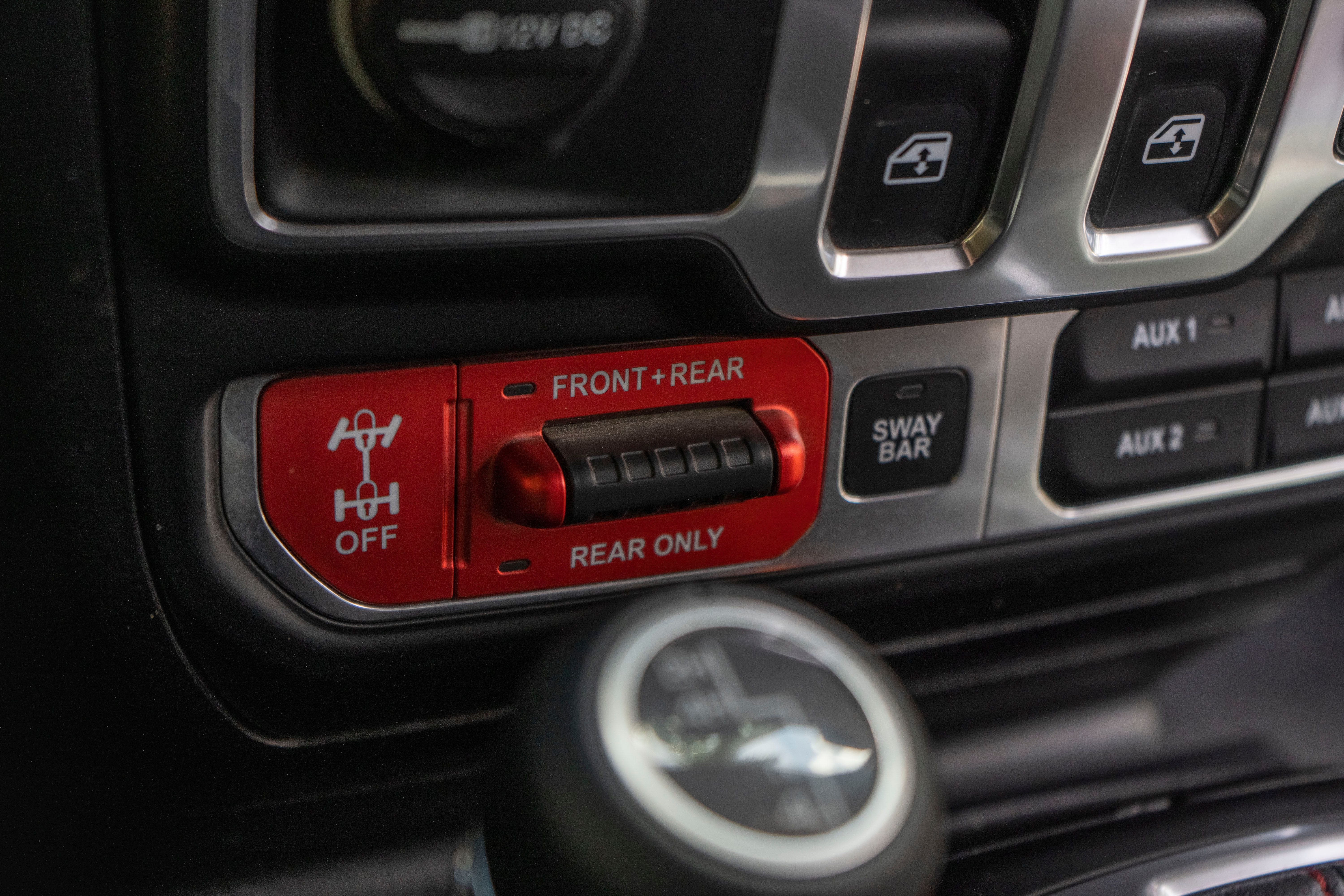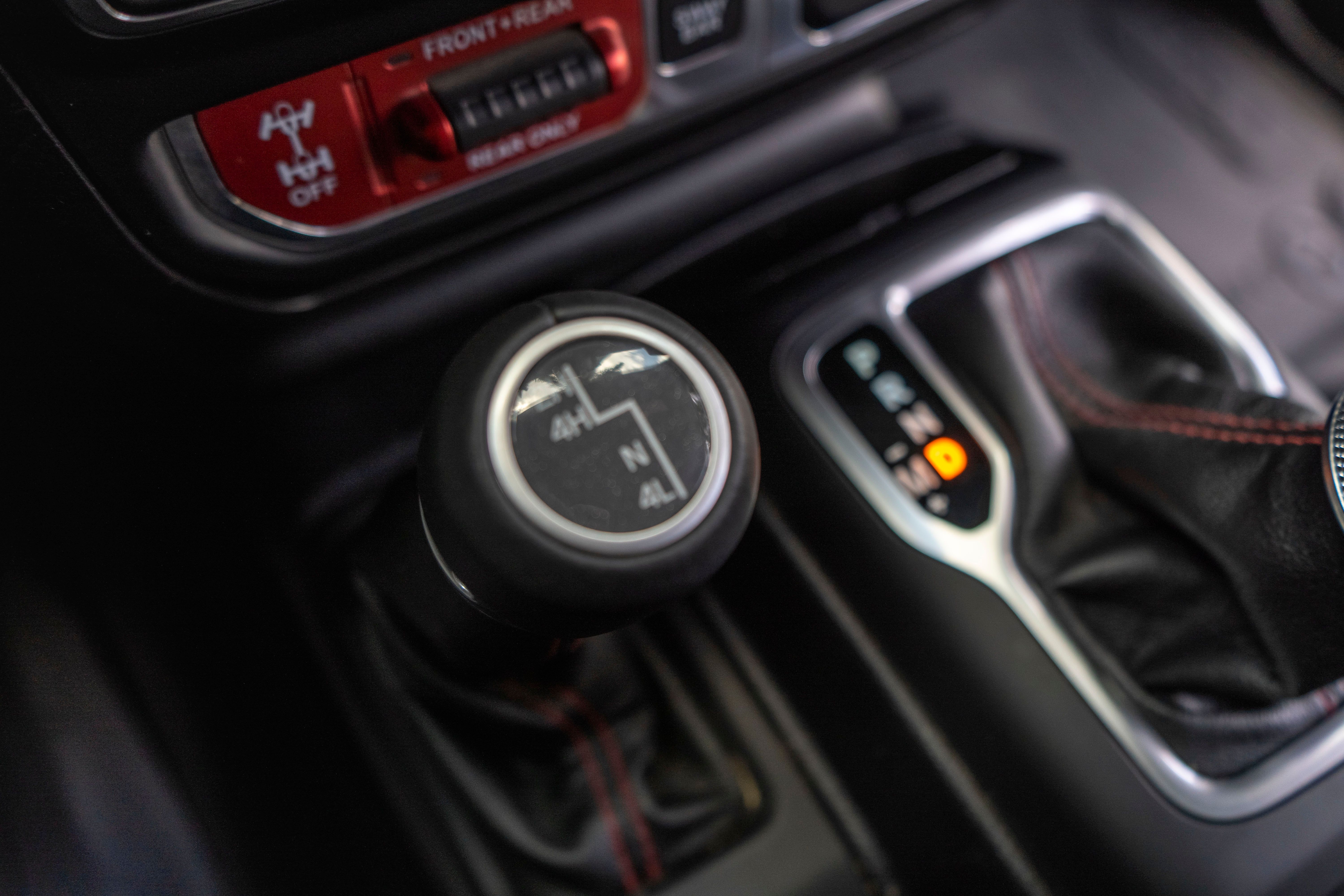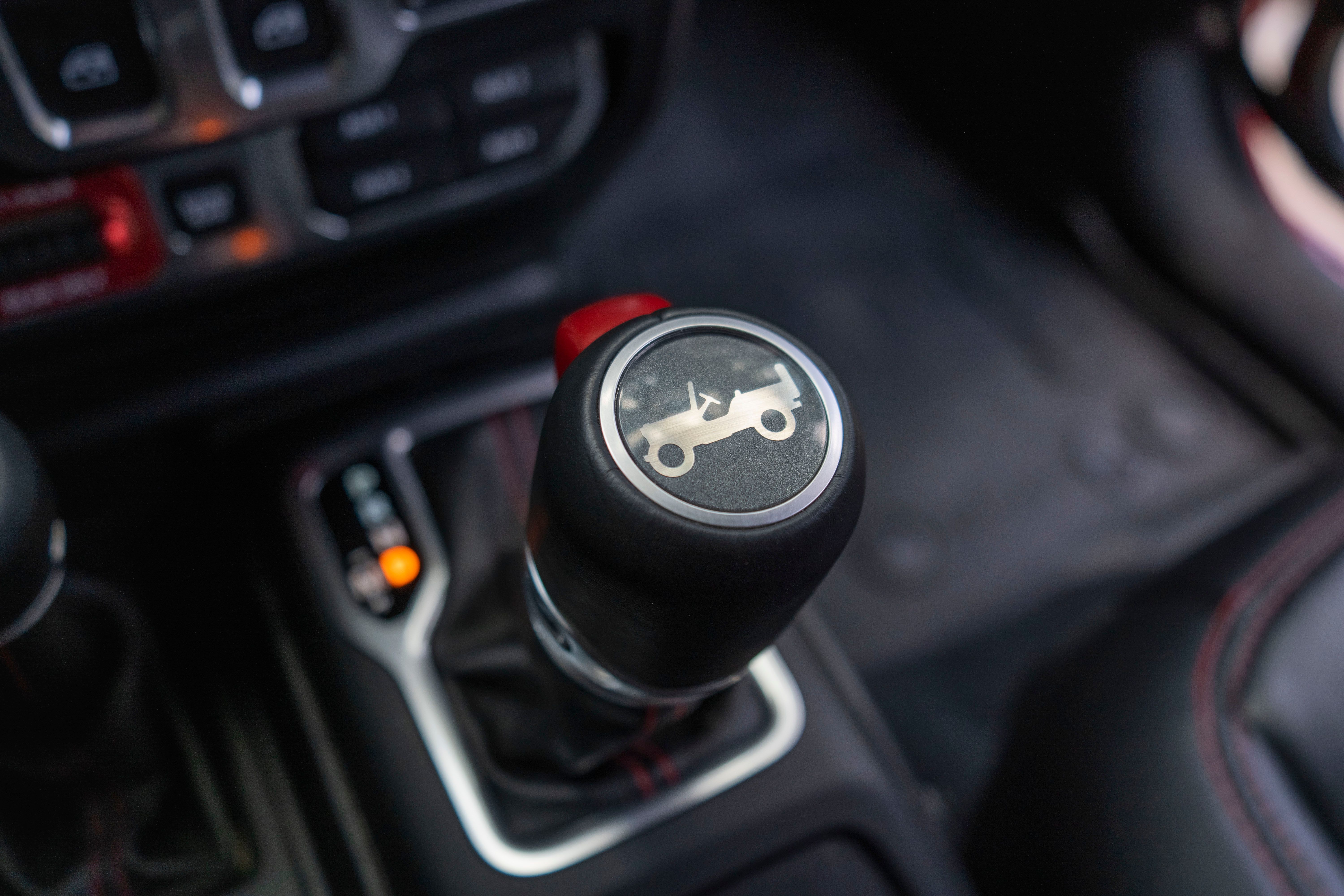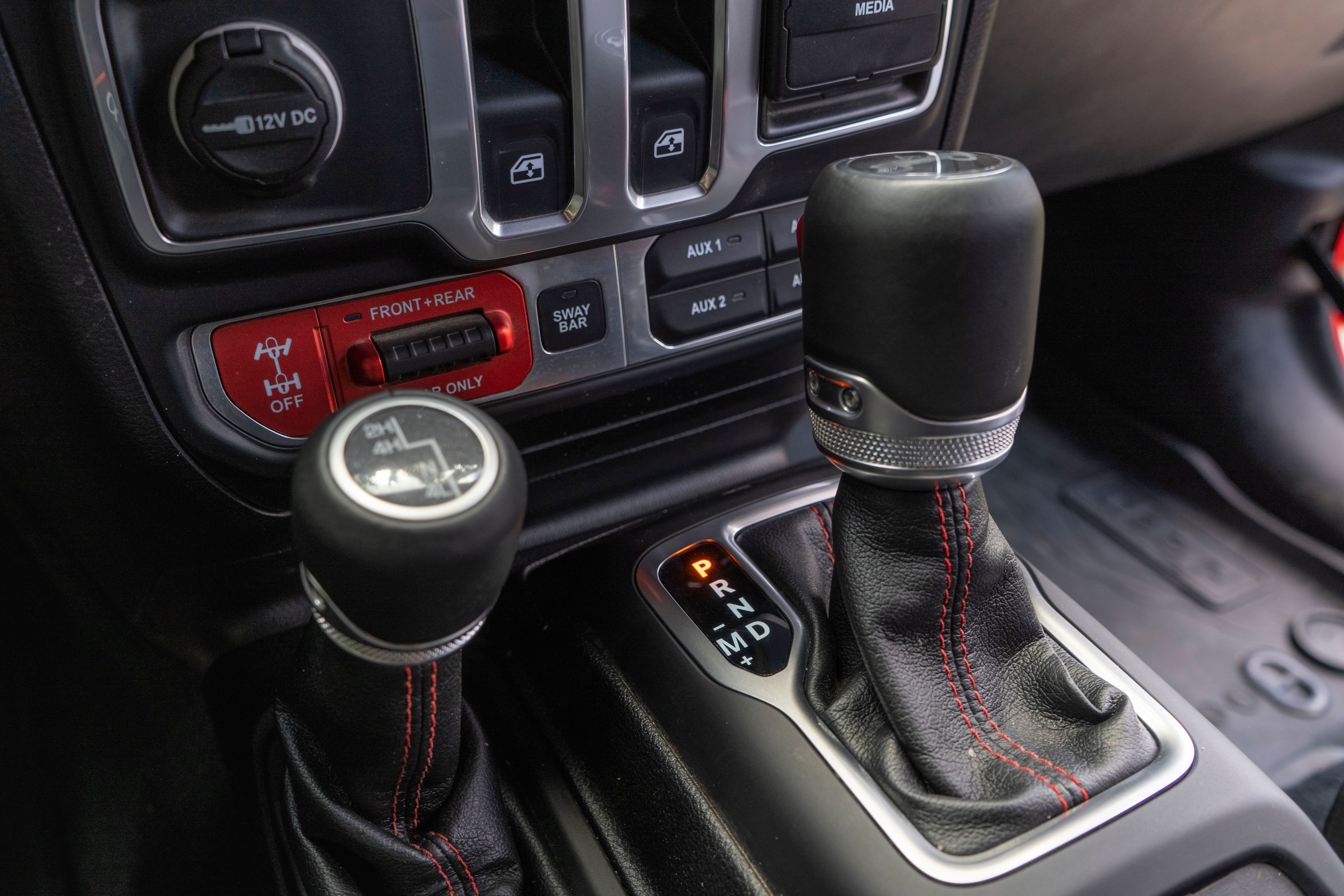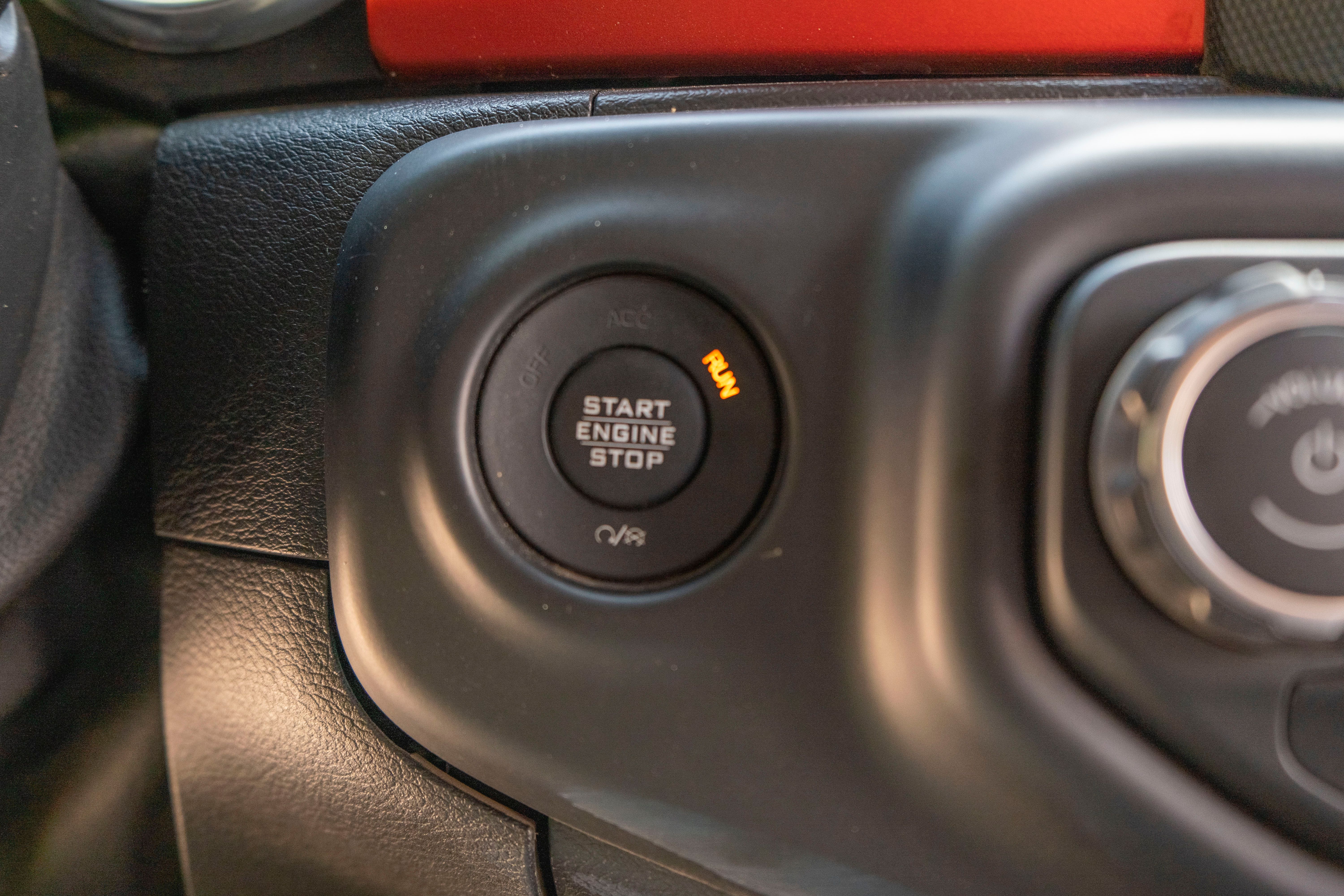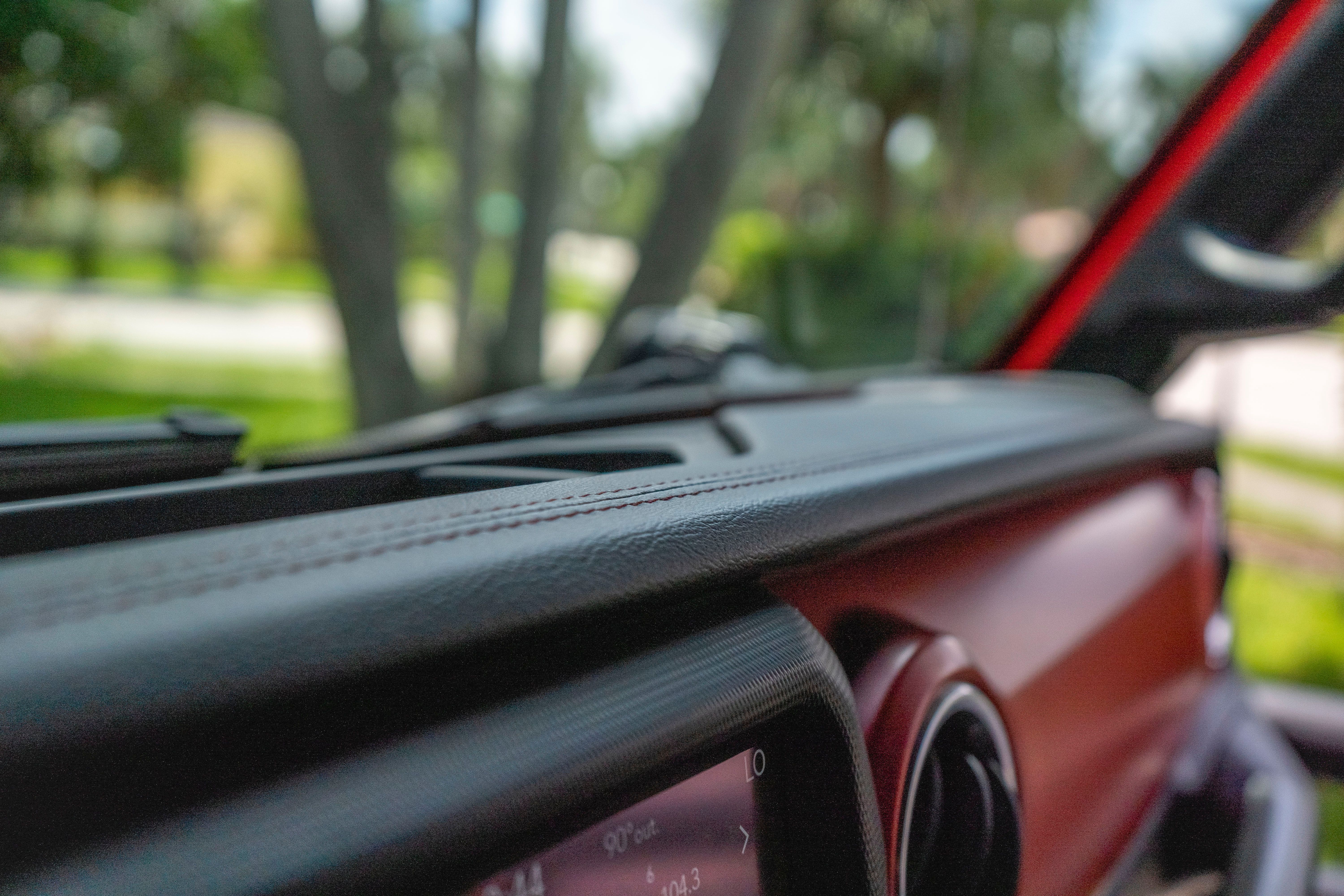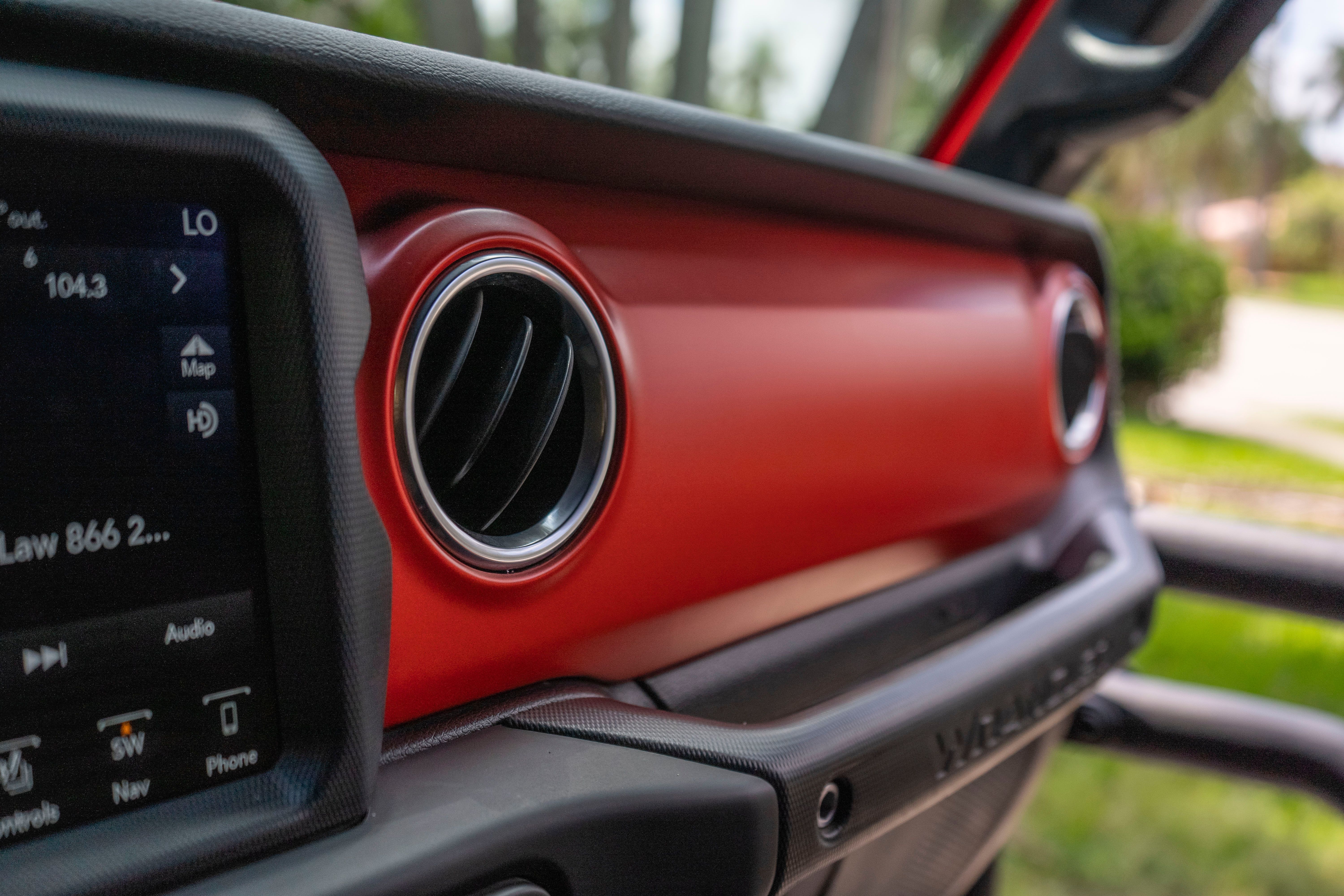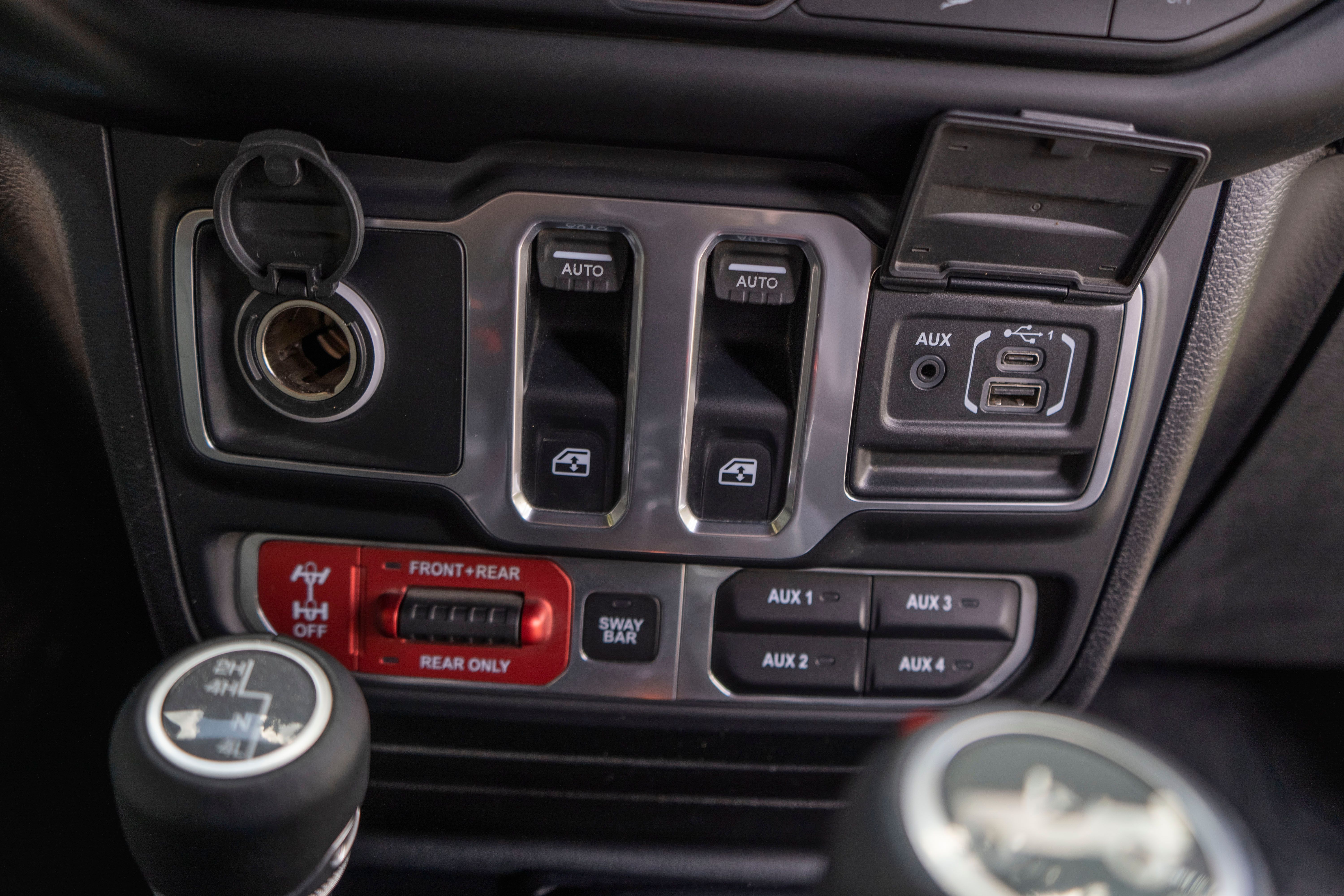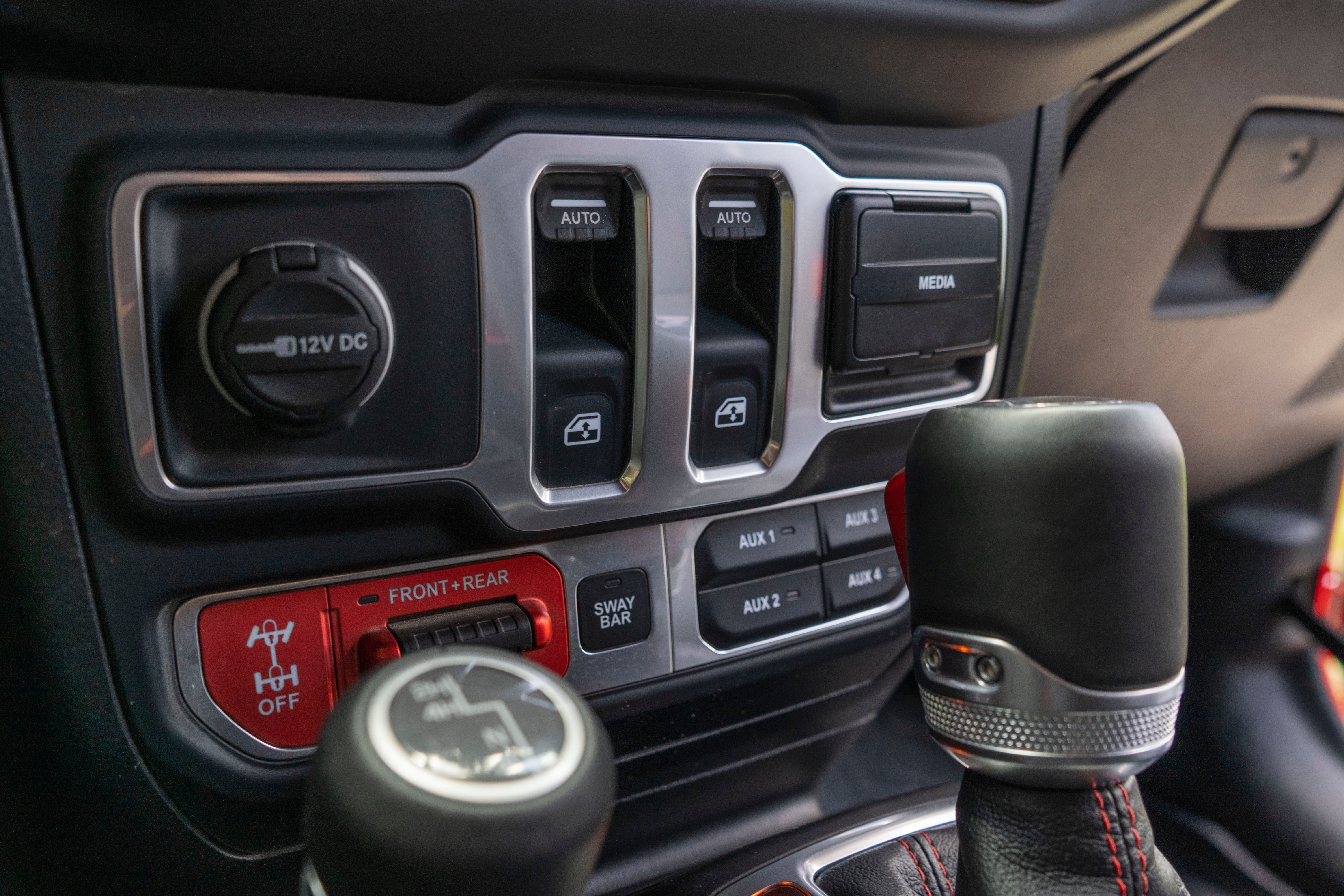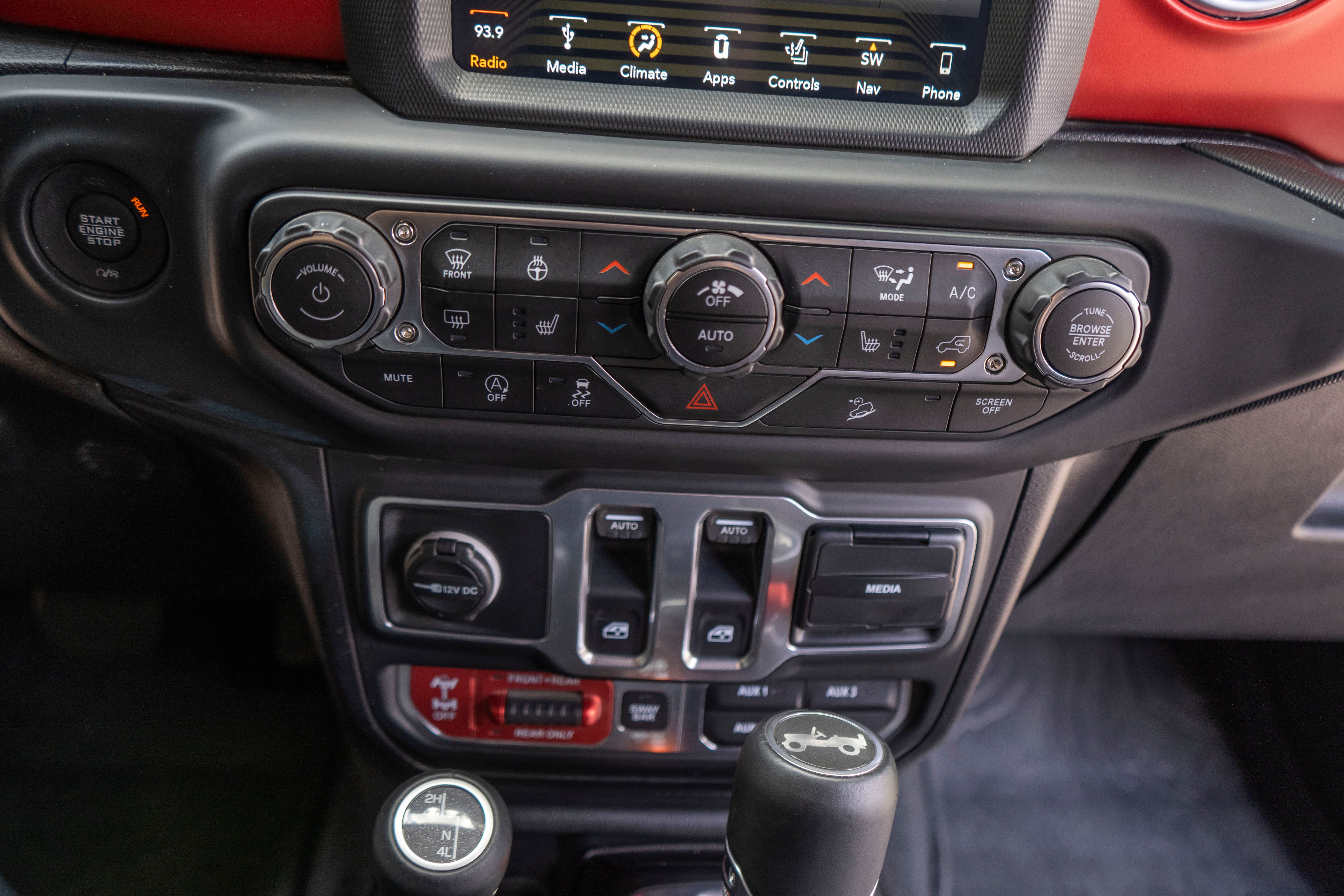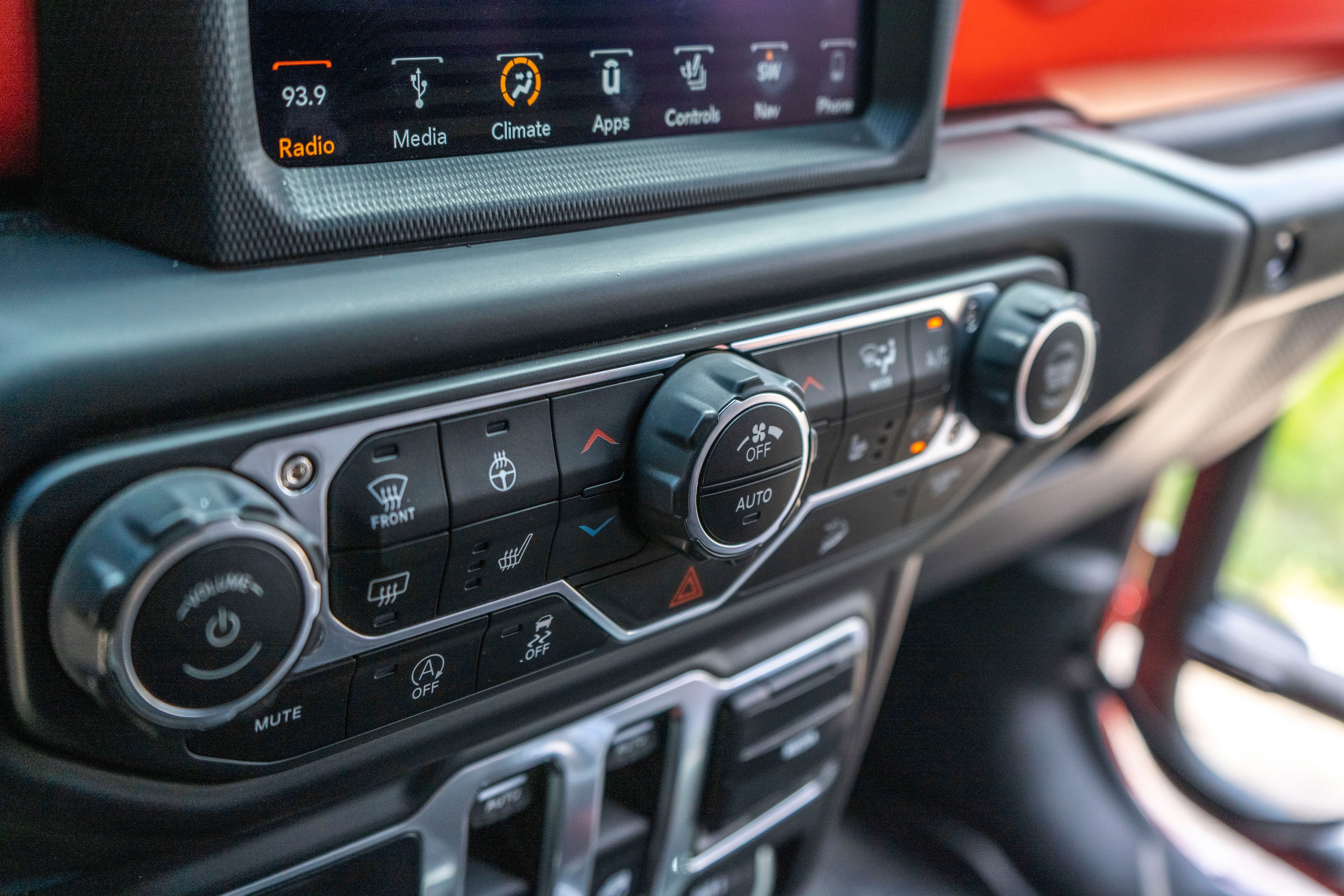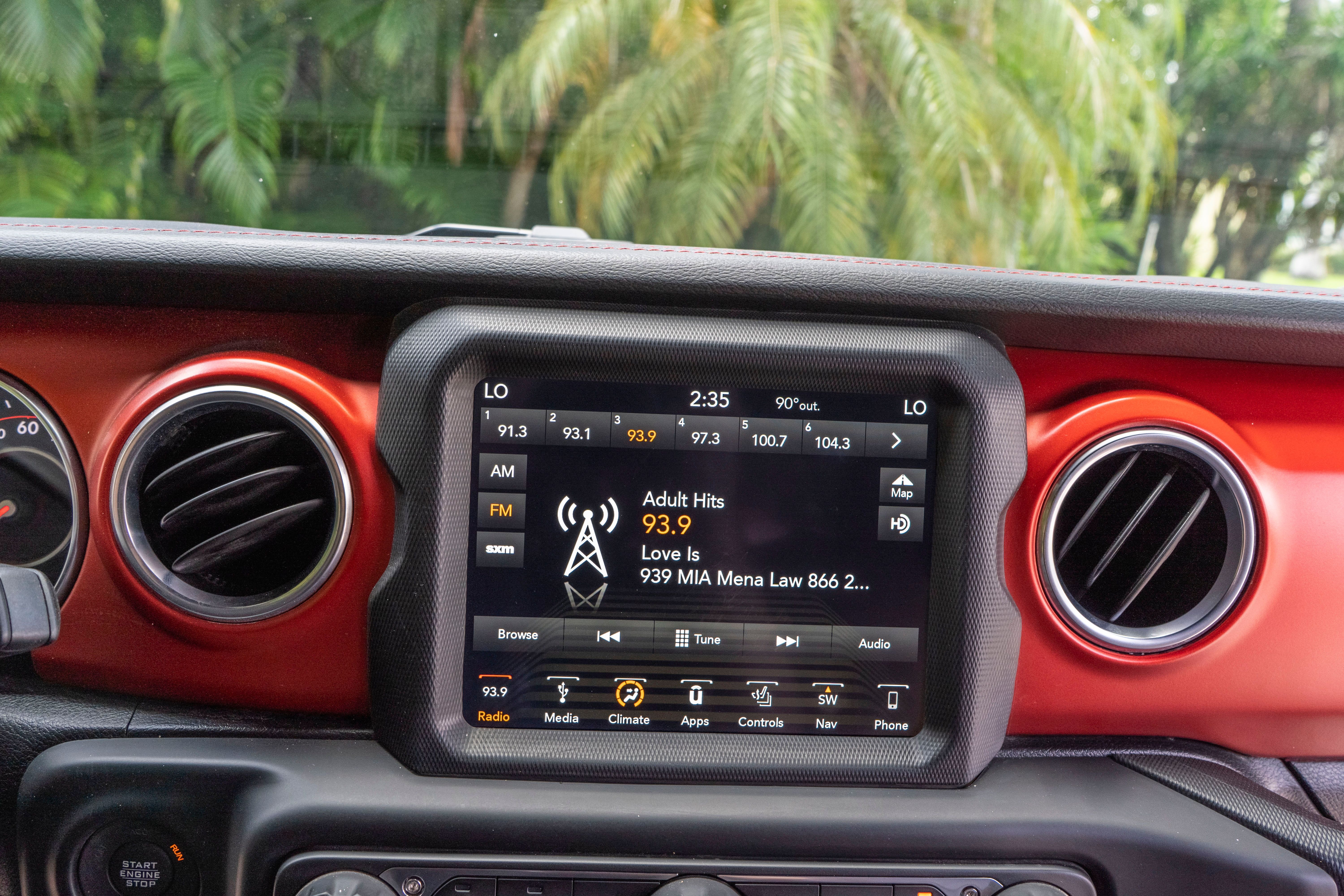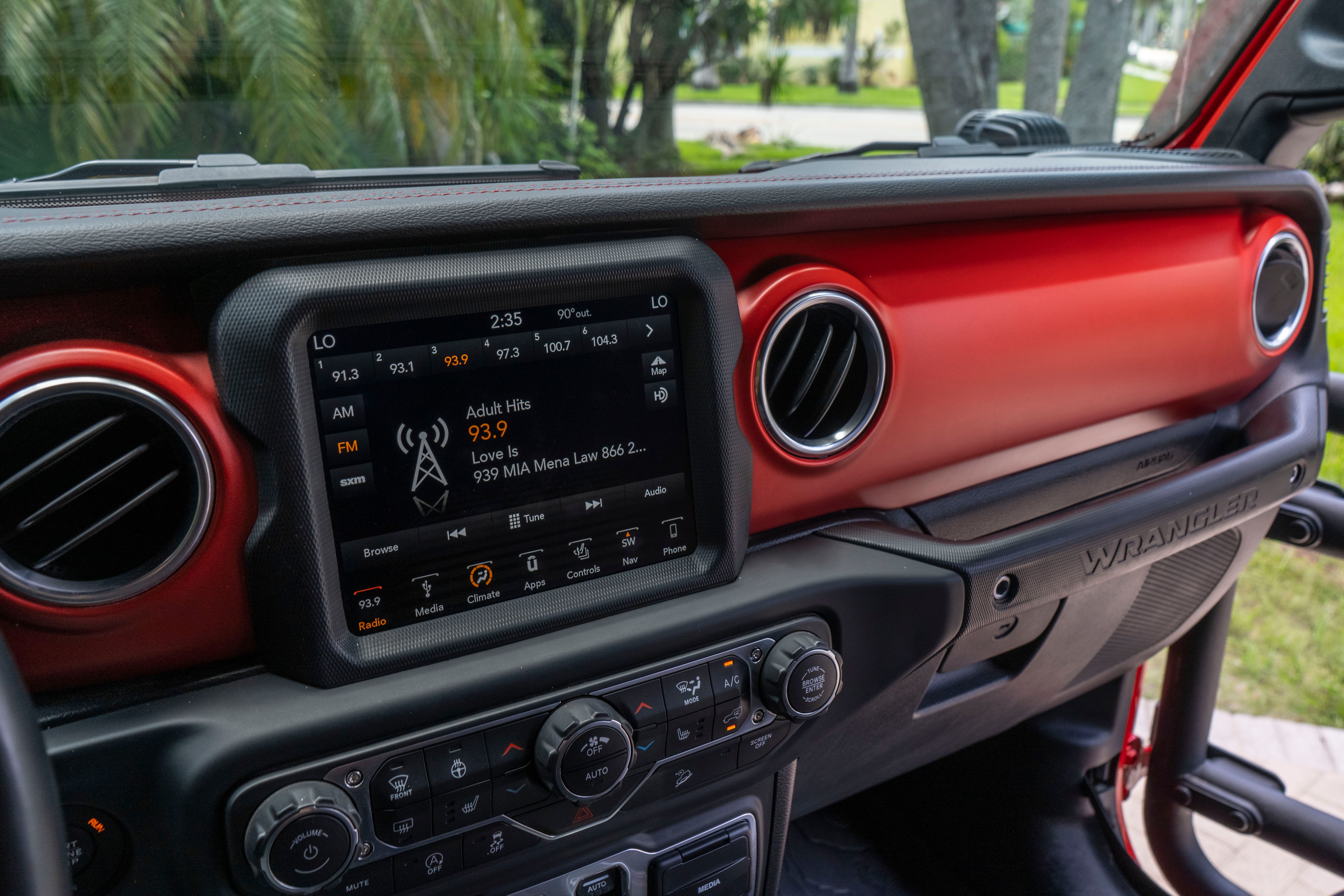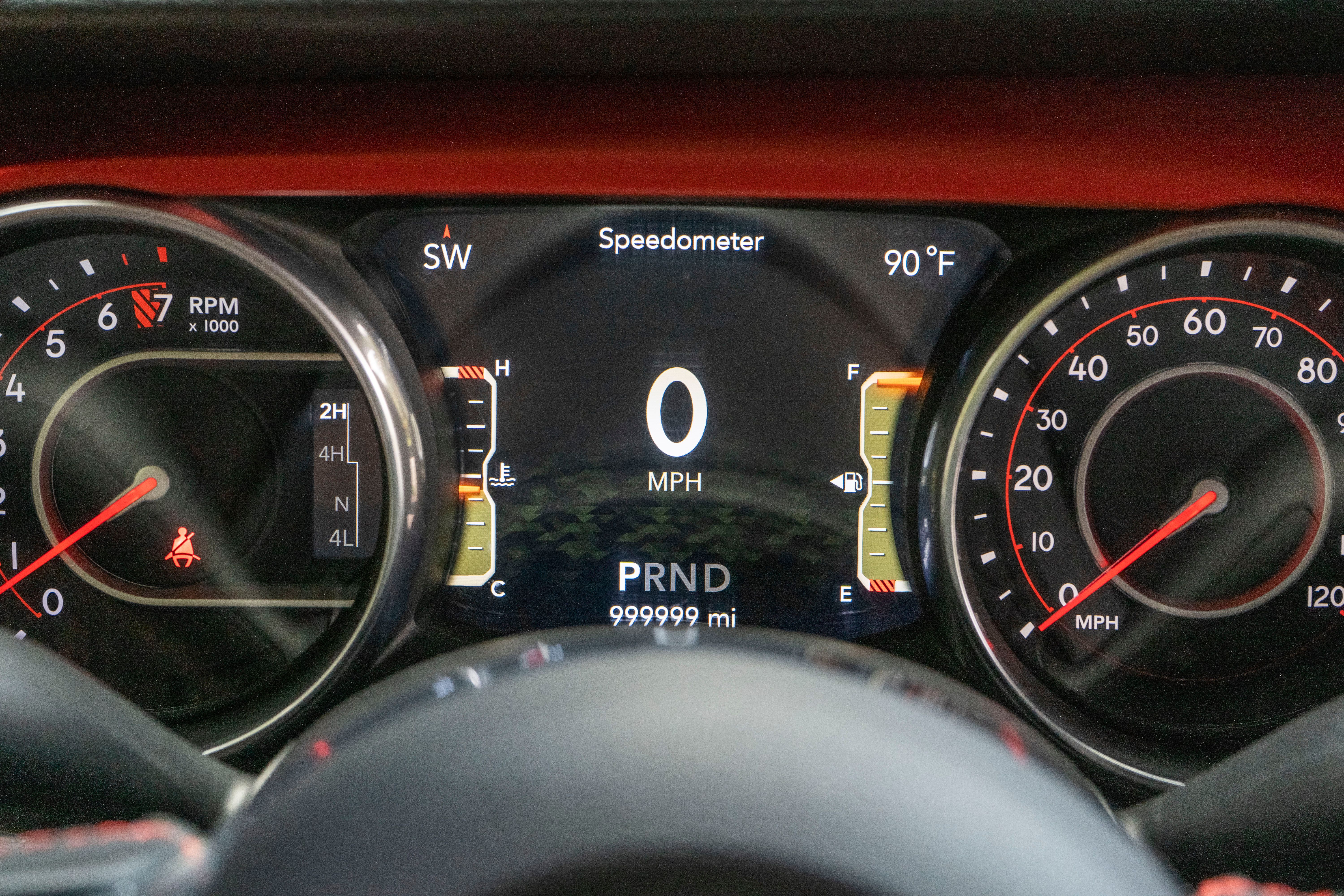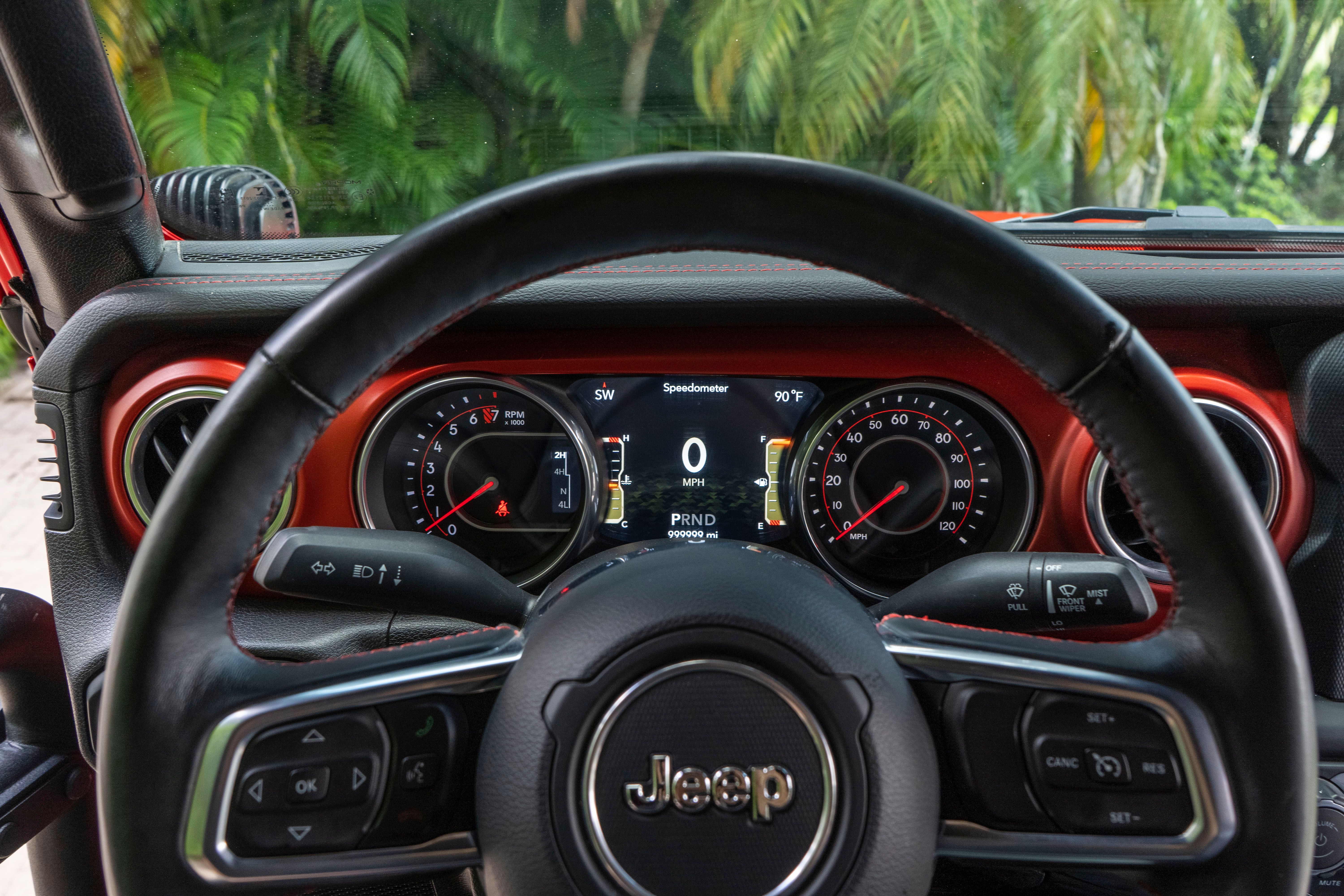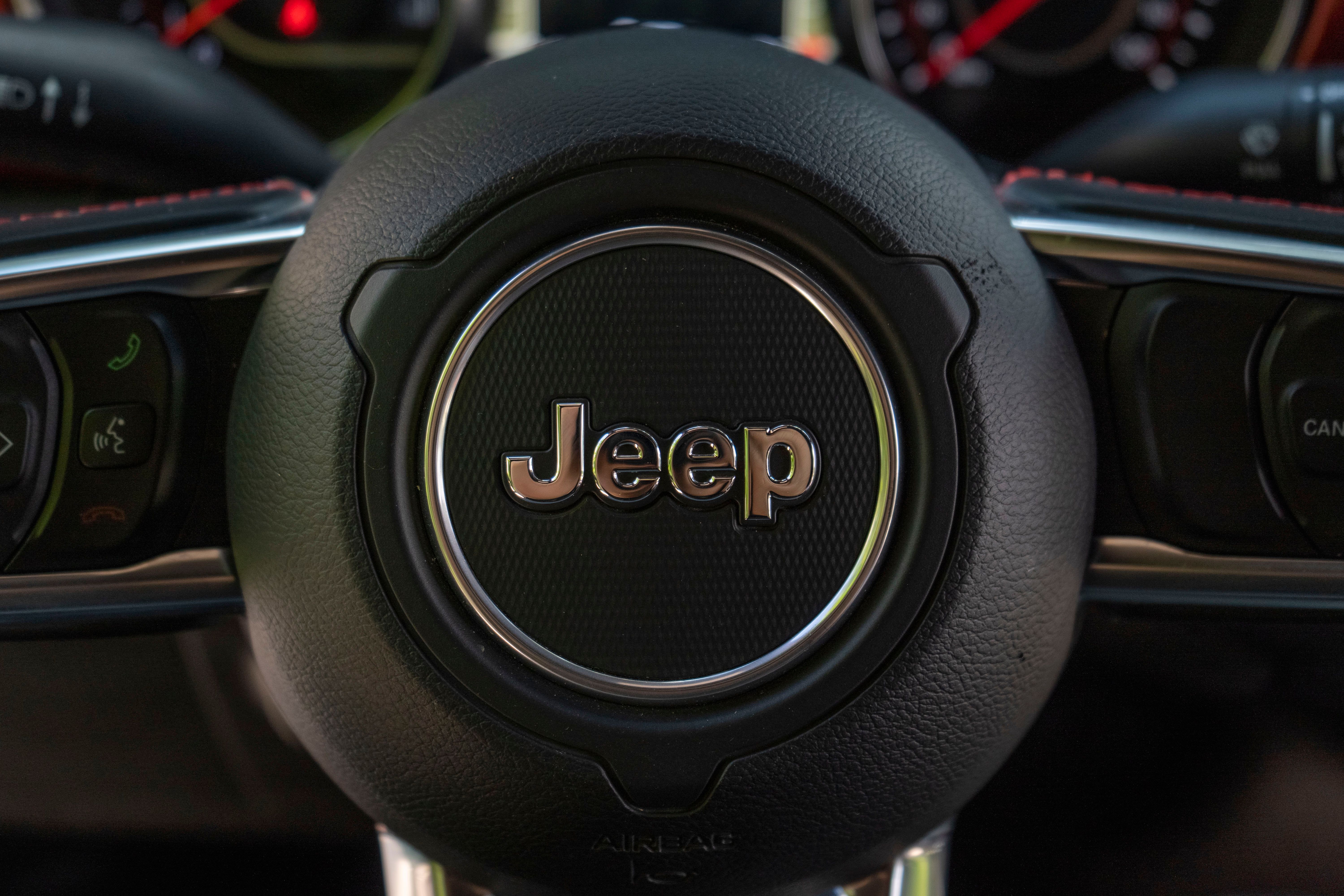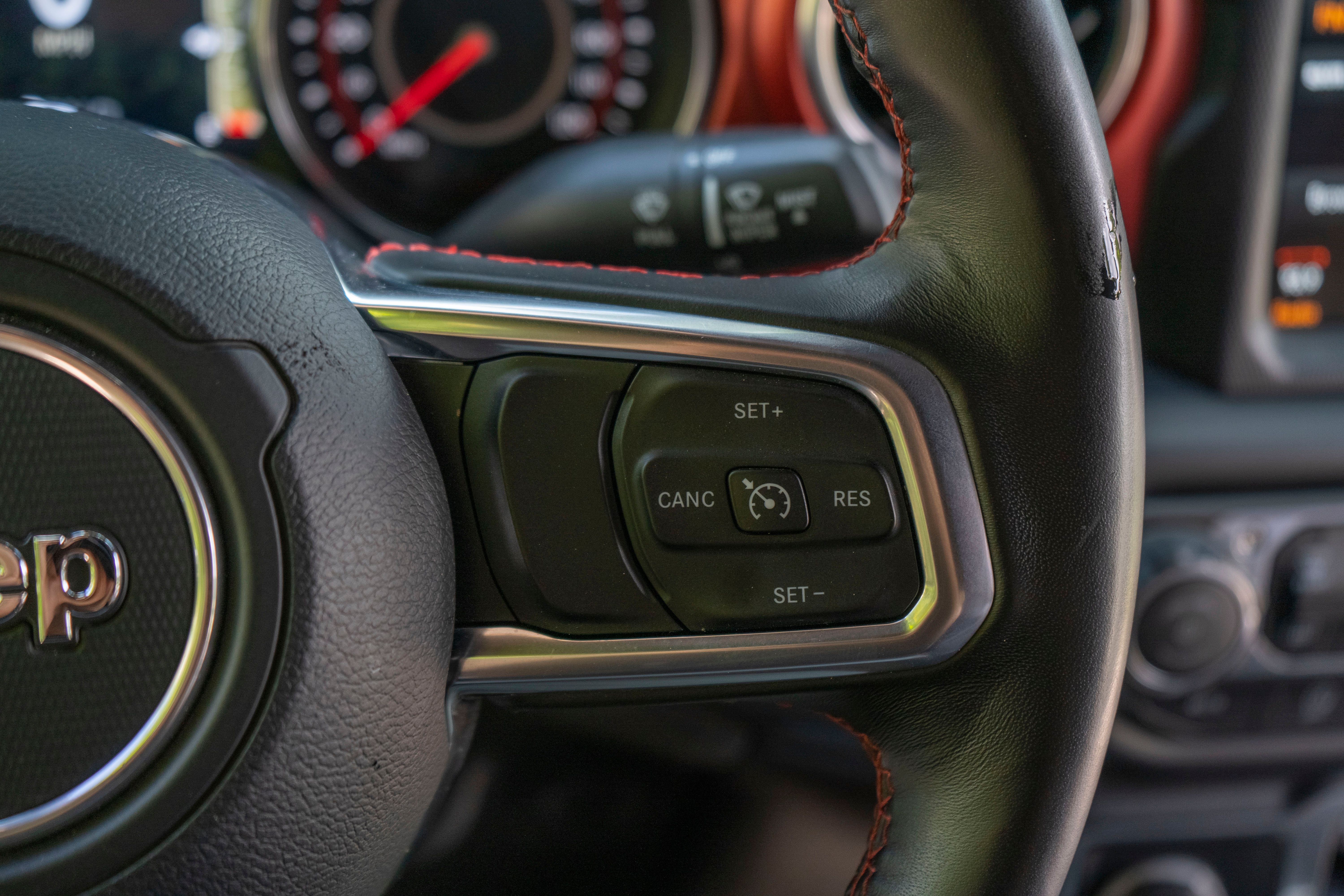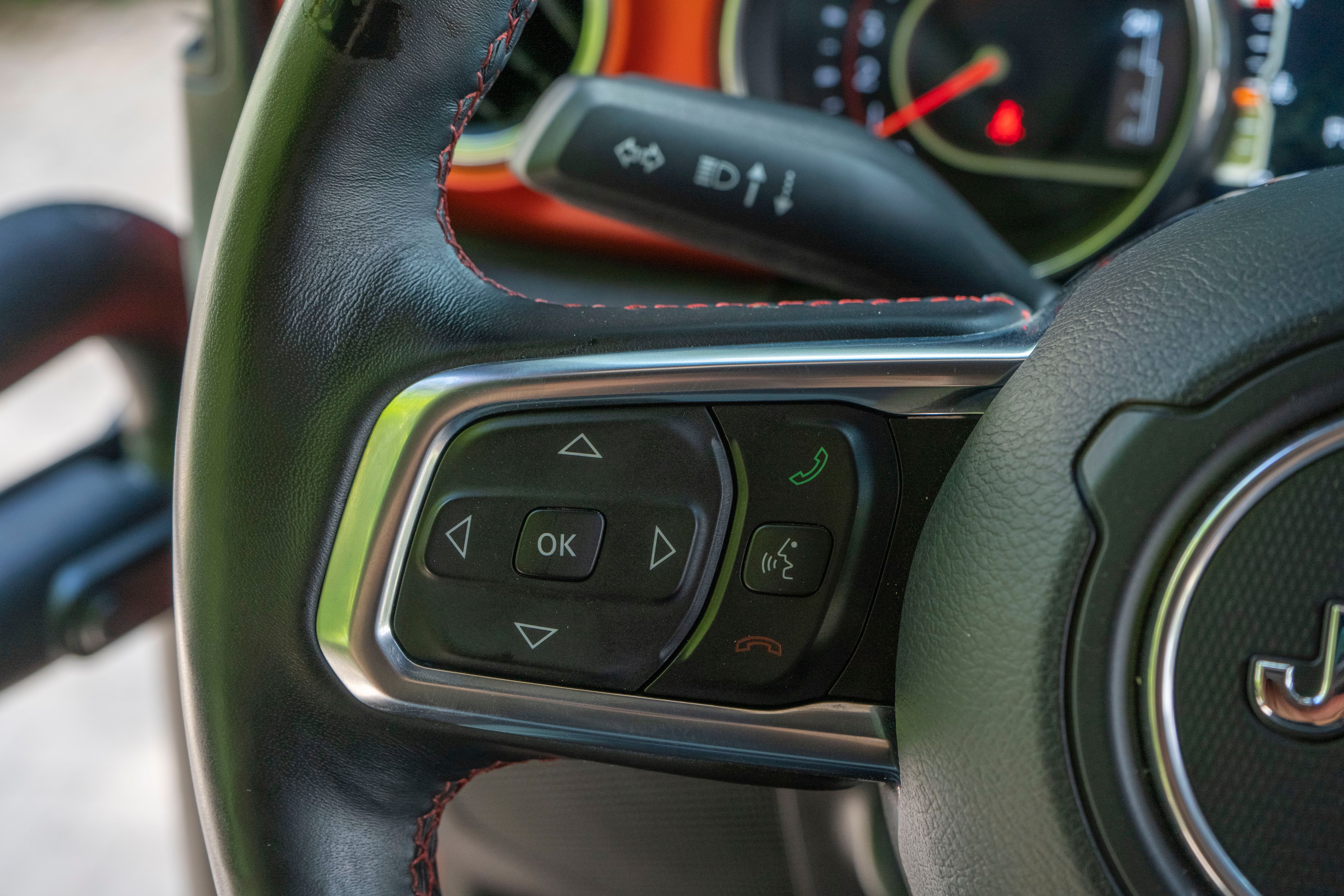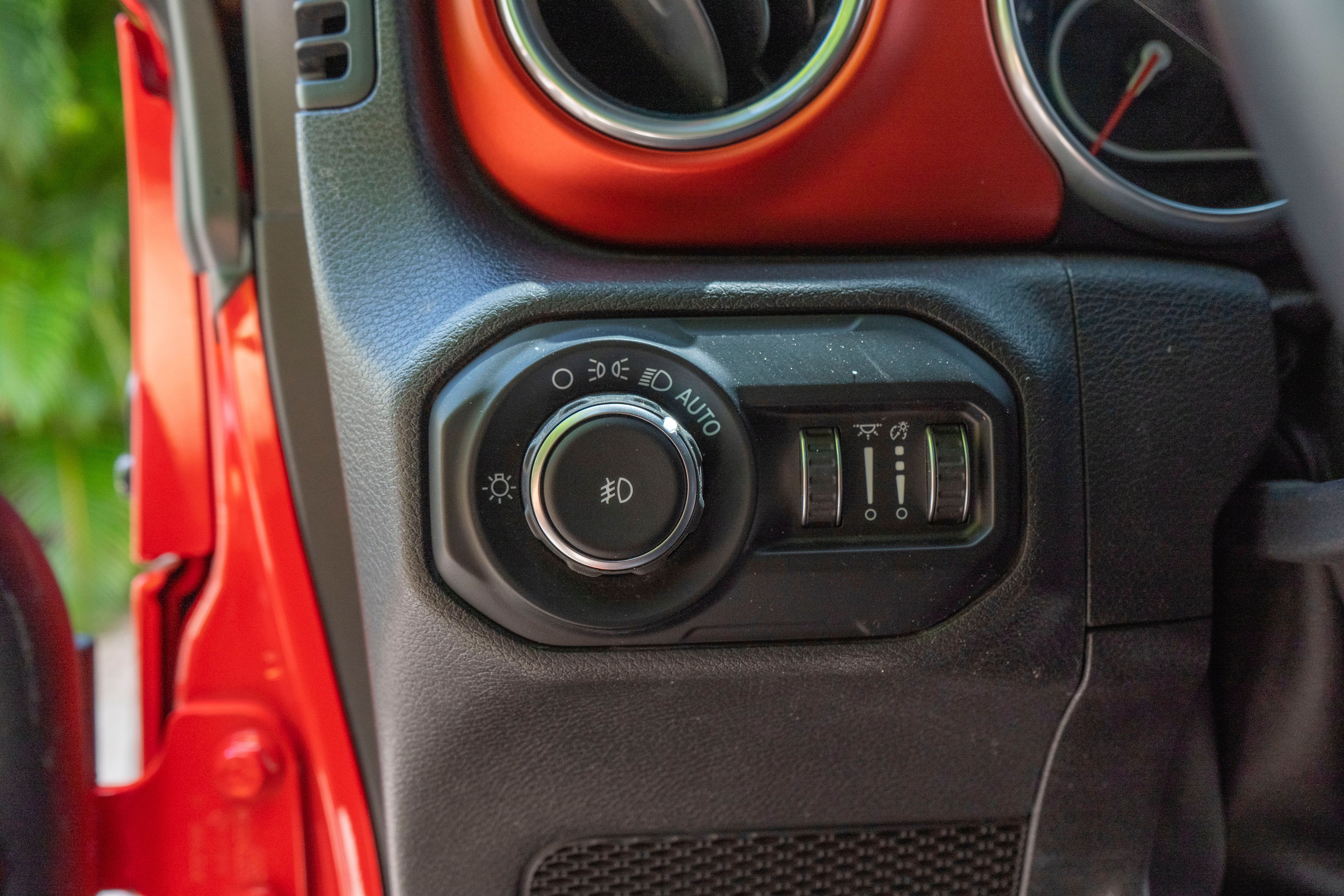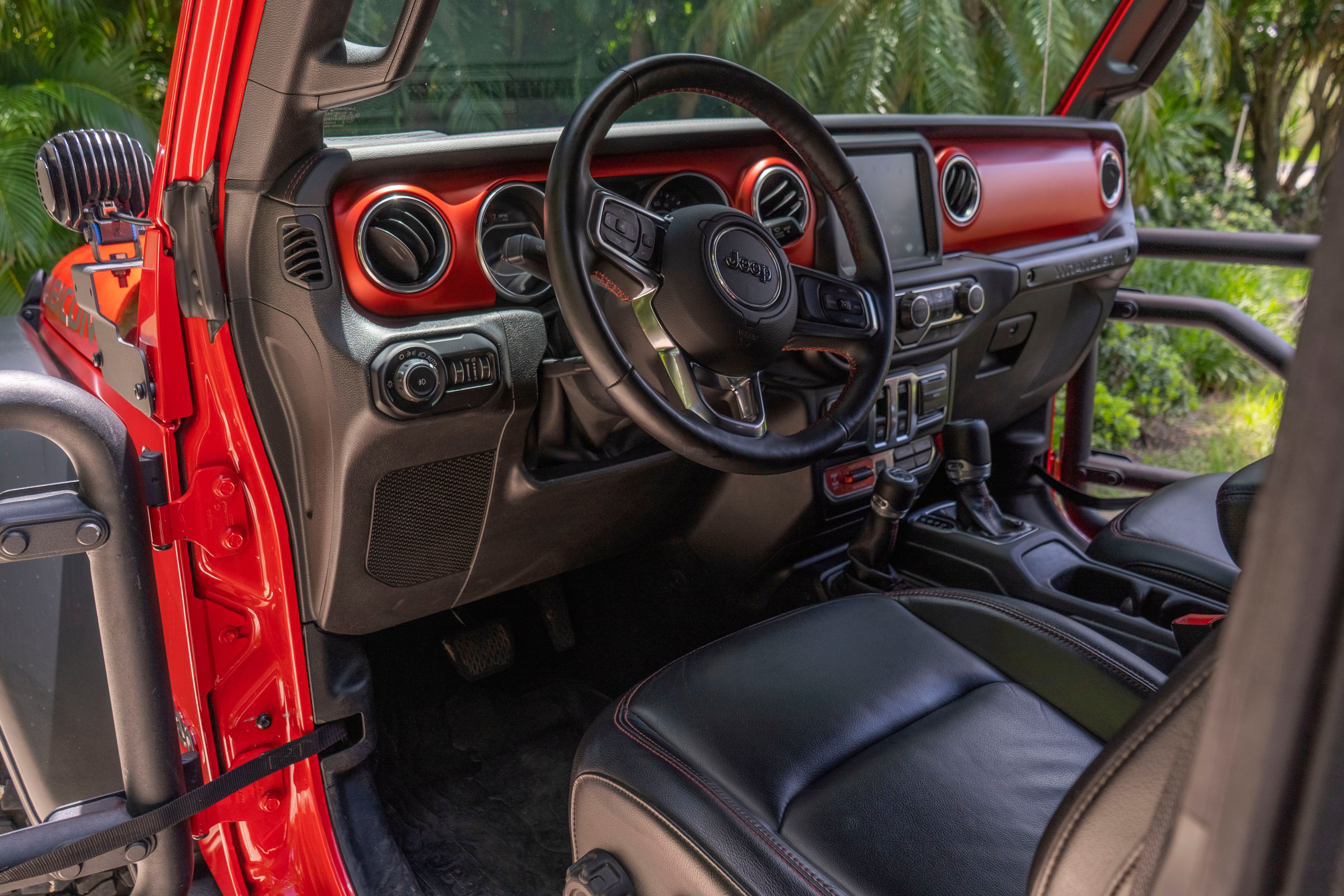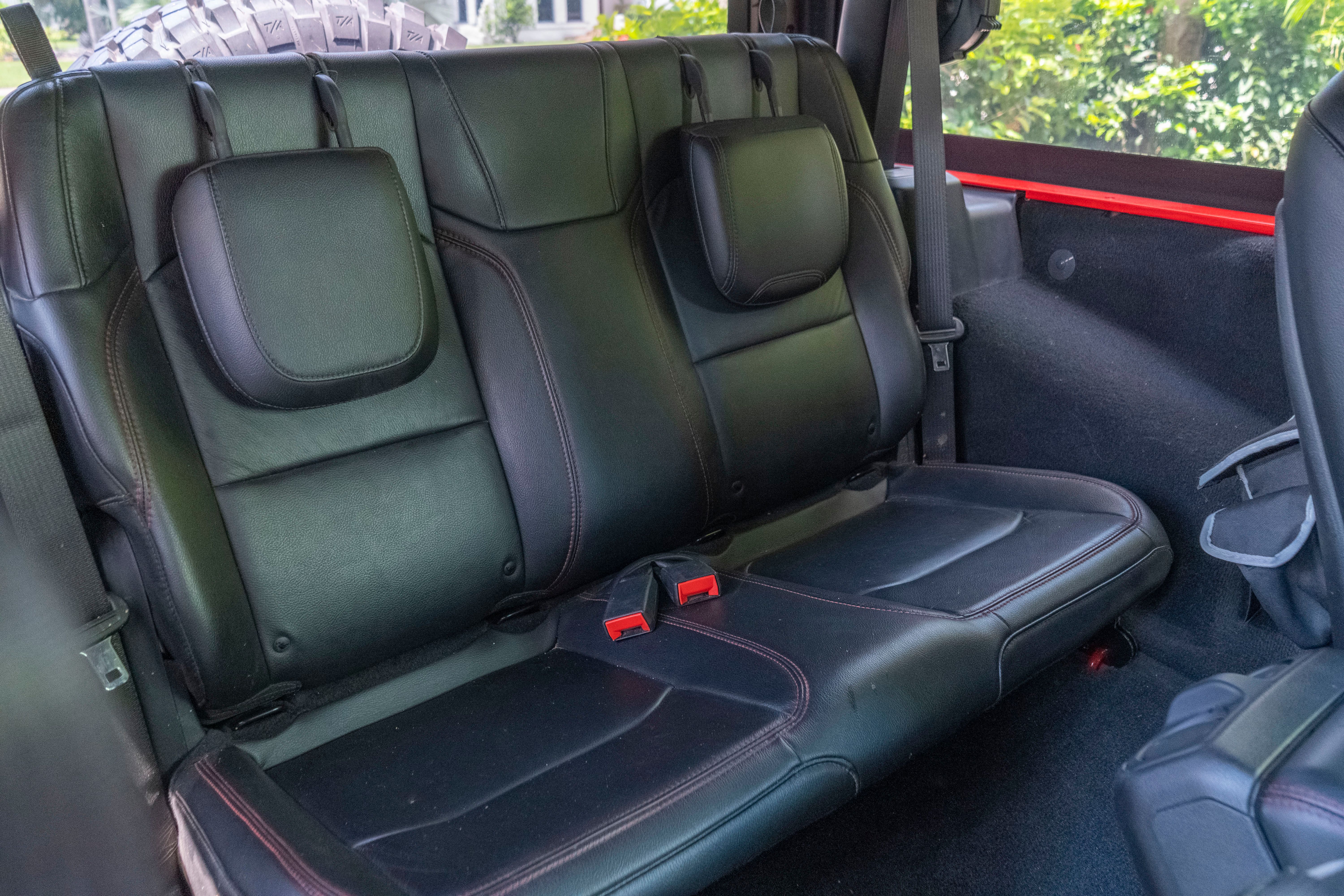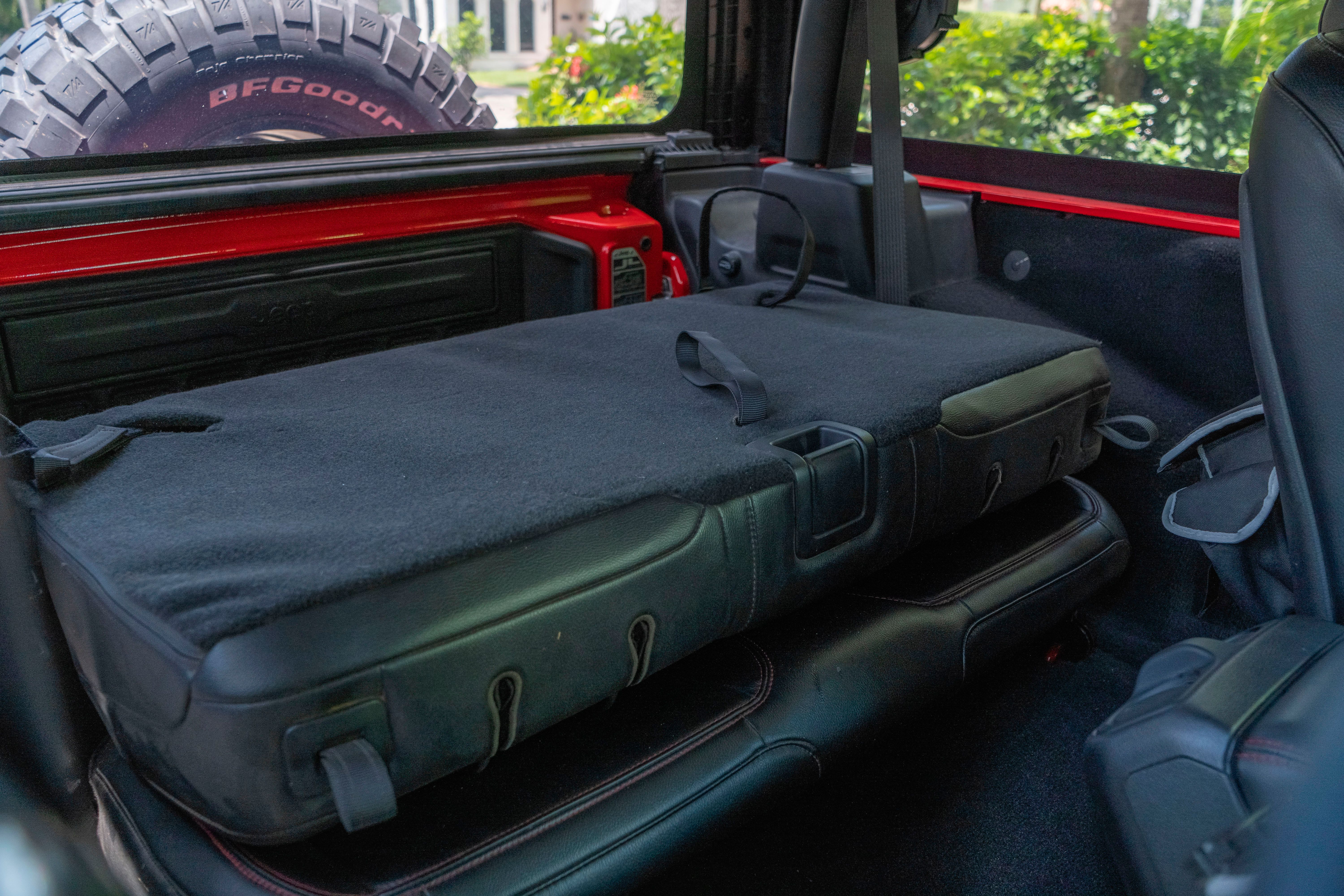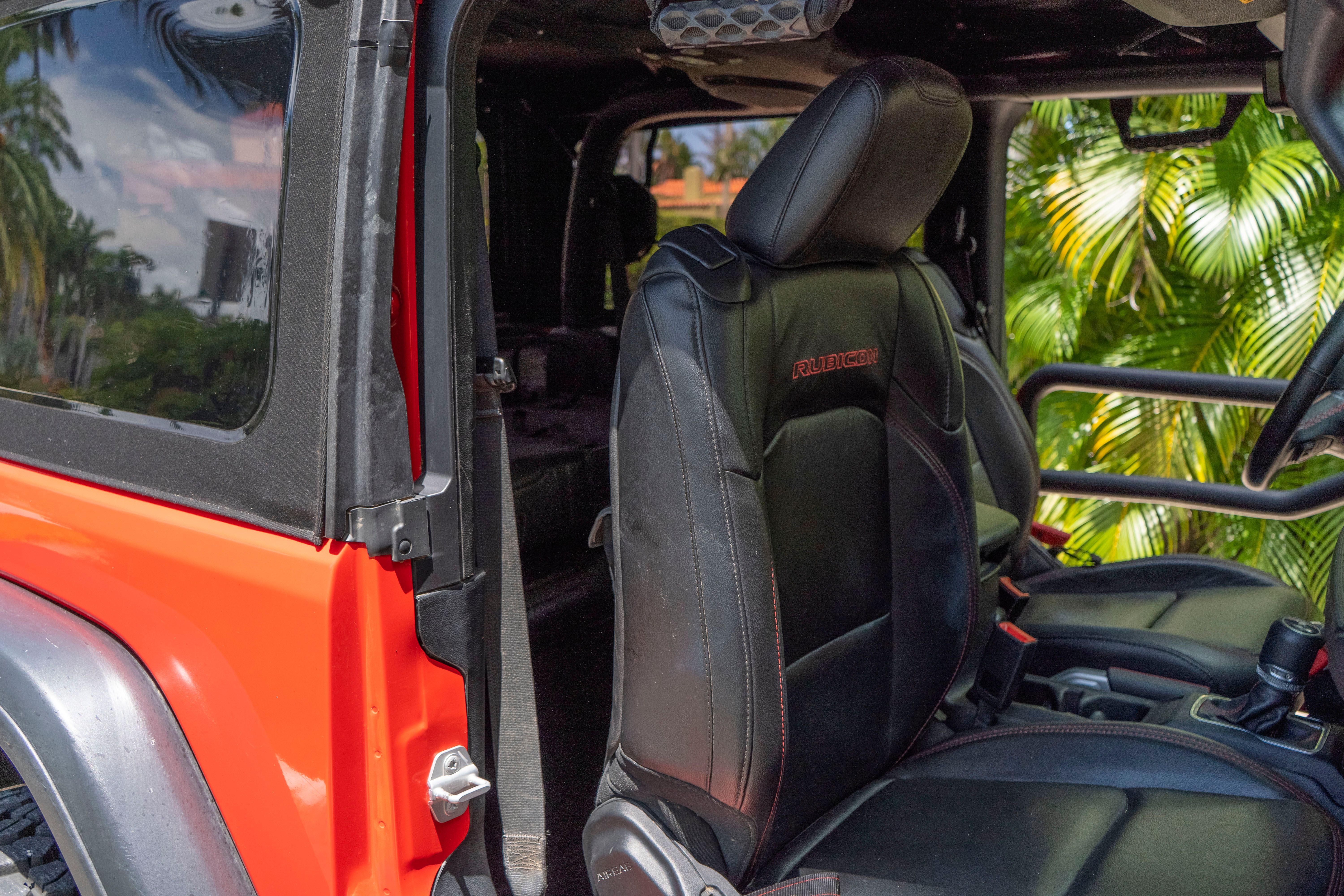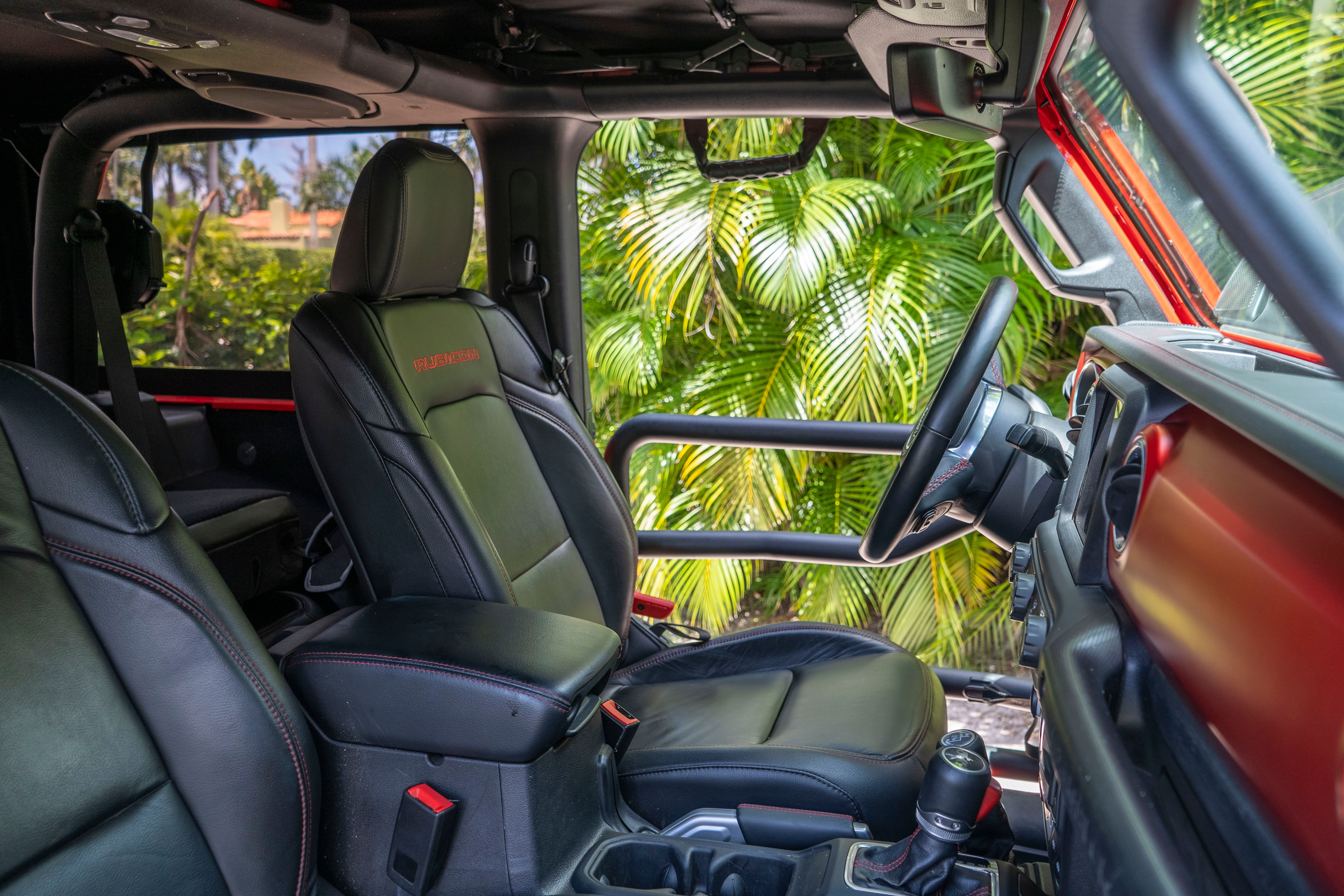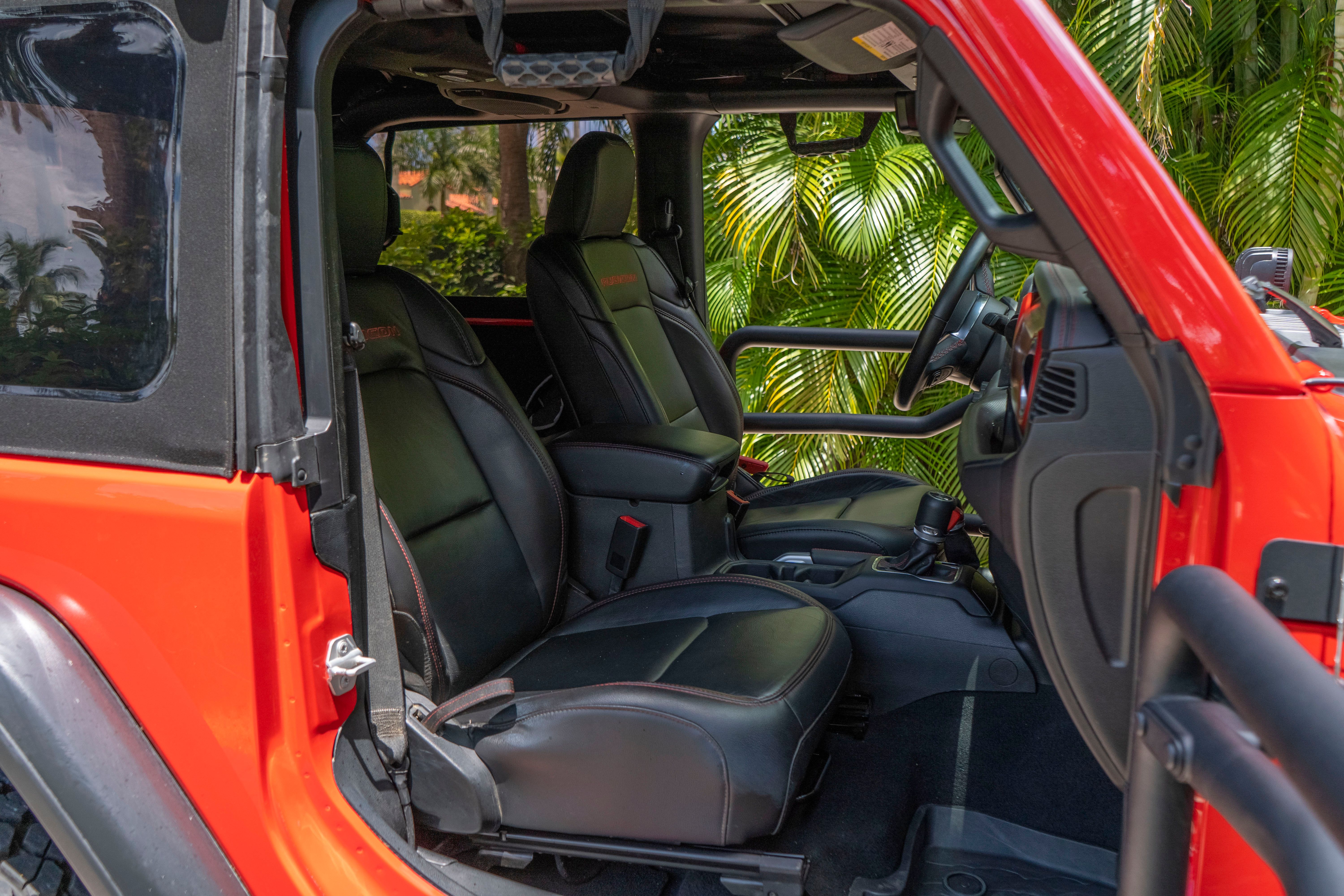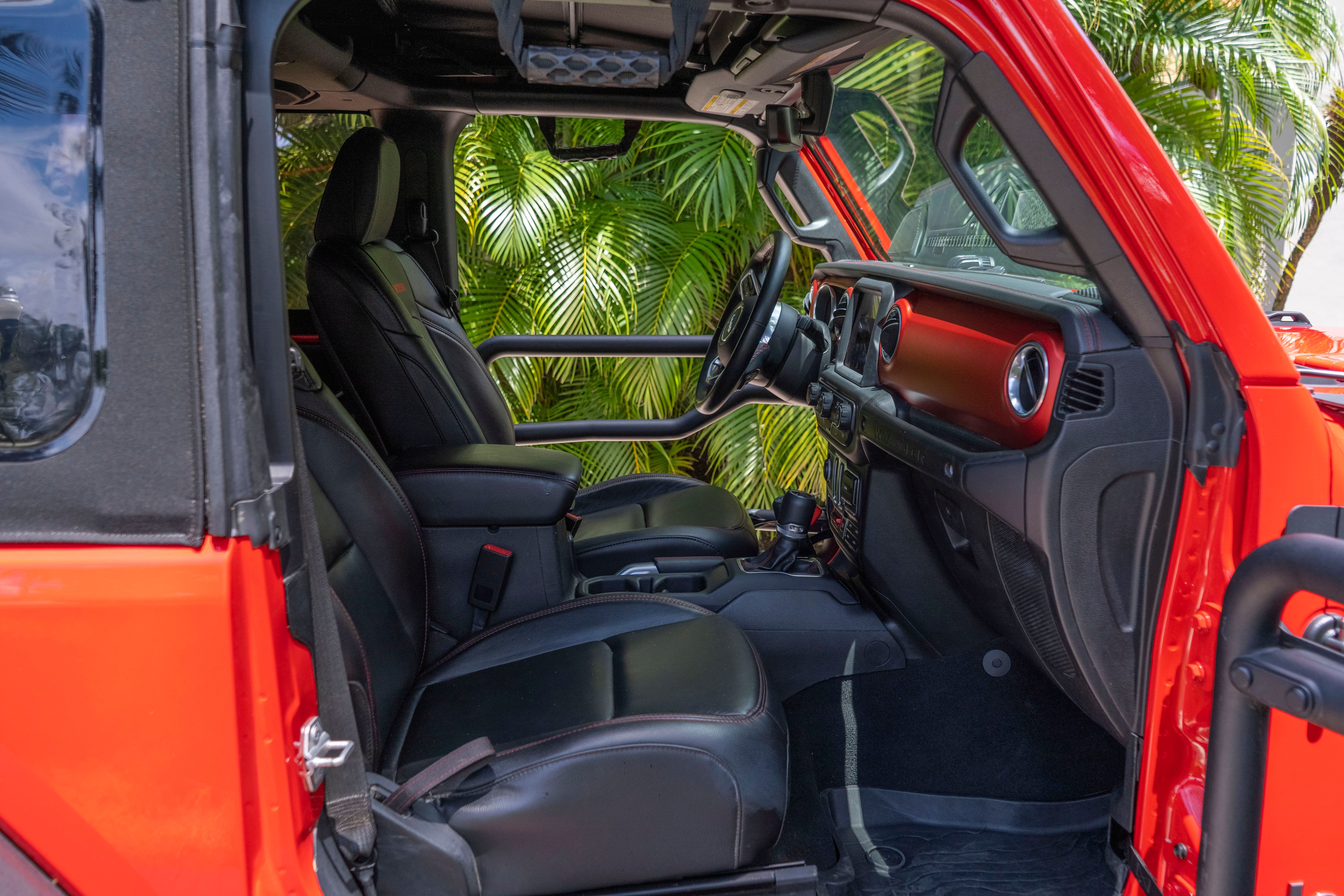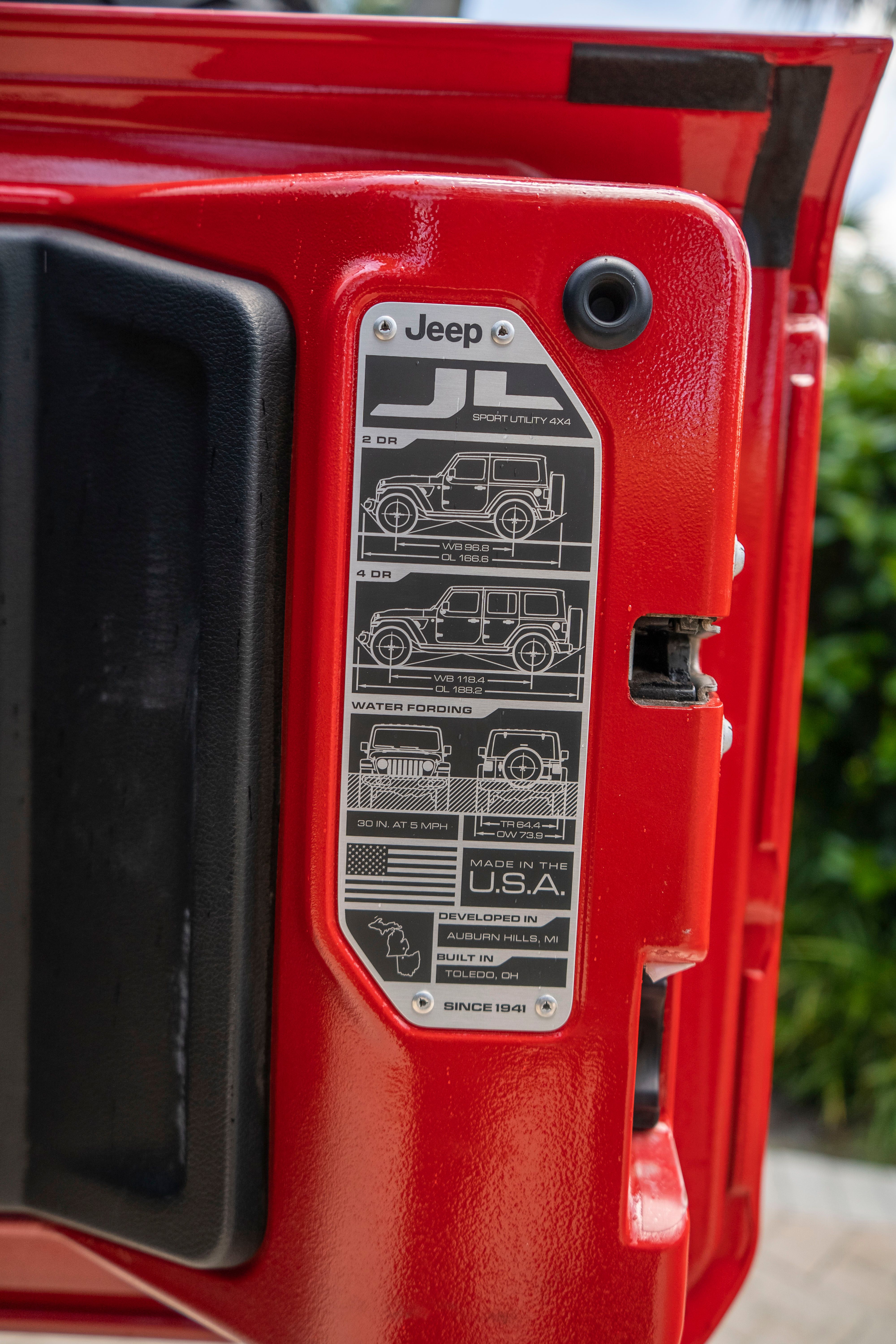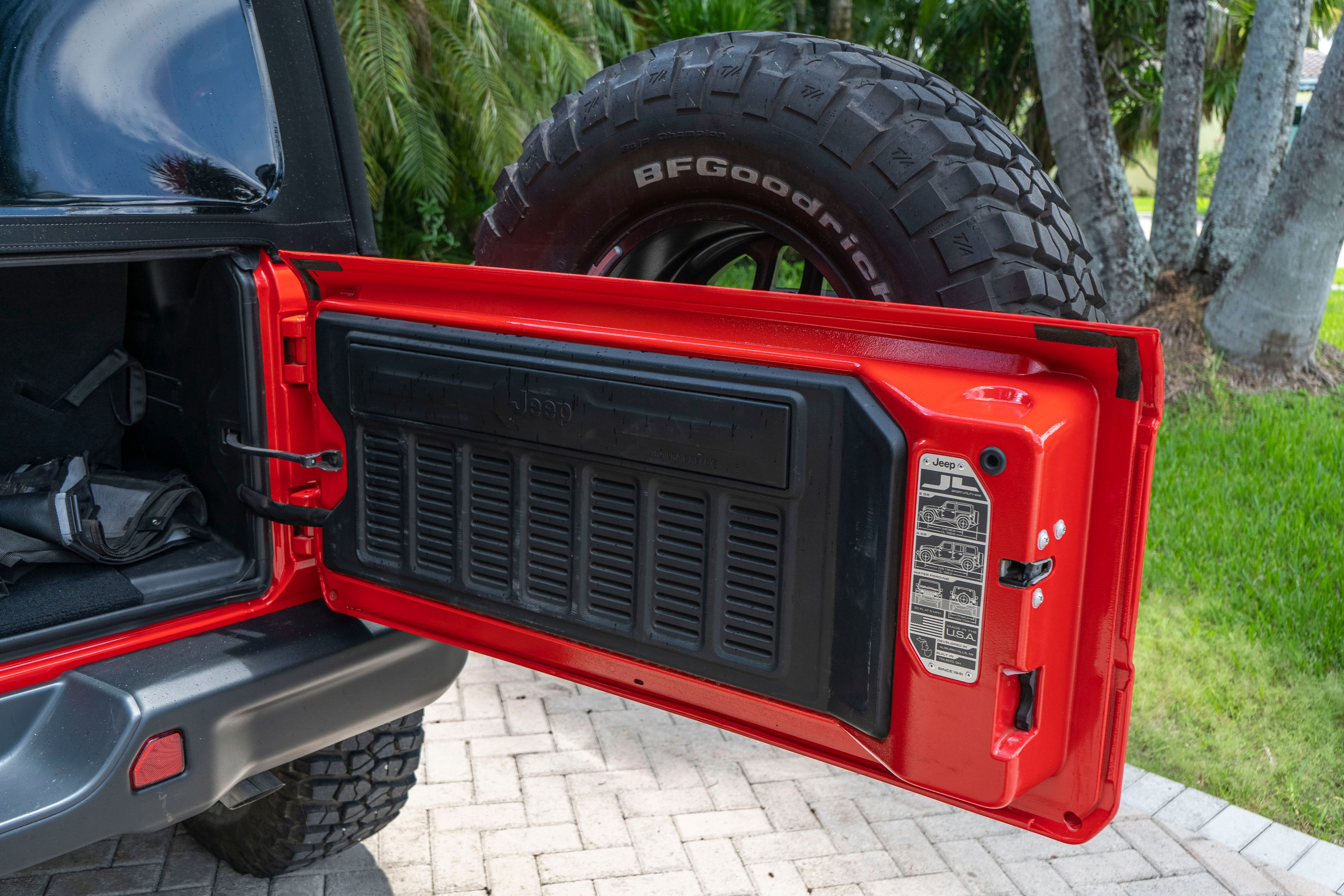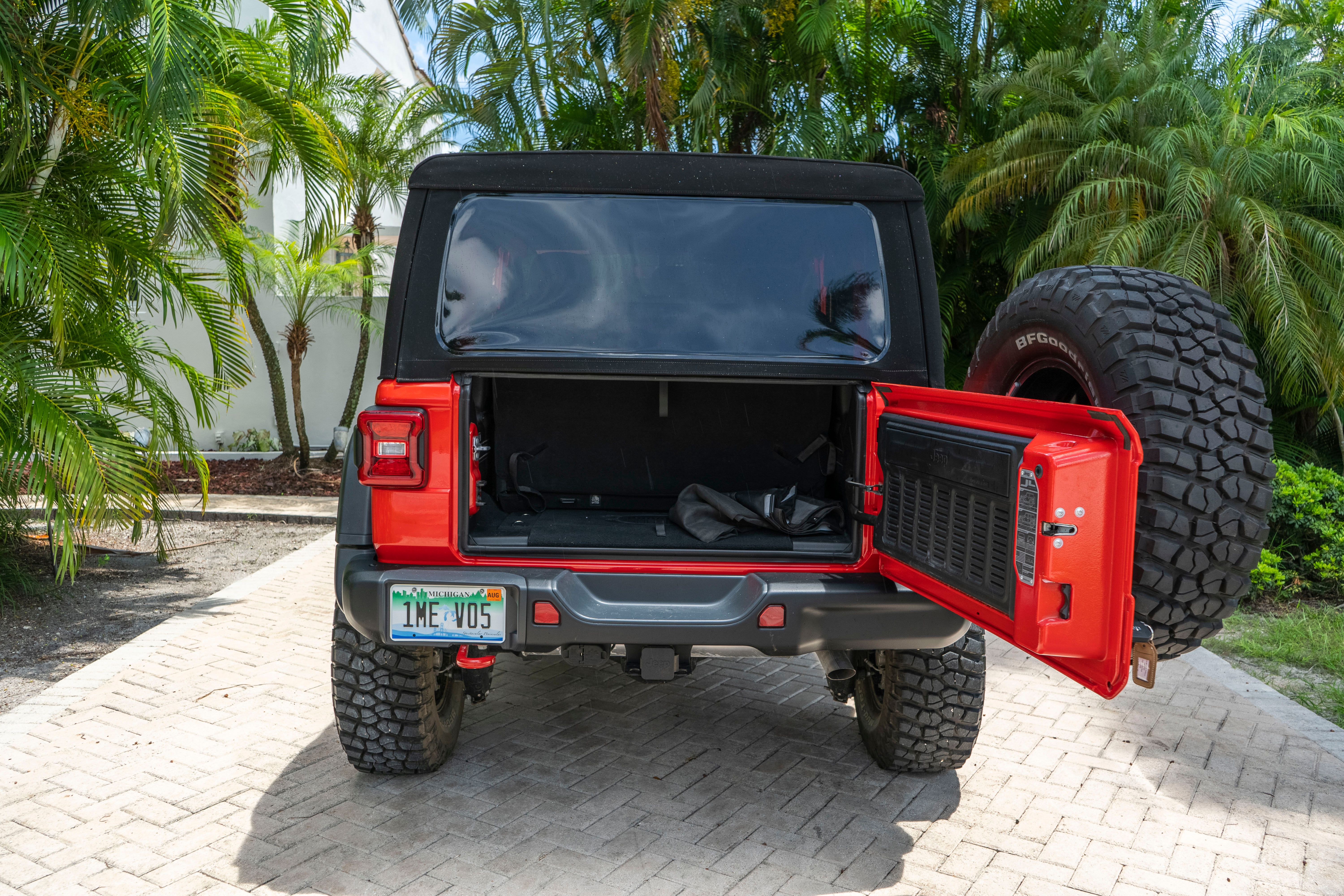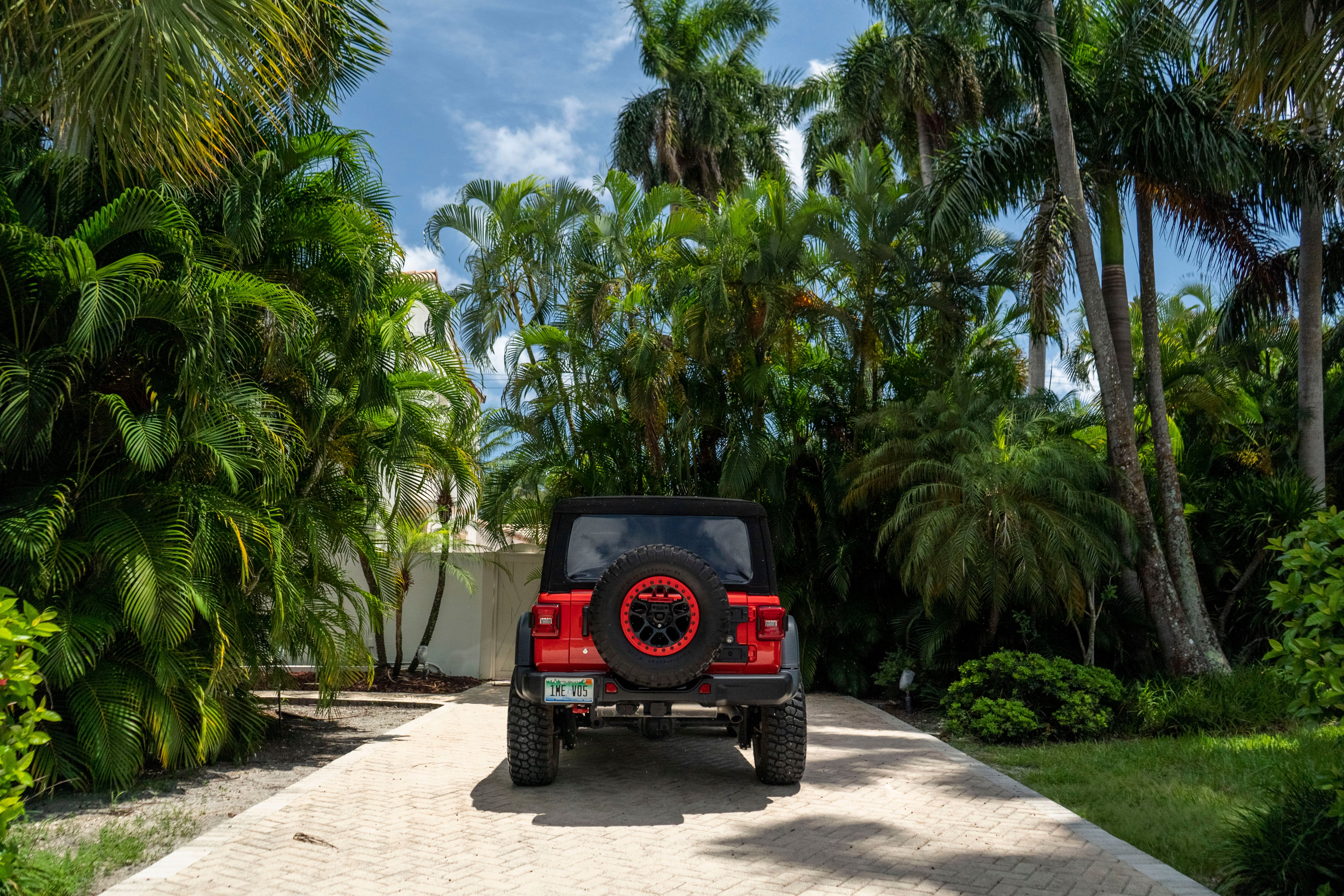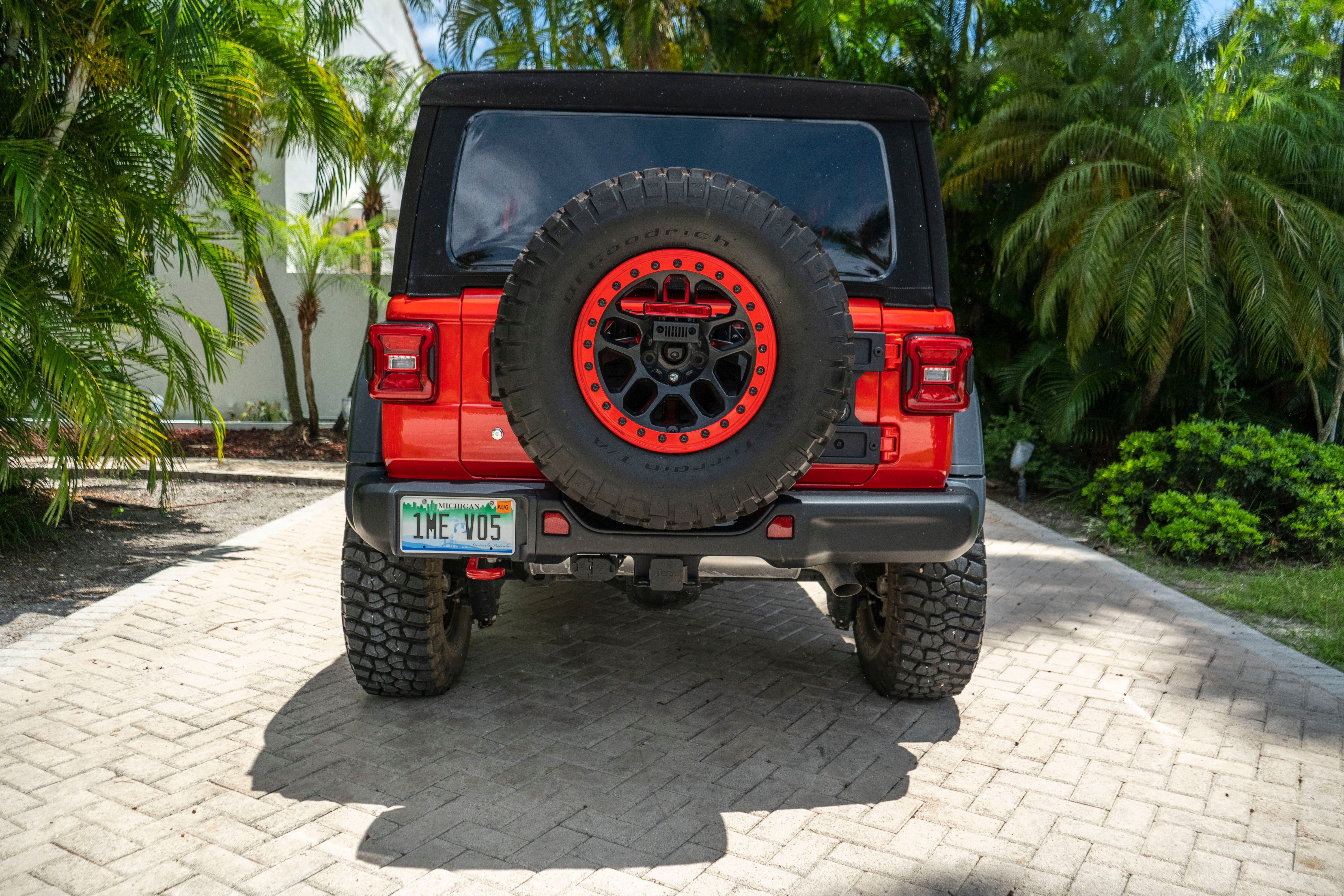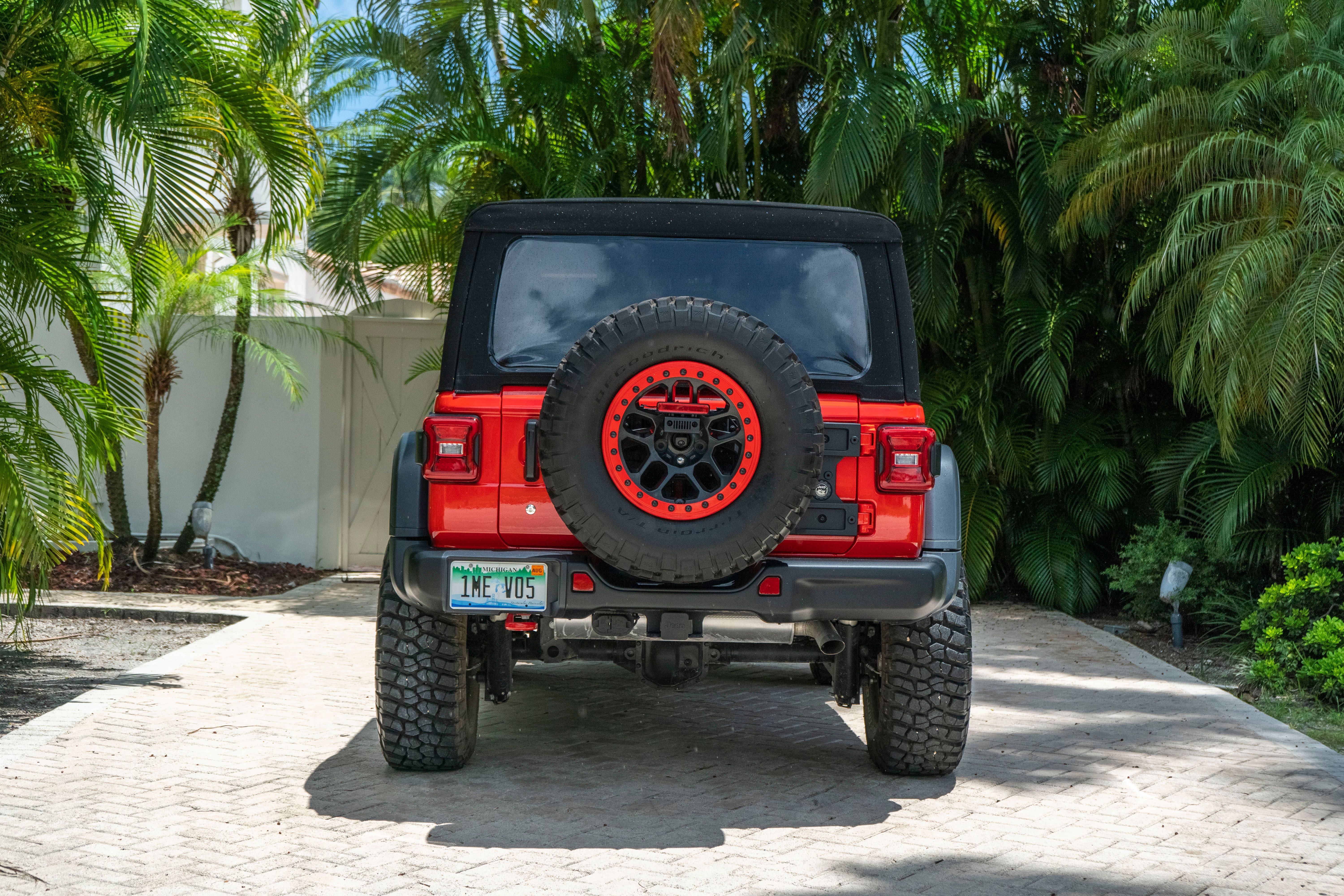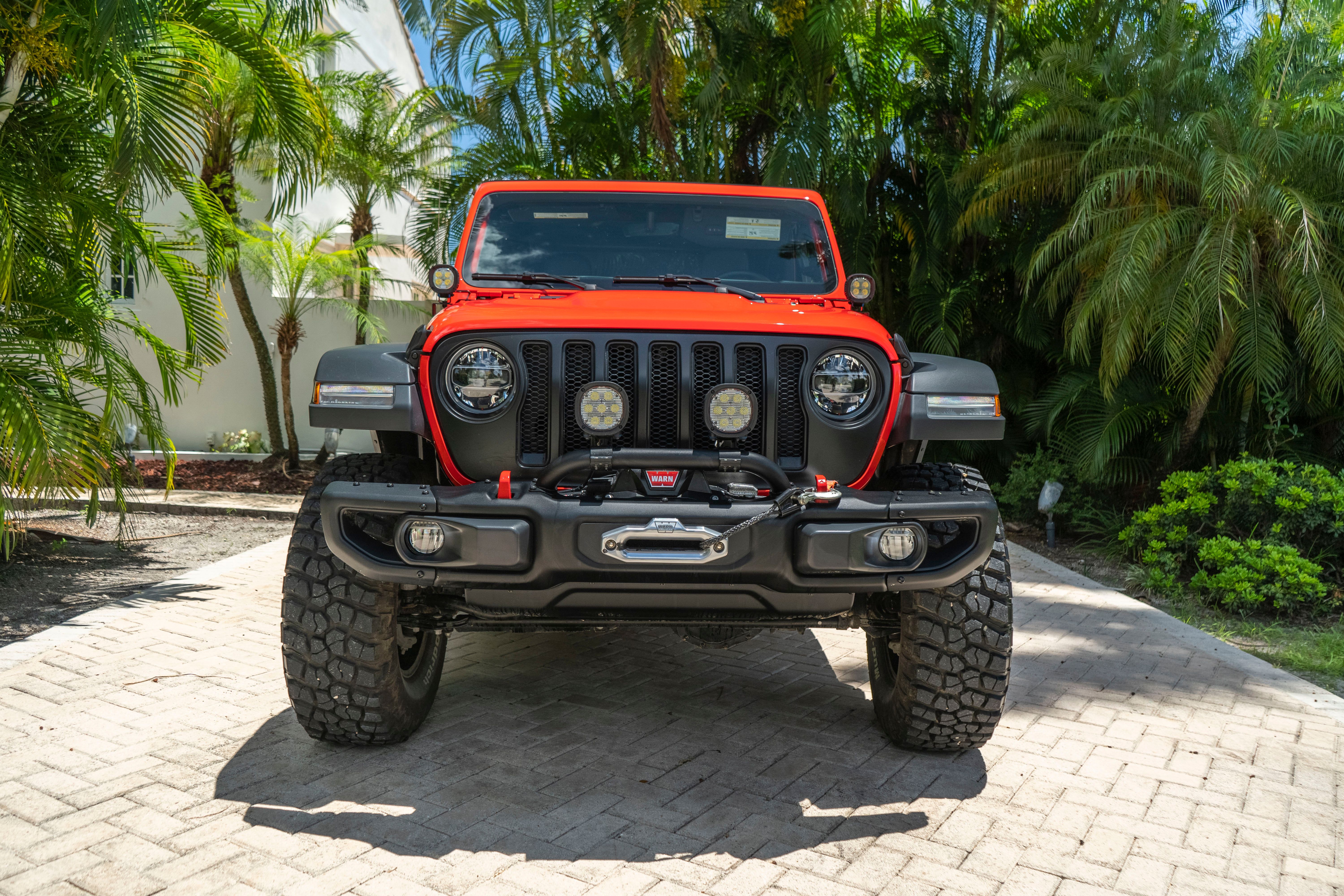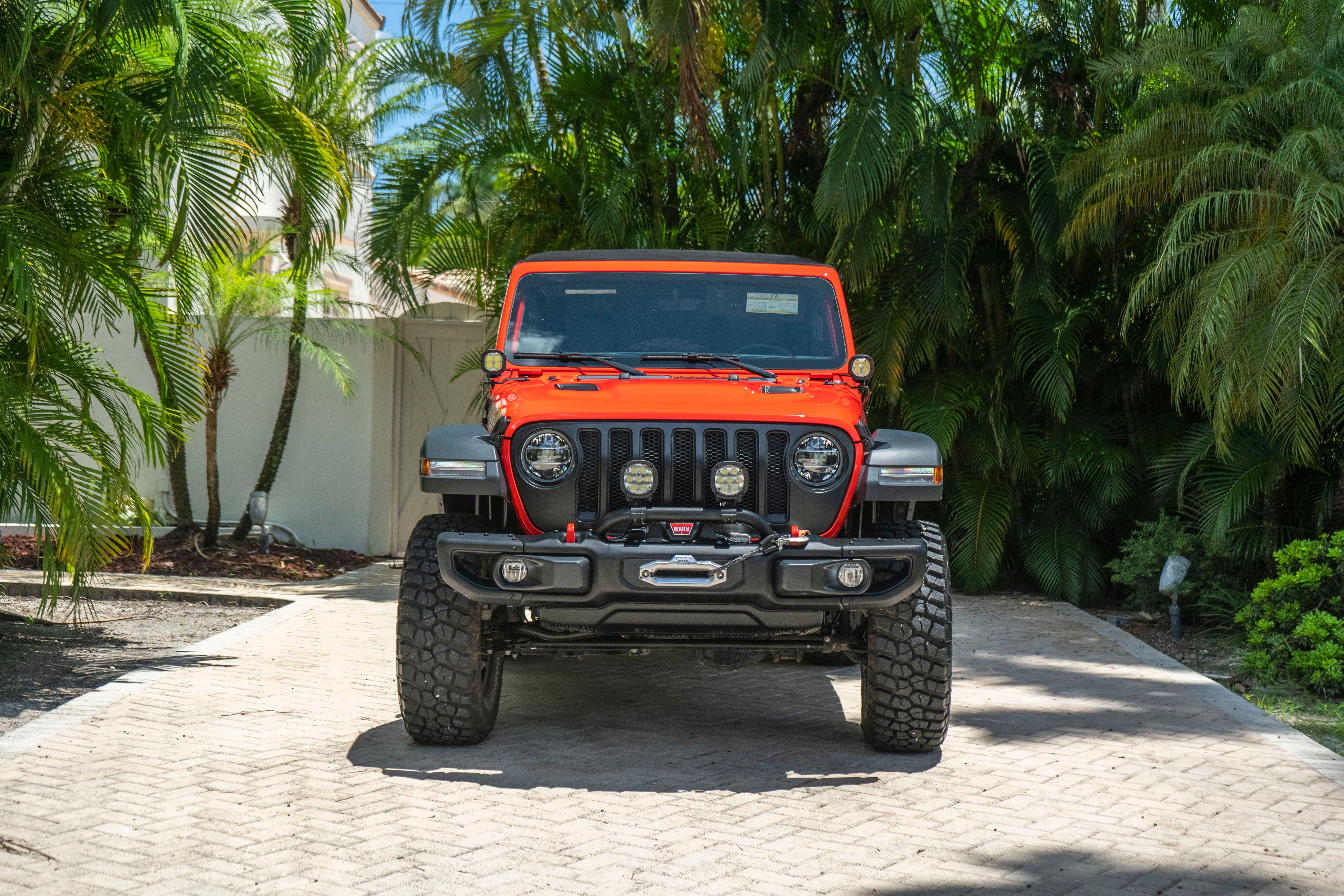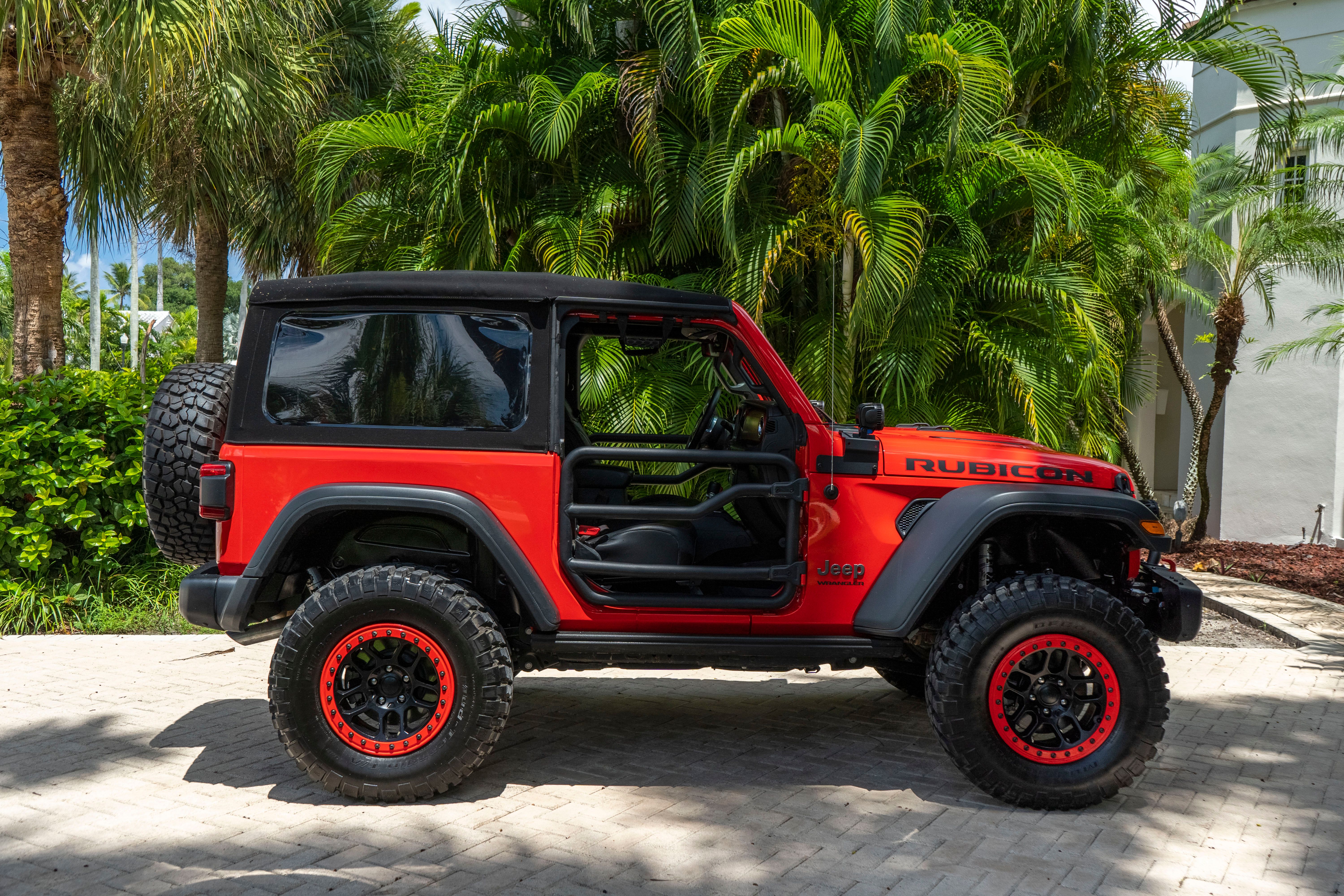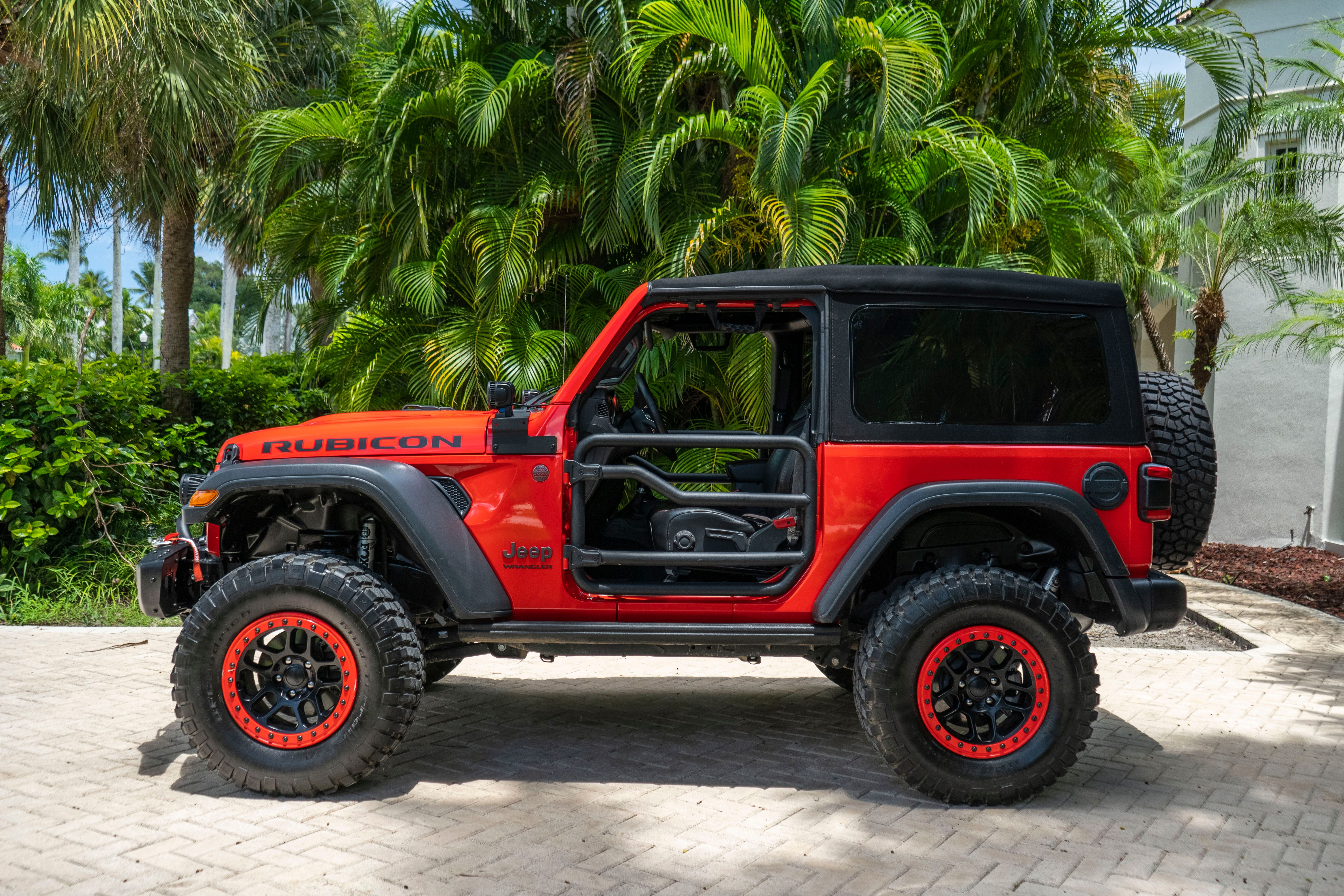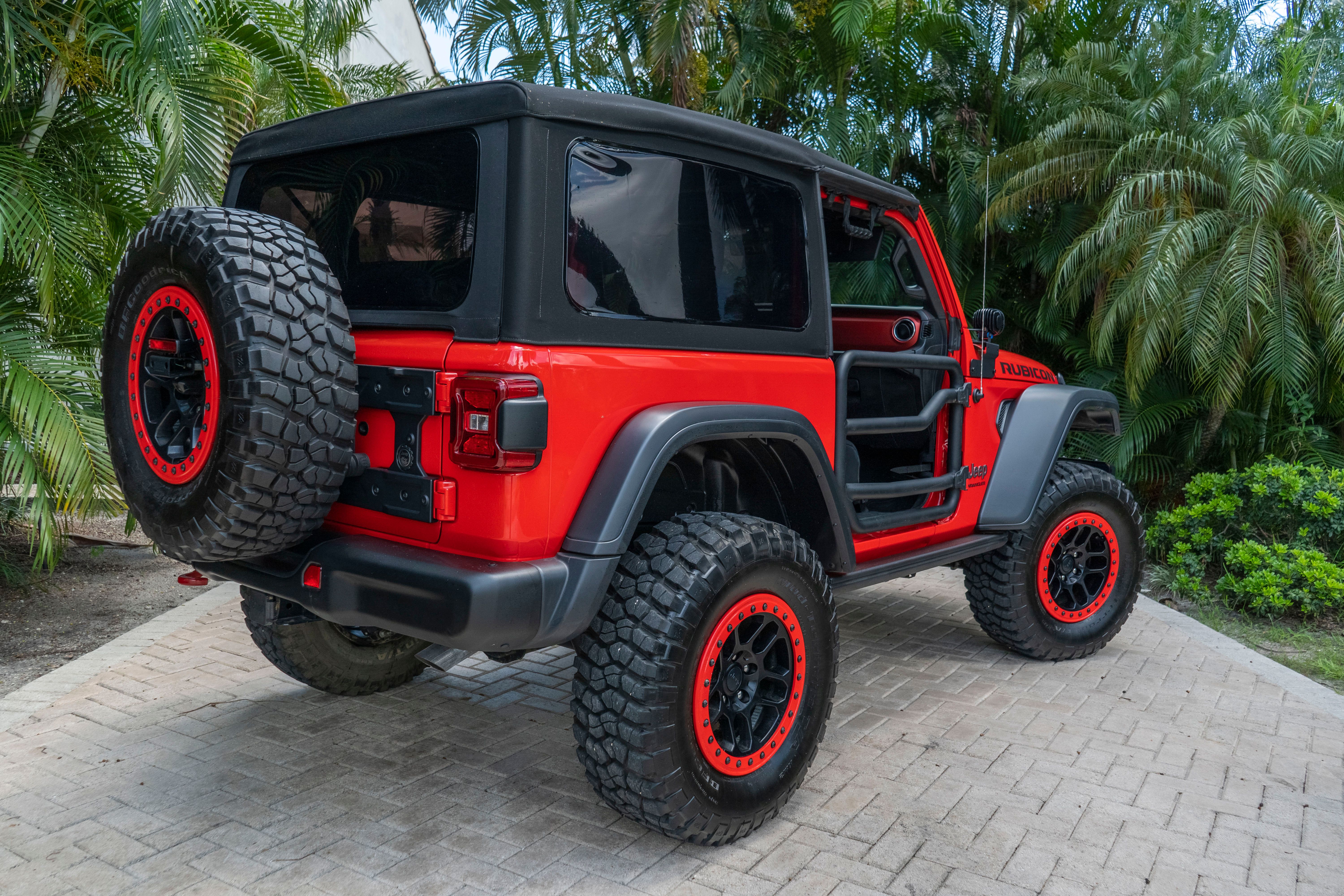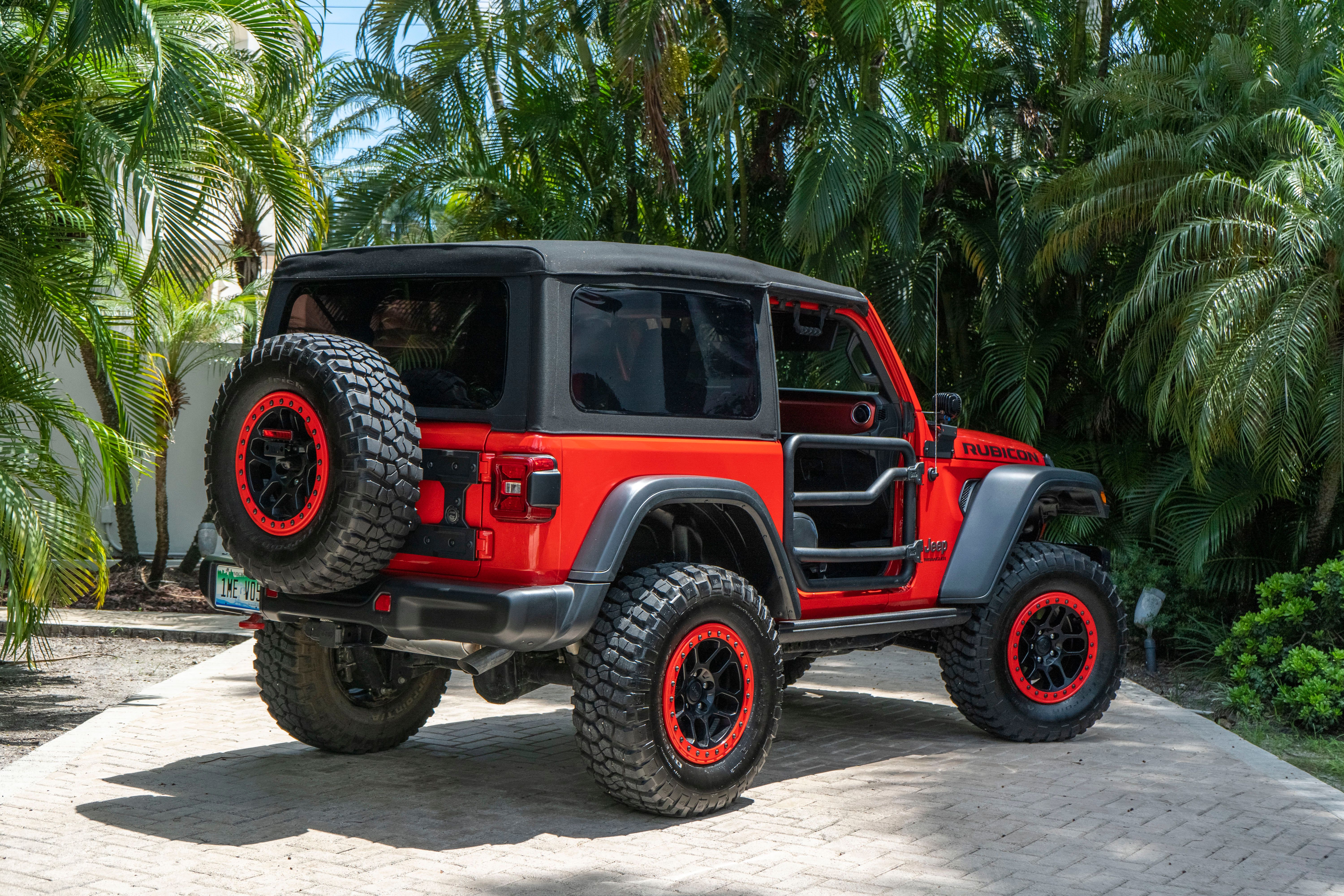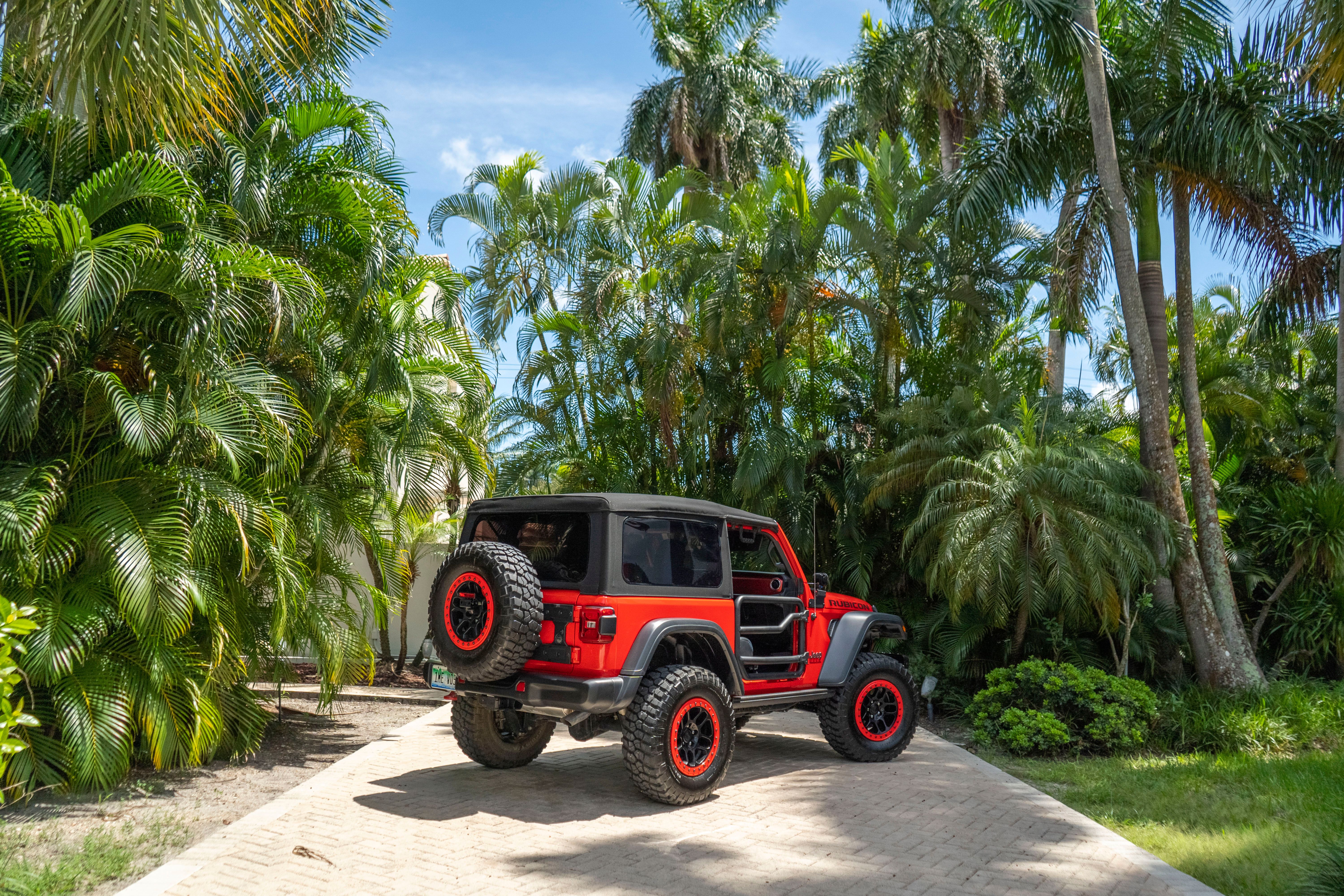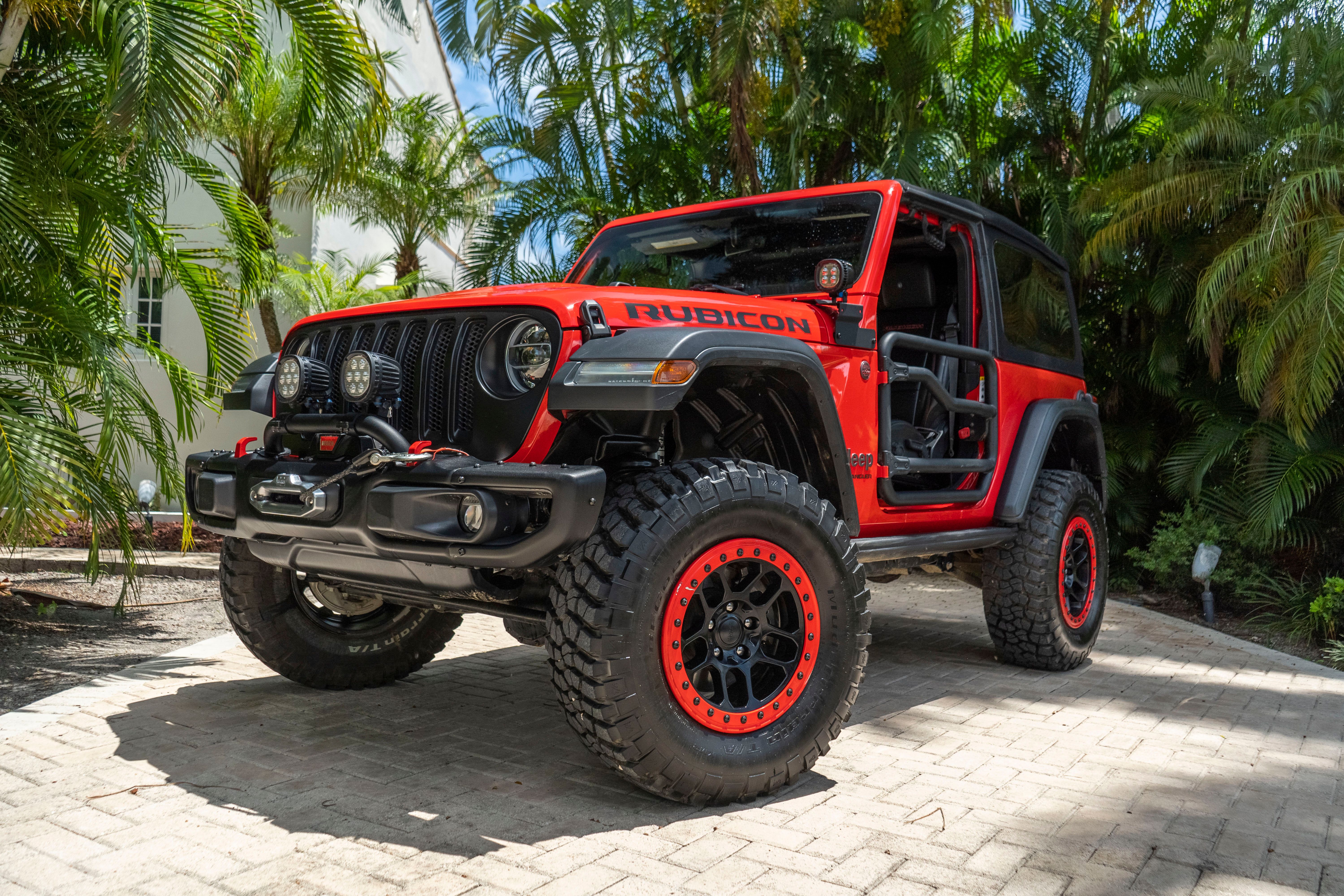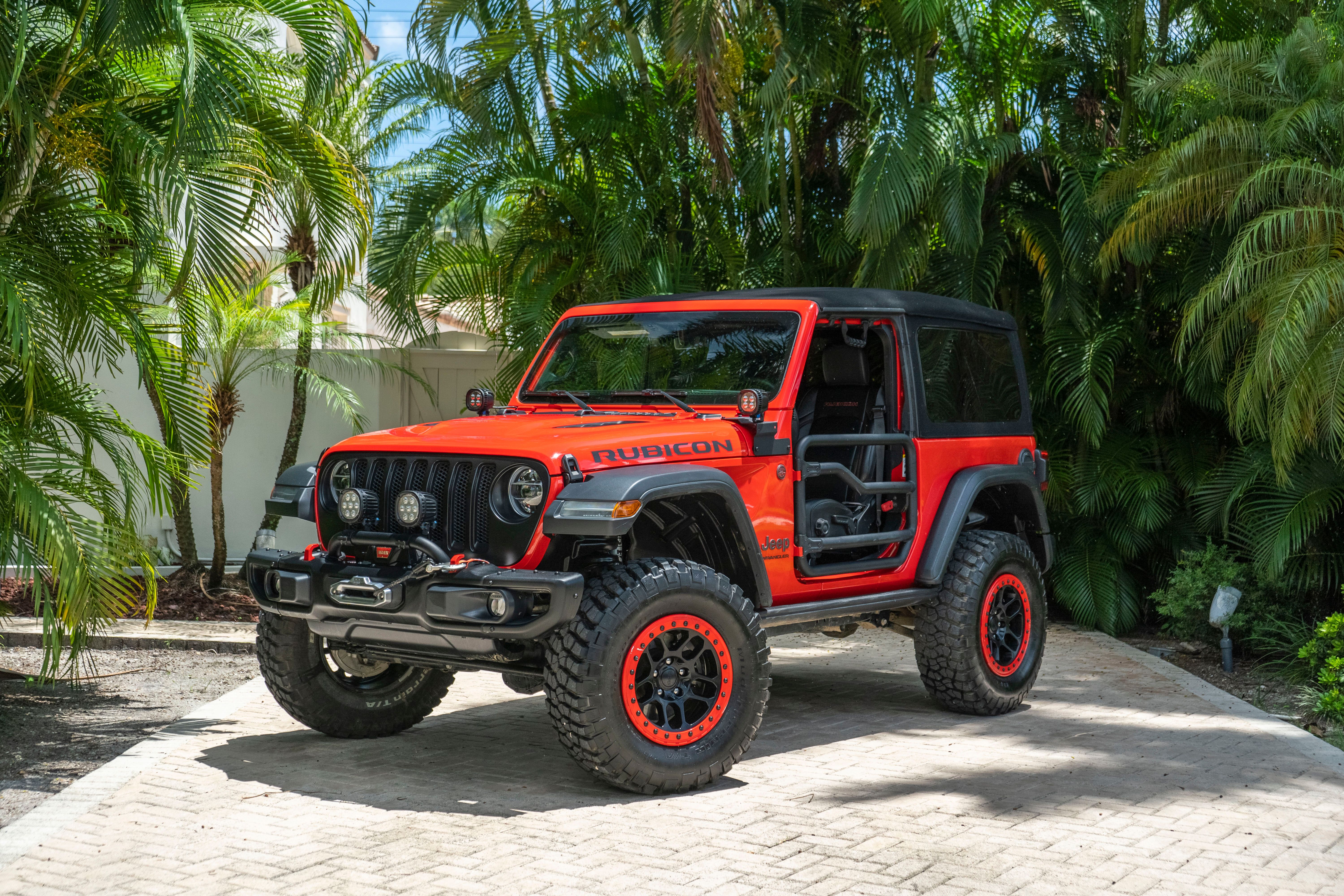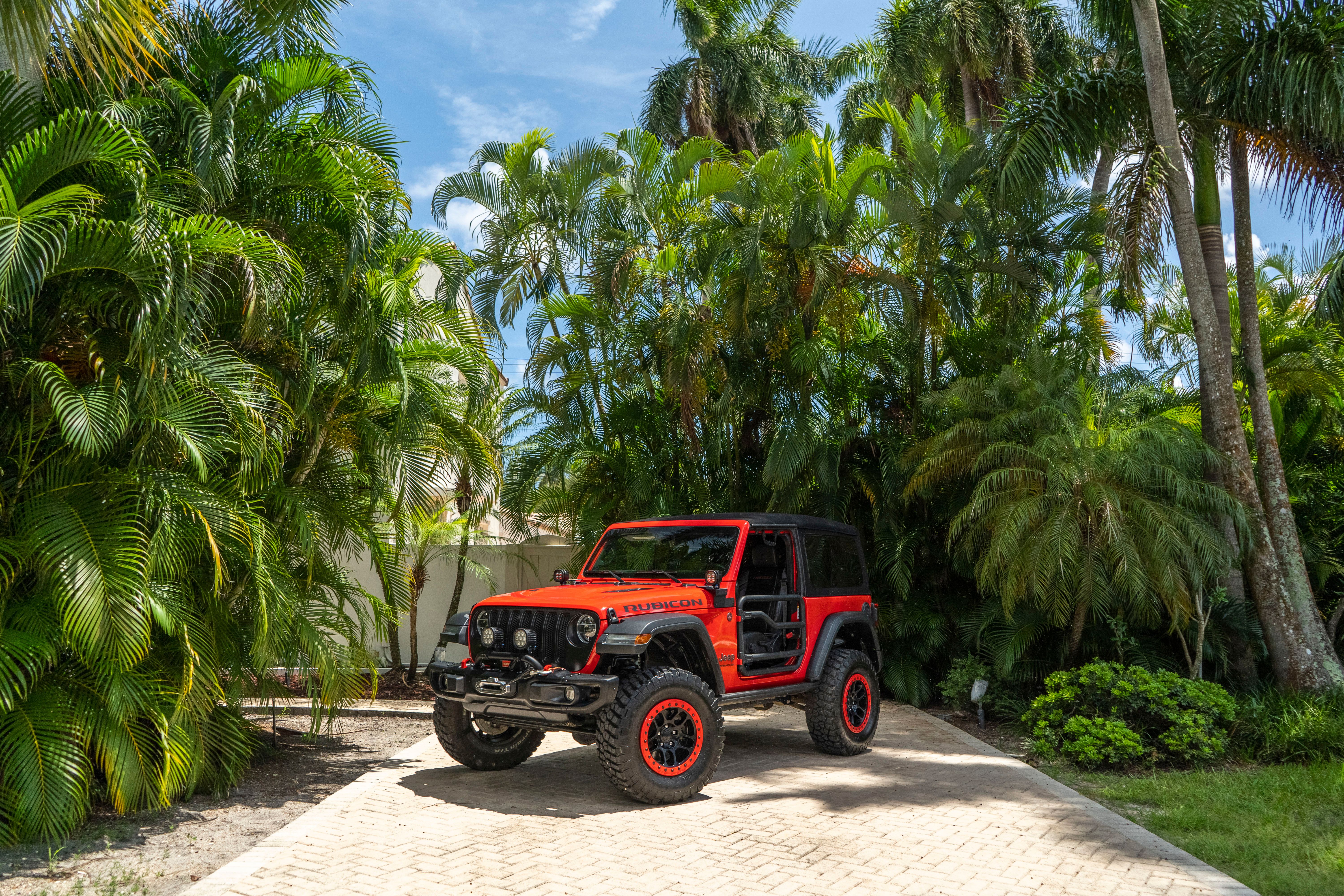Few vehicles on the market today roll off the production line ready to handle the open road and the rockiest of paths, but the Wrangler is probably the most prominent of the few. There have always been a few caveats, though. It’s great for on- and off-road use, but you don’t exactly get the quietest cabin in the world. The on-road ride has also, traditionally, been a little rougher than other models in this segment. Or, at least that’s what we thought until we actually had a chance to take the new Wrangler JL for a test drive. After spending a week with the JL Wrangler we’ve come to realize that the Wrangler actually sits in a segment all its own. Despite our efforts, we can’t find another model this size, with a full-frame, that comes off the showroom floor ready to handle the business.
The real question is, however, whether or not the new JL Wrangler can still handle those off-road thrills but provide a more modern feel inside and more comfortable on-road ride. That’s a tall order for something designed for off-roading first, but the natural evolution of the Wrangler has put it in a unique position on the market. It honestly has no direct competitors in a true sense, and its go-anywhere mentality has been improved with fresh on-road manors. Is it enough to widen the Wrangler’s appeal and make it interesting to those that have traditionally searched for softer crossovers? Does the full-frame, solid-axle arrangement still stand on its own in this ever-evolving market where unibody construction and independent suspension is the norm? Is the JL Wrangler still a jack of all trades that’s good for a weekend of fun and carrying a small family during the week?
These are questions that we now have answers to, thanks to a week spent with the 2019 Jeep Wrangler Rubicon. We didn’t just have any run-of-the-mill Rubicon, though. The Wrangler that showed up at TopSpeed HQ also included a ferocious amount of MOPAR parts that makes it more off-road ready than ever. So, that raises one more question that we have to answer – at what point does molesting the MOPAR catalog move the Wrangler from a modest daily driver to something that’s more suited for weekend thrills? This is our full, hands-on review of the 2019 Jeep Wrangler JL (with tons of Mopar parts) and our story of a week’s worth of fun, honest acclimation into a world that we seldom get to experience.
2019 Jeep Wrangler Rubicon MOPAR - Driven
- Make: Array
- Model: 2019 Jeep Wrangler Rubicon MOPAR - Driven
- [do not use] Vehicle Model: Array
2019 Jeep Wrangler Exterior Design
Our Wrangler Rubicon tester was loaded to the gills with parts from the Mopar catalog from the four-piece, seven-inch off-road LED lights to the LED fog lamps, Winch guard hoop, and winch adapter plate all the way to the mounting brackets for all. Our tester also ended up with the Matte finished grille that we have to admit looks stunning against the Punk’n Metallic exterior paint. And, it goes well with the rest of the black accents that include the mounting brackets and the steel bumpers.
Of course, you don’t need all of these accessories for the Wrangler to look as iconic as it does. That signature seven-slat grille carried over to the JL generation along with a slight redesign with a new kink toward the top. As always, the Wrangler features the typical hood hinges and latches, and the front windshield can fold down as well. The hood vents are a nice touch and really add to the whole dominating off-road vibe that can only come from the Wrangler.
Topspeed Wrangler JL Tester Mopar Accessories
|
Grille and Winch Guard Hoop |
$249.00 |
|---|---|
|
Matte Grille |
$325.00 |
|
Fairlead Adapter Plate for Centered Winch |
$45.00 |
|
Winch Mounting Kit |
$345.00 |
|
Winch Guard Mounting Bracket (for off-road lights) |
$65.00 |
|
Lower A-Pillar Mounting Bracket (for off-road lights) |
$145.00 |
|
7-Inch Off-Road LED Light Kit |
$725.00 |
The side profile of the Wrangler screams iconic Jeep design, even without MOPAR accessories.
The other big addition to our Rubicon tester was the cool Tube doors. These feature two-inch tubes all the way around and are suited for on- and off-road use. They are quickly interchangeable with the stock doors too. It took us no more than five minutes to swap them on our tester. We stuck with the tube doors for the entirety of our time with the Rubicon, but they do come with two big downfalls. First, if you’re out and about and a sudden storm happens to creep up on you, you’ll probably get wet… really wet. The second issue is road noise. We’ll address this more later, but as you can imagine, the open doors do lead to an increase in road noise and, naturally, wind noise as well. It’s not a deal-breaker if this kind of thing doesn’t bother you, but if you’re sensitive to drafts, use hands-free calling a lot, or someone who hates road-noise, you probably won’t like these doors much.
Overall, though, the side profile is exactly what you’d expect of the Wrangler. Between Jeep and MOPAR, there’s no lack of options, and you have a hard choice to make in terms of tops as well. Ours had the soft top, but Jeep offers a solid bikini top, three-piece hardtop, and a Sunrider soft top like the one seen on our tester.
Topspeed Wrangler JL Tester Mopar Accessories
|
2-inch lift with fox shocks |
$1,495.00 |
|---|---|
|
Tube Door Kit |
$1,108.96 |
|
17-Inch Beadlock Wheels (set of 4) |
$1,373.44 |
|
Beadlock ring in Punk'n Orange |
$105.56 |
Around back, the Wrangler is downright boxy, but that’s a good thing. The Spare tire attached to the rear door is a standard feature and covers up most of the design aspect. Due to the Goodrich off-road tires (spare included) and the 17-inch Beadlock wheels, we found that rear visibility was hampered a bit, but it wasn’t unbearable. It’s the price you pay to have that big wheel and tire stuck to the back.
Jeep Wrangler Exterior Specs
|
2019 Jeep Wrangler Rubicon |
Length |
166.8-inches |
|
|---|---|---|---|
|
Width |
73.8-inches |
||
|
Height |
73.6-inches |
||
|
Wheelbase |
96.8-inches |
||
|
Front Track |
64.4-inches |
||
|
Rear Track |
64.4-inches |
||
|
Ground Clearance |
10.8-inches |
How Big is the 2019 Jeep Wrangler?
The Jeep Wrangler is considered a compact, so you shouldn’t have an issue fitting the two-door model in even a smaller one-car garage. If you go for the four-door model, you’ll find it may be a tight fit in short one-car units, so it might be best to double-check the size of your garage before opting for a four-door model. The other important thing to note is the Wrangler’s height. Without a lift kit and off-road tires, the height shouldn’t be an issue but, when you add in the larger tires and lift kit, you may find that it won’t fit through the door of shorter garages. In standard guise, it’s more than an inch taller than the larger Toyota 4 Runner but it’s almost on par with the Land Rover Discovery (it’s only 0.6-inches taller.) Compared to the G-Class, however, the Wranger sits much lower in stock form.
2019 Jeep Wrangler Exterior Specs vs. The Competition
|
2019 Jeep Wrangler Rubicon |
Toyota 4Runner TRD Off-Road |
Land Rover Discovery |
Mercedes G-Class |
Length |
166.8-inches |
191.3-inches |
195.7-inches |
189.7-inches |
|
|---|---|---|---|---|---|---|---|---|---|
|
Width |
73.8-inches |
75.8-inches |
81.6-inches |
76.0-inches |
|||||
|
Height |
73.6-inches |
72.0-inches |
73.0-inches |
77.2-inches |
|||||
|
Wheelbase |
96.8-inches |
109.8-inches |
115.0-inches |
113.8-inches |
|||||
|
Front Track |
64.4-inches |
63.2-inches |
66.5-inches |
64.5-inches |
|||||
|
Rear Track |
64.4-inches |
63.2-inches |
66.4-inches |
64.5-inches |
|||||
|
Ground Clearance |
10.8-inches |
9.6-inches |
8.7-inches |
9.5-inches |
Is the 2019 Jeep Wrangler JL Suitable for Off-Roading?
The Jeep Wrangler is designed with off-roading in mind, so yes, even in stock form, the Wrangler will take you just about anywhere you might want to go. If you start adding on the off-road tires and other off-road gear, you’ll find the Wrangler is even more capable, even if it comes at the cost of more road noise and different on-road dynamics. On that note, it’s worth pointing out that the Wrangler doesn’t really have any direct competitors in terms of price or size, so we have to think out of the box when it comes to comparing off-road specs. It does, however, hold it’s own in terms of approach, departure, and Breakover angle, but the Land Rover Discovery, for example, can handle slightly deeper water. Below, we’ve listed a number of competitors from different walks of life with comparable off-road capabilities (to some extent, anyway.)
Jeep Wrangler Off-Road Specs
|
2019 Jeep Wrangler Rubicon |
Toyota 4Runner TRD Off-Road |
Land Rover Discovery |
Mercedes G-Class |
Ground Clearance |
10.8-inches |
9.6-inches |
8.7-inches |
9.5-inches |
|
|---|---|---|---|---|---|---|---|---|---|
|
Approach Angle |
44.0-degrees |
33.0-degrees |
26.3-degrees |
30.9-degrees |
|||||
|
Departure Angle |
37.0-degrees |
26.0-degrees |
25.9-degrees |
29.9-degrees |
|||||
|
Breakover Angle |
27.8-degrees |
TBA |
27.5-degrees (max) |
26.0-degrees |
|||||
|
Fording Depth |
30-inches @ 5 mph |
27.5-inches (est) |
35.4-inches (max) |
27.5-inches |
|||||
|
Curb Weight |
4,160 lbs |
4,750-lbs |
4,751-lbs |
5,551-lbs |
2020 Jeep Wrangler JL Interior Design
We tested the Jeep Wrangler Rubicon, so the interior was pretty well equipped and a little more upscale than what the base model offers. Interior space for a model this size is actually quite impressive thanks to, at least in part, the low center console, flat-styled dash, and minimalistic, leather-wrapped seats. The integration of a tall yet nearly flush center stack also helped to put an emphasis on available space, and it does make it feel a little less cramped, but the orientation of the screen is hard to get used to after driving models in which the screen is angled more toward the driver. On that note, things did seem a little more cramped with the stock, stamped doors in place. The MOPAR tube doors really added to the feeling of openess and can certainly cut back on the feeling of claustrophobia. The organization of physical buttons on the center stack is also welcome and intuitive, and we really liked how the thumb controls on the steering wheel spokes were unobtrusive and hardly noticeable unless we were actually using them.
How Much Cargo Room Does the Jeep Wangler JL Have?
The rear seatback does fold down, and it does help to increase some cargo-carrying capacity. With the seatback in place, you can carry 31.7 cubic-feet of cargo while laying the seatback down will get you 72.4 cubic-feet. Of course, the actual increase of cargo room is negligible if you were planning to store things in the back seat with the seatback in place. We estimate that we could carry an extra 10 cubic-feet or so by laying the seatback down. Loading cargo into the rear area and closer to the front seats is much easier with the seats laid down, though, so that's something else to keep in mind.
Jeep Wrangler Interior Space vs. the Competition
|
2019 Jeep Wrangler Rubicon |
Toyota 4Runner TRD Off-Road |
Land Rover Discovery |
Mercedes G-Class |
Front Headroom |
42.6-inches |
38.6-inches |
39.4-inches |
41.9-inches |
|
|---|---|---|---|---|---|---|---|---|---|
|
Front Shoulder Room |
55.7-inches |
57.8-inches |
60.4-inches |
57.8-inches |
|||||
|
Front Hip Room |
53.9-inches |
56.5-inches |
57.8-inches |
52.0-inches |
|||||
|
Front Leg Room |
41.2-inches |
41.7-inches |
42.4-inches |
38-7-inches |
|||||
|
Rear Headroom |
41.7-inches |
38.6-inches |
39.0-inches |
40.5-inches |
|||||
|
Rear Shoulder Room |
57.7-inches |
57.8-inches |
59.5-inches |
57.4-inches |
|||||
|
Rear Hip Room |
45.0-inches |
55.7-inches |
55.7-inches |
54.0-inches |
|||||
|
Rear Leg Room |
35.7-inches |
32.9-inches |
37.6-inches |
39.5-inches |
|||||
|
Max Cargo Capacity |
72.4 cu-ft |
89.7 cu-ft |
88.3 cu-ft |
79.5 cu-ft |
Toyota 4Runner TRD Pro
That brings us to our next point.
Final Thoughts
The JL Wrangler saw an increase in cargo room compared to the JK Wrangler, but even with 31.7 cubic-feet of storage space with the rear seatback in place, you’ll find that carry room is kind of limited. Our tester had a fabric top to it, so our load area was a little limited and it would be hard to stack items a little higher up. The standard cargo room might be good enough for a light load of groceries or other smaller items, but don’t plan a heavy shopping trip if you can’t lower the rear seatback. Lower that, and you’ll get 72.4 cubic-feet. Again, it’s not bad, and loading is easier, but if you haul a lot, you might find that the four-door model will work better for you.
But, what about the competition?
2019 Jeep Wrangler Cargo Room Comparison
|
2019 Jeep Wrangler JL |
Toyota 4Runner TRD Off-Road |
Land Rover Discovery |
Mercedes G-Class |
Minimum Cargo Room |
31.7 cubic-feet |
47.2 cubic-feet |
32.7 cubic-feet |
38.6 cubic-feet |
|
|---|---|---|---|---|---|---|---|---|---|
|
Maximum Cargo Room |
72.4 cubic-feet |
89.7 cubic-feet |
66.9 cubic-feet |
79.5 cubic-feet |
Further Reading
The JL-gen, 2019 Jeep Wrangler does offer decent technology, especially compared to the outgoing JK Model. Base models come with the outdated Uconnect 3 and a five-inch infotainment display.
Integrating our phones via Android Auto and Apple CarPlay was a breeze and there are four USB ports to charge and connect while you’re on the go (one for each passenger). All USB ports seem to work seamlessly and quickly but charging times are a little high compared to adaptive fast charging available via the most recent home\ travel chargers. The 4C Nav infotainment system offered amazingly quick menu selections and the graphics were great. Getting used to the controls is a bit tedious as you have to bounce between buttons, knobs, and touchscreen controls, but it’s all simple enough that even aged owners or passengers should be able to adapt easily enough. We didn’t have the optional Alpine audio system but, based on the quality of sound from the base system, we can imagine that option is well worth the money as well.
In terms of voice control, the system works about as well as you would expect. It does require certain commands, and if you tend to slur your words, you might find the system asking you to repeat your command. It does work fairly decently, though, and only one of the four of us actually had an issue using voice control.
Read our full review on the 2018 Jeep Wrangler.0
Every trim level of the 2019 (and 2020) Jeep Wrangler JL comes standard with a 3.6-liter V-6 that’s good for 285 horsepower and 269 pound-feet of torque. They also feature a solid axle in the front and rear, a full-frame underneath, and a 2,000-pound tow rating when properly equipped. This is where things fall into place for all trims but, beyond this, there’s a lot of little differences between the various trim levels. First off, I want to point out that the Wrangler is available with a 2.0-liter inline-four with eTorque capability. This engine is rated at 270 horsepower, 295 pound-feet of torque, and is mated to an eight-speed automatic transmission (the same automatic our Rubicon tester came with.)
Compared to the larger and more expensive competition, like the Land Rover Discovery and the Mercedes G-Class, the Wrangler falls a little short in the power department. By a little, I mean a lot. The Discovery, for example, bests the Wrangler by 55 horses and 72 pound-feet. Naturally, the G-Class takes it to the next level, beating it out by 131 horsepower and 190 pound-feet. Again, both of these models are way more expensive and there aren’t many people that do serious (or comparable) off-roading with the six-figure G-Class, but it is relevant because it’s one of the few full-frame offerings still on the market at any price point - Pickup trucks excluded, of course. The Wrangler, on the other hand, is also the only model with solid axles in the front and rear, and it has the smallest gas tank of the two as well. So, you win out on fuel economy, but you’ll have to stop just as often for fuel during regular runs. If you’re planning to do any towing beyond 2,000 pounds, you better consider the larger or more expensive models because they all offer at least double the towing capacity if not more.
2019 Jeep Wrangler Performance Specs vs. The Competition
|
2019 Jeep Wrangler Rubicon |
Toyota 4Runner TRD Off-Road |
Land Rover Discovery |
Mercedes G-Class |
Engine |
3.6-Liter V-6 (std) |
4.0-liter V-6 |
3.0-liter V-6 |
4.0-liter V-8 |
|
|---|---|---|---|---|---|---|---|---|---|
|
Transmission |
Six-Speed Manual (std) |
Five-Speed Auto |
Eight-Speed Auto |
Nine-Speed Auto |
|||||
|
Driveline |
4:1 Rocktrack HD 4WD |
RWD\4WD |
AWD |
AWD |
|||||
|
Horsepower |
285 @ 6,400 rpm |
270 @ 5,600 rpm |
340 @ 6,500 rpm |
416 @ 5,250 rpm |
|||||
|
Torque |
260 lb-ft @ 4,800 rpm |
278 lb-ft @ 4,400 rpm |
332 lb-ft @ 3,500-5,000 rpm |
450 lb-ft @ 2,000 rpm |
|||||
|
Frame Design |
Full-Frame |
Full-Frame |
Unibody |
Full-Frame |
|||||
|
Front Axle |
Dana 44 (3rd Gen) |
Independent |
Independent |
Independent |
|||||
|
Rear Axle |
Dana 44 (3rd Gen) |
Solid Axle |
Independent |
Solid Axle |
|||||
|
Axle Ratio |
4.1 |
TBA |
TBA |
TBA |
|||||
|
Fuel Economy (cty\hwy\cmb) |
17/25/20 |
17/20/18 |
16/21/18 |
13/17/14 |
|||||
|
Fuel Tank Capacity |
18.5 gal |
23 gal |
23.5 gal |
26.4 gal |
|||||
|
Max Towing Capacity |
2,000 lbs |
5,000 lbs |
8,201 lbs |
7,700 lbs |
|||||
|
Max Payload |
TBA |
5,000 lbs |
TBA |
1,063 lbs |
In terms of driveline and off-road ability, the Wrangler is second to none, even if other full-frame offerings offer more power and are larger. That’s part of what makes the Wrangler stand out. Because of its smaller size, it is outrageously nimble off-road yet easy to predict. On road, however, those off-road characteristics do play against it. The third-gen Dana 44 axles on our Rubicon tester speak for themselves and, thanks to the 4:1 axle ratio, crawling over anything is quite simple. It’s much easier with a manual transmission when you’re used to that but the automatic really isn’t all that bad for this generation.
Driving the 2018 Jeep Wrangler JL0
The old-school, body-on-frame and solid axle layout sounds very appealing for off-road junkies and those who like the idea of something that’s strong and rugged. However, there’s a reason that most SUVs on today’s market don’t feature a similar layout. Even models like the Mercedes G-Class features a front independent suspension. The reason why boils down directly to handling and steering. Sure, this layout is perfect for traversing tough terrain, but when it comes to everyday drivability, the Wrangler suffers. The steering and handling on-road isn’t anywhere near as on point as you’ll find on models with unibody construction. Even the Toyota 4Runner with its independent front suspension will handle and steer more comfortably than the Wrangler, despite its much larger size and wheelbase.
The steering sensitivity and overall under-par handling is easily forgiven, though, and once you get used to it, it’s really no big deal. The size of the Wrangler does play in its favor as it does respond well in corners, something that’s accentuated by its tight steering arrangement as well. The larger off-road tires on our tester did make it feel a little loose in terms of steering, though, so keep that in mind before you upgrade. Since our Rubicon is actually the heaviest of the bunch, we were actually impressed with the handling compared to the JK model and found no real discomfort with handling after the first day of driving. Lesser…eh. lighter… models shouldn’t disrupt your driving pleasure all that much. The only caveat here is that the solid axle suspension can cause a little “shimmy” in turns if you happen to hit potholes or cracks at the wrong time. We assume that this carries over to lesser trims but is probably a little more controlled with smaller tires and wheels. To some extent, this reminds us of driving the old K-Series Blazer or full-size Bronco from back in the day.
Our real complaint came from the braking system. It is up to par with what you would expect from affordable models, and the brake pedal does fill you with confidence in light and heavy braking. Pedal travel, on the other hand, did take a bit to get used to as it does seem to come in excess. This is one of those sacrifices that Jeep had to make if the Wrangler was going to be a true jack of all trades. The travel and responsiveness of the brake pedal are perfect for off-roading but it could be better for on-road usage. Again, it’s not a deal-breaker, just something to be aware of as it’s something you have to deal with when you want true all-terrain ability.
With all of this said, it’s important to note that the Wrangler doesn’t have the quietest cabin on the market. Hell; it’s not even close. Road noise is rather subdued with the standard doors and top in place, but if you lose the doors or rock out those tube frame doors like we did, road noise will certainly be noticeable. Add in those meaty off-road tires, and you’ll find yourself wanting to crank the radio even higher just to hear it. If you want to take a call while on the road, you might as well pull over. But, that’s also part of the Jeep lifestyle, and the Wrangler is noisy like this because of its capability. It’s up to you to determine if that’s something you’re willing to deal with to have one of the best off-road vehicles in the world.
Pricing
Jeep Wrangler JL Pricing
|
Two-Door Wrangler JL |
Four-Door Wrangler JL |
Sport |
$28,045 |
$31,545 |
|
|---|---|---|---|---|---|
|
Sport S |
$31,245 |
$34,745 |
|||
|
Sport Altitude |
N/A |
$36,440 |
|||
|
Sahara |
N/A |
$38,395 |
|||
|
Rubicon |
$38,045 |
$41,545 |
|||
|
Sahara Altitude |
N/A |
$41,690 |
|||
|
Moab |
N/A |
$51,300 |
Which Jeep Wrangler is Right for Me?
Choosing the right Wrangler trim level depends more on what your future plans are than cost. With most trims sitting within a $10,000 gap, pricing is – arguably – negligible. So, the first thing you need to do is choose whether or not you’ll go for the two-door or four-door model. The two-door is perfect if you’re looking for a personal vehicle or don’t plan on having kids anytime soon. However, if you’re looking to start a family during the lifespan of ownership or will be hauling a lot of cargo, the four-door model is better suited for you.
Jeep Wrangler Competition
The Jeep Wrangler kind of sits in a class all its own. Few SUVs in the world its size still feature a full, ladder frame while most SUVs these days fall more into the crossover category and those with off-road ability are far and few between. As such, we’ve had to think outside the box a bit in terms of models that offer at least some comparable features or off-road ability while still featuring the capability of being a daily driver as well. Some of these models are larger and some are more expensive, but they all float the bill in terms of on- and off-road use straight from the production line.
Toyota 4Runner TRD Pro
The current generation of the Toyota 4Runner has been on the market since 2009, and while that usually means old chassis and old technology, this is actually one of the things that makes it a true competitor for the Jeep Wrangler. Make no mistake, it is larger (nearly 23-inches longer and 2-inches wider) but because of its age, Toyota hasn’t had a chance to move it to a unibody platorm. As such, it still has a body-on-frame construction. It does feature front independent suspension but it has a solid rear axle. This is, most notably, the perfect arrangement for off- and on-road usability without sacrificing as much in terms of handling like you find on the Jeep Wrangler. The 4Runner does drive admirably well despite having an older chassis. The TRD Pro trim level is the most capable and comparable to the Wrangler in about any trim. Toyota updated it for 2019, and it now includes Toyota’s latest Entune Infotainment system that’s a breeze to use as long as you don’t mind skipping Apple CarPlay and Andriod Auto.
The 4.0-liter V-6 under the hood is quite beefy, but the 4Runner actually falls prey to the Wrangler as it only has 270 horsepower and 278 pound-feet of torque. It does feature a two-speed transfer case with manual operation, however, so this isn’t your run-of-the-mill automatic AWD system – it will actually compete with the Wranglers 4WD system. The five-speed automatic transmission is a bit dated, though, but you can’t really blame Toyota for not updating the transmission on such an old model. The next-gen model will, without a doubt, be just as capable with better driveline technology. Back to the point at hand, the TRD Pro comes with Fox racing shocks all the way around and 17-inch wheels with some serious rubber. Those shocks, feature 46-mm pistons and the rear shocks feature 2.0-inch reservoirs to help them keep up in varying temperatures.
The Toyota 4Runner starts out at $35,310 in SR5 trim. Make no mistake, that model is relatively capable, but it’s more of a road-going family hauler. The $37,140 SR5 Premium is a slightly more luxurious model. You could opt for the TRD Off-Road at $38,485 and it might compete with the Wrangler Sport S, but if you really have off-road in your heart, you better opt for the TRD Off-Road Premium at $40,395 or the TRD Pro at $46,815.
Jeep Wrangler vs. Toyota 4Runner TRD Off-Road
|
2019 Jeep Wrangler Rubicon |
Toyota 4Runner TRD Off-Road |
Engine |
3.6-Liter V-6 (std) |
4.0-liter V-6 |
|
|---|---|---|---|---|---|
|
Transmission |
Six-Speed Manual (std) |
Five-Speed Auto |
|||
|
Driveline |
4:1 Rocktrack HD 4WD |
RWD\4WD |
|||
|
Horsepower |
285 @ 6,400 rpm |
270 @ 5,600 rpm |
|||
|
Torque |
260 lb-ft @ 4,800 rpm |
278 lb-ft @ 4,400 rpm |
|||
|
Frame Design |
Full-Frame |
Full-Frame |
|||
|
Front Axle |
Dana 44 (3rd Gen) |
Independent |
|||
|
Rear Axle |
Dana 44 (3rd Gen) |
Solid Axle |
|||
|
Axle Ratio |
4.1 |
TBA |
|||
|
Fuel Economy (cty\hwy\cmb) |
17/25/20 |
17/20/18 |
|||
|
Fuel Tank Capacity |
18.5 gal |
23 gal |
|||
|
Max Towing Capacity |
2,000 lbs |
5,000 lbs |
|||
|
Max Payload |
TBA |
5,000 lbs |
|||
|
Price |
$38,045 |
$46,815 |
Land Rover Discovery
In 2017 Land Rover introduced the fourth-generation Discovery, and with it came unibody chassis (so no more body-on-frame goodness here) and more aluminum than ever. It also lost its boxy design, with a more crossover-ish, family hauler appearance taking its place. Now, if Jeep did something like that with the Wrangler, the world would divide and break off into protest as the Wrangler sang the song of its last generation on Earth. For the Discovery, though, it actually played off really well, as the new model is more rigid and stronger than ever. It’s also some 1,000-pounds lighter than the outgoing model. Finally, Land Rover was able to increase its ground clearance and improve its breakover, approach, and departure angles. It can even ford 7.8-inches more water than the previous model. So, it’s even more capable in its new, lighter avatar. But, does that mean that it can keep up with the Jeep Wrangler JL? We think so.
In terms of performance, the Land Rover Discovery beats the Wrangler – in any trim – hands down. Its 3.0-liter V-6 might not be quite as efficient as the Wrangler’s 3.6-liter, but it does offer up 340 horsepower and 332 pound-feet of torque. On a different hand, the Discovery features independent suspension on all four corners which is great for on-road use and handling but will potentially yield authority to the Wrangler’s solid-axle arrangement in certain off-road situations. It can haul more than four times what the Wrangler can handle with a max towing capacity of 8,201 pounds, and the unibody architecture makes it about as comfortable as it can be on-road.
The Discovery might not be as much of a jack of all trades SUV, but it can still hold its own on and off the beaten path. Here’s the caveat, though: The Land Rover Discovery has an entry-level price of $52,300. For about the same money, you can step into the four-door Wrangler MOAB and still have the Wrangler’s intensive off-road prowess. However, if you don’t mind spending the money, you can go for the New Landmark edition with a sticker of $58,500, the HSE trim for $59,700, or the range-topping HSE Luxury (more for the road than the trail, honestly) for $67,200 before extras, taxes, plates, etc.
Jeep Wrangler vs. Land Rover Discovery
|
2019 Jeep Wrangler Rubicon |
2019 Land Rover Discovery |
Engine |
3.6-Liter V-6 (std) |
3.0-liter V-6 |
|
|---|---|---|---|---|---|
|
Transmission |
Six-Speed Manual (std) |
Eight-Speed Auto |
|||
|
Driveline |
4:1 Rocktrack HD 4WD |
AWD |
|||
|
Horsepower |
285 @ 6,400 rpm |
340 @ 6,500 rpm |
|||
|
Torque |
260 lb-ft @ 4,800 rpm |
332 lb-ft @ 3,500-5,000 rpm |
|||
|
Frame Design |
Full-Frame |
Unibody |
|||
|
Front Axle |
Dana 44 (3rd Gen) |
Independent |
|||
|
Rear Axle |
Dana 44 (3rd Gen) |
Independent |
|||
|
Axle Ratio |
4.1 |
TBA |
|||
|
Fuel Economy (cty\hwy\cmb) |
17/25/20 |
16/21/18 |
|||
|
Fuel Tank Capacity |
18.5 gal |
23.5 gal |
|||
|
Max Towing Capacity |
2,000 lbs |
8,201 lbs |
|||
|
Max Payload |
TBA |
TBA |
|||
|
Price |
$38,045 |
$52,300 |
Mercedes G-Class
The Mercedes G-Class is in no way, shape, or form the same caliber of vehicle as the Jeep Wrangler – at least not in most categories. However, despite its excessive price, amazing luxury, and outright power, it’s one of the few body-on-frame SUVs that you can still buy brand new, right off a showroom floor. So, that’s why we’ve decided to include it as a basis of comparison because, if you take away all the German luxury, power, and pricing, the G-Class is just as capable as the Wrangler, on- and off-road. The G-Class dates all the way back to 1979 when it was called the “G-Wagen” (It became the G-Class in 1990), so you know that it has a legacy behind it that backs up these claims.
Outside of the body-on-frame construction, the G-Class features the same suspension arrangement as the Toyota 4Runner in that it has an independent front suspension and solid-axle in the rear. This is part of what makes it so ready to go off the beaten track while still providing the feel of luxury and comfort on road. Under the hood sits a German-built, 4.0-liter, V-8 (a very common engine in Merc’s lineup, I might add) that produces 416 horsepower and 450 pound-feet of torque. When I tell you that the Merc is way more powerful than the Wrangler, I’m not kidding, but you’ll probably find that they both hold even with each other in most off-road situations. On road, the G-Class will kick the Wrangler’s ass, but that’s what happens when you pony out six figures.
Oh… did I say that? Yeah; it’s true folks – the G-Class starts out at $124,500. So, I’m pretty sure about 1-percent of the population, at best, will actually cross-shop the two, but their ability to handle on-road and rough terrain from one minute to the next make them competitors in one sense. So, why would you go for the G-Class when you can literally buy three Jeep Wrangler Rubicons or four Wrangler Sports? Well, you buy the G-Class if you still want to get dirty but still have the absolute best in terms of comfort and on-road dynamics. Of course, I’m not sure that I’d take a $120,000 SUV rock crawling anytime soon, but if my wallet would actually permit it, I suppose that would be a completely different situation, now wouldn’t it?
Jeep Wrangler vs. Mercedes G-Class
|
2019 Jeep Wrangler Rubicon |
Mercedes G-Class |
Engine |
3.6-Liter V-6 (std) |
4.0-liter V-8 |
|
|---|---|---|---|---|---|
|
Transmission |
Six-Speed Manual (std) |
Nine-Speed Auto |
|||
|
Driveline |
4:1 Rocktrack HD 4WD |
AWD |
|||
|
Horsepower |
285 @ 6,400 rpm |
416 @ 5,250 rpm |
|||
|
Torque |
260 lb-ft @ 4,800 rpm |
450 lb-ft @ 2,000 rpm |
|||
|
Frame Design |
Full-Frame |
Full-Frame |
|||
|
Front Axle |
Dana 44 (3rd Gen) |
Independent |
|||
|
Rear Axle |
Dana 44 (3rd Gen) |
Solid Axle |
|||
|
Axle Ratio |
4.1 |
TBA |
|||
|
Fuel Economy (cty\hwy\cmb) |
17/25/20 |
13/17/14 |
|||
|
Fuel Tank Capacity |
18.5 gal |
26.4 gal |
|||
|
Max Towing Capacity |
2,000 lbs |
7,700 lbs |
|||
|
Max Payload |
TBA |
1,063 lbs |
|||
|
Price |
$38,045 |
$124,500 |
Final Thoughts
So, maybe I’ve gone a little mad by comparing the Jeep Wrangler to the Mercedes G-Class. Maybe not, when you look at the G-Class’ frame construction and off-road prowess. Either way, I chose to discuss the G-Class throughout this review (along with the Discovery and 4Runner TRD Pro) because it is the best way to illustrate just what the Wrangler can compete with when it comes down to sheer capability and technology. The Wrangler is certainly the cheapest of the bunch and, when you consider what it’s capable of, it’s really the best value for your money if you don’t care about materials, luxury, or road noise. We’ve driven the TRD Pro, we’ve driven the Discovery, and we’ve driven the G-Class too (bet you didn’t see that coming, did you?), and the bottom line is that we enjoyed driving the more modestly priced Wrangler just as much if not more than any of these other vehicles. All this despite is smaller size and, in some cases, lack of technology. If you’re interested in a vehicle that’s truly capable in every way of going just about anywhere – without breaking the bank – then you honestly can’t go wrong with the Jeep Wrangler.
Further Reading
Read our full review on the 2018 Jeep Wrangler.

